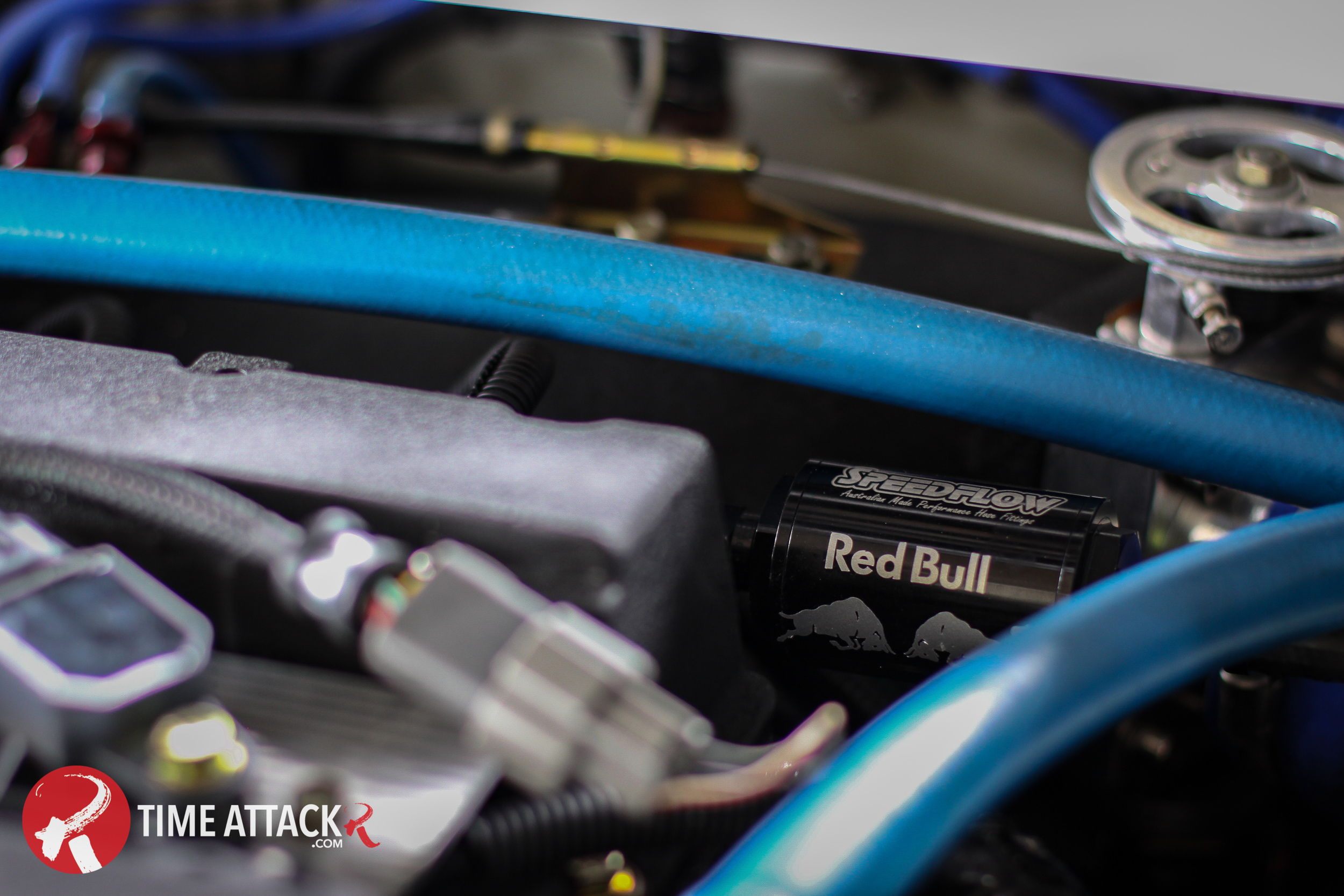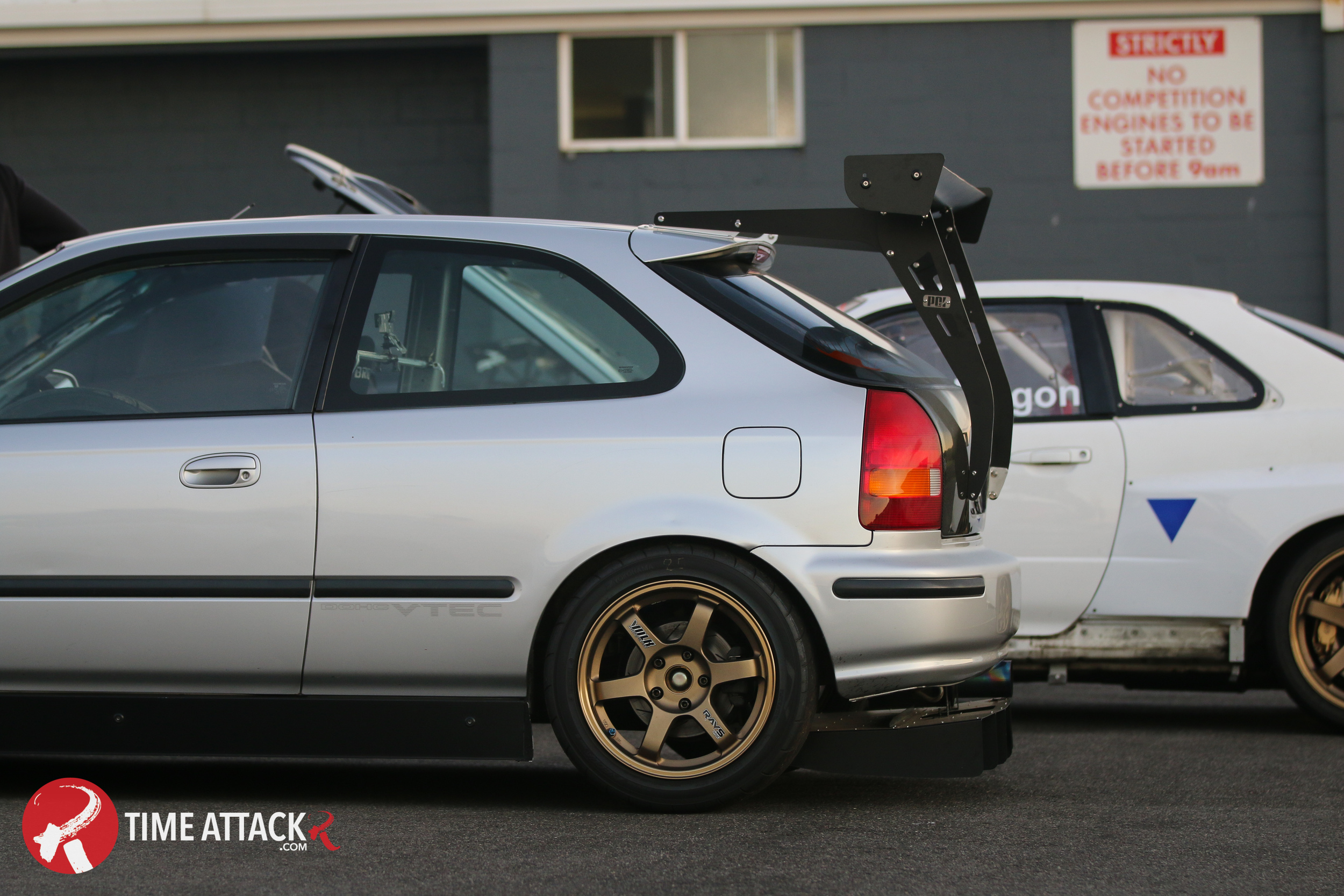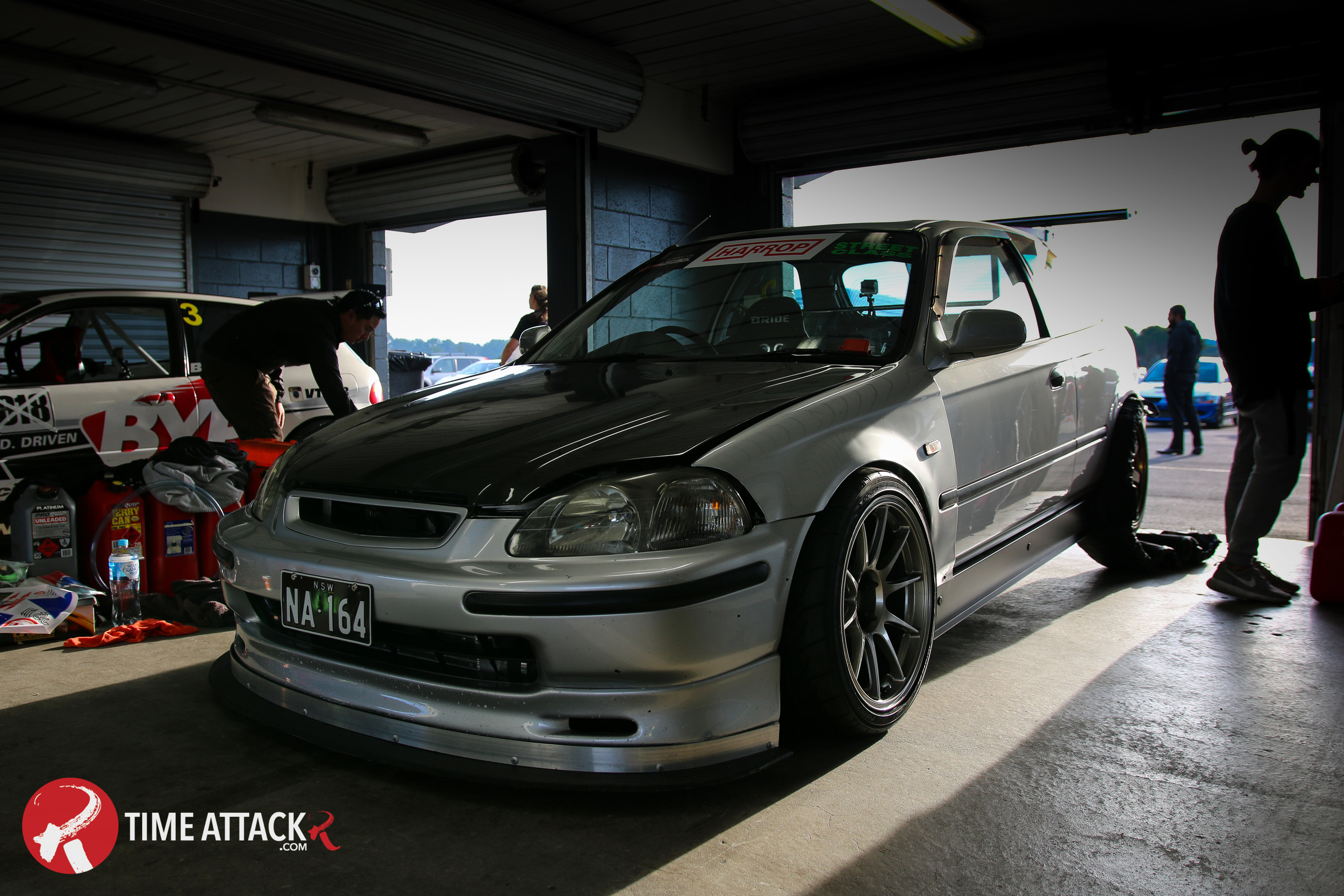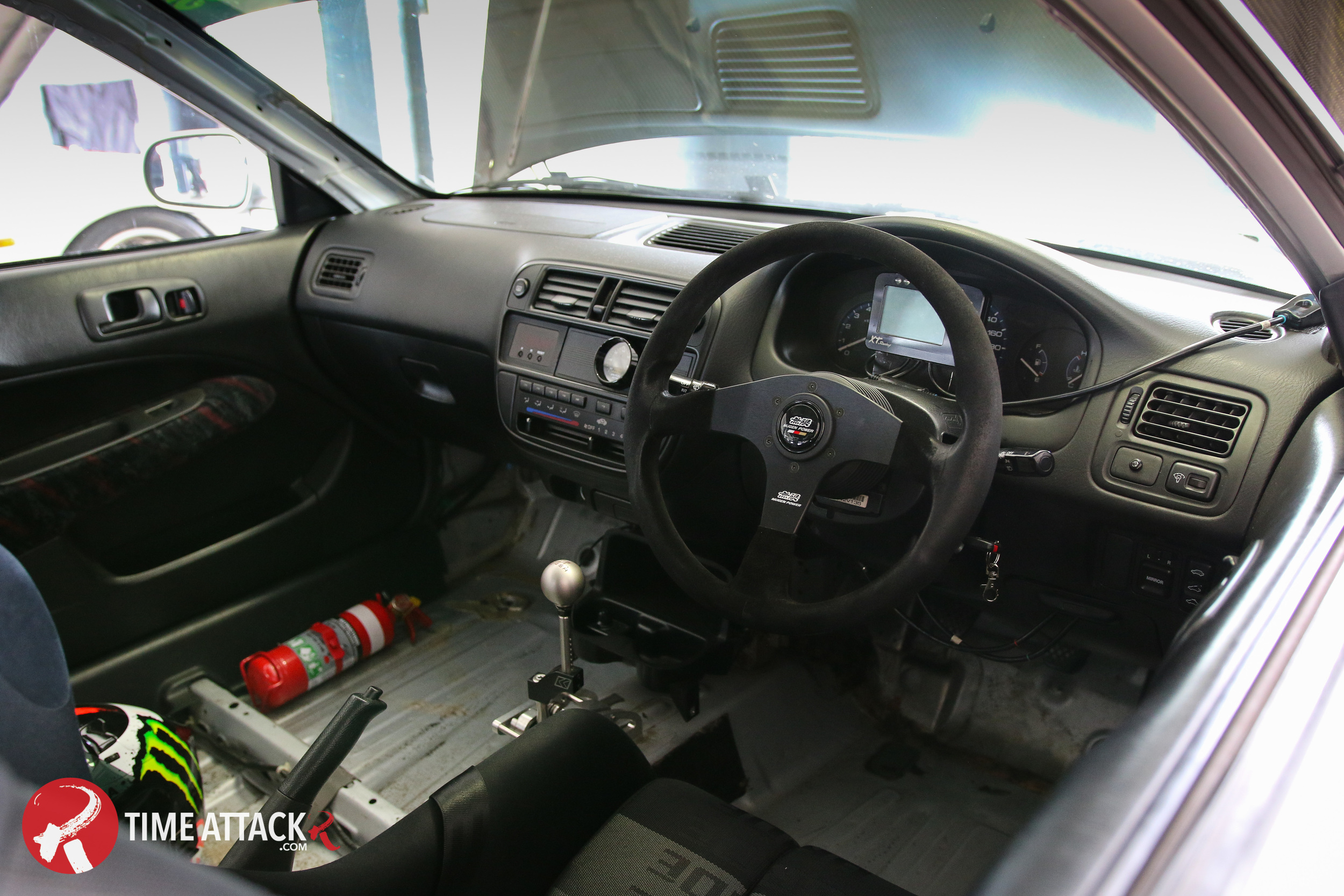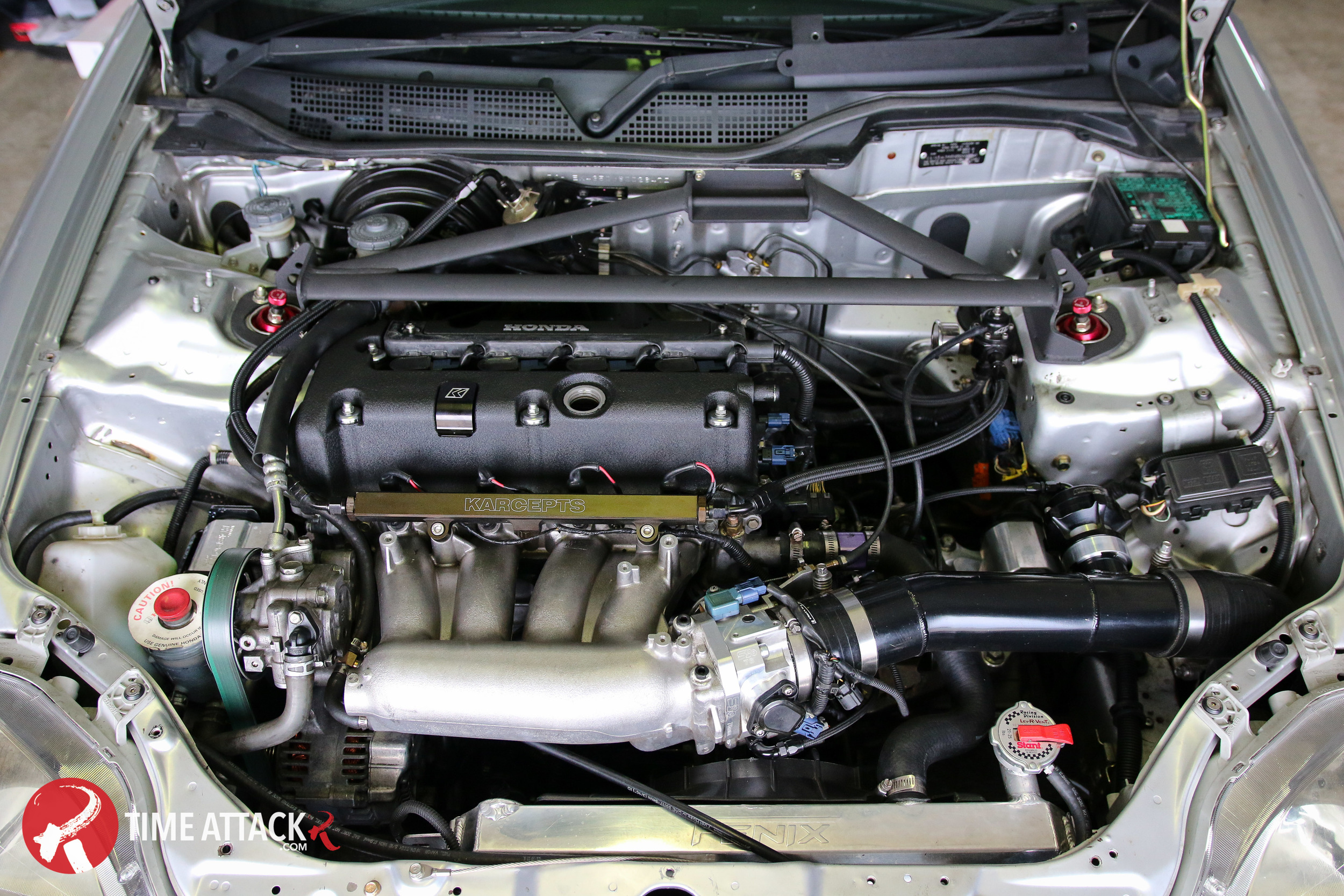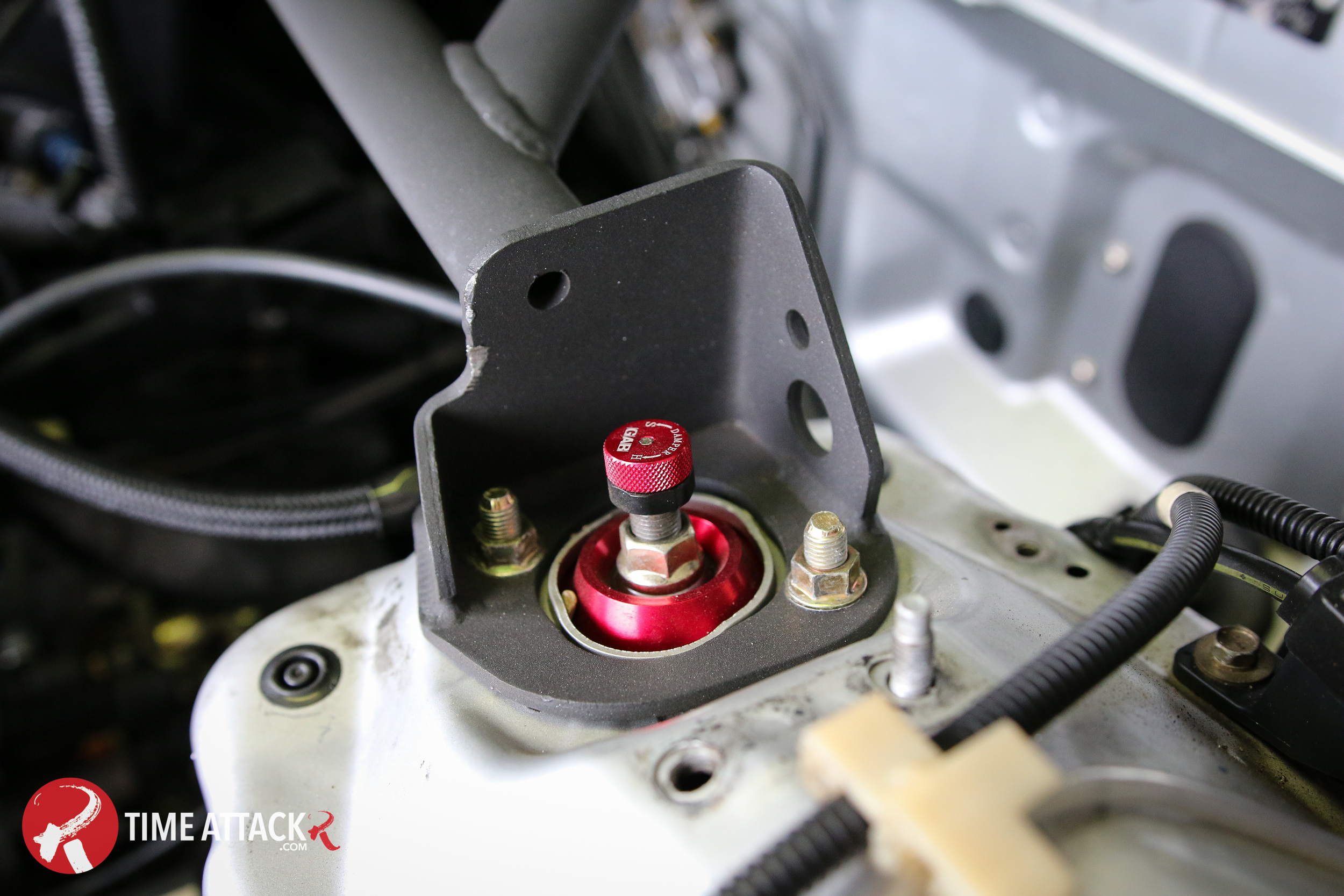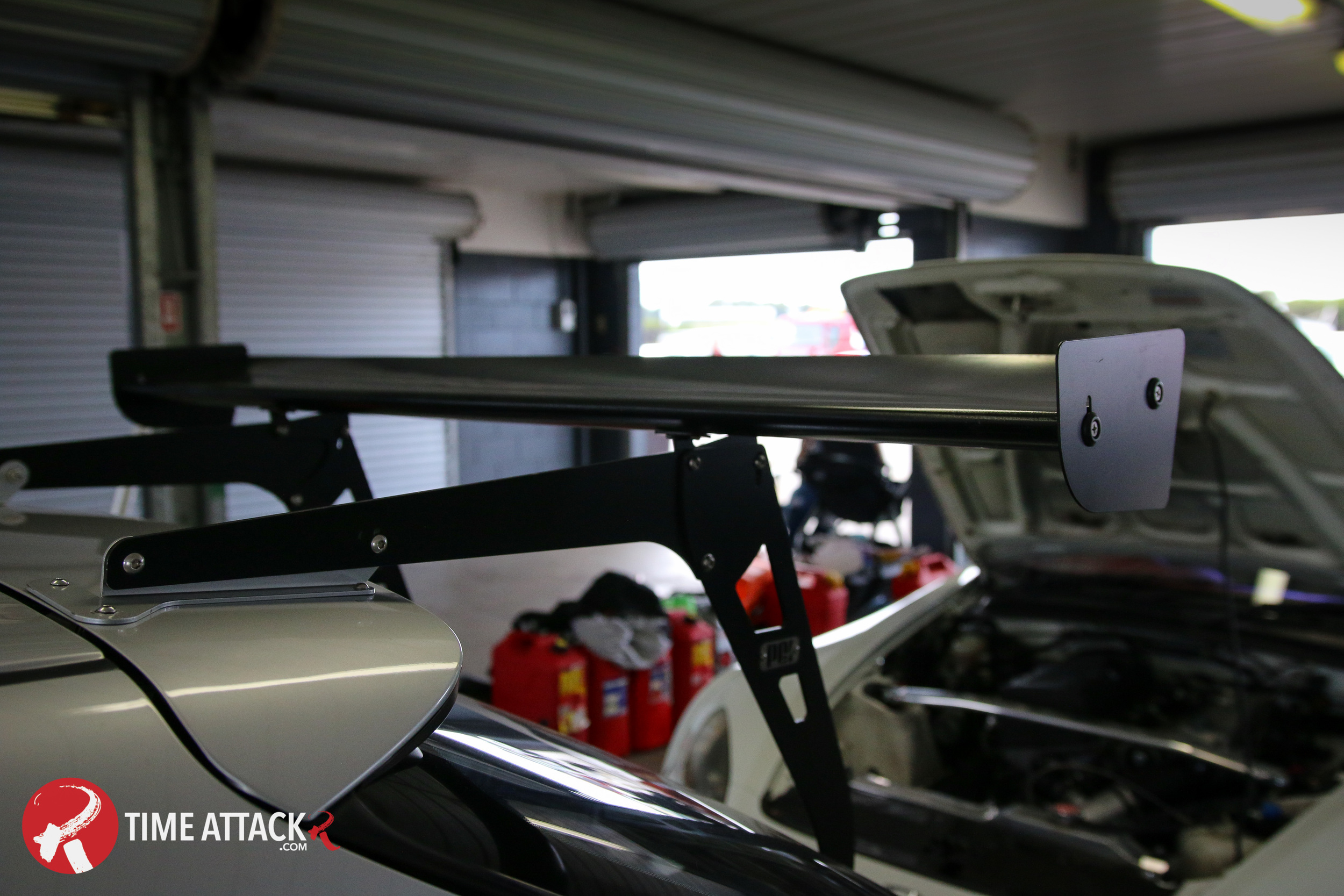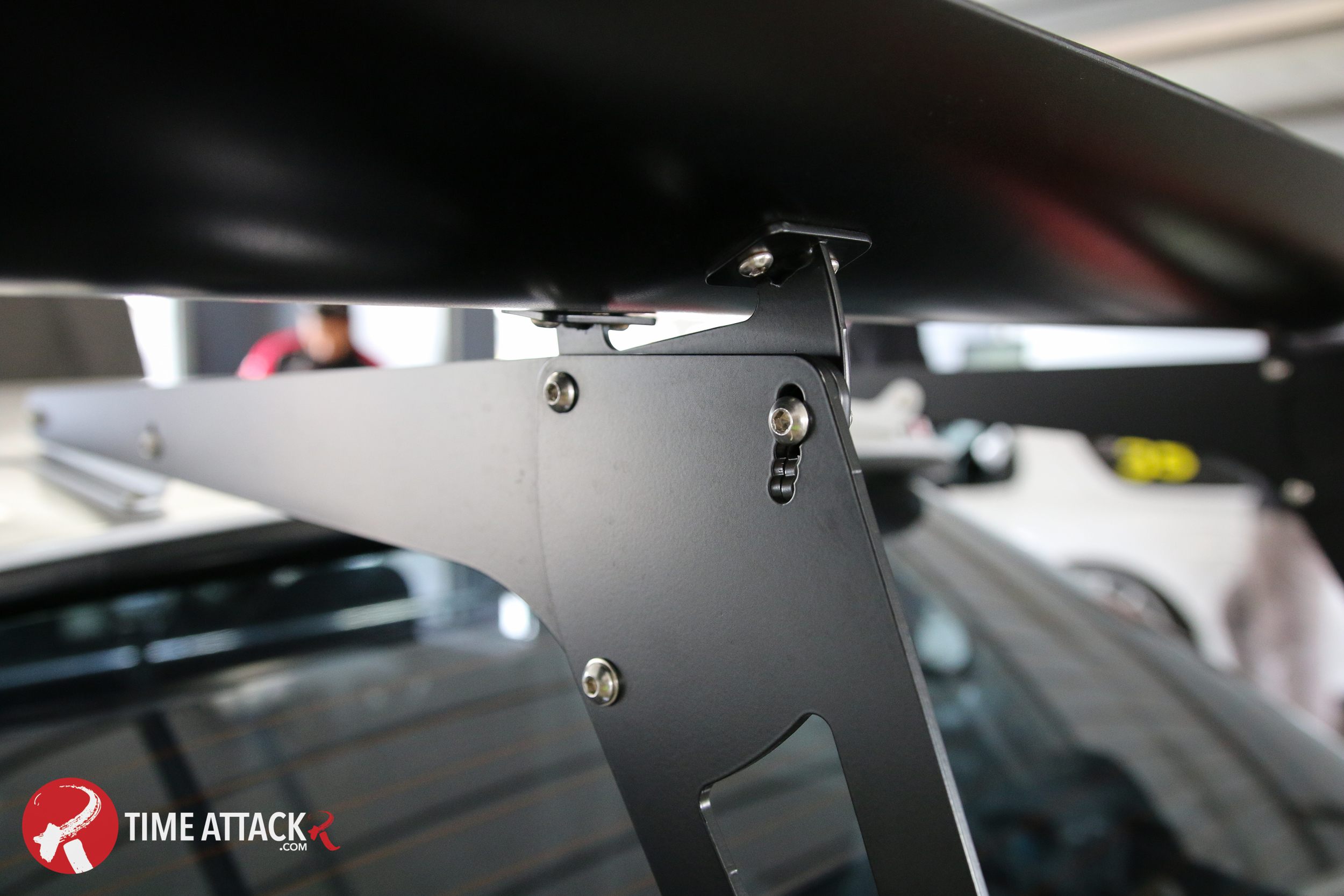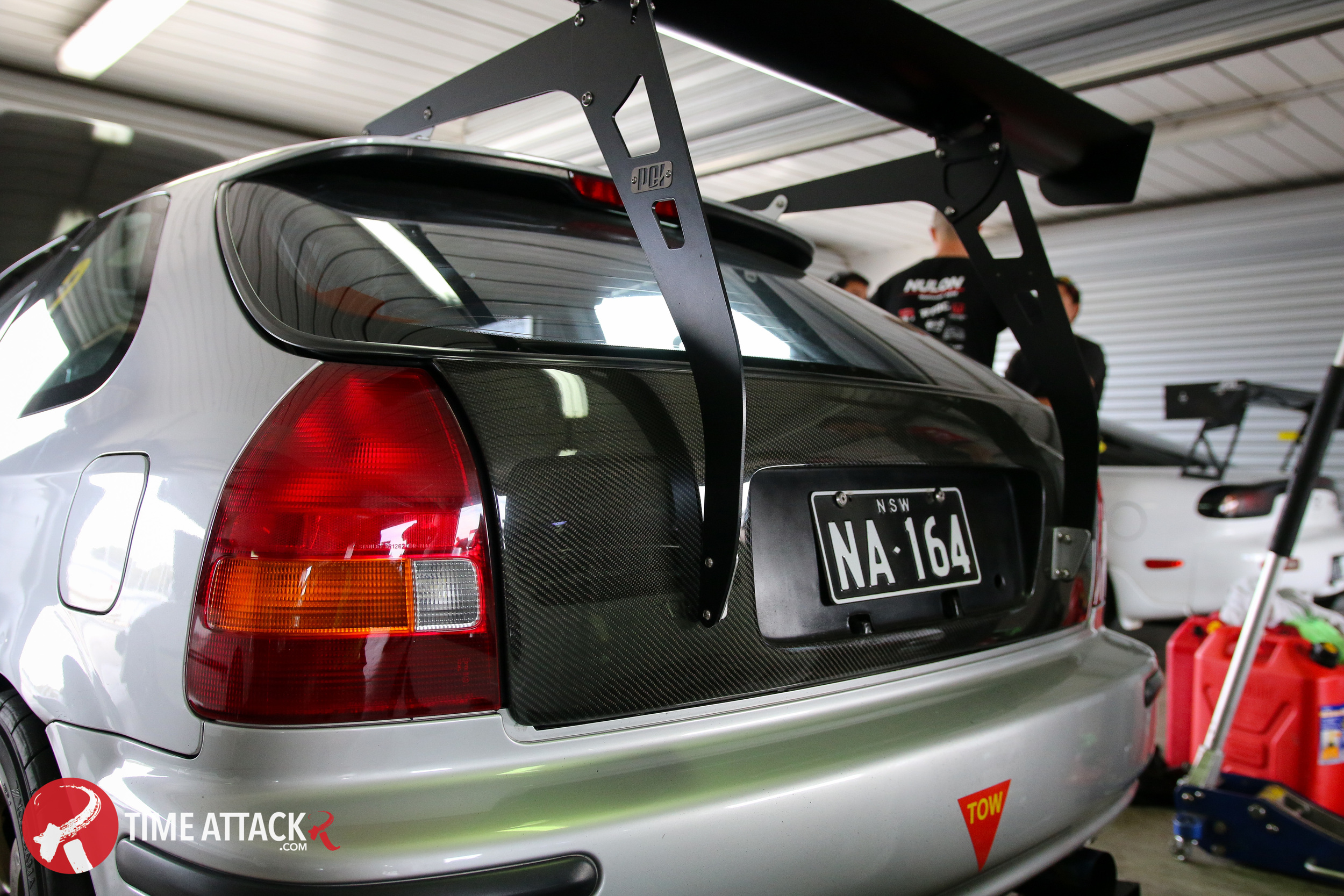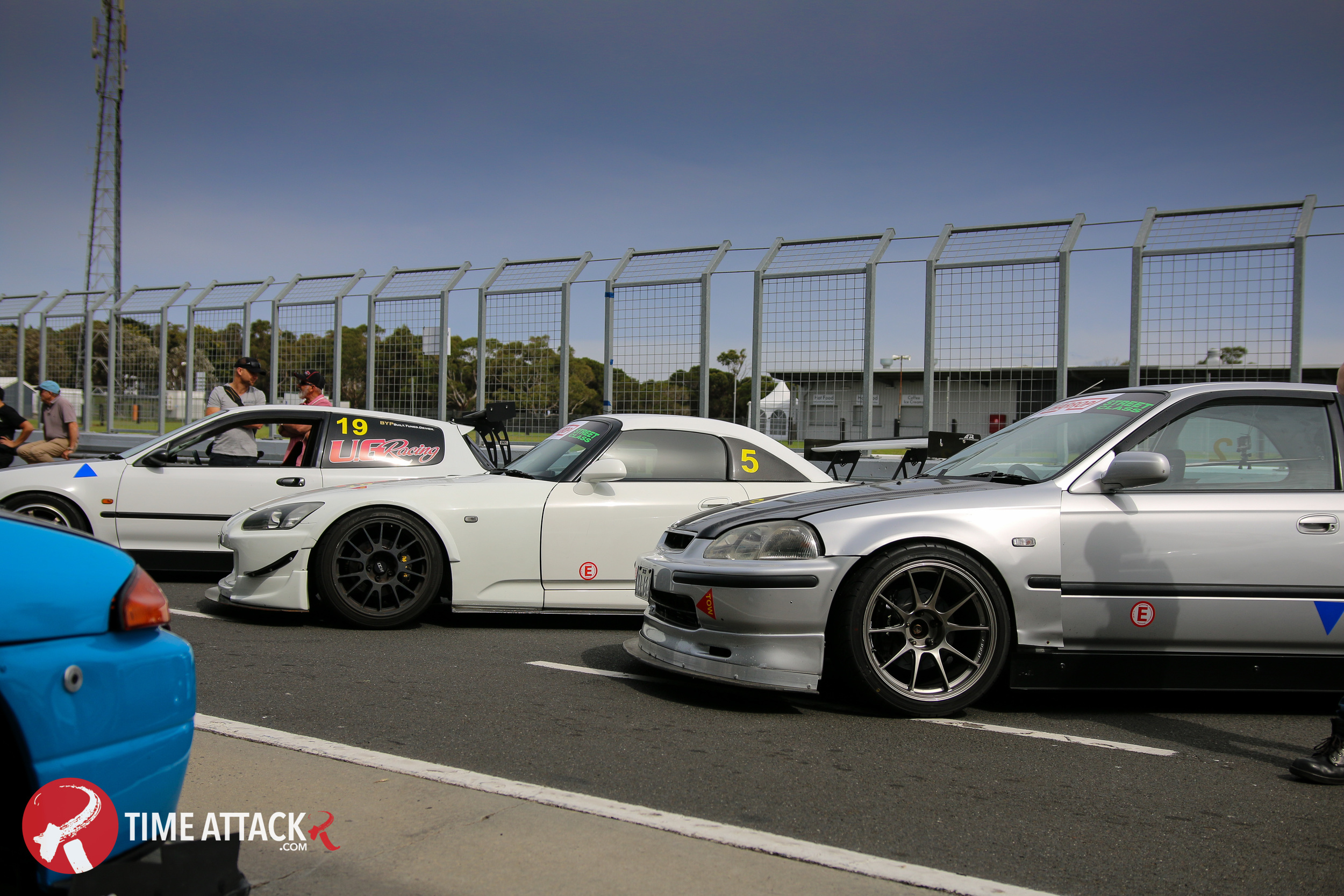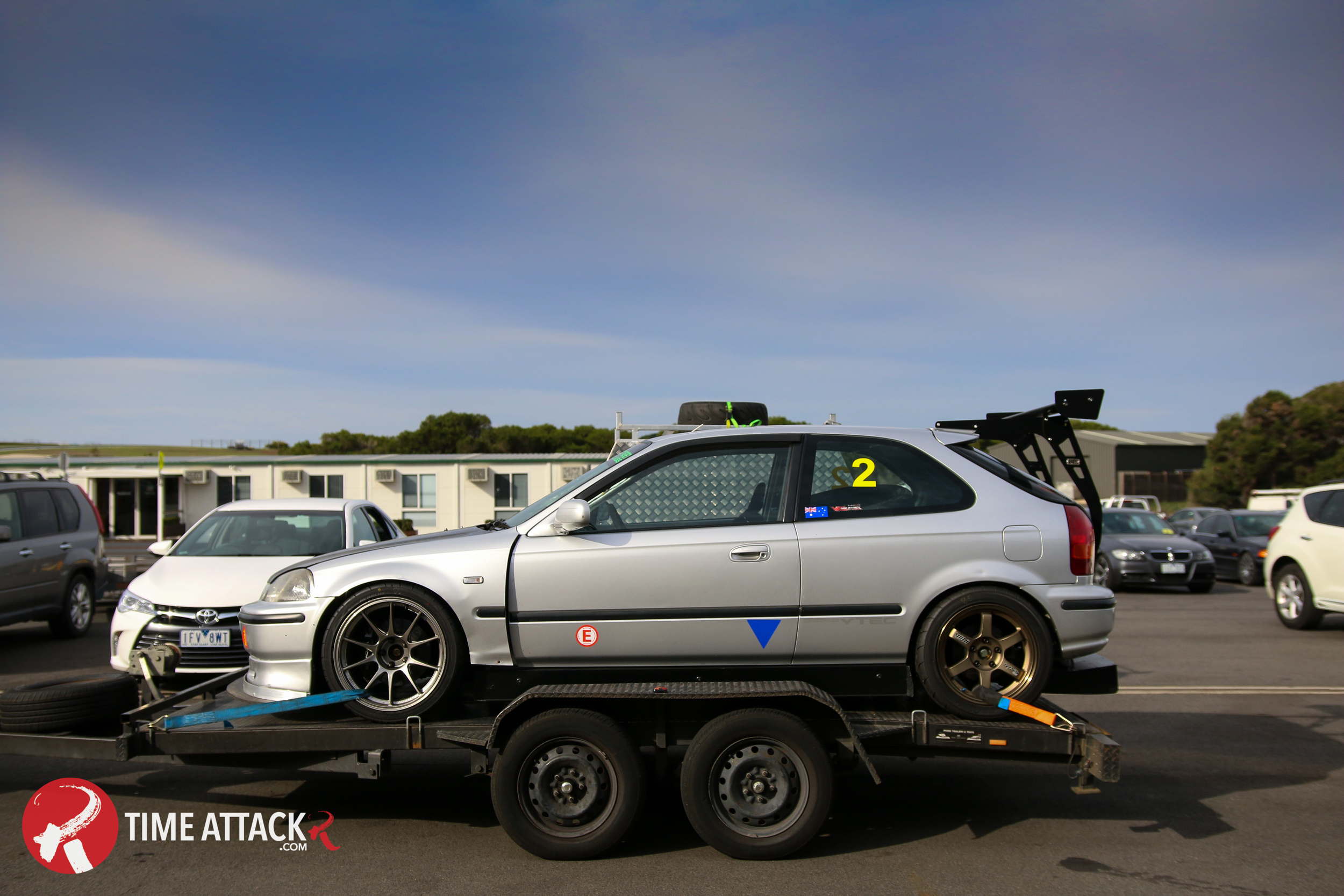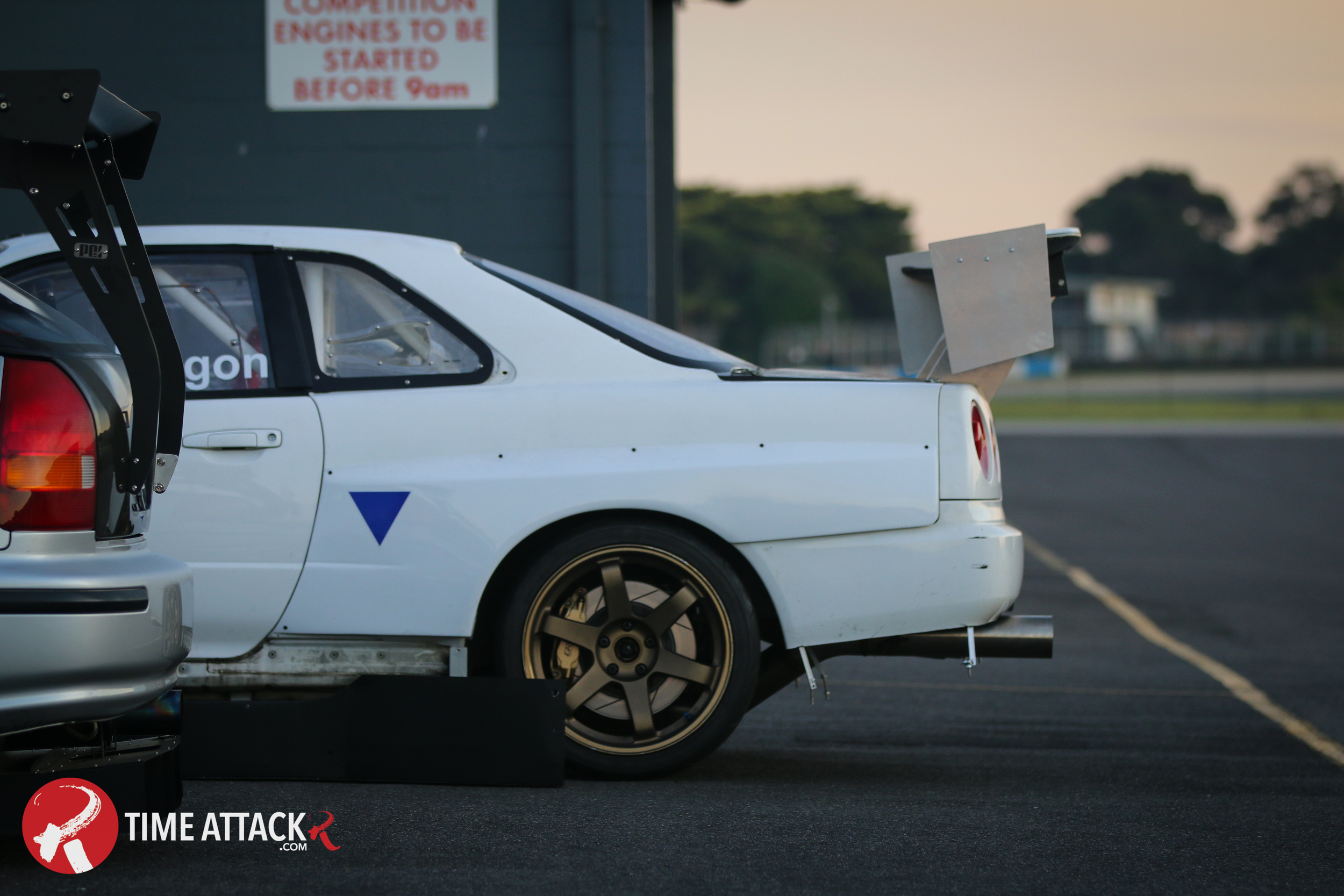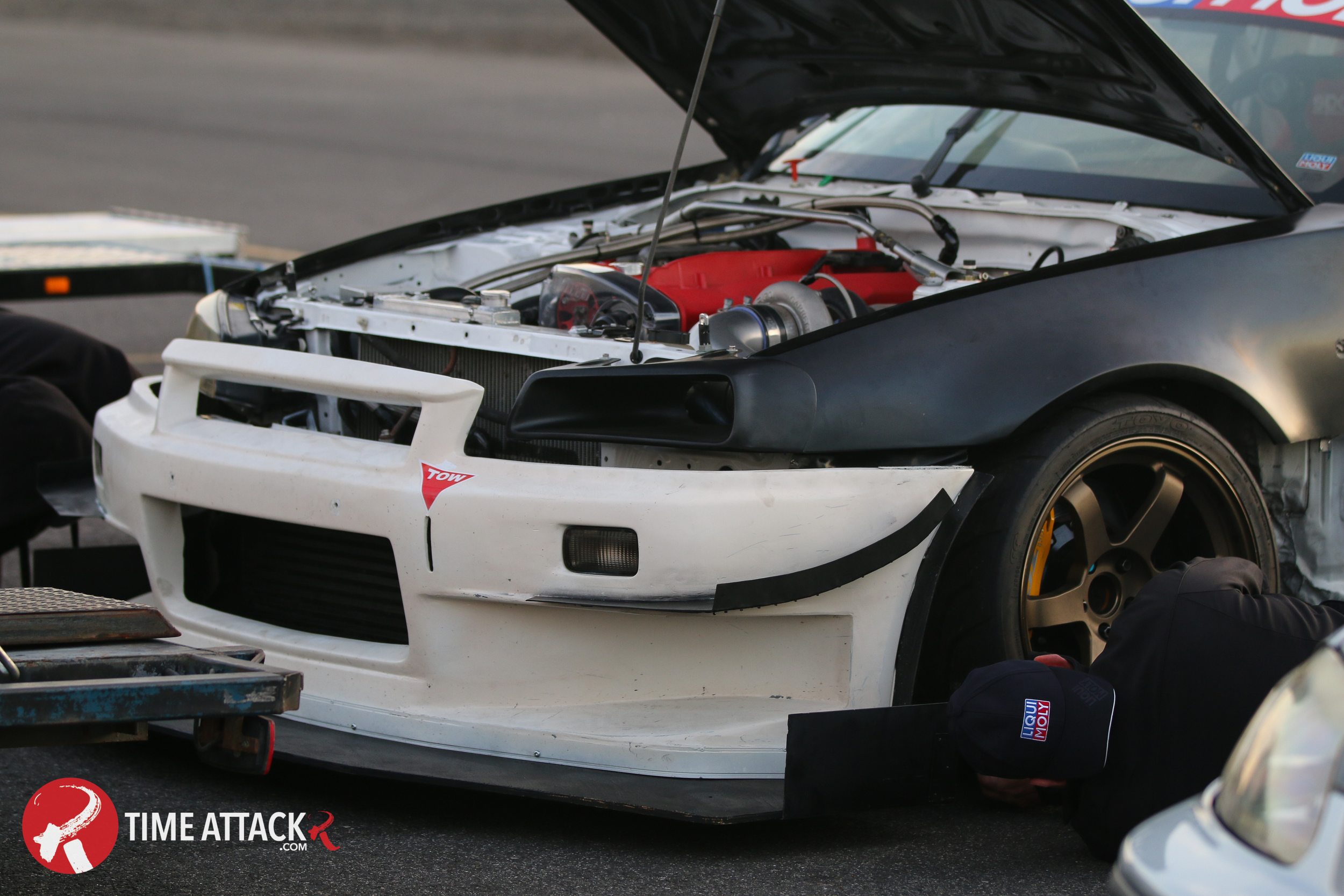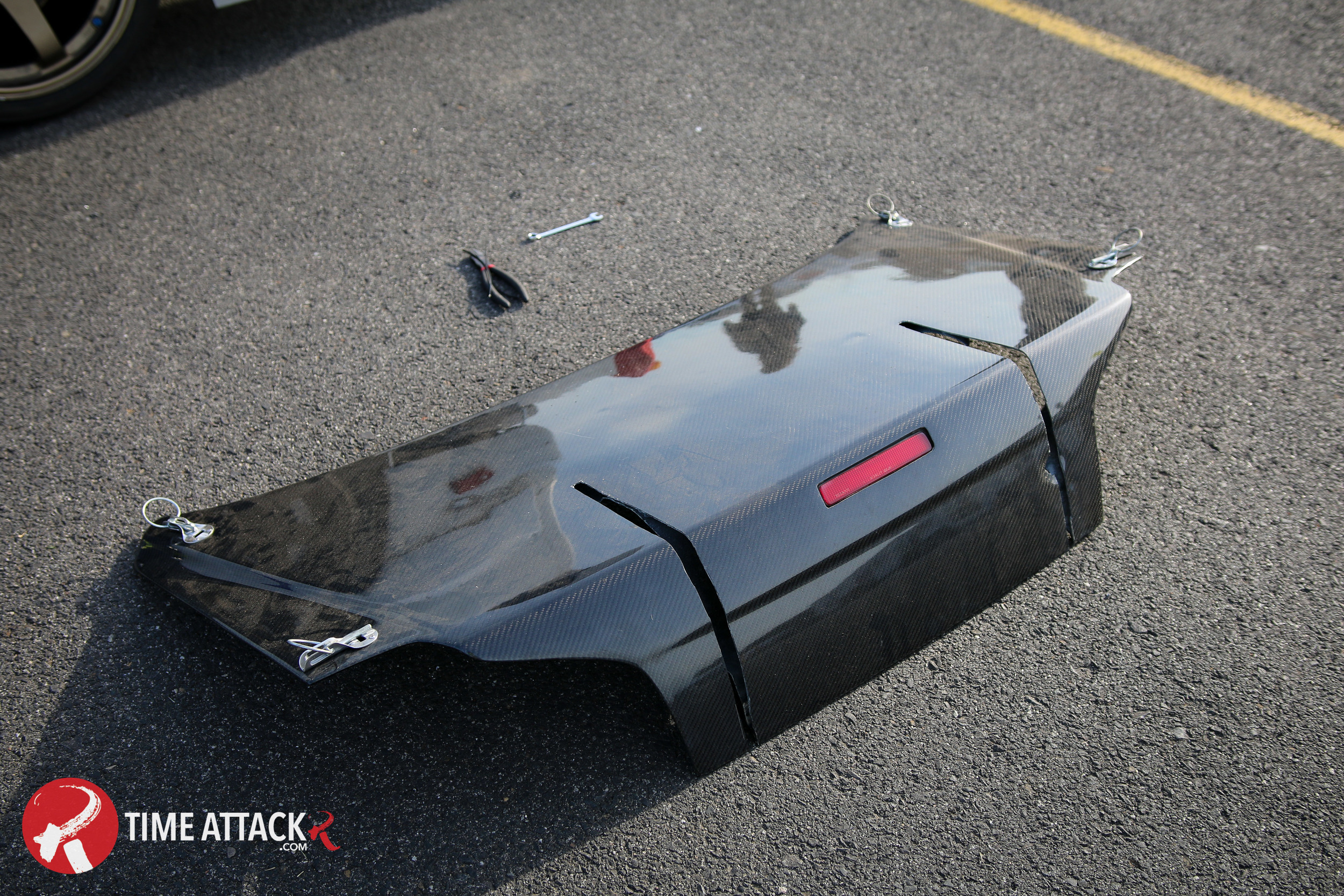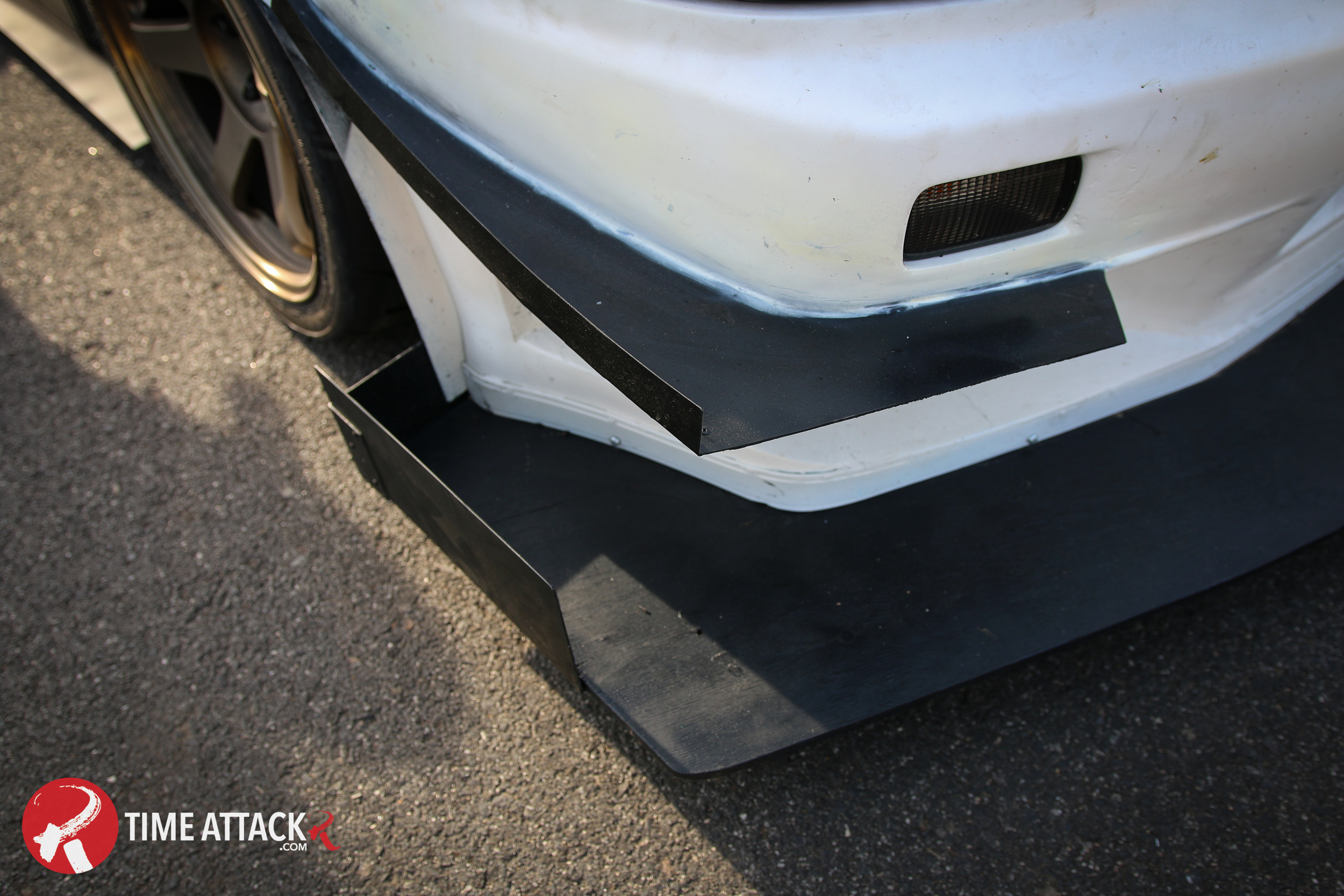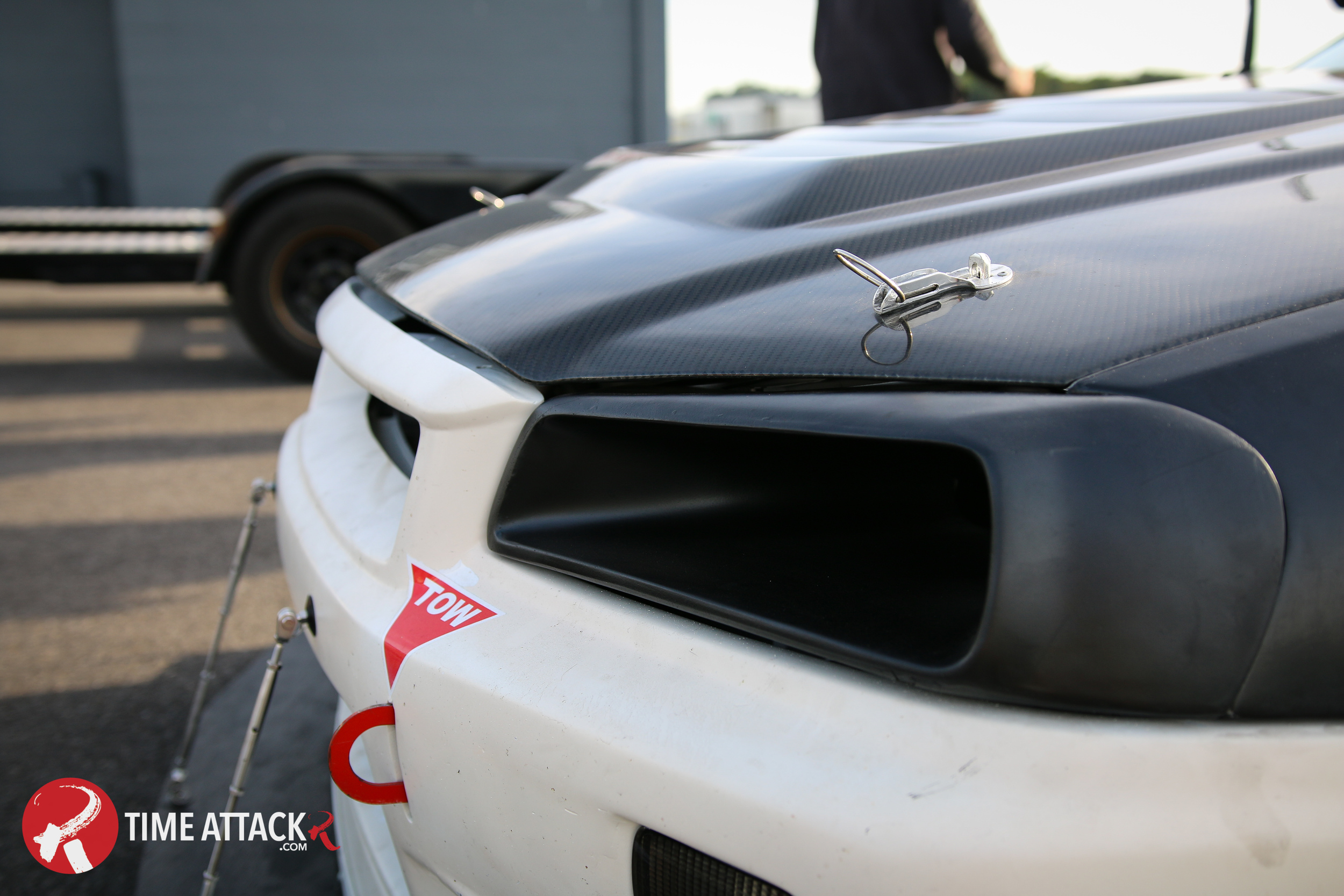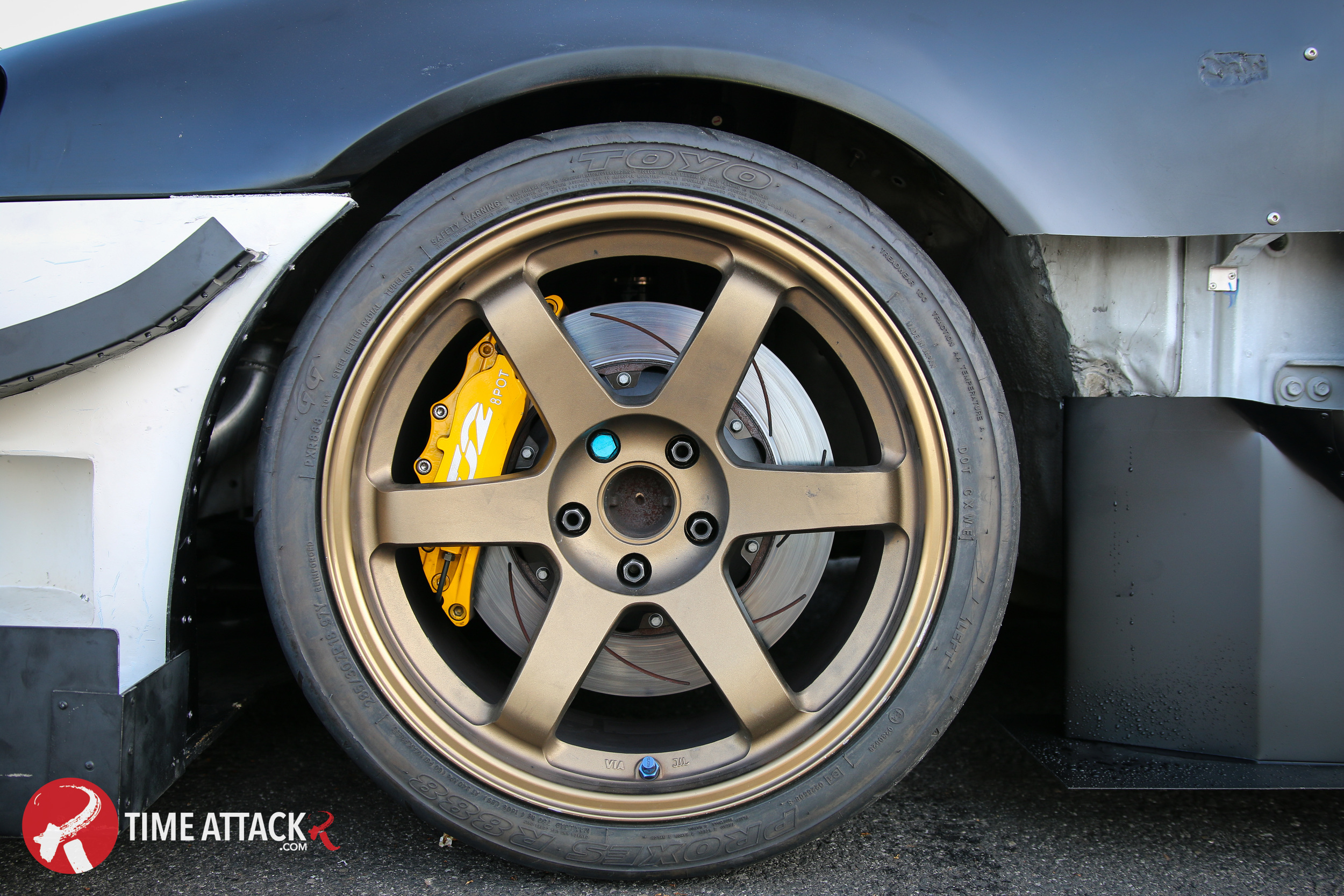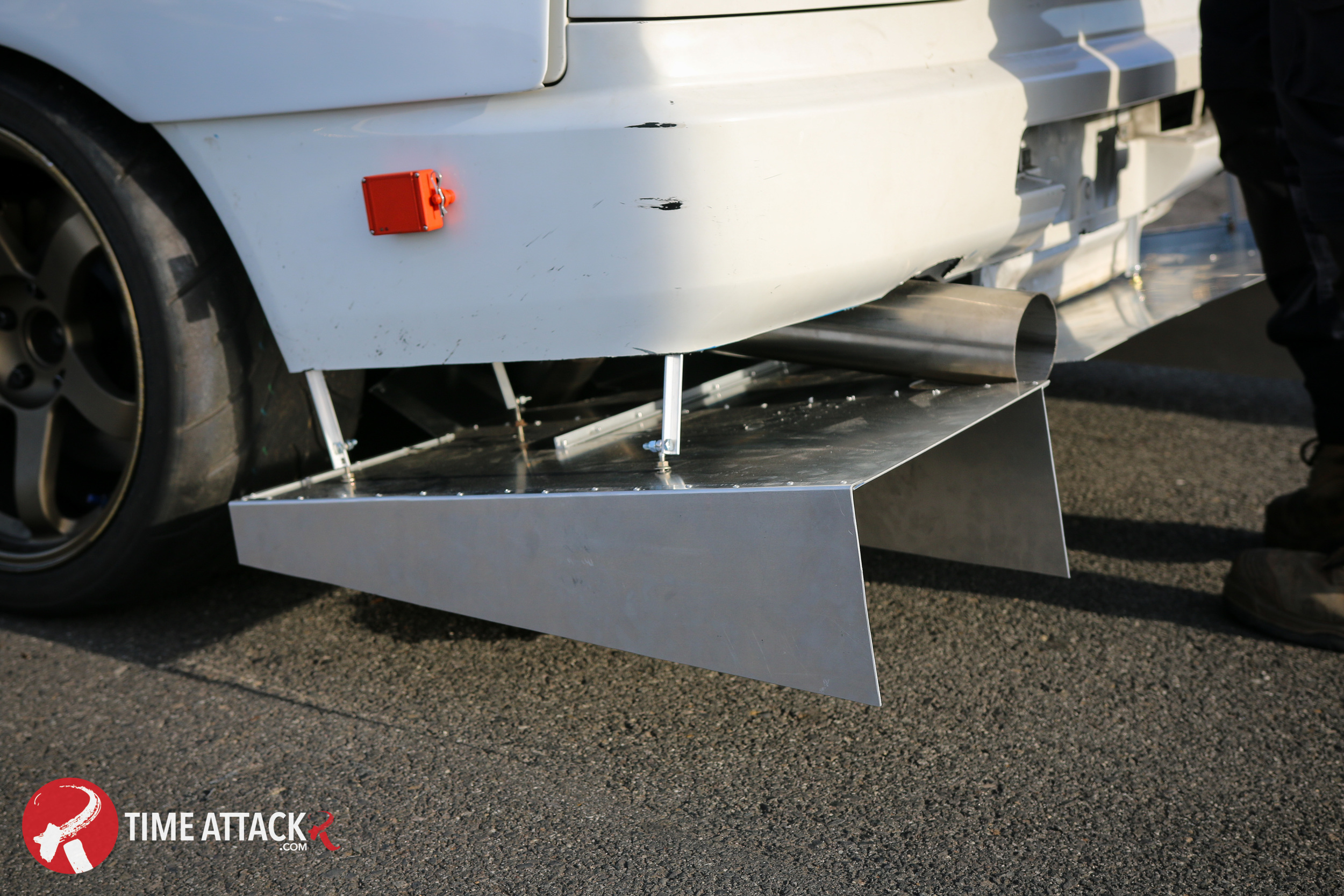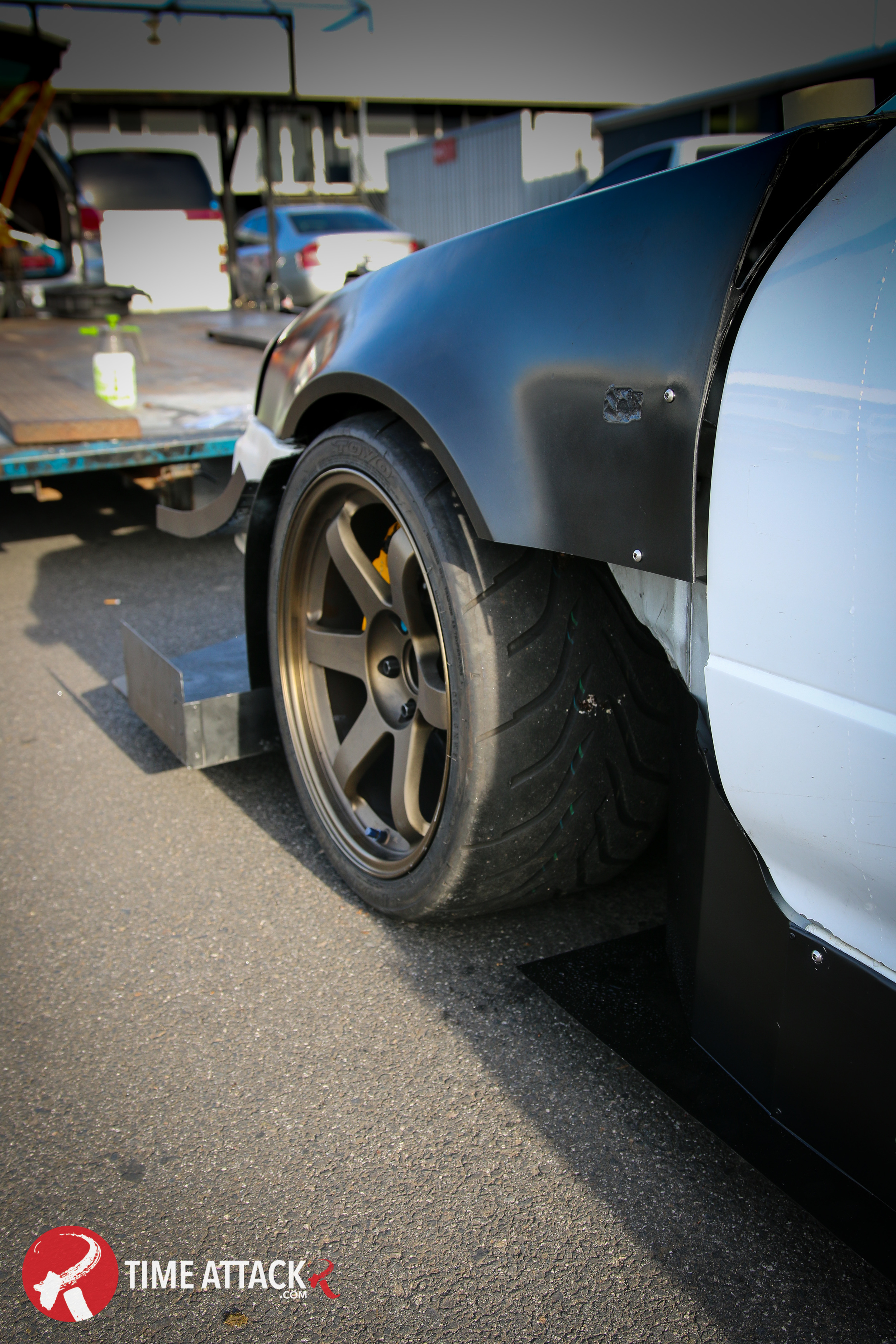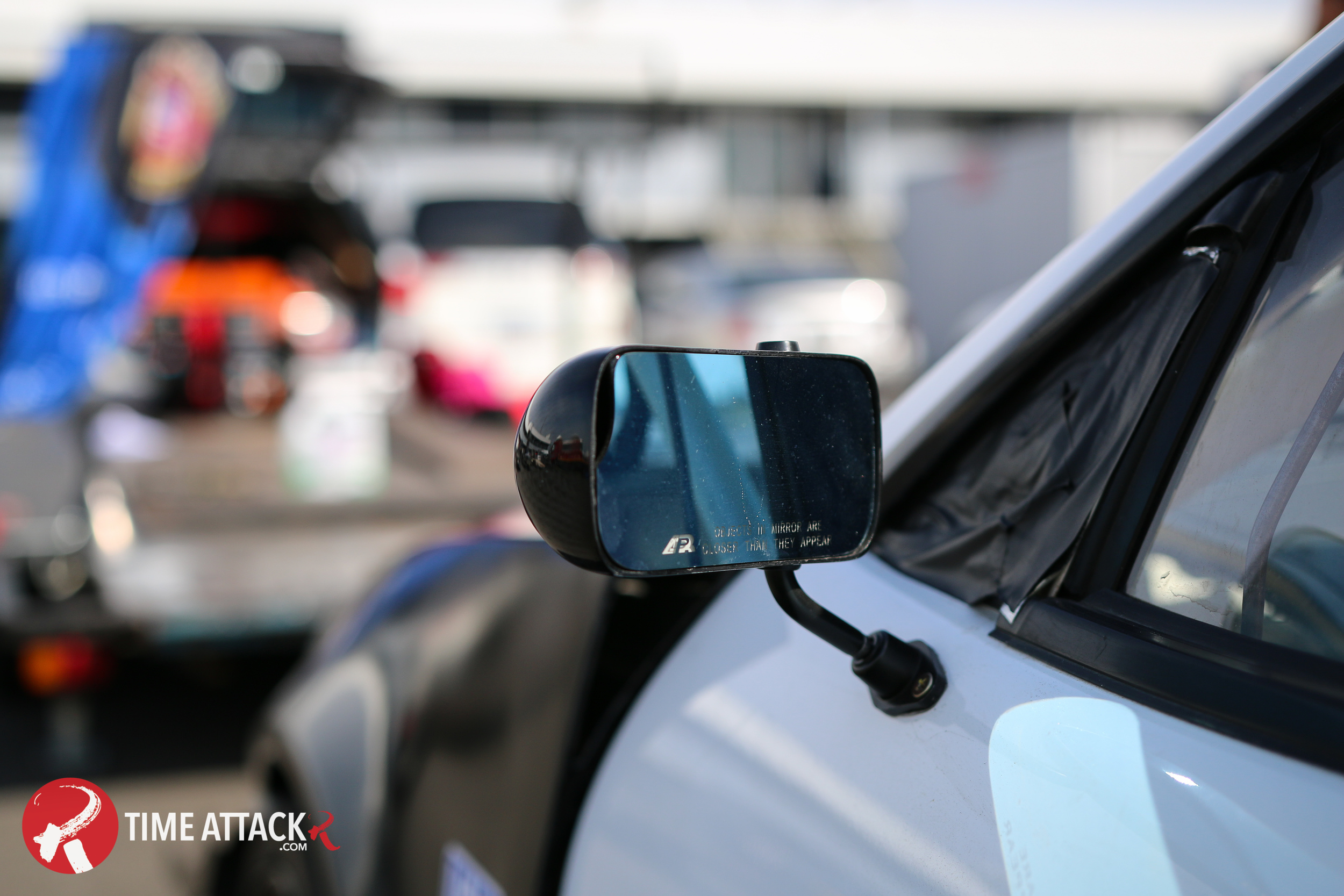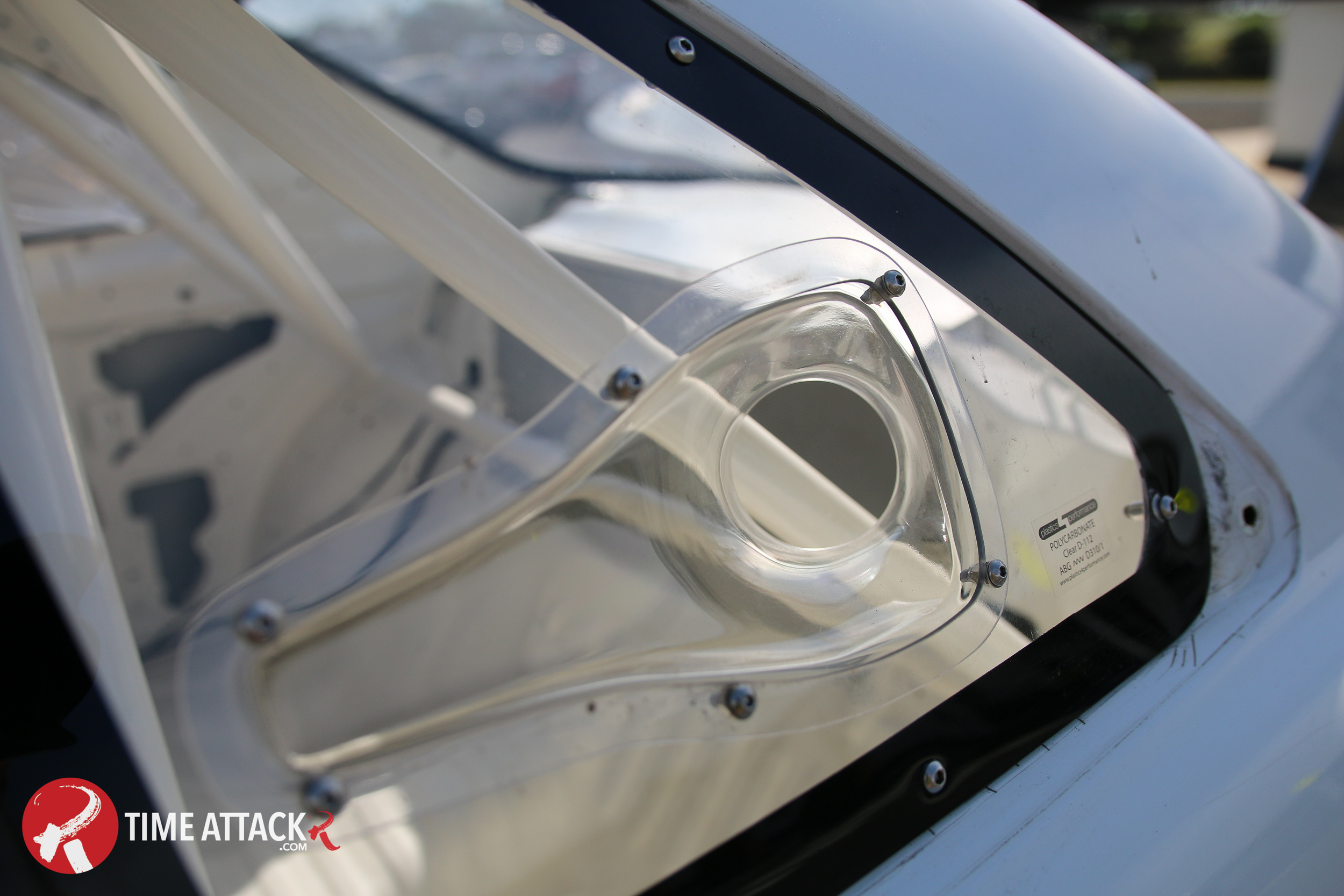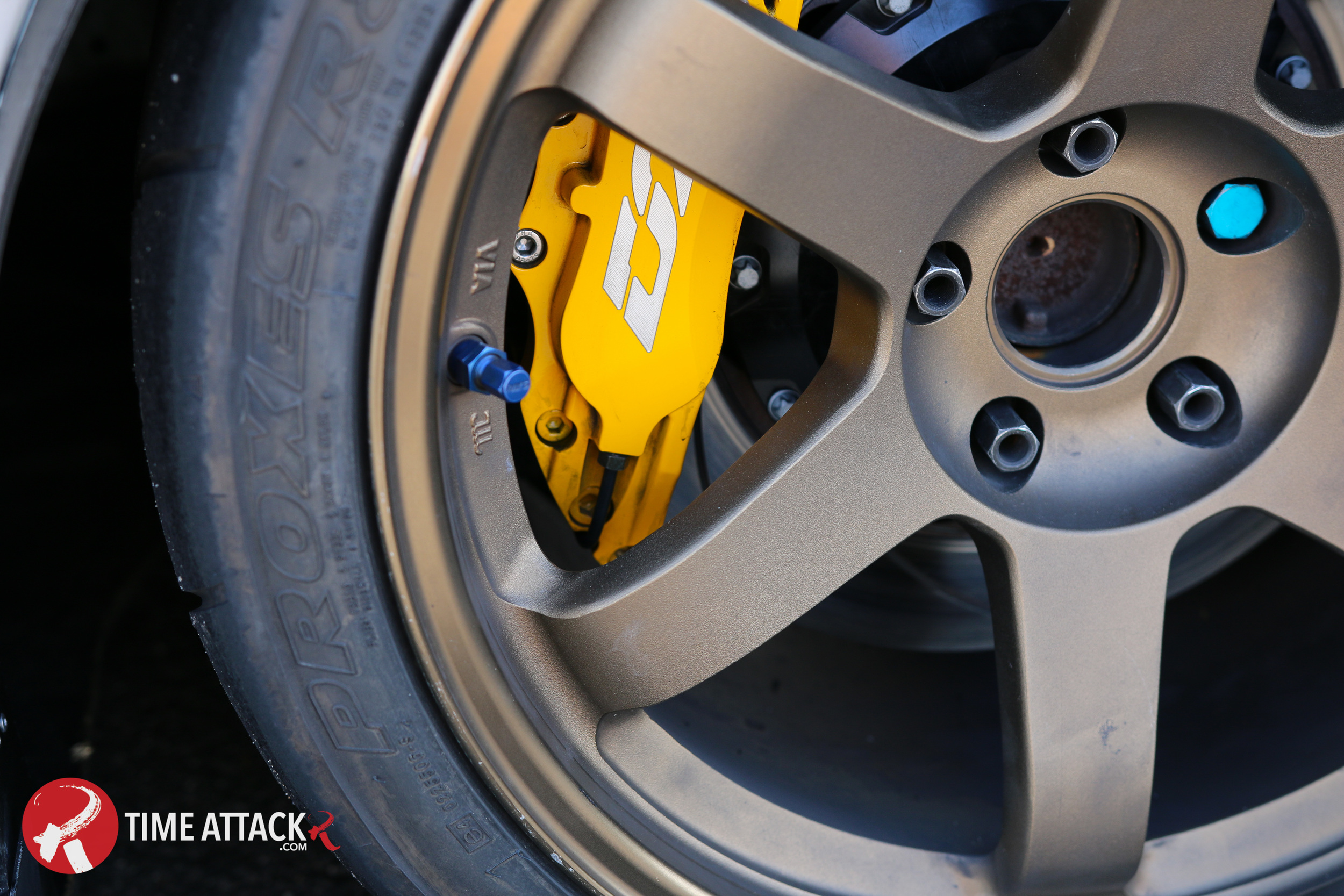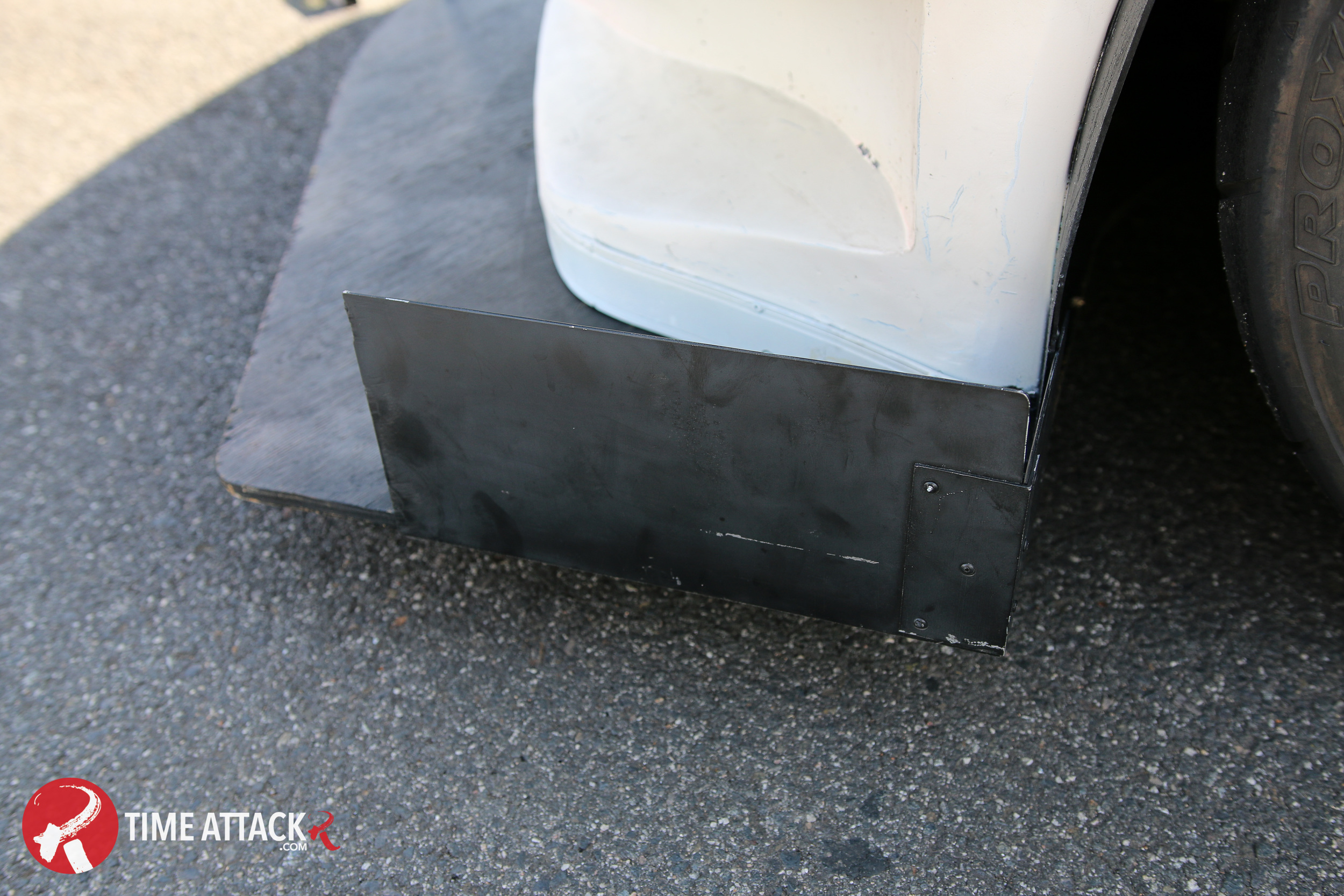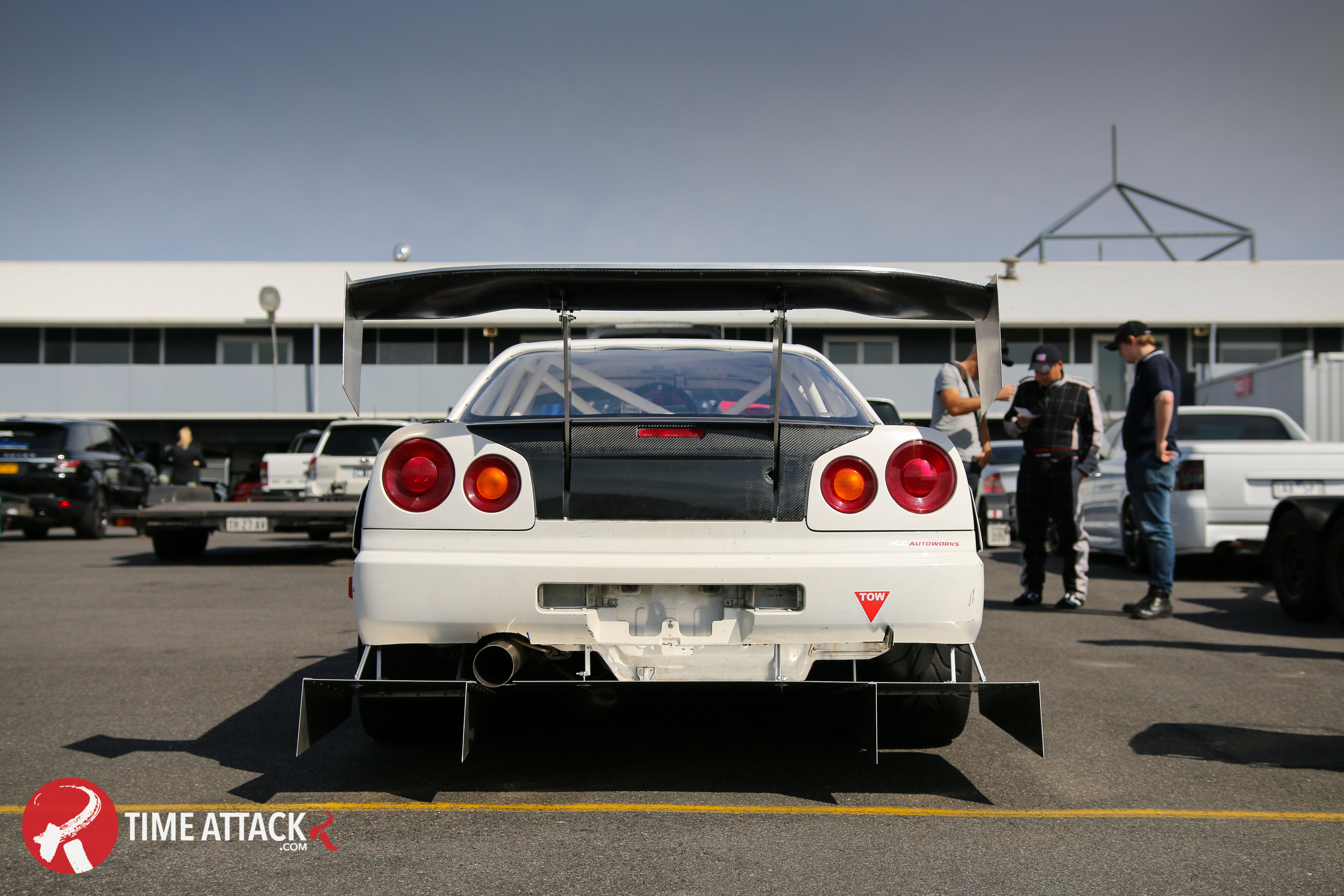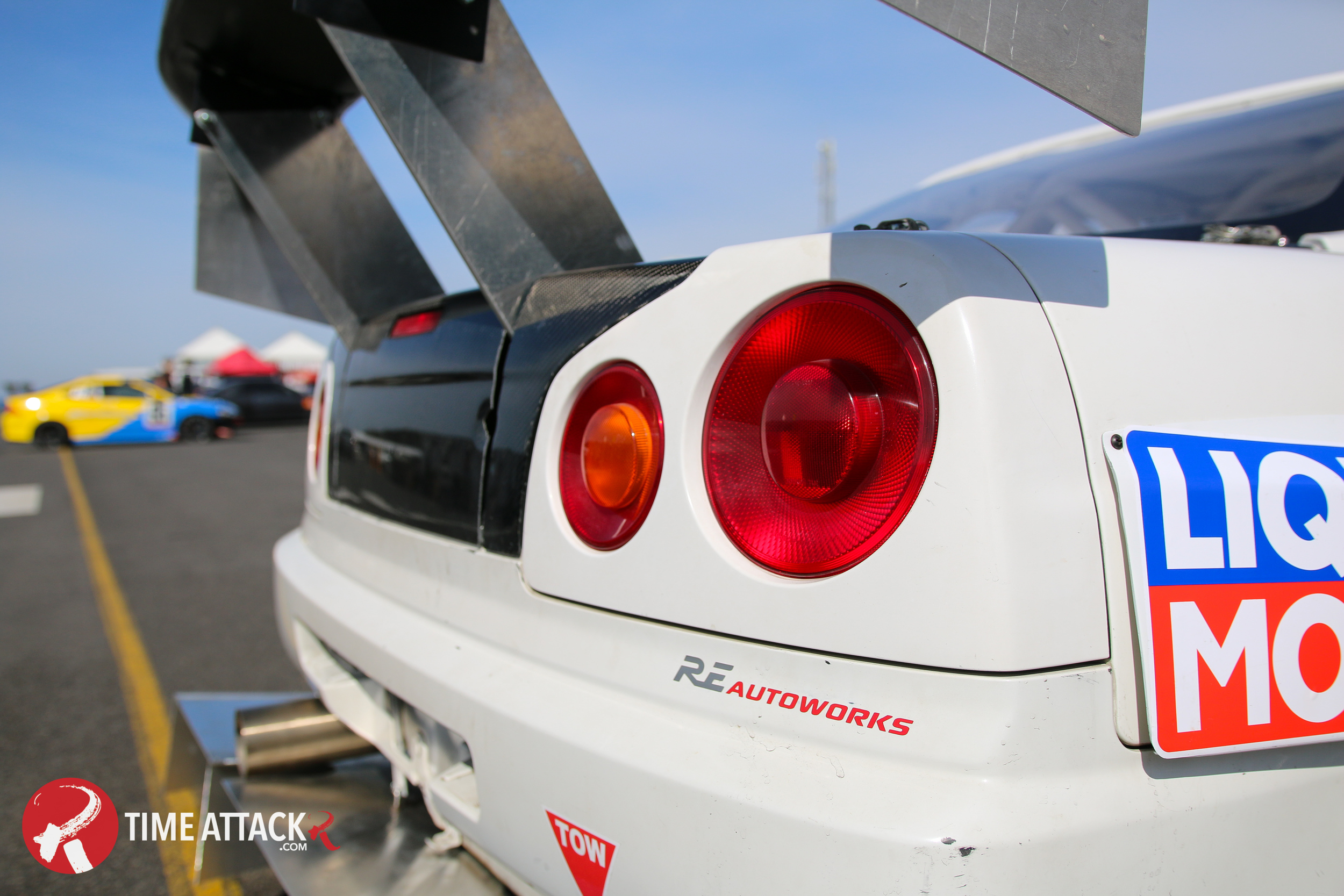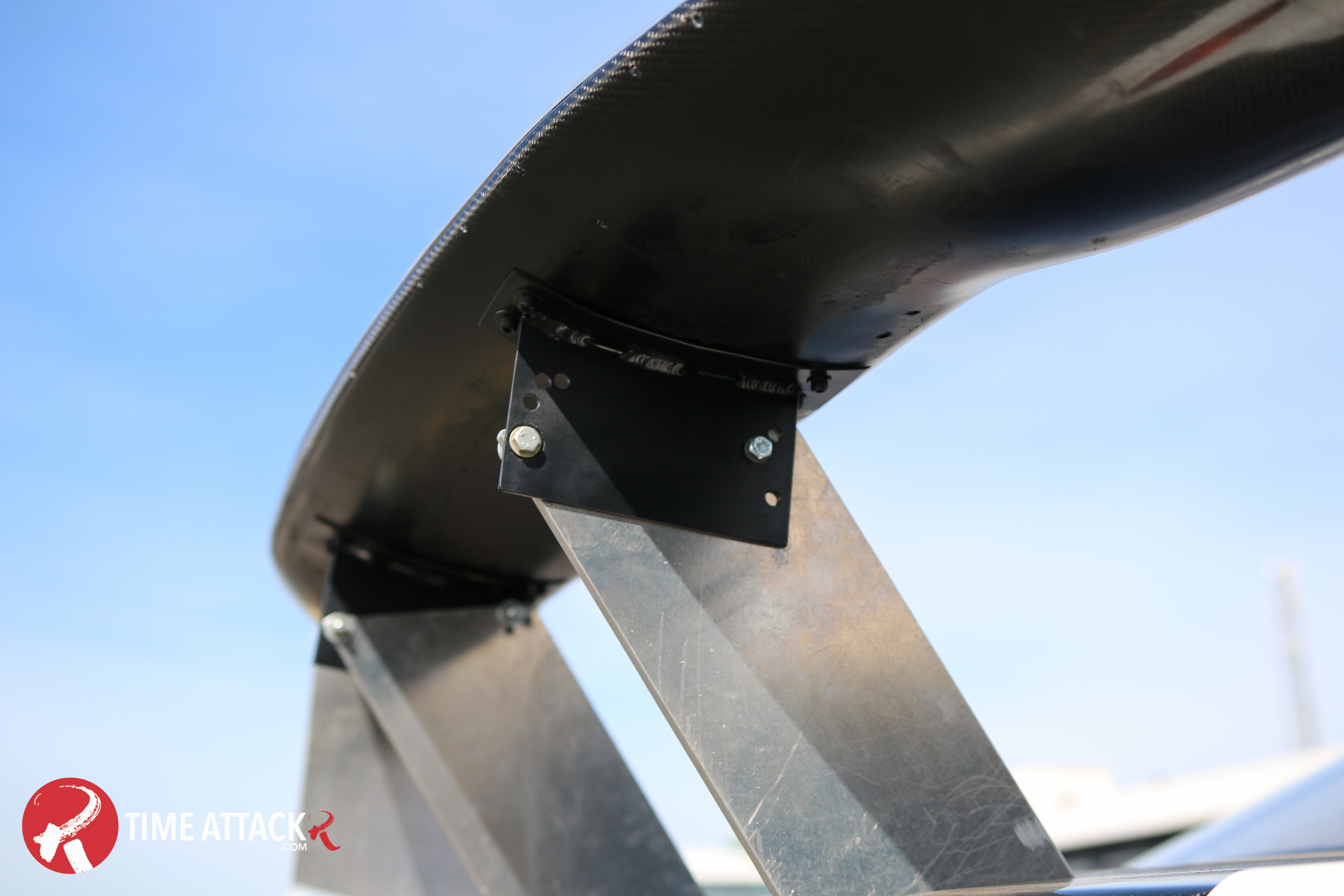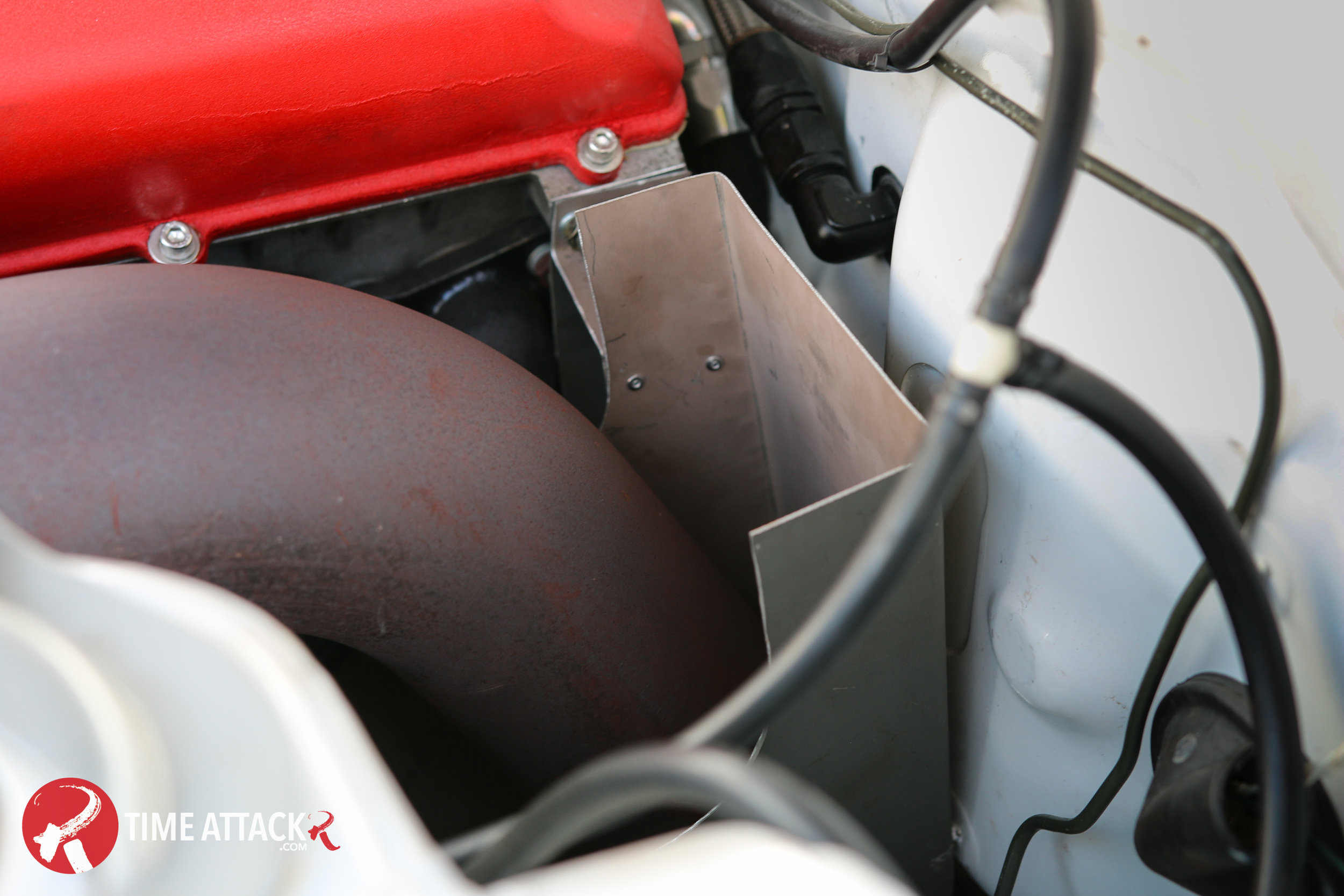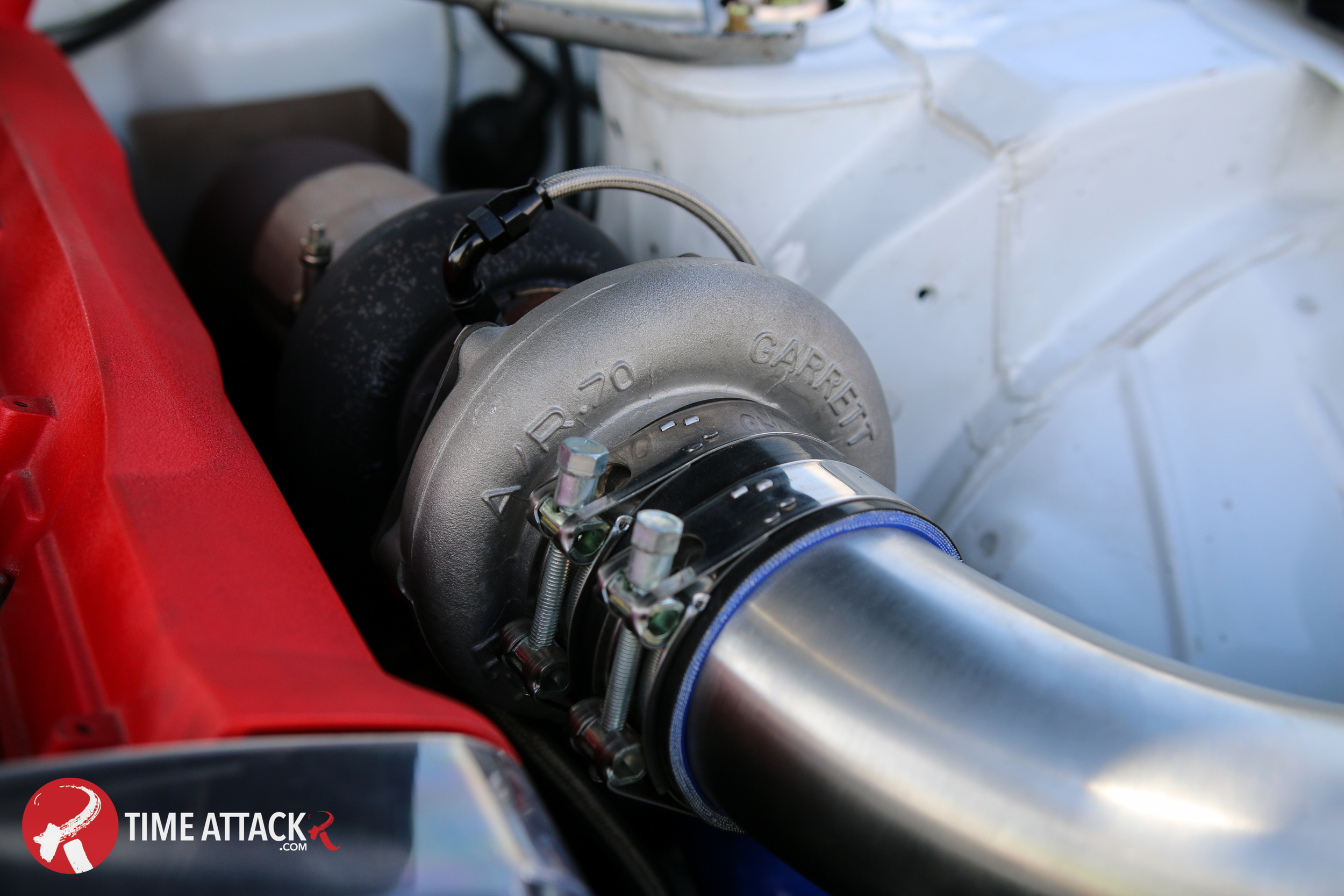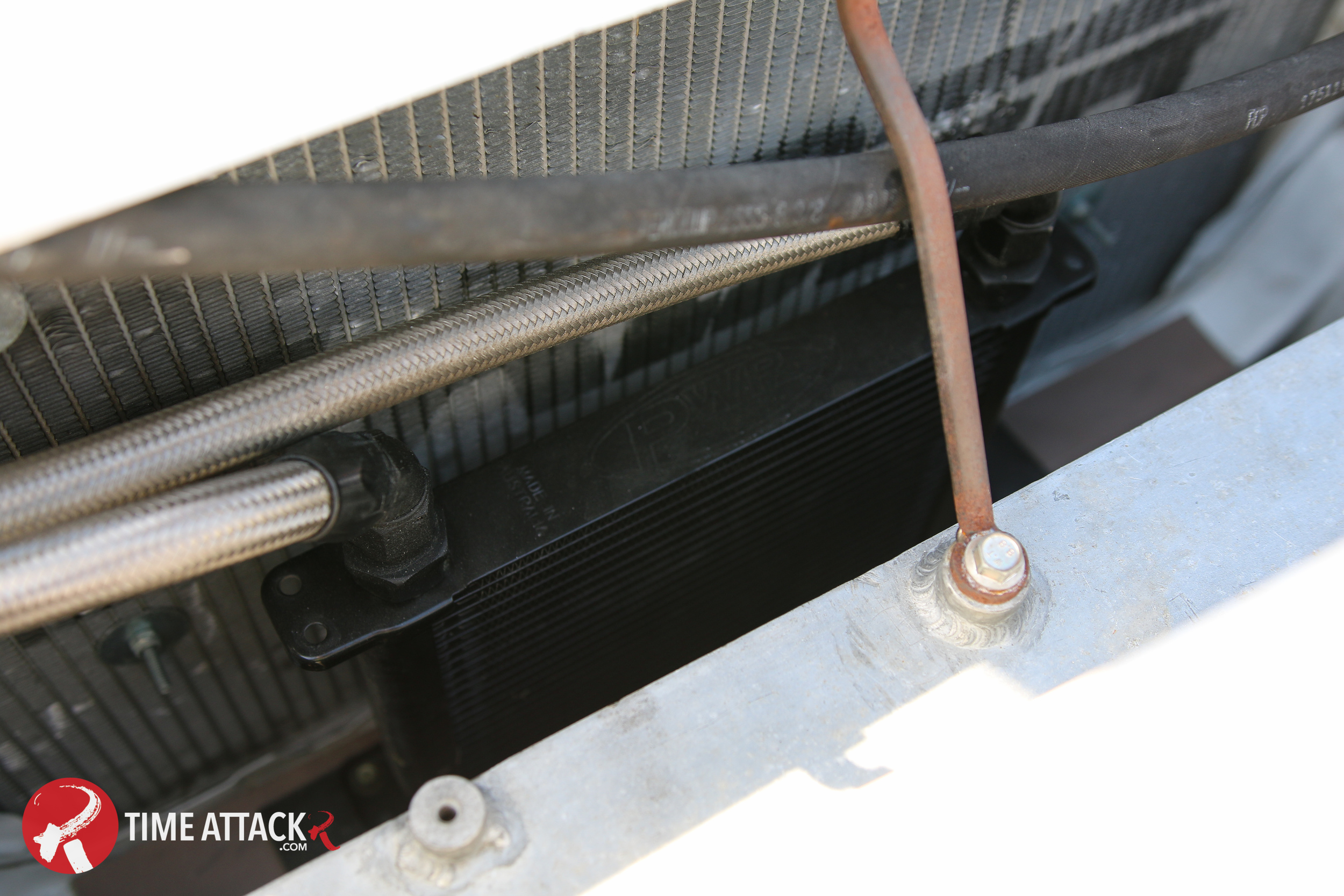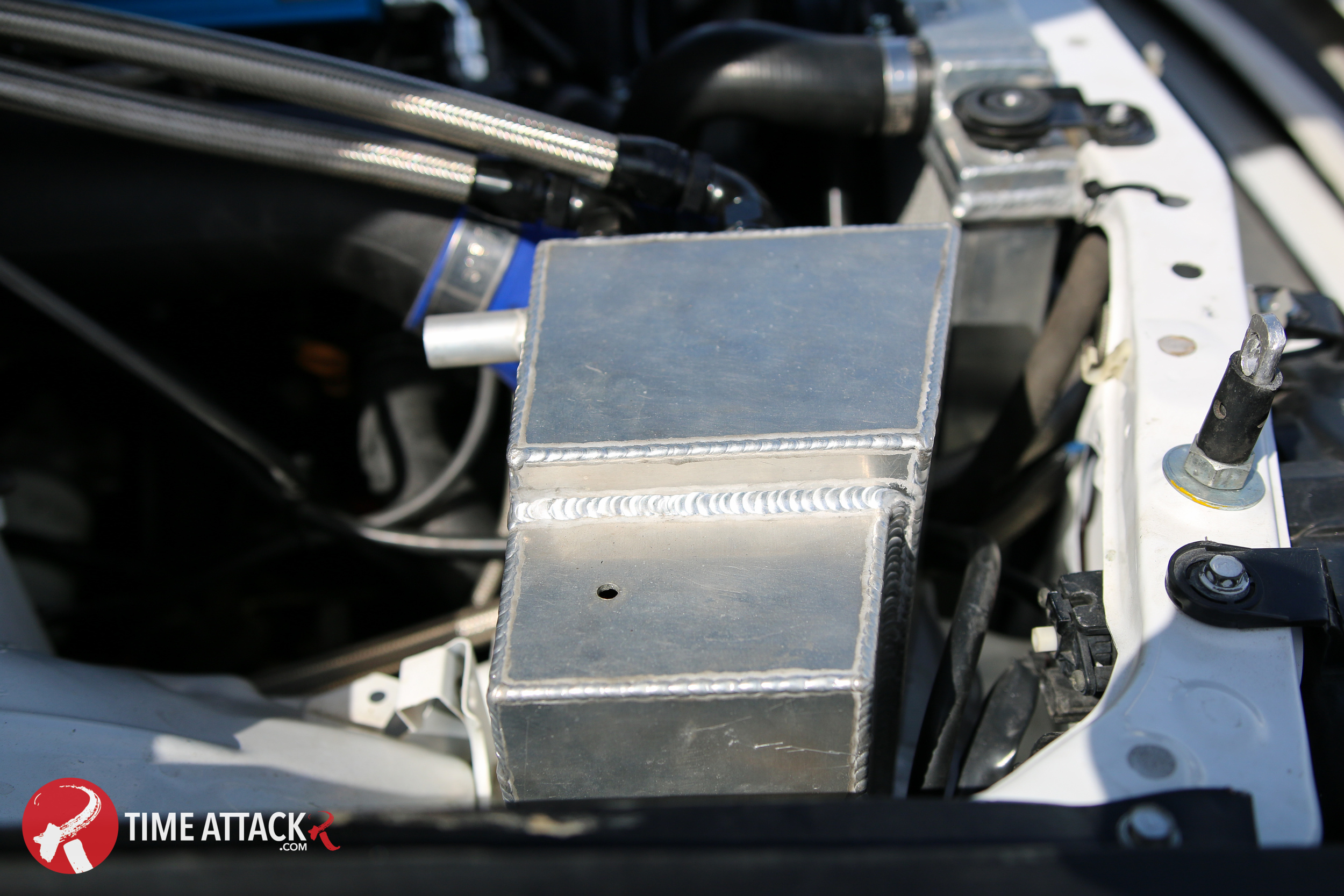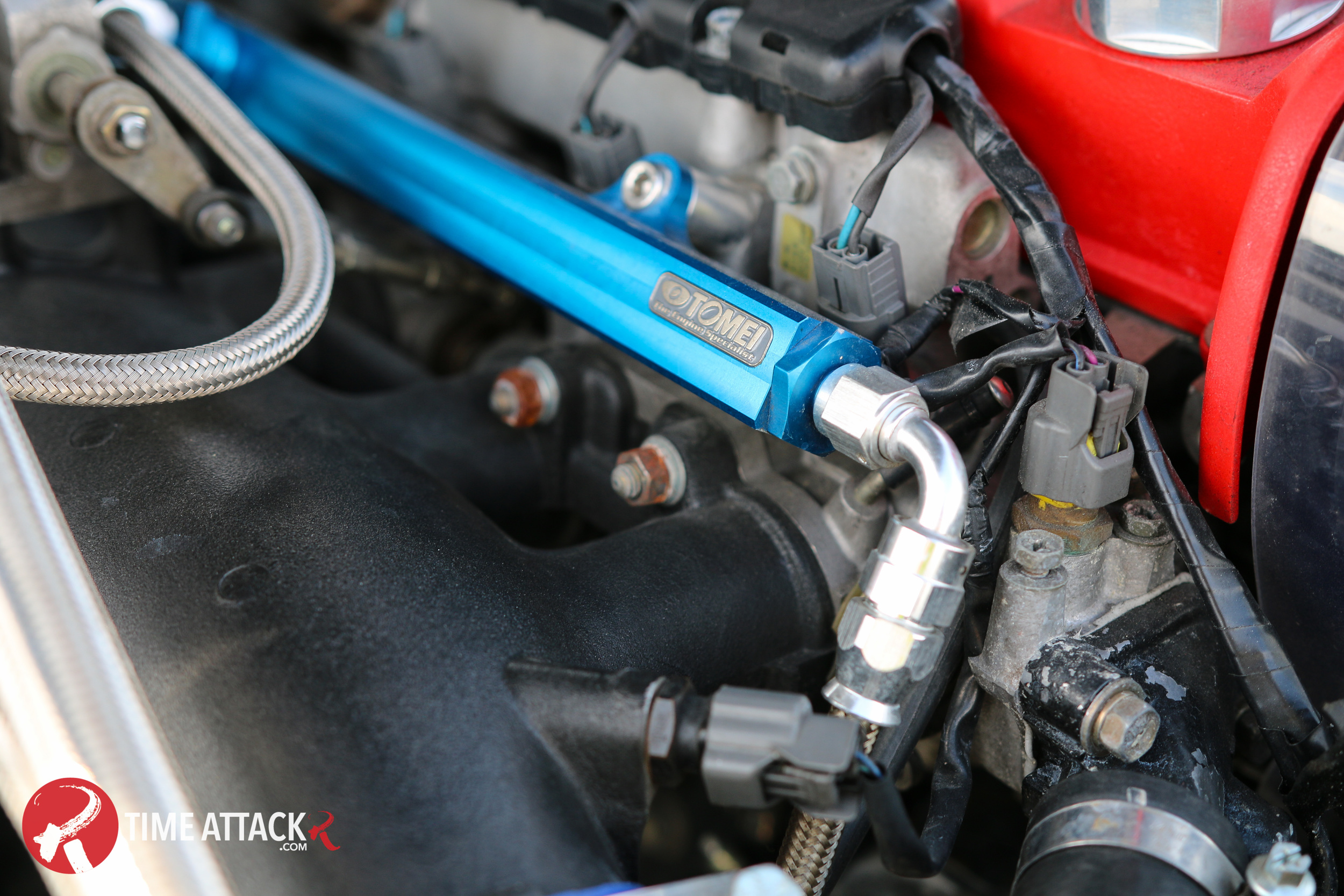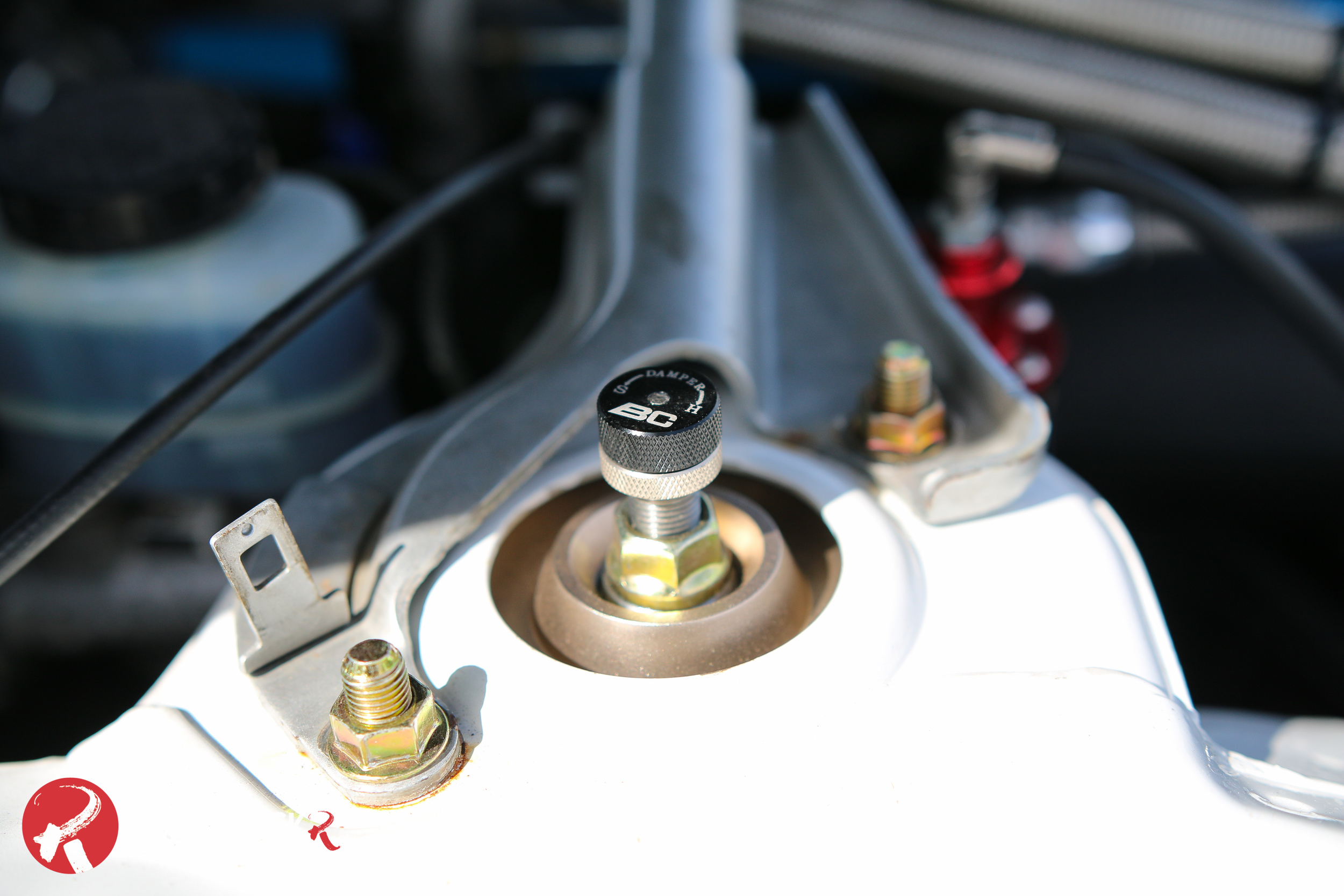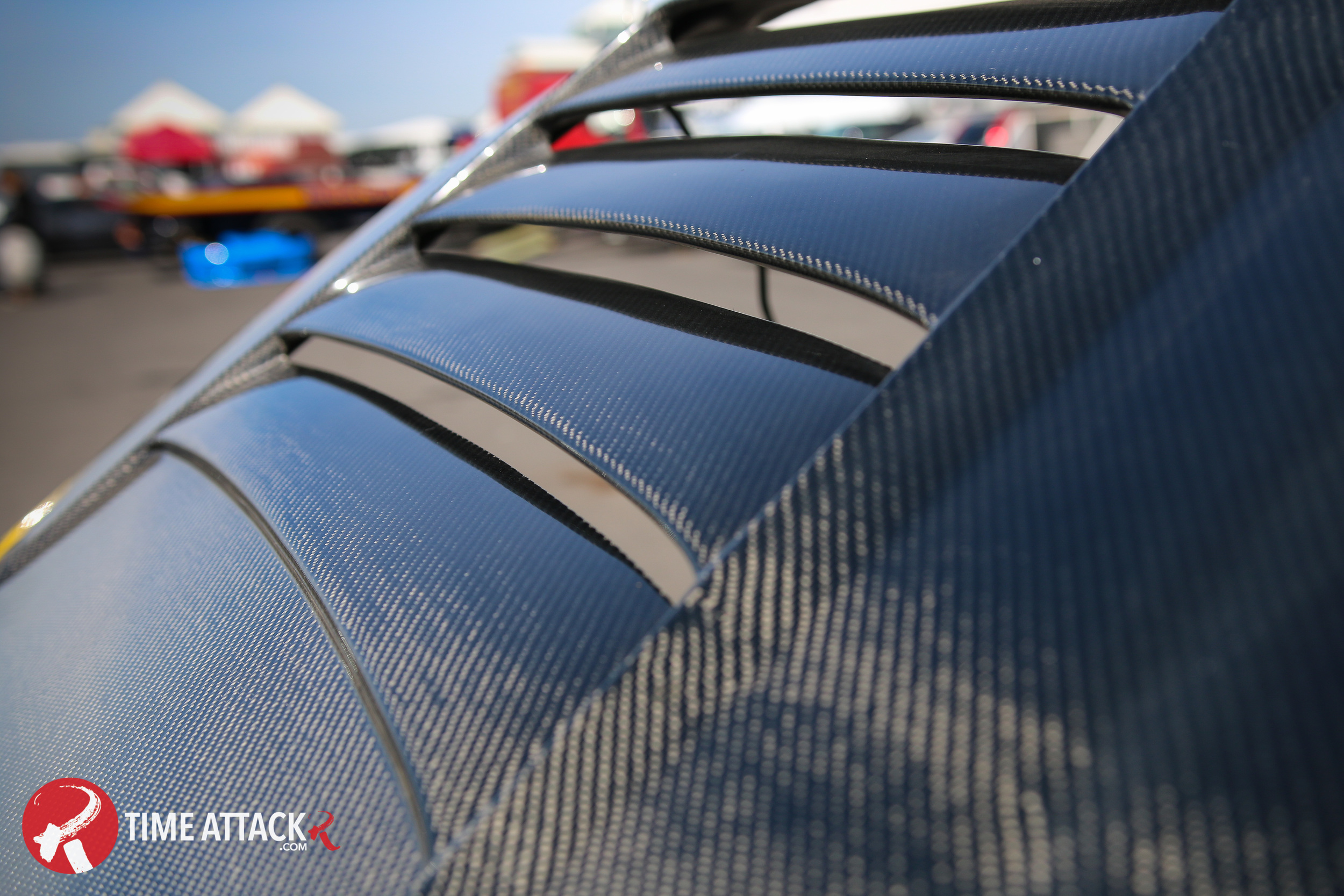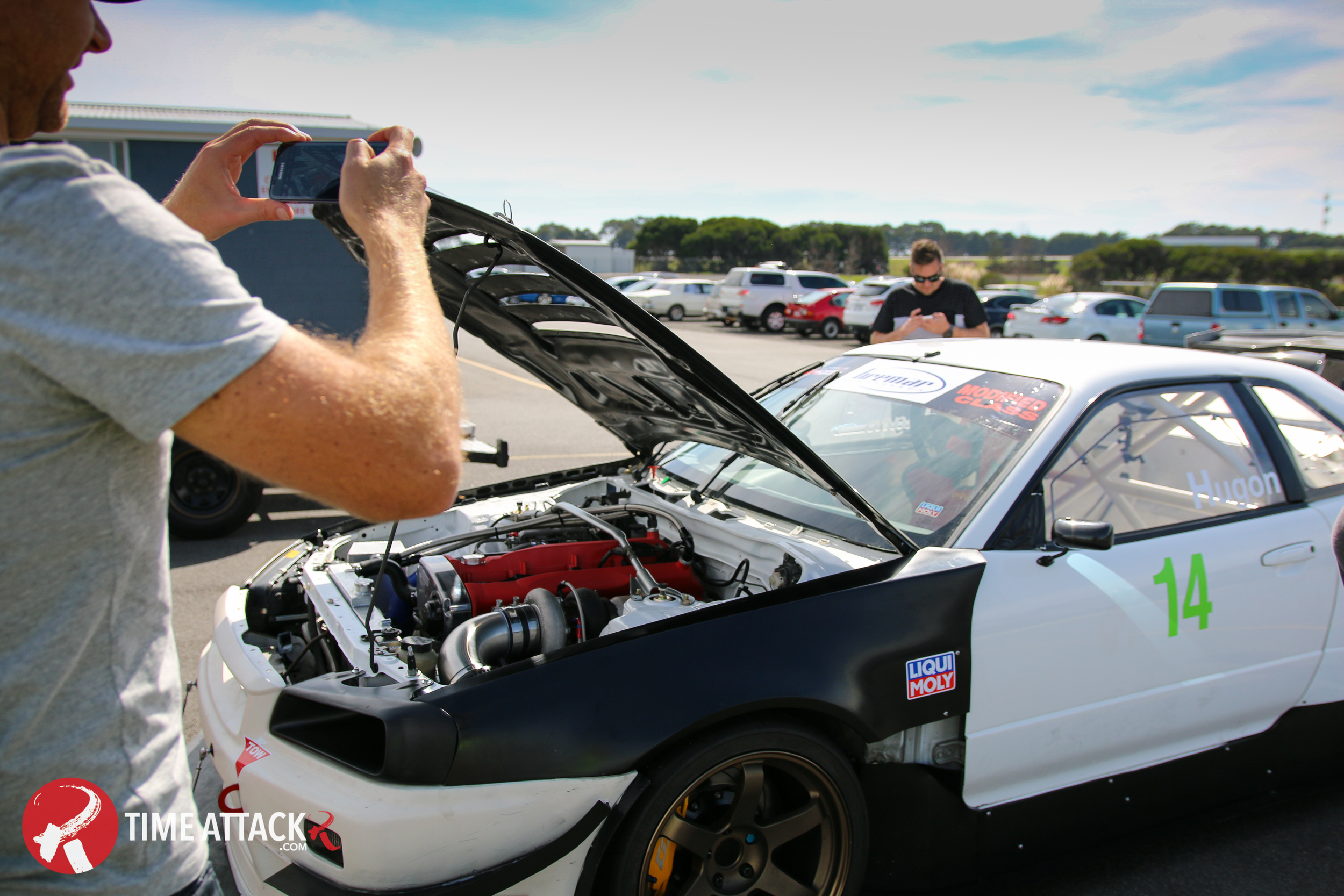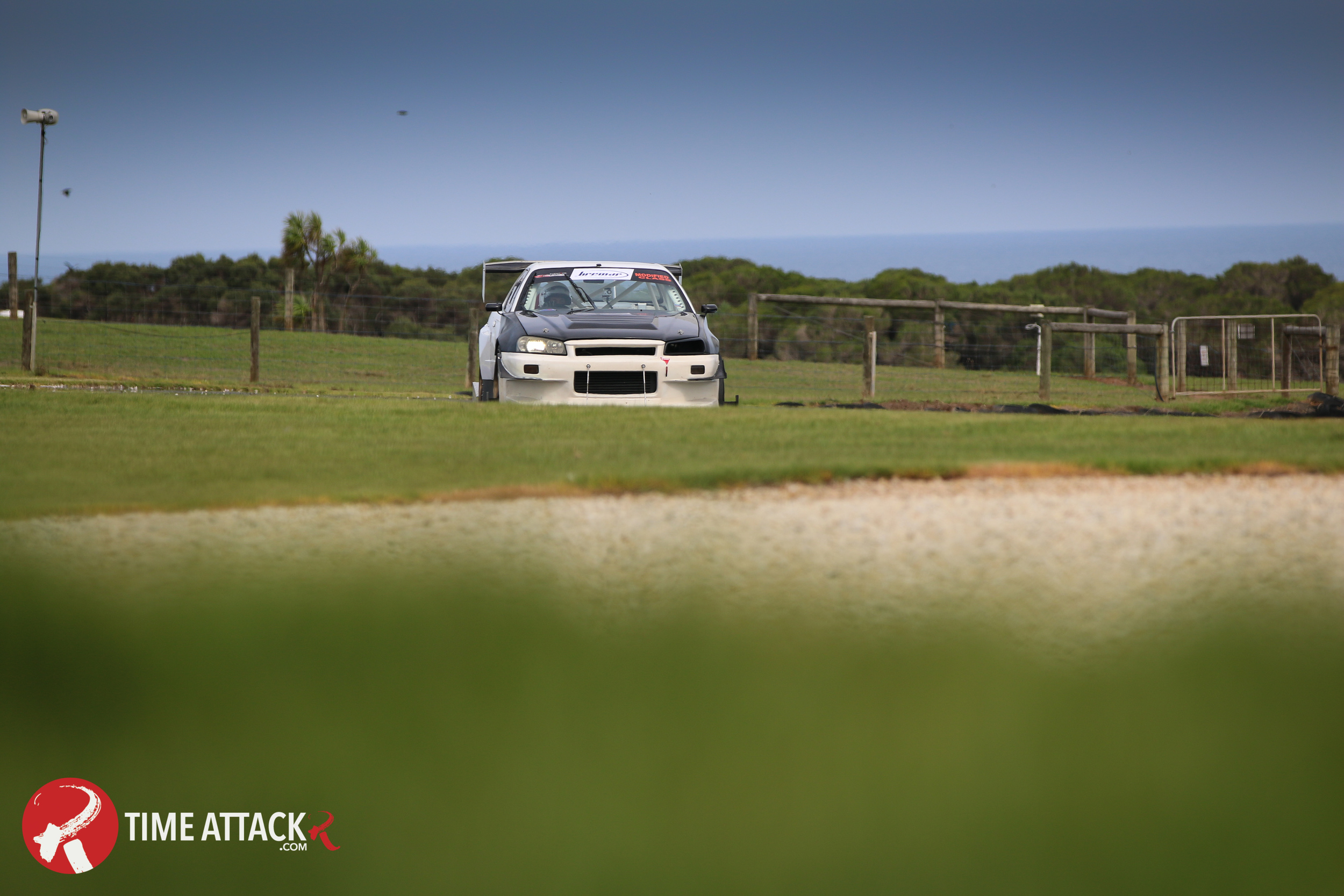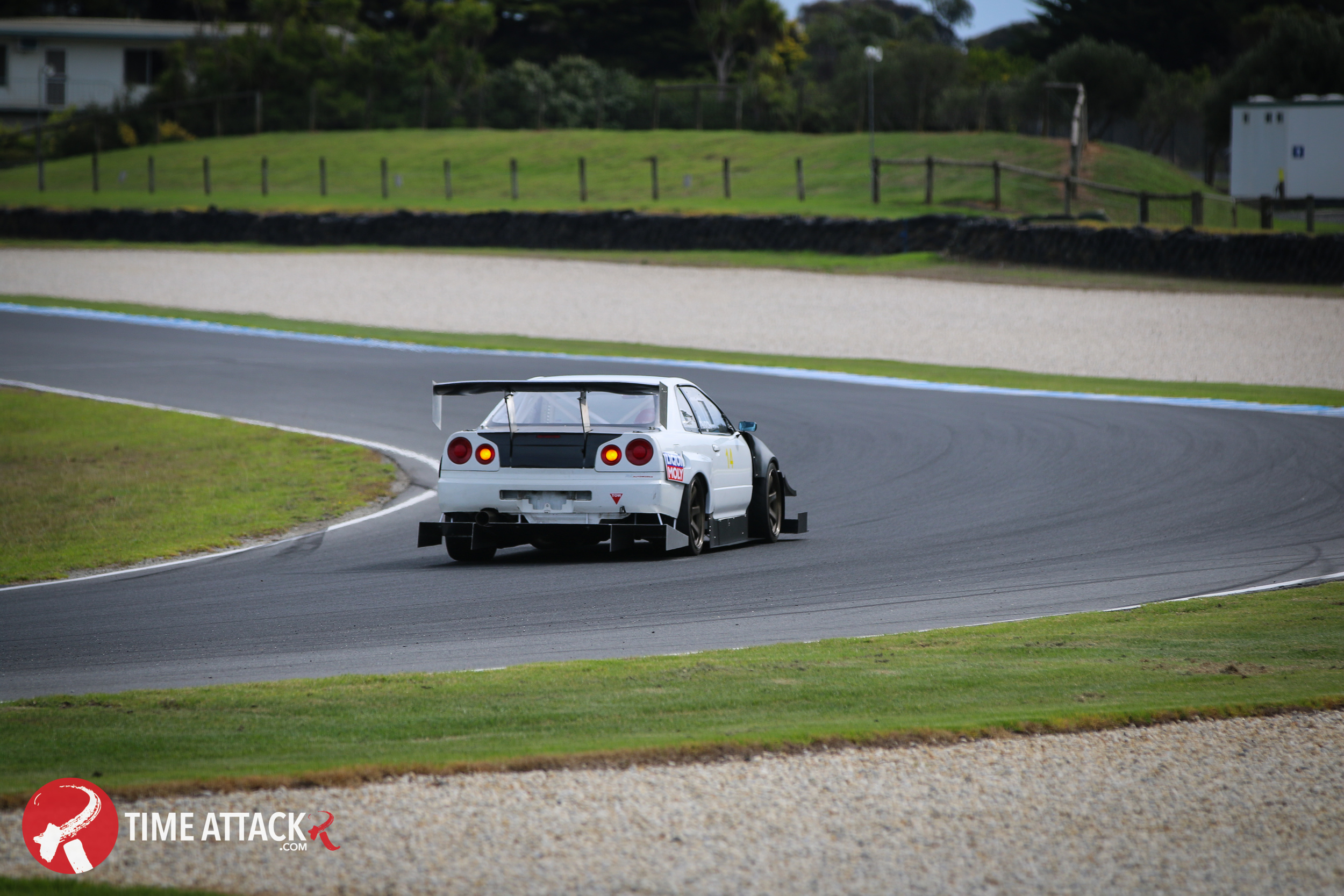When people mention different horses for different courses, they don't think about time attack. Us time attack folk are crazy and we'll modify almost anything, so we wrangled together the most common platforms to pit them against each other! Take the poll and see which platform comes out on top...
Poll: Who was your favourite WTAC driving superstar?
We've all got our favourite drivers, and at the Yokohama World Time Attack Challenge the event was literally bursting at the seams with international talent. Who was your favourite though? Take the poll below and let us know. If your favourite driver isn't on the list, let us know in the comments section!
Event Blog: Yokohama World Time Attack Challenge top moments!
The 2016 Yokohama World Time Attack Challenge was off the charts. The Festival of Awesome gets better every year, and as we witnessed with our own two eyes, is the best motorsport event on this side of the world. Lucky too, as we were handy in Sydney at the time, so we certainly made the most of it. We're going to walk through some of our favourite moments as a team of photojournalists covering WTAC — get ready, there were plenty!
One of the best moments at WTAC was hanging in the pits with Under Suzuki. The man's a total legend in time attack circles for obvious reasons, and it was great to see how his talented team operates. Noodles for lunch, breakfast, and dinner kept the team on form and we witnessed Under Suzuki attack as hard as he could all weekend in his SR22VET-powered Nissan Silvia S15. With a finished lap time of 1:23.1, Under was on fire.
Witnessing his fastest lap was intense. Our small media team stopped shooting, and listened for the radio as the lap time came through. A sense of joy for the team was felt by all, as we know how hard they'd been pushing for this. They weren't in the top spot for long though, but it was awesome to see nonetheless.
Without a doubt one of the biggest highlights at WTAC was seeing the Kiwis do some damage. Andy Duffin of 3 Rotor Racing freighted over his absolutely mental nitrous-fed 20B Mazda RX-7 FD. Andy has always been a NA rotory fan, so when it was decided a little more power was needed it was a no-brainer.
It's usually difficult to get a good flame shot, but not with Andy's machine. Every corner entry results in a metre-long flame, which is why the rear muffler is so long! Andy was on fire (pun intended) all weekend and finished the event with an impressive 1:30.4. We're excited to see which direction Andy takes for next year's event.
Kat Benson of Kat Benson Racing is one helluva cool Kiwi chick. Being the only female entrant must've been daunting, but that didn't get to Kat the slightest. With partner Andrew Redward close by and NZ Prowear Superlap regular Hans Ruiterman heading the mechanics, Kat had a fantastic support system.
To say Kat had a frustrating time would be an understatement. Most runs were flagged for a wide range of reasons (thanks to other drivers etc), which meant that only a couple of good solid laps were run. Kat's quickest time of the weekend was a 1:39.759, around three seconds quicker than last year. It was an awesome moment seeing Kat take on the world, and we can't wait to see what she brings for the Prowear NZ Superlap Series.
Another one of our favourite moments was when Tim Slade, driving the MCA Suspension Nissan Silvia S13 'Hammerhead', took out last year's record set by Garth Walden in the Tilton Interiors Evo. We were right there, in the pits the moment it happened and boy what a feeling.
When you're strolling through the pits the one thing you don't expect to happen is spot Keiichi Tsuchiya sitting in the JDMYard Honda Civic EG. It turns out the DK was a huge fan of the Civic, and wanted to drive it, motioning for the owners to move the seat forward for him, which was unfortunately bolted to the floor. That must have been a humbling moment for the team and we were glad we could catch it.
After all the hype from previous years and seeing the Tilton Interiors Mitsubishi Evo destroy lap after lap, it certainly had been built up something crazy. Seeing it in the flesh, though, confirmed that this machine is extremely serious and deserves every single shred of hype that it has been given. It's 1.2-metres wider than a stock Evo, packs nearly 1000hp and sounds EXTREMELY angry at full noise. We were graced with a few laps at this year's event, and it was a sight to behold.
Daigo Saito!! One of the world's absolute drift LEGENDS attended WTAC this year in his cool looking Lamborghini. We've been hanging out for months to see this thing in action and it did not dissapoint, nor did Daigo's crazy driving style.
Ok, if there was one car in the entire WTAC field that we could take home and keep forever, it would hands down be the Sutton Brothers Racing Nissan Silvia S15. It's simply a work of art and to top things off, it was driven by...
... Nobuteru Taniguchi! Not only was it a dream for the TimeattackR team to lay eyes on this very individual, we got to hang with him too! Nob' spotted the SBR S15 a few yars back, liked what he saw and asked if he could one day drive it. The SBR team obliged and Nob' wanted to get the S15 below the 1:30 barrier, which he did by the end of the event with a 1:28.45! Please SBR team, keep the S15 looking like it does now. It's simply perfect.
Another one of our proud Kiwi moments was when Nico Reid showed the Aussies how to drift. The aggressive style of Nico always has us entertained and it was no different at WTAC this year. The RB25-powered S15 always looks good, and the amount of lock this thing has is insane!
We'll be back with plenty more action and coverage from the event, so stay tuned!
If you're after any shots from TimeattackR.com, flick us an email to timeattackr@gmail.com
Event News: Kat Benson welcomes Turbosmart and upgrades Evo leading up to WTAC
BurgerFuel Racing pilot Katherine Benson has secured further support for her 2016 Yokohama World Time Attack campaign, announcing that her Evo VII time attack machine will be receiving a number of finely engineered improvements as she officially joins Team Turbosmart as a brand ambassador.
Turbosmart marketing manager Richard Shumack met Kat during her debut at the 2015 event and said, “Kat is a fantastic athlete who has done great things both in and for the motorsport world in New Zealand, and with her coming back for a second time to represent on a global stage at World Time Attack, she seemed a perfect candidate to represent Turbosmart. As a global brand, New Zealand is a very significant market for us, so supporting local New Zealand racers and the Kiwi racing scene is something that we see as an incredibly important activity. “
Kat and her team are incredibly thankful to have secured this partnership and are excited about the opportunities in front of them both internationally and on the domestic scene with their Prowear NZ Superlap endeavours.
The eagle-eyed will spot a set of MCA suspension has made its way underneath the Evo and a new set of Evo X Brembos will provide much greater stopping power, all fitted under the watchful eyes of NZ GT champion Hans Ruiterman, who will travel as crew chief and spotter.
The number of upgrades ensures the 2016 campaign is something well worth keeping your eyes and stopwatches on, and as the only female entrant this year, Kat is proud to be flying the girl power flag.
For further updates follow Kat via Facebook, Instagram, and keep your eyes peeled here as we'll keep you updated as the vehicle is closer to completion leading up to the event.
Event Gallery: why the final NZ Superlap round was AWESOME!
The next season of the Prowear NZ Superlap season is fast approaching and because of this, we thought it would be a great time to look back at the most intense round of last season — the final! This time, though, we are going to look back at the final round through the lens of photographer Alexandre Bon-Guerra of Fine Lines. Alexandre, with a landscape, event, and wedding photography background has a unique eye different to most motorsport photographers, so it was quite a treat to have him on board for the event.
The final round was a nail biter for various reasons. It was always going to be exciting seeing who would take the event out overall, and who would take out each class. Leon Scott managed the overall win for the event, which was great to see. It's been a long time coming for the team, that's for sure.
Being back in New Zealand for the final round was awesome. I was able to catch up with drivers I hadn't spoken to in a while, and hear their thoughts on the sport, the series, and the cars around them. The thing I love most about time attack racers is their passion for the sport.
Another reason it was great being back was to check out the new and improved Hampton Downs facility. Note the pink high-vis? Yep, standard Hampton Downs Raceway attire now... Am I going bald? Eeek!
So much awesome in one photo. The Superlap pits are always brimming with powerful and unique Japanese tin (minus the Commodore). As you can see, the Superlap family are all close, all share, all help each other, and all amp each other for the win. Even the hatchbacks get turned into bench seats, for the girlfriends and wives waiting around at the event... nice work Jason and Khan!
One lad that is growing on me is Bradley Haines. Initially, I could never understand the reasoning behind some of his upgrades, but then I remembered that everyone is different and if Brad wants to do things backwards, then so be it! Aero first, power later — bring on the haters, as Bradley would say. There's also something admirable about learning to drive without power first, so for that I commend you. Bradley is also great for a laugh, so track him down in the pits and have a yarn.
After going for a ride out on the street in Iain Clegg's absolutely bonkers Nissan R35 GT-R that packs over 1000hp, I was eager to see it out on the circuit. With a set of slicks strapped on, Iain managed an impressive 1:08. That was with the heavy stock seats, Bose stereo, heater, AC — you name it! What you might not know is, Iain and the ST Hitec team helped me get back to New Zealand to cover the event for everyone. If you haven't had a chat with Iain, track him down in the pits, he's probably one of the nicest guys I have met in my life!
One driver I am excited to follow in the future is Brad Jesson. With a determination like no other and a mental fast Mitsubishi Evo VII, he'll be one to beat in the future. When we're back in New Zealand next we'll be sure to take a closer look at his car. Up and coming drivers such as Brad are what make the sport so exciting, as you never know how quickly they'll climb the ranks.
One of the last things that made the final round so awesome was seeing Mazda man, Andy Duffin attack Hampton Downs in his 20B-powered Mazda RX-7. If you haven't heard this machine in real life, you need to. Think F1 mixed with a tin of angry hornets — it's simply insane. It shoots kickass flames too!
Take the time to look through the gallery below, as there might just be a new shot of your time attack racer waiting for you! Until the next season guys, oh, and good luck with those builds!
TimeattackR: Leon Scott's championship-winning Evo
The Prowear NZ Superlap Series last season was anybody’s game. There were fast entrants, terrible weather on some rounds, and more than one driver wanting the outright win. However, there can only be one champion and this year the champion was Leon Scott of Leon Scott Motorsport. We had a quick catch up with Leon recently to see how the season went, what the team thought and to talk about how his Evo performed.
During the offseason, Leon told us that the Evo had to be retuned. With a new power output on E85, of around 500kW at the wheels, Leon was itching to use it in the first round at Hampton Downs Raceway. Unfortunately, though, the LSM team were still waiting for their new Albins dogbox, so the high-boost E85 tune was unable to be utilised. The team were also running last season’s 265-wide semi slicks and battled with ignition issues. Alas, the LSM team managed a second in class.
Yet another Hampton Downs round, round two was to be an extremely wet one. The LSM team had resolved the misfire issue and made the switch to a 295-wide Hankook semi slicks, so things were looking promising. Running their lower boost setting, Leon Scott managed to run a 1:10-second lap time in the damp, but dry conditions. After these sessions on Saturday, Leon made the call to not run for the rest of the weekend, which paid off, as it was extremely wet for the remainder.
With the recently purchased Albins installed, Leon was excited to attack Pukekohe Park Raceway, as it’s not often the Superlap series runs there. However, the newly-installed gearbox blew fifth gear on its first pull, which was a disaster for the team. That and their tyre supplier supplied a medium/hard tyre compound instead of the soft compound ordered. This meant that the target lap time of 1:08 went out the window, and a 1:13 was the result.
After round three’s gearbox issues, the LSM went hard to work repairing the Albins gearbox. The found issue was repaired and the team was ready to attack the Bruce McLaren Motorsport Park. Disaster struck once again and fifth gear yet again blew. That night, the team made a quick trip to Tauranga to raid parts from a spare Albins gearbox they had lying around. With the new parts in hand, the team worked hard throughout the night to have the Evo up and running for Sunday’s sessions. Disaster struck Sunday. Fifth gear blew yet again, however Leon managed a time quick enough to secure the second spot, behind Garth Walden in the Team RevolutioNZ Evo.
After solving their mechanical issues, the LSM team took a trip down to New Zealand’s most southern North Island circuit: Manfeild Autocourse. With only one round this far south, the team was keen to attack it as hard as possible. “There wasn’t enough track time to dial the car in properly , but we still went quick and grabbed the second spot again. Things were looking up and we had a comfortable lead!” Leon told us.
Round six would be another Taupo round, at the Bruce McLaren Motorsport Park. Leon was confident in their vehicle setup for the circuit, and as he told us, was beginning to have a whole lot of fun behind the wheel. With a late entry from Andy Duffin of 3 Rotor Racing, Leon managed to nab third place, as triple-rotor RX-7 is one serious machine.
With a comfortable amount of points in the bag, Leon Scott was amping for the series finale held at Hampton Downs Raceway. Power levels were increased to the high-boost tune and Leon managed a 1:09 with the use of semi slicks — something the team is very proud of. What this meant for the team was that they would walk away with the overall championship win, which is something they’ve been chasing for a long time. Well done team, we can’t wait to see what you manage next year!
“My team and I had been chasing the win for five years and studied what was needed to pull off the victory. To win, we knew we needed a reliable setup and a good team, and also a fast as f#@k car capable of lap times to keep us in the top three.”
Fastest lap times to date:
- Hampton Downs Raceway: 1:08.85
- Pukekohe Park Raceway: 1:09.88
- Bruce McLaren Motorsport Park (long): 1:34.7
- Bruce McLaren Motorsport Park (short): 1:13
- Manfeild Autocourse: 1:12.1
Setup
Engine: 4G63, 2.3-litre Tomei stroker kit, CP Carillo and Manley forged internals, ported and polished head, 272/280-degree cams, Hypertune intake manifold, 100mm throttle body, Holset Pro HX40 turbo, TiAL 50mm external wastegate, TiAL 50mm BOV, 1200cc injectors, HKS fuel rail, Bosch fuel pumps, surge tank, fuel cooler, Sparktech coil-on-plug, VSD ignition booster, 3.5-inch front pipe, three-inch straight through exhaust with side exit, Fenix radiator, twin 12-inch fans, HKS F-Con V Pro Gold, custom breather setup, wet-sump based off HKS CT230 Evo
Gearbox: Albins dogbox, revised final drive, Exedy triple-plate carbon fibre clutch, Chromoly flywheel, modified AYC, centre-diff pressure controller
Suspension: BC ER series coilovers (external reservoir), custom spring ratesBrakes: Girodisc two-piece rotors by Prosport Auto, Brembo F42 calipers, Endless pads, Endless fluid, ducting
Wheels and tyres: 18x10.5-inch TBC wheels, 295/30R18 Hankook Z221 semi-slicks
Exterior: Factory W83 white, custom graphics, Voltex widebody Cyber kit, custom aero, Lexan windows
Interior: Bride Maxis III Racing series (head restraint), OMP suede steering wheel with high-boost button, NRG quick release, 40mm steering wheel spacer, HKS gauges, HKS IR Pro boost controller, HKS attack meter, two-way adjustable radio
Performance: 440kW (590hp) at the wheels on 98 octane, 510kW (683hp) at the wheels on E85/98 blend
Driver: Leon Scott
Age: 30-something
Location: Auckland
Thanks: Simon at Hyper Drive, Kevin at Jtune Engineering, Iain at ST Hitec, Steve Murch, NZ Motorsport Imports, my family and friends, Rayn at Full Throttle Performance, my understanding girlfriend
Event Report: Nulon Nationals RD3 Sydney Motorsport Park (part one)
After missing the second round of Nulon Nationals, round three held July 23 at Sydney Motorsport Park, was shaping up to be a stonker. As we’re into serious time attack machines, we were delighted to find out that in attendance were some very serious cars. Andrew Hawkins of Motive DVD announced JET200 would make it down, and so did PMQ, Pulse Racing and the BYP Racing crowd. It was safe to say, we were extremely excited, and besides, we’ve never photographed at Sydney Motorsport Park before.
Arriving before 7am most certainly has its perks. Fuzzy-eyed competitors had started to unload trailers, shout for coffee, and attend drivers briefing. This gave us an excellent chance to grab some shots during the morning’s golden hour, hang out with the friendly scrutineers, and talk race cars — our favourite subject.
What was disappointing, was seeing drivers roll their cars into the scrutineering shed, only to be told they wouldn’t be racing today due to a missed component, out-of-date fire extinguisher, or expired helmet.
Devastating yes, but much better than to see a car up in flames at the other end of the circuit that is unable to be extinguished. Being a scrutineer truly is an admirable motorsport role.
With drivers briefing out of the way, engines were fired, tyres warmed, and pit lane began to fill out like a game of Connect Four. That was indeed our queue. They call it sprint racing for a reason — there I was sprinting to the top of the hill above the entrance tunnel, to catch the action. What amazes me about this circuit is its ease of access. You can be at any given corner within minutes, if you sprint of course.
With group one out on track, I was ecstatic to see such a variety in the field of competitors. Everything from mid-’90s Evos to classic hand-rolled aluminium Ford GT40s… What a mix! What a sight seeing a classic supercar tussle with a modern one — I doubt I’ll see that ever again.
Group two seemed to have much more pace than group one, and it was at this point I realised that they’re grouped by lap times. Clever right? Andrew Hawkins in the JET200 Silvia told us his S14 was only running low boost, at around 18psi making 340kW. You certainly couldn’t tell, though, as the SR20DET sounded extremely pissed off, hooking through gears up and over the crest. A new front-end splitter had said to have reduced drag a little too, so we’ll be curious to see what lap times were like.
In group three, the pace quickened yet again. There was more boost, more rotors, and many more cylinders. The Pulse Racing Evolution, with its gigantic three-storey rear wing, sounded as though it was in complete competition mode. I wasn’t complaining, but rather enjoyed up the sound of the highly-strung 4G63 engine. I’ll have a much closer look at this Evo in an upcoming feature.
I really was amazed at how many Mitsubishi Evos there were out on track. All colours, all models, and to all extents of modification. Full aero, factory aero, you name it, it was there. Our favourite, besides the PMQ example, was this white late model Evo. It had the right wheels, flares, and wing to appear as the ultimate StreetttackR machine!
Standing near turn three and four had its perks around 11am, as the drifting demo took off and I was already in the right spot to shoot it. However, as this is a time attack website, we’ll only post one cheeky shot... sorry, not sorry.
During scrutineering during the earlier hours of the morning, we stumbled upon this bulldog-looking Mitsubishi Mirage. Under the bonnet, a 300kW powerhouse drives all four wheels. A responsive, yet potent package according to the owner. I just can't get over those rear wing diffuser plates, very unique!
Hawk-eye Subaru WRXs usually aren’t my first pick, however, this example was wearing extensive battle armour and had a boxer-bark that sung the song of its people out on track. Being a team affair, there was another blue Subaru WRX GC8 out on track too. Time attack teams are the best teams!
As my photos are downloading from my memory card, I just thought I would throw together a quick preview post for everyone that couldn’t make it today. There’s so much more to come from this event including spotlight features, more event coverage, and driver profiles, so keep your eyes peeled! Well done Nulon, you’ve done a great job bringing the automotive community closer together. A well-rounded event with circuit racing, drifting, a car show, and a skid pan day — bravo!
StreetattackR Project: David's 3SGE Beams Carina
Introduction
Hey, my name is David Van Der Haas. I’m not a very good spectator, I feel frustrated if I am not part of the fun. So going to speedway etc as a kid, stuck on the sidelines… This didn't interest me so I didn’t really understand the appeal of cars.
When I got my license, though, everything changed! Having a car with a full tank of gas gave me a sense of freedom like nothing else I’ve experienced. Things escalated from there, now I’m the “car guy” of the family, haha.
Why did you choose the Carina?
I previously had a more modern vehicle for track days, which I found very frustrating to work on. Many jobs required the whole engine out in order to remedy a reasonably simple issue.
Or, you needed an arm with three elbows in order to undo that last bolt. This made fixing things while at the track an unpleasant experience, if not impossible.
Switching to a front engine RWD chassis, means a lot of these tasks are now very simple.
This means more time on the track and less time on the sidelines. An older car made sense to me, as they’re generally smaller and lighter than modern equivalents.
What upgrades and work has been carried out to the Carina?
It started life with a four-speed gearbox and a 3AU engine (single-cam carbureted 1.5-litre engine). It also had a lot of rust, haha! Every removable panel from the car was binned due to rust. The actual shell of the car was a good starting point, though, so it got a panel and paint after some better panels were found.
It’s now gone to a more modern twin cam two-litre engine, six-speed gearbox, and it has some more modern tricks up its sleeve. As well as much better suspension and brakes etc.
I’ve spent a lot of time fine tuning the suspension to get it handling nicely at the track, while still being nice on the road. There’s been a lot of trial and error on nearly everything to get to this stage where it’s handling nicely and has decent reliability.
What class/event do you wish to take part in?
Street Class, Prowear NZ Superlap series.
Images: David Van Der Haas
Vehicle: 1983 AA60 Toyota Carina Coupe
Engine: Rebuilt and balanced VVT-i BEAMS 3SGE engine from a Gen 5 SW20 MR2, 11:1 pistons, ported head, 440cc inboard/1000cc outboard injectors, Link G4+ Xtreme running E-throttle, launch control, cruise control, staged injection, knock sensing, 100hz data logging, Aim LCU one wideband controller, modified 4-2-1 HKS headers, 2.5-inch mandrel bent exhaust, 8200rpm rev limit
Driveline: TODA Chromoly flywheel, Exedy heavy-duty clutch, Altezza six-speed gearbox, F-series diff setup from an MA40 GT Celica, Cusco one-way LSD set to mildest settings
Suspension: AT141 Corona struts converted to Coilovers, 6kgmm front/3.5kgmm rear springs, Cusco camber tops, T3 rose-jointed castor arms, T3 RCAs, custom front swaybar, Whiteline rose-jointed Panhard rod
Brakes: (Front) Nissan R33 four-pot calipers, Citroen Xantia Brembo discs with Ferodo DS2200 pads (Rear) Nissan P11 Primera vented discs, Facelift SW20 MR2 rear calipers Wilwood bias valve
Wheels/tyres: 15x7-inch (-2mm offset) Impul ProSpoke, 205/50R15 Advan AD08Rs
Interior: Full interior, apart from sound deadening removed, factory dash cluster gauges converted to digital input and recalibrated to work with a more modern engine
Power: Estimated 130kW (at the wheels)
Lap times: 1:21.7 at Hampton Downs on Advan AD08R
TimeattackR: Daniel Meredith's K24 supercharged EK Civic
“When we first saw Daniel Meredith’s EK Civic out on the racetrack, it was making noises an EK shouldn’t at a pace much faster than expected… We had to know more…”
With time attack racing still somewhat in its infancy compared with other mainstream motorsports, we’re starting to see some pleasantly surprising out of the box thinking from some competitors around the world. Common and effective setups are being thrown out the window in the hope for something extraordinary — something Daniel Meredith knows all too well.
When the time attack bug really bit hard for Daniel, he was the proud owner of this silver Honda Civic EK, complete with a small-capacity rev-happy B16A2 engine. Now, the B16A engine is no slouch in factory trim, but if one were to make an impression in the time attack scene, a serious upgrade would need to take place. The obvious progression in this day and age would most certainly be a K-series engine.
BYP Racing are experts with the K-series engine, Hondas, and time attack racing. Nearly every single vehicle that leaves their workshop flies out the door with a K-swap of sorts, so they were the obvious choice for swapping in a K24/K20 hybrid monster.
First, though, BYP Racing set the Civic up for the extra grunt, with a 4x100 Integra Type R brake upgrade, replaced the suspension bushes throughout, installed a larger rear sway bar and GAB SSR coilovers, and an XT Racing GPX Pro 8 lap timer.
Both Daniel and the Civic were now ready for some track time. With the K-swap completed and a set of 15x7-inch Advan RG wheels wrapped in 205/50R15 AD08R street tyres fitted, Daniel visited Wakefield Park for the final round of the Advan Neova Cup and took out first place in the N/A engine category with a rapid lap time of 1:08.1 seconds. After this win, some drag racing followed, with the little Civic managing an impressive time of 12.3 seconds down the quarter mile and yet another trophy at the 2015 Jamboree.
Following this, only minor cosmetic enhancements came, this time in the form of an immaculate set of blue Volk TE37 wheels measuring 16x8-inches. With the extra width came bigger tyres, with the little Civic now running 225/45R16 Advan AD08R tyres. With the new tyres, Daniel managed to be the fastest front-wheel drive vehicle at the second round of the 2015 Nulon Nationals.
Progression after progression — Daniel was at it again. The entire SPM/PCI aero kit was supplied by the BYP team and installed in-house. Daniel’s times further improved, but most impressively, at Sydney Motorsport Park, by setting the new record for a front-wheel drive equipped with Advan AD08R tyres with a time of 1:46.7 seconds.
With the little EK Civic now performing well above what most would imagine possible for a front-wheel drive vehicle, Daniel still wanted more from the constantly developed chassis. After a lengthy discussion with the BYP Racing team, it was decided that in the lead up to the 2015 Yokohama World Time Attack Challenge, the K24 were to be boosted by means of a Rotrex supercharger kit.
To handle the planned 18psi of boost pressure the Rotrex kit would soon dish out to the K-series engine, the BYP team forged the bottom end. In no time at all, thanks to a relatively straightforward installation process and swift bottom end rebuild, the Civic was on the dyno being tuned. With a result of 330kW at the wheels on 18psi of boost, Daniel knew that another tyre upgrade would be in order to make use of it. Guards were spaced to align with WTAC regulations, and on went a set of 17-inch wheels with 255/40R17 Advan AD08R tyres. This upgrade was enough to beat the outstanding Wakefield AD08R previously held by BYP, with a 1:05.4.
With only two weeks to go until WTAC, the BYP team and Daniel made the decision to reduce weight yet again and dial the setup in during a private testing session at Sydney Motor Sport Park. With the Civic now down to 990kg wet without a driver, the team was confident in its capabilities. During the test day, the BYP team managed to pedal the Civic to an impressive 1:38.9 second lap time, which was faster than the winning 2014 Club Spring time, and 0:0.2 seconds off the Club Sprint record at this circuit.
With the keys handed over after testing, it now up to Daniel to take a handle on the Civic’s new found capabilities and string together the ‘one perfect lap’. Throughout the day, Daniel managed to stay ahead of everyone in the class and proceeded to blow everybody away with the pace of his Civic. With a final time of 1:39.44 he dominated anything and everything in its way.
It was an extreme delight to see Daniel’s EK Civic in action at the Vic Time Attack Challenge because it was a build that really resonated with me. I too owned an EK Civic last year, and if it weren’t for my move to Australia just recently, it would have been my time attack project too. Daniel’s Civic shows what can be achieved with the affordable and lightweight chassis, with a budget some would spend on an engine alone. Our hats go off to Daniel and the entire BYP Racing team for producing something so competitive with just what some would call the basics.
StreetattackR: BYP Racing Mazda RX-7 K20A turbo
Simply put, there are some moments in your life when you are just blown away. Something, someone, or an idea, might hit you in the face with utter disbelief to keep you feeling human. It’s a common phenomenon that doesn’t seem to happen too often these days in the automotive scene. Mainstream motorsport gets duller by the year, show cars that were once big in the wow factor are slowly dying off and tried and true combinations take place over trial and error.
During a pit walk at Phillip Island during the Topstage Composites Vic Time Attack Challenge, that moment of disbelief hit me so hard in the face, I nearly dropped my camera, coffee, and doughnut. I think not for the fact of what I was seeing, but for the fact that it was almost so sacrilege, I thought never in my life would I see it completed.
The disbelief in question was the sight of this particular Mazda RX-7 FD sitting among a stable of BYP Racing Hondas. That in itself should have been the giveaway that I was looking at no ordinary Mazda RX-7, but rather one that BYP Racing had cooked up in their deep dark lair, west of Sydney.
Yes, that’s right. This Mazda RX-7 was built by BYP Racing. Why is this so significant you’re wondering? Well, BYP Racing are a Honda tuning workshop and haven’t been known to dabble in the Wankel tuning world… So instead, a plan was hatched to install a K20A engine into this particular example, that is owned by Adrian Pazman.
A client of BYP Racing, Adrian is not new to the Honda tuning world, having owned a very potent B16A turbo Honda Civic, that makes its way around Wakefield Park in 1:05.4. With the proof evident that Hondas can cop a beating, but having owned Mazda RX-7s in the past, the team at BYP Racing pitched the idea of a K20A-swapped RX-7 when Adrian was ready to move into another rear-wheel drive platform. It had the reliability box ticked, wouldn’t upset the weight balance a great deal, however, an N/A K20A engine wouldn’t be enough, so from the get-go, a turbo setup was also planned.
An RX-7 was purchased that had a damaged engine, and the BYP Racing team set to work immediately fixing the issue so that the engine could be sold as an engine conversion package. In the meantime, a factory K20A engine had its valvetrain upgraded to handle boost and in it went bolted to an S2000 gearbox for the initial dummy fit. Things at this stage were extremely promising as everything lined up surprisingly well. Oh, and the RX-7 received a nickname, too — Rhonda.
Daniel from Impossible Fabrication was enlisted to tackle everything that required a welder. Engine mounts, gearbox, manifolds, and more were made by him and the workmanship is excellent. To get the K20A working in a rear-wheel drive configuration the factory manifold had to be mated to an S2000 unit as to have it forward facing. After that, Daniel fabricated a K20A turbo manifold for the application, mounted the Garrett GTX3076R turbo and downpipe. Considerable modification had to be carried out to the factory Mazda subframe too, which required new mounts for the K20A engine. Mated to the custom and now high-temp coated turbo manifold is a Precision 46mm external wastegate that would soon be plumbed into the exhaust system, complete with V-band clamp for easy removal.
Fabrication didn’t stop there as you can imagine and when it came to mounting the front-mounted intercooler the team decided that for this application a V-mounted unit would work best. Rob from Speedfab produced a beautiful and well thought out setup that has minimal charge piping. Custom ducting was made for the aluminium radiator, along with custom aluminum radiator piping to aid in the hunt for reliability. Another touch you can’t see under the vehicle is the custom made three-inch titanium exhaust system. There’s one muffler and plenty of lobster-back welds — it sounds as good as it looks and the entire system only weighs 4kg in total!
Once everything was in place, plumbed in and coated in matching black heat paint and wrinkle coating for a more factory-like appearance, the team had it strapped to a dyno for its initial run and check. On the stock bottom end, and with wastegate pressure of only 16–17psi, it produced a stonking 310kW at the rear wheels tuned with a Hondata Kpro ECU. Now in its current guise, power is up at around 330kW.
Handling wise, the BYP team installed a set of GAB SS coilovers and Cusco front and rear sway bars. Braking has been taken care of with a Brembo Evo X upgrade kit, which includes a set of two-piece 355mm discs. For the street and initial testing, Adrian decided on a set of 19-inch Advan RZ wheels wrapped in Federal RSRR tyres to complete the combo.
Inside the cabin, things have been kept fairly minimal with the addition of a Buddy Club fixed back racing seat, Nardi steering wheel, Type R gear knob, and an AIM MXl2 gauge cluster. We can’t get over how awesome Rhonda has become over a very short period of time, and we’re excited to see how it develops with further testing. Once again the BYP Racing team have done a fantastic job with a wild, unique, yet fairly simple time attack combination. Sorry rotary owners, in this application the K20A has our vote!
TimeattackR: Herbert Hugon’s R34 built to destroy
“After a few track days the turbo finally gave up and this is where it all got serious. ”
You know, it's sometimes humorous when we ask how a time attack project began. We’ve heard of stories where individuals, or bands of gentlemen chip in, buy a rolling body and build a circuit slayer. We’ve heard stories of a natural progression of a road-going vehicle, getting slightly more aggressive at every outing, until a point in which, it becomes too aggressive and is imprisoned, garage-bound and tortured with pneumatic and 230-volt-powered tools until it’s next dogfight.
For Herbert Hugon, his path to on-track brutality began somewhere in the middle. Yes, it was a road-going vehicle that saw a few upgrades to enhance performance, but instead of an all-out no-expense-spared build, this all began because the factory nylon-wheel RB25DET Neo turbo failed.
Herbert wasn’t simply after a replacement unit, but instead, Herbert saw this moment in time as an opportunity to give the R34 a new lease on life, utilizing a stronger heart with more punch. No, not a high flow turbo, but rather a fully-built tough-as-nails RB30DET engine, built by Ray Evans. The RB30 block made use of an impressive factory RB26 head and Garrett turbo, but this combination wasn’t to last...
The combination didn’t last thanks to a mechanical error, but rather the complete opposite. The new-found torque of the RB30 was too impressive, and when Herbert found out that capacity could be further increased, it was simply too hard to pass on.
Not too long after, a Nitto 3.2-litre stroker kit was installed into the block, and with it, the envelope was pushed further again with a resulting 373kW(500hp) at the wheels, and mountains of useable torque.
Mountains of useable torque and power would be nothing without control, and this is a quest that Herbert has taken on himself. Armed with a few aerodynamic books and online articles, Herbert has dramatically increased downforce and cleverly reduced overall vehicle weight.
After all, what R34 is considered a lightweight? Weighing in at 1345kg, it’s still no Honda Integra, however, there are hopes of shaving another 100kg from this total weight to improve performance yet again.
“The car has been good to me so far. The only mechanical issues I've had so far have been a split power steering line on the very first shakedown and a broken fuel line at Vic Time Attack,” Herbert told us. Even after a brief discussion with the crew that was in attendance at Vic Time Attack, it’s evident there is huge confidence in the car's ability to perform flawlessly.
We struggled to identify this R34 as a GT-T at first, and that’s thanks to the addition of the riveted on Viva Garage widebody guards and Viva Garage front guards. These bulging sides, coupled with an aggressive front bar, shortened rear bar with a diffuser, and Z-Tune carbon fibre bonnet are complemented perfectly with the white paint.
There’s no doubt in our minds that this influence is purely Japanese. For a moment there, beanie on, hood up standing behind our camera we had the sensation we were somewhere much further north on earth, taking in the atmosphere of an authentic time attack event.
There’s more to the exterior that meets the eye, though, as Optimus Prime would have told you. The windows are no longer heavy glass units, but rather lexan.
The wheels are the functional, yet timeless 18x10.5-inch Volk Racing TE37s, wrapped in 285/30R18 tyres. We’re certain there’s no better wheel for the R34 in a time attack scenario.
Eight-piston D2 calipers, teamed up with GReddy four-piston units down the back take the heat, as Herbert pulls the R34 up from speeds of over 240kph, on Phillip Island’s turn one.
Herbert’s functional mind flows into the cockpit, with a safe-but-solid six-point Targa-spec roll cage, Sparco 2000 seat, and an RPM six-point harness. Like a fighter pilot with a master key, Herbert hangs his Sparco steering wheel from a high-hanging ceiling hook, so that the R34 has no chance of an uncontrolled escape.
Herbert’s R34 build is one we’ll be paying close attention too. Like a drifter being passionate about Japanese style builds, we’re the same here at TimeattackR.com with our chosen clock-watching discipline. The styling, engine package, and aero have us weak at the knees, so we’re sure to follow the team's progress. Stay tuned.
Of course, this build wouldn't be possible without the help of Herbert's crew, family and main sponsors. Herbert would like to send a warm thanks to Liqui Moly for the huge support.
- Vehicle: Nissan Skyline GT-T (R34)
- Engine: RB30E block, RB26DETT head, Nitto 3.2-litre stroker kit, Nitto ceramic coated pistons, Nitto I-beam conrods, Nitto oil pump, ATI balancer, rear head oil drain, Spitfire coil packs, custom loom, APR head studs, Nitto head gasket, Tomei cam gears, Garrett twin-scroll TO4Z, 6Boost turbo manifold, custom four-inch turbo-back exhaust, Turbosmart 50mm wastegate, Turbosmart Race Port BOV, HKS intercooler, PWR oil cooler, 52mm aluminium radiator, Accusump oil accumulator, 35-litre fuel cell, twin Bosch 044 fuel pumps, Tomei fuel rail, 1000cc Sard injectors, Sard fuel pressure regulator, Haltech Pro plug-in ECU, Racepak IQ3 logger dash
- Driveline: Nismo twin-plate clutch
- Suspension and brakes: BC ER series coilovers, D2 Racing eight-piston front calipers, GReddy four-piston rear calipers, Wilwood brake bias
- Wheels and tyres: 18x10.5-inch Rays TE37, 285/30R18 semi slicks
- Exterior: Custom aero kit, carbon fibre boot, Z-Tune style bonnet, Viva garage front fenders and rear guards, Plastic4performance perspex windows
- Interior: Targa-spec roll cage, Sparco 2000 fixed-back seat, RPM six-point harness, Sparco 320mm steering wheel
Event Report: Prowear NZ Superlap Series RD6
It was a mixed bag of weather for the penultimate round of the Prowear NZ Superlap Series at the Bruce McLaren Motorsport Park in Taupo April 2–3, making for unpredictable and often slippery track conditions which really put the drivers to the test.
A close time attack battle is always exciting anywhere in the lineup, but watching the fight for top honours, which came down to a tenth of a second, had spectators, crew members and other drivers on their feet cheering for their favoured team. It was an absolute pleasure to watch two cars who have both represented New Zealand at the Yokohama World Time Attack Challenge make their way out of the pits together and the sound coming from Andy Duffin’s Mazda RX-7 down the straights was incredible.
The Pro Open win went to Scott Kreyl’s Mitsubishi Evo with a time of 1:29.889. This dedicated time attack weapon was piloted by three-time World Time Attack Champion driver Garth Walden, who had flown in from Australia to take the wheel. The team were struggling with a boost leak over the weekend, and some on-the-fly changes to the aerodynamics of the car, but in the end they did enough to hold that top spot and take the round.
After setting the fastest time for Saturday, Andy Duffin’s 3 Rotor Racing FD RX-7 couldn’t quite hold off the competition on Sunday. The 3 Rotor Racing crew were working hard to dial in more grip for the stunningly-presented 20B rotary but in the final shootout Andy felt his drive wasn’t as on-point as it could have been. A best time of 1:29.994 is still mighty impressive and I’m sure we will see more of this car at the Superlap rounds in future.
Third spot went to Leon Scott’s Evo on 1:36.7. Leon decided to play the long game this weekend and put his car on the trailer after lunch on Sunday, opting not to run in the final sessions and to instead save the car for the final in the hopes of holding his championship lead.
The Shortty Racing Team Subaru WRX took home another fourth place finish on 1:41.8, and another broken gearbox for driver Jason Shortt. Jason has enough points to hold his championship spot without contending the final round, so it’s yet to be seen if the car will be patched up to contend at Hampton Downs or if it will go into the shed for a full rebuild for the 2016-17 season for the team to hopefully shake the ‘box slayer’ nickname.
Rounding out the Pro Open class was Greg Hirst bringing out his new MR2 for it’s first superlap round and a best of 1:53.1. During Saturday he did look like he might have been wishing for more than an umbrella to shelter the targa top in the open pits!
Pro Street was another David and Goliath clash between the Manon Racing AE92 Levin and the ST HiTec R35 GT-R. Barry Manon had put a lot of hours into fixing the problems that plagued the Levin at Manfeild and aside from a few niggles with the LSD it was looking like the car was singing all weekend, enabling the 0GRIP crew to wind up a bit more boost and post a time of 1:37.5 for the class win — six from six.
Iain Clegg had his GT-R on double-duty, with the second drive going to his crew manager, Stewart Mearns. Iain was looking like he had it in the bag by the end of Saturday in the wet, but on a drier track on Sunday and some mechanical issues sidelining him from the last few sessions it meant he couldn’t match the Levin and had to settle for second place with 1:39.3.
Michael Sorensen’s Subaru WRX dropped 3-seconds off his best time from the last Taupo round, coming in at 1:44.5. Jason Morris’ MacMorris Racing MPS also found another second since last time for a 1:48.2. The rest of the Pro Street field saw Morris Mustchin improve his times all weekend, Geoff Gordon also set a new PB, Bruce Clothier was only in attendance on Saturday when the track wasn’t as good so his times were off what the Starlet is capable of. Series organiser Kaz Kostiuk-Warren finally got a chance to drive his new track car in a superlap round and take it for a spin — literally.
The JTune team were all alone again in the Street front wheel drive class (seriously, where are all the Hondas hiding?) and while this meant they could rest on their laurels and easily take home the class win, that’s not how the boys roll. Jason Xu’s orange Accord was pushed hard around the track by the ever-smiling Ray Williams. They missed their target of getting in the 1:44 range but still set a very respectable 1:45.1 on street tyres.
Street All Wheel Drive had a very small field this weekend, but still some great drives. Emil Roshan’s beautiful Skyline R34 laid down a 1:43.8, and Brad Jesson tried hard to catch him (and shake his reputation as a one-and-done man) but could only come up with a 1:45.2, however the car was on form for the bulk of the weekend getting through most of the sessions before a cracked manifold ended his run. Michael Nealis pulled a 1:55.9 out of the Legacy GTB wagon, while wife his Michelle Nealis, opted to stay on pit crew duty this weekend instead of driving.
Street Rear Wheel drive made for exciting watching, especially in moist conditions. Shamil Arachchie’s Toyota Supra took out the win with a 1:44.2 with Glenn Hodges right on his tail with a 1:45.1 (and plans to increase the aero on his car before the final round and make this battle even closer). Darren McDonald flung his Commodore around in 1:46.2 before cooking the brake pads. Bradley Haines managed to celebrate his 21st over the weekend, so couldn’t quite crack the 2 minute mark – but we think that’s understandable in the circumstances.
Casey Jones had his turbo give up early on Saturday turning his race weekend into a holiday weekend, and Kerri Mareeba did her usual single lap before spending the rest of the weekend on the clipboard.
With five weeks to go before the final round at Hampton Downs, it’s time for the cars to head back into their sheds and the crews to put on their thinking caps to find those elusive fractions of a second.
TimeattackR: Ben Lipman's boosted griffin
“Not your usual time attack chassis of choice, Ben Lipman proves that with some weight taken out and some clever engineering, the JZZ30 can be a weapon”
Japanese vehicles aren't the most affordable in Australia, especially when you've got locally-produced Fords on Holdens available for scrap-like prices. One affordable Japanese platform, though, is the JZZ30 Toyota Soarer. They’re miles cheaper than a Supra, and offer big power and comfort for the little outlay. This originally drew Ben Lipman to the platform over a decade ago, when he purchased his first example for around $30,000.
Fast forward a few years, and Ben has been modifying the Soarer platform for some time. Although modifications began on his daily driver, things started to get out of hand, and Ben decided that it would be a better option to purchase a track specific vehicle, as to avoid the attention of the NSW police. Being a keen Soarer enthusiast, Ben made the purchase of another Griffin-badged Toyota, and swapped over his upgrades from his road going daily driver.
Fast forward to it’s current guise, and what you have is years of development, in what Ben describes is a chassis that suffers from a lack of aftermarket support. He wouldn’t have it any other way though, as the lessons he has learned along the way wouldn’t have happened with bolt-ons. Interestingly, the Soarer still retains a factory-block 1JZ-GTE engine, with twin turbos. However, 206kW at the flywheel is now a distant memory, and power is currently sitting at 370kW at the wheels. With twins, you ask?!
With the help of Kurt Atzmuller, and Munro Racing Turbochargers, the 1JZ-GTE now sports a pair of extremely custom CT20 turbos, based off the 2JZ-GTE. Not only do the twins have custom actuators to control boost and bigger compressor and turbine wheels, they also feature custom surge compressor front covers, which were machined in house at Munro Racing Turbochargers.
Not your usual engine setup, Grant and Glenn at Extreme Street Performance took on the challenge of tuning this machine. Although the Soarer was producing an unusual, never-seen-before power-band, the tuning duo had it running at its optimum in no time.
With near-on 400kW at the wheels, Ben knew the Soarer would need some upgrades in the braking department. JZA80 Supra four-piston and two-piston calipers were sourced from New Zealand at a discounted rate, and are paired with Project Mu pads and high-temp fluid. Even with speeds of up to 250kph, the Soarer has no problems hauling up to a stop.
This has also been aided by the extreme weight loss, thanks to a carbon fibre obsession of Bens. “My best mate convinced me to try working with carbon fibre and I set about replacing all the steel panels with carbon fibre. About the same time I began reading every aerodynamics textbook I could find and incorporated this new knowledge into the panels,” Ben told us, after we asked how the carbon onslaught came about. As much as 40kg per door was saved with carbon fibre. It’s safe to say, the Soarer is no longer the heavy weight in which it is known for.
Up front, there is an extremely rigid carbon fibre front bar with canards, and down the back, a rear undertray aids in stability on high-speed courses such as Phillip Island. To finish off the aero, there’s a – yup, you guessed it – carbon fibre single-element rear wing.
Ben’s one of those blokes that is willing to share his knowledge with anybody willing to learn. His Soarer is proof that anybody, providing they have the drive, can achieve anything. We’ve got huge respect for Ben for taking on the challenge of building something so unique — let this be a lesson to all of you!
- Vehicle: Toyota Soarer (JZZ30)
- Engine: 1JZGTE, Haltech PS2000, 1NZ COP conversion, Munro Racing Turbo high flow CT20 turbos, Kurt’s JZ customs manifold, dump pipe and intake piping, ‘Delta fin’ style intercooler, custom three-inch side-exit exhaust, 400litre fuel cell, two-litre surge tank, Holley Red lift pump, Bosch 044 main pump, 1000cc injectors in BPP fuel rail
- Driveline: Toyota R154 five-speed manual gearbox, Exedy street tough clutch, Torsen LSD solid mounted, OEM drive shafts
- Suspension: CAMS spec roll cage, HSD HR coilovers, Ikeya Formula adjustable front Upper and Lower control arms, Driftshop adjustable toe and traction arms, Selby sway bars, solid diff and engine mounts, with rose joints or Polyurethane bushes throughout
- Braking: 330mm Supra ventilated rotors, JZA80 four-piston front calipers, JZA80 two-piston rear calipers, Project Mu Club spec/Intima Type D pads
- Interior: Completely stripped interior, Haltech Racepak dash, basic Speco gauges
- Body: Custom made carbon fibre panels (vented bonnet, vented guards, side skirts, doors, roof, boot), Lexan side and rear windows, carbon/Kevlar front bumper, canards, splitter and undertray, carbon fibre single element rear wing with custom uprights, Carbon fibre rear diffuser/floor
- Wheels and Tyres: Desmond Regamaster 17x9-inch and 17x10-inch wheels, Nitto NT01 semi slicks
- Power: 370kW tuned on e85 by Extreme Street Performance
Bonus gallery:
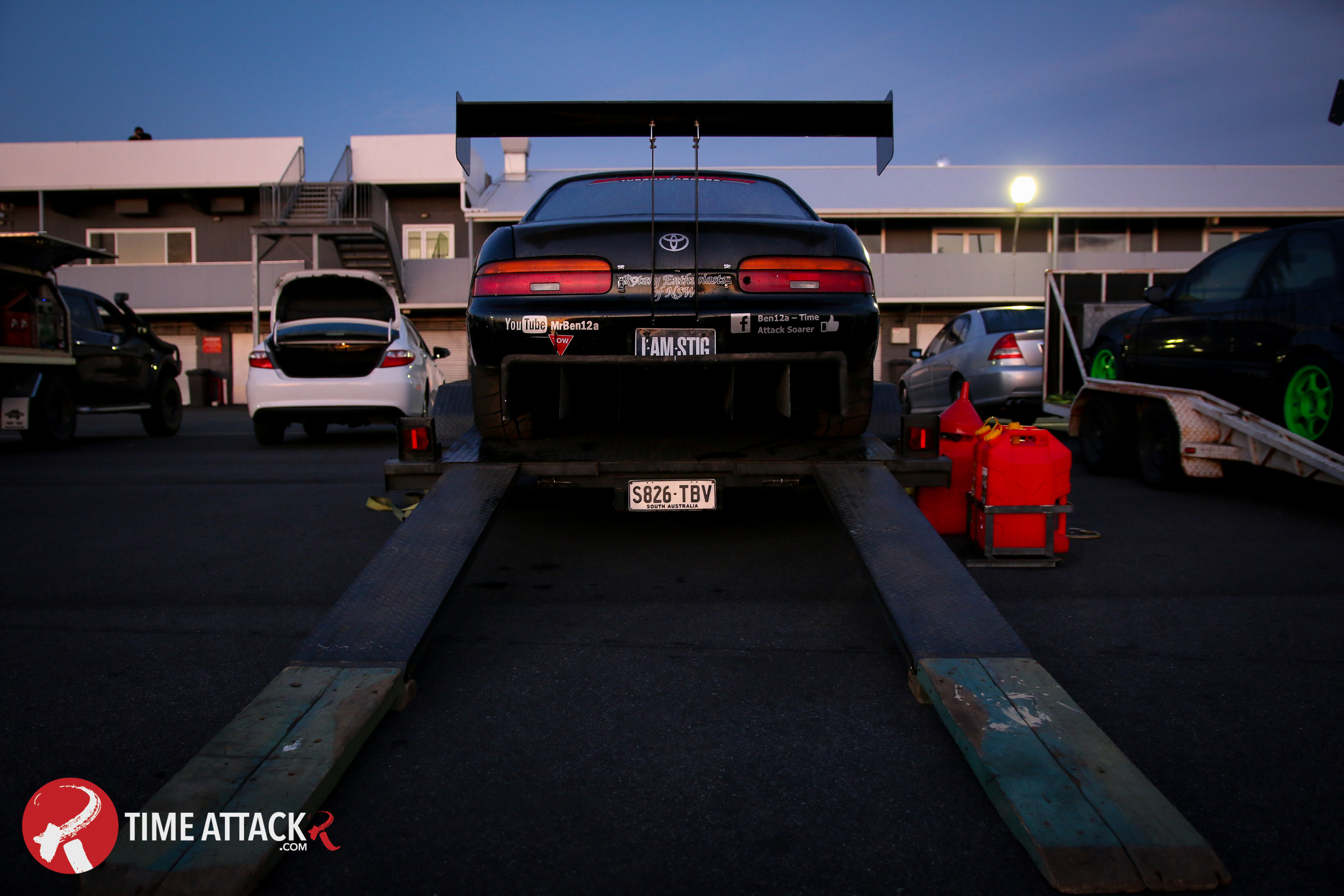
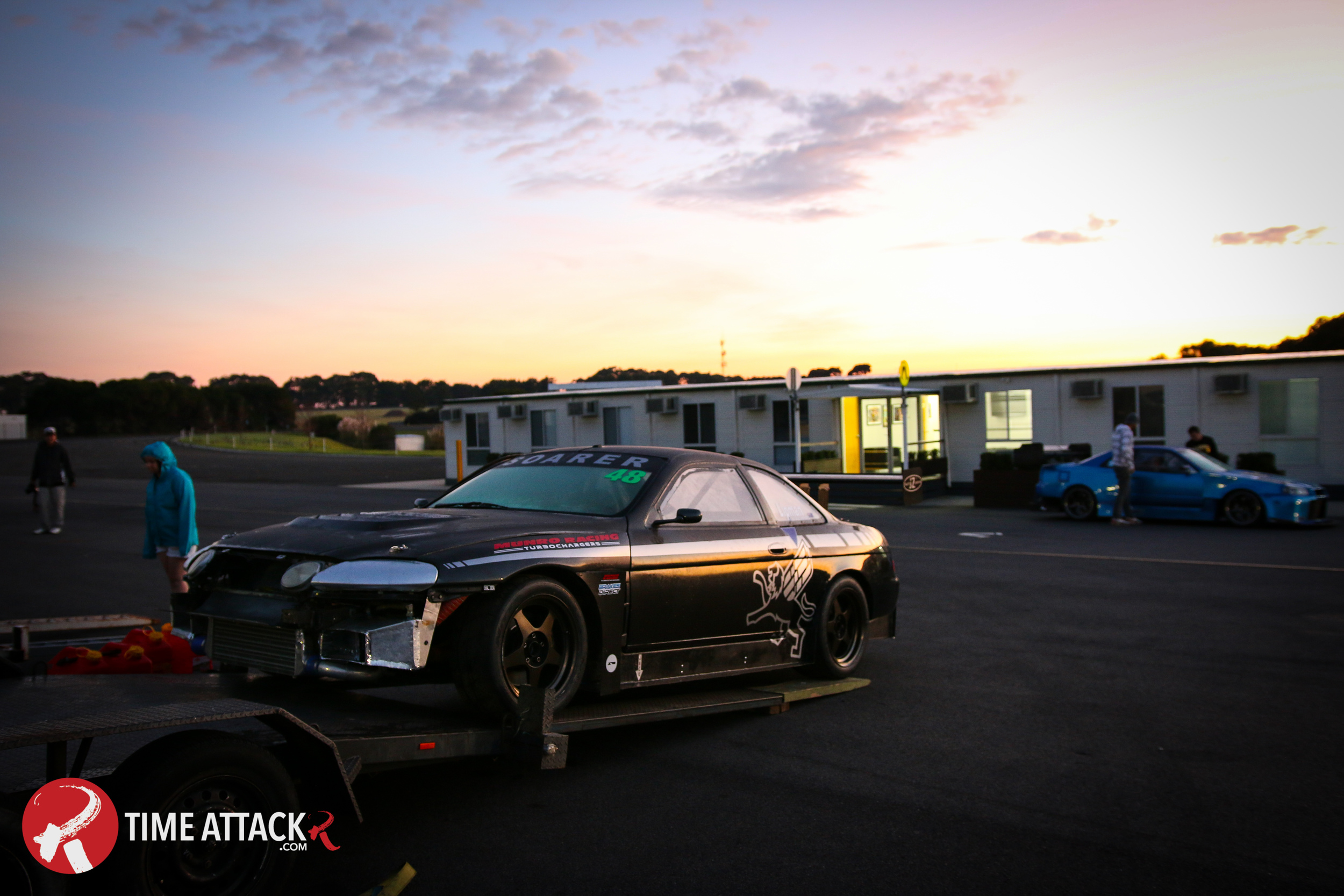
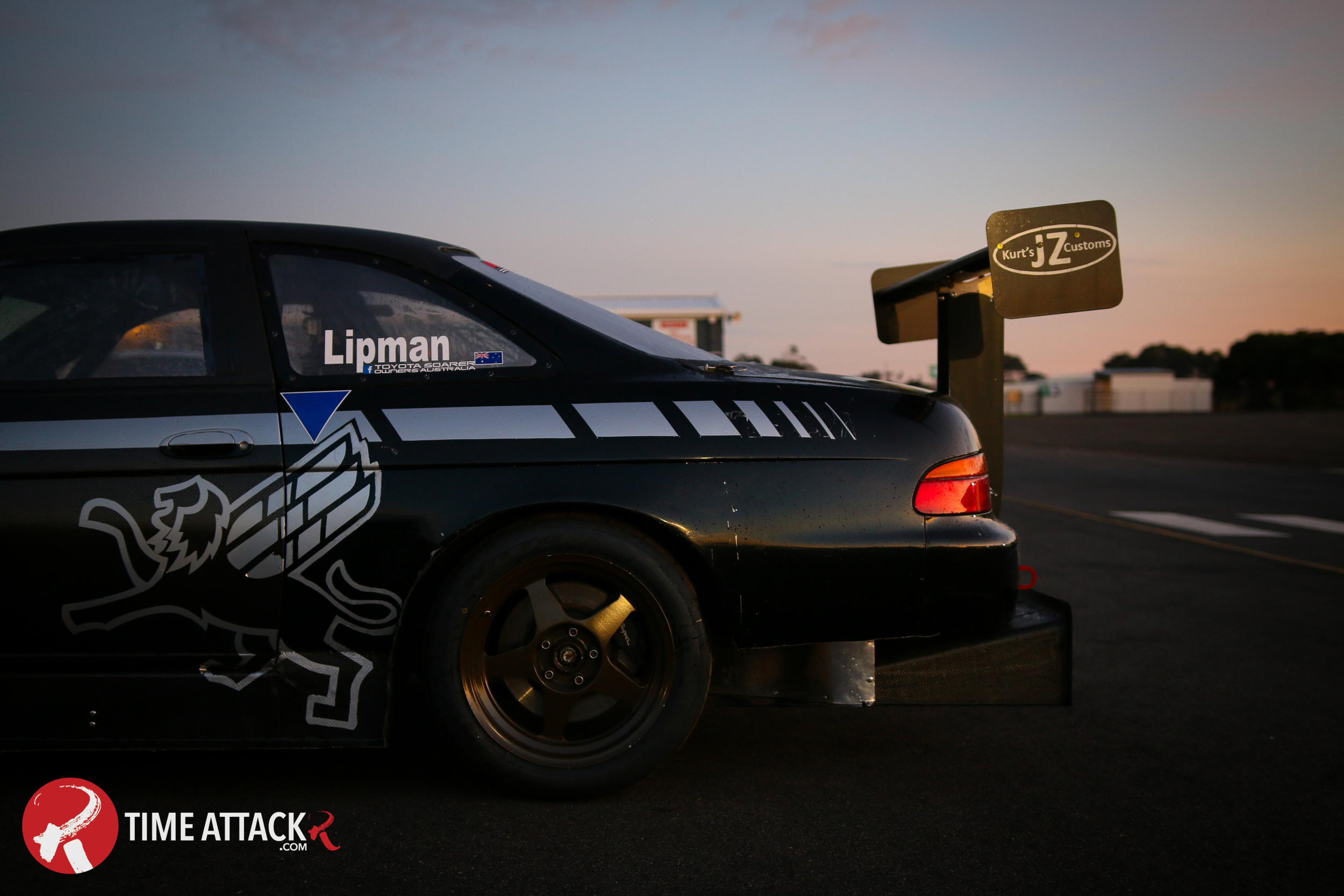

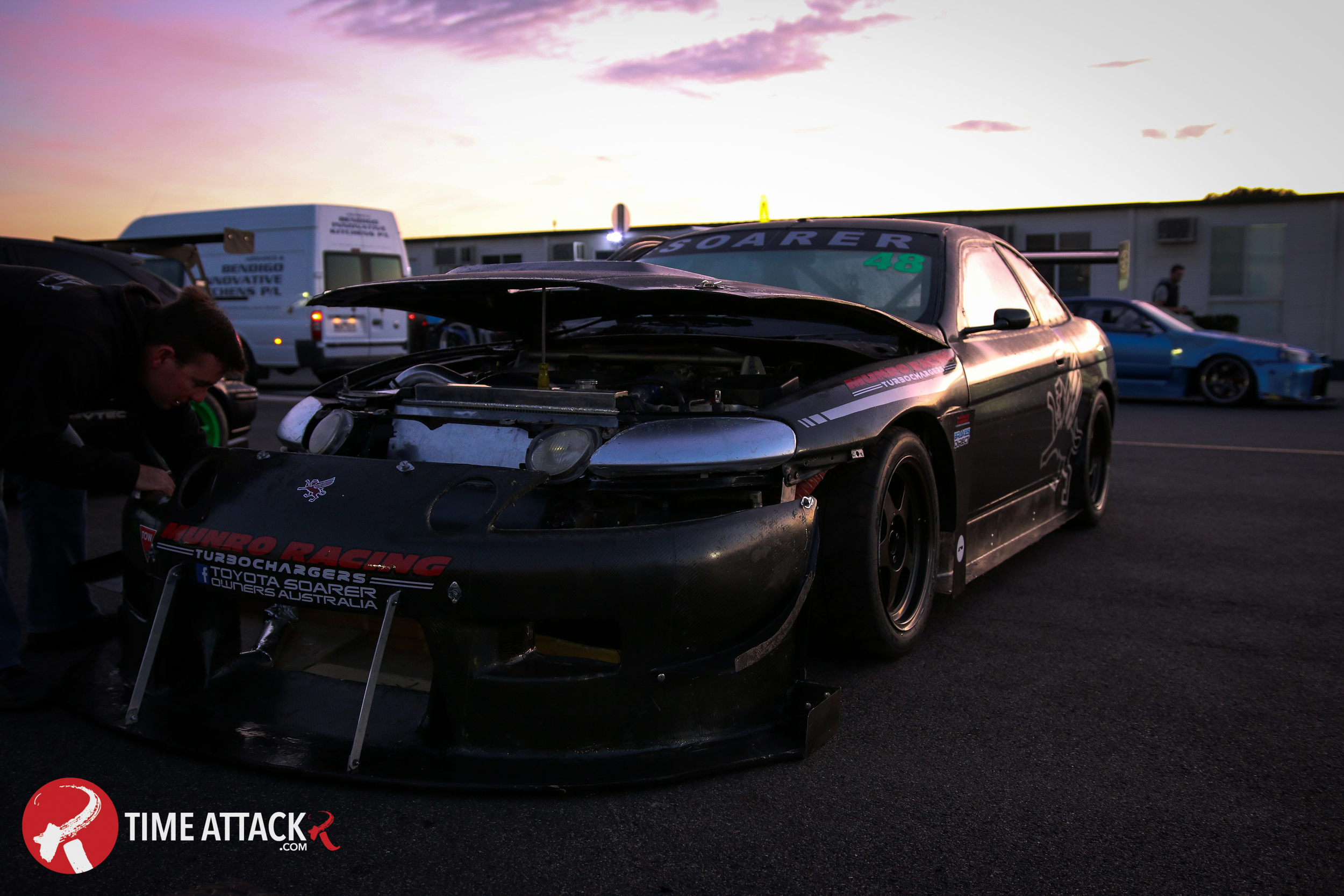
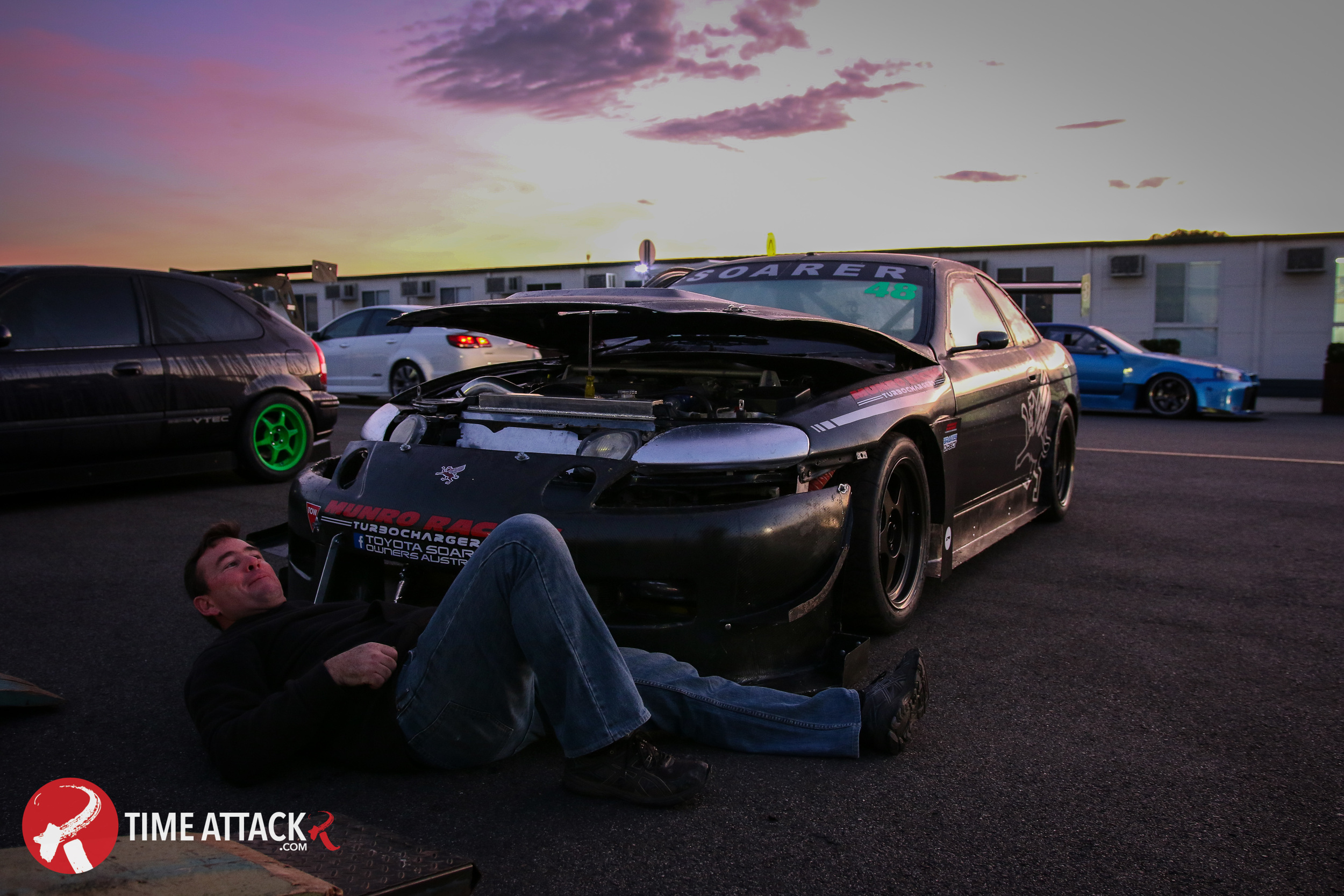
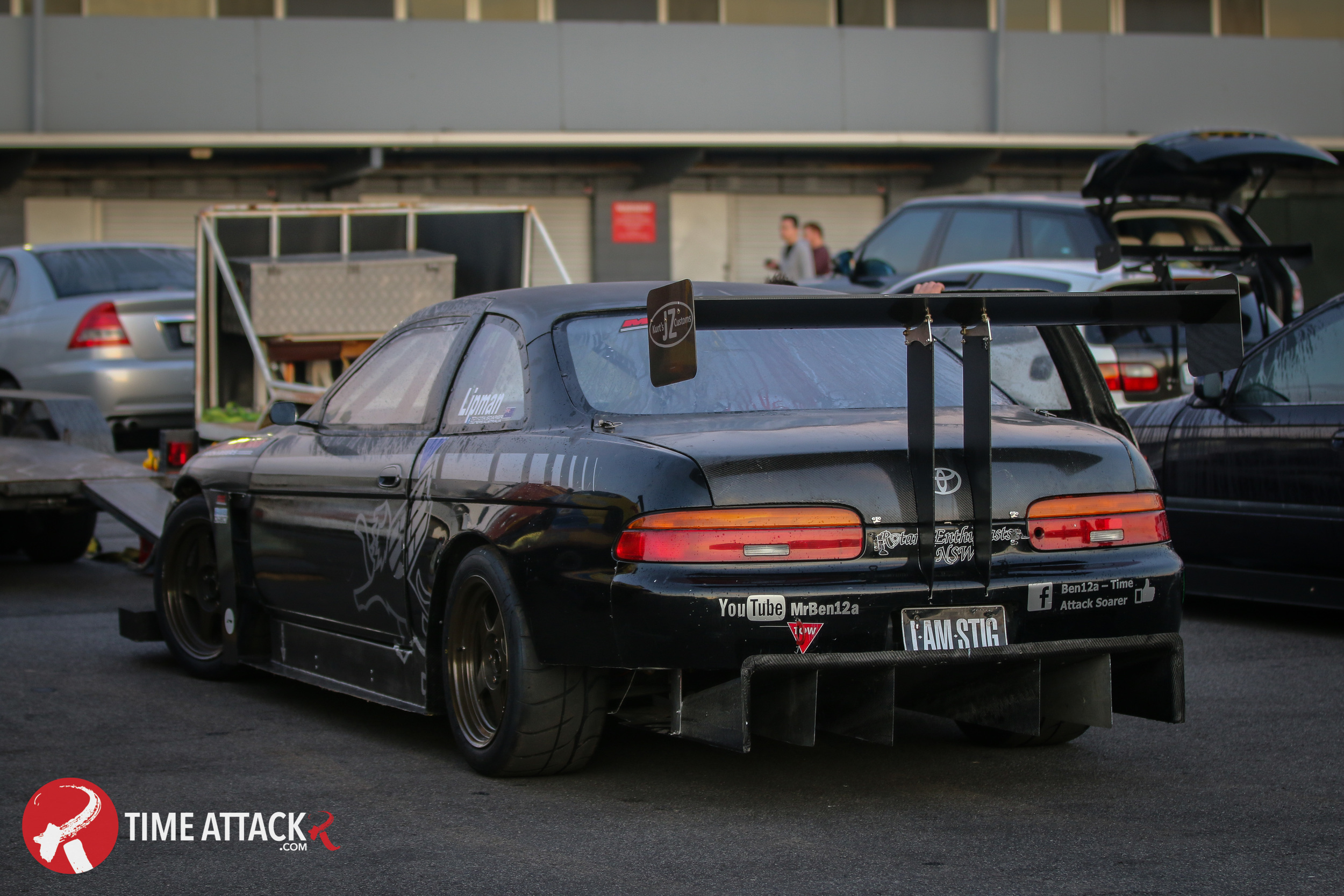
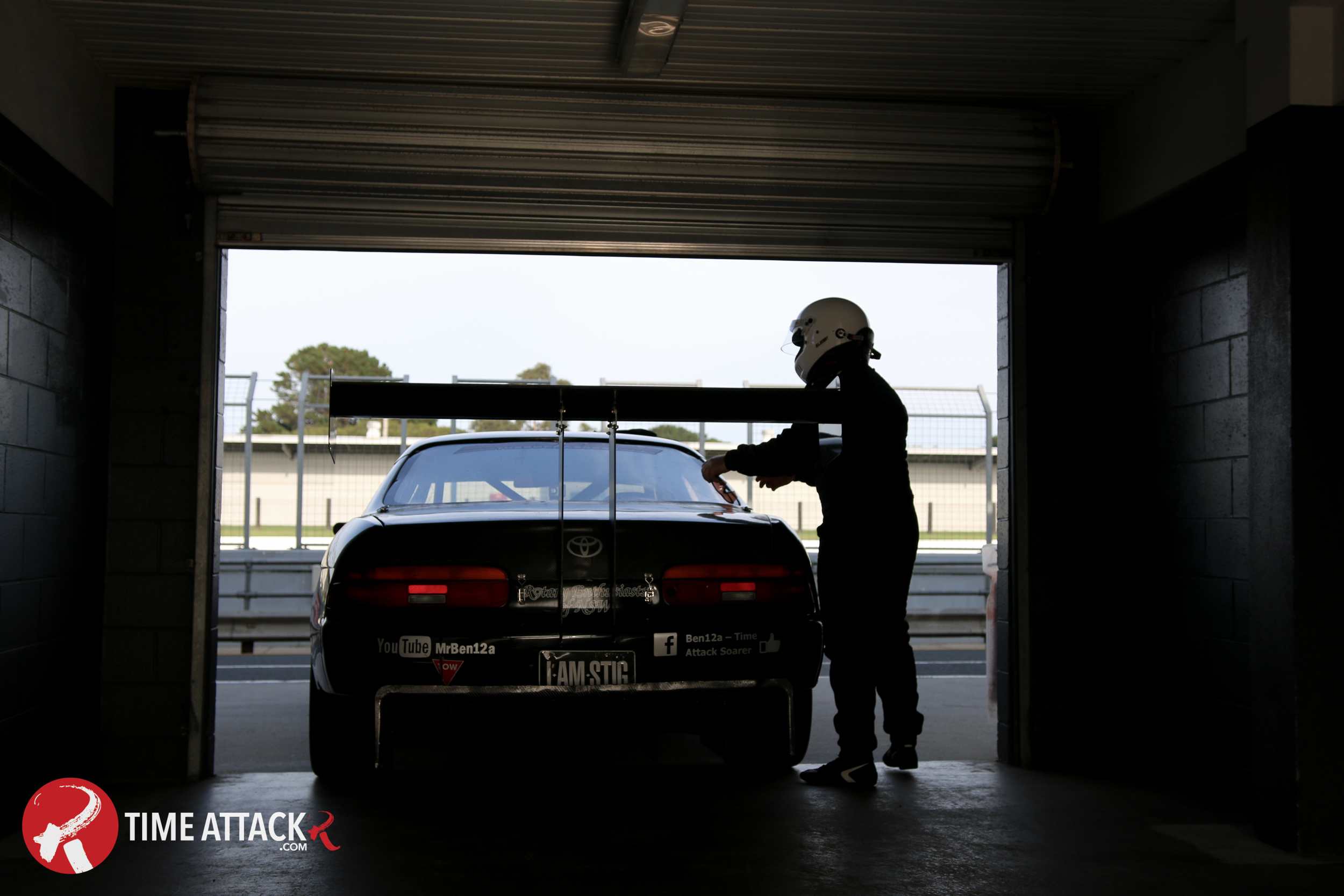
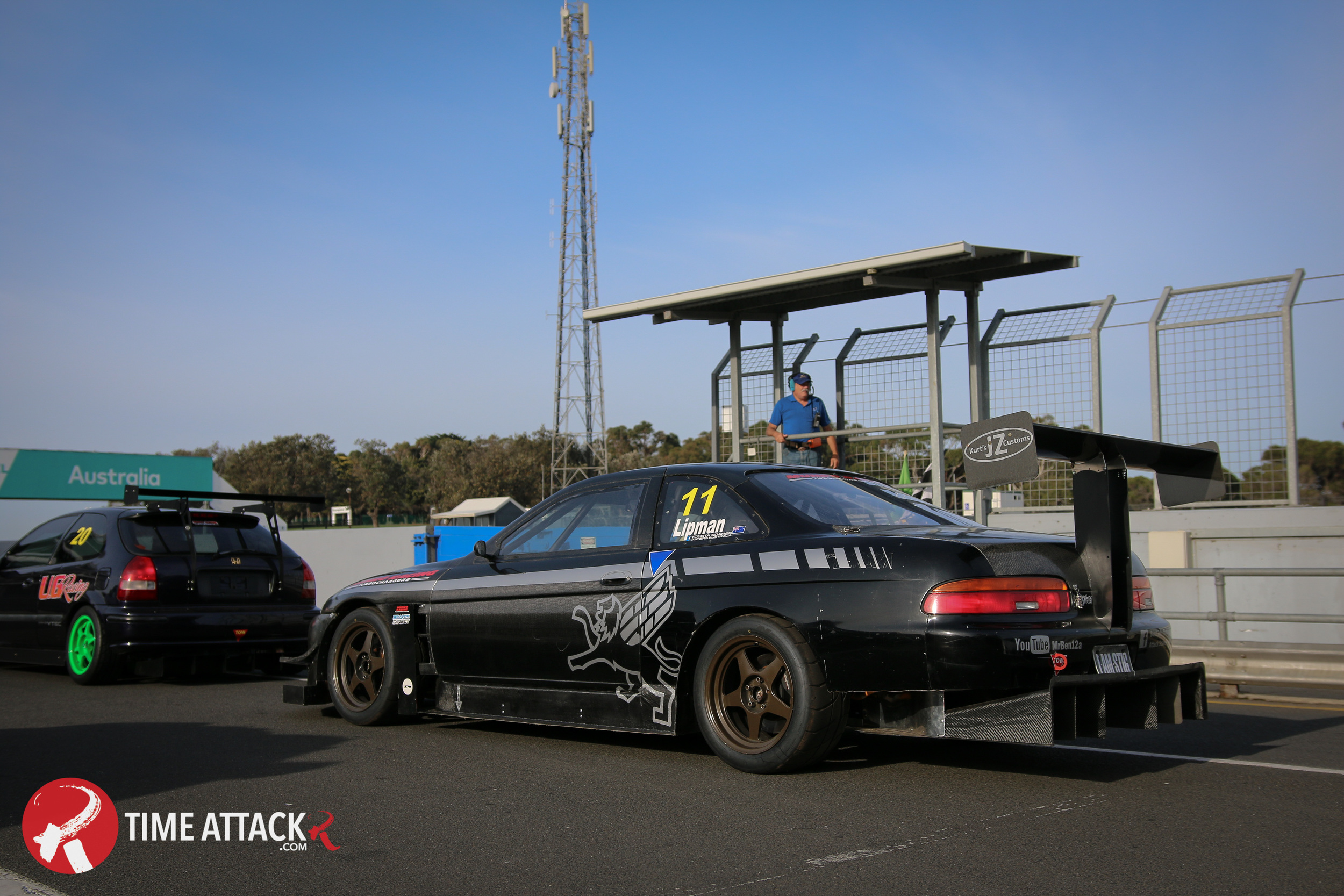
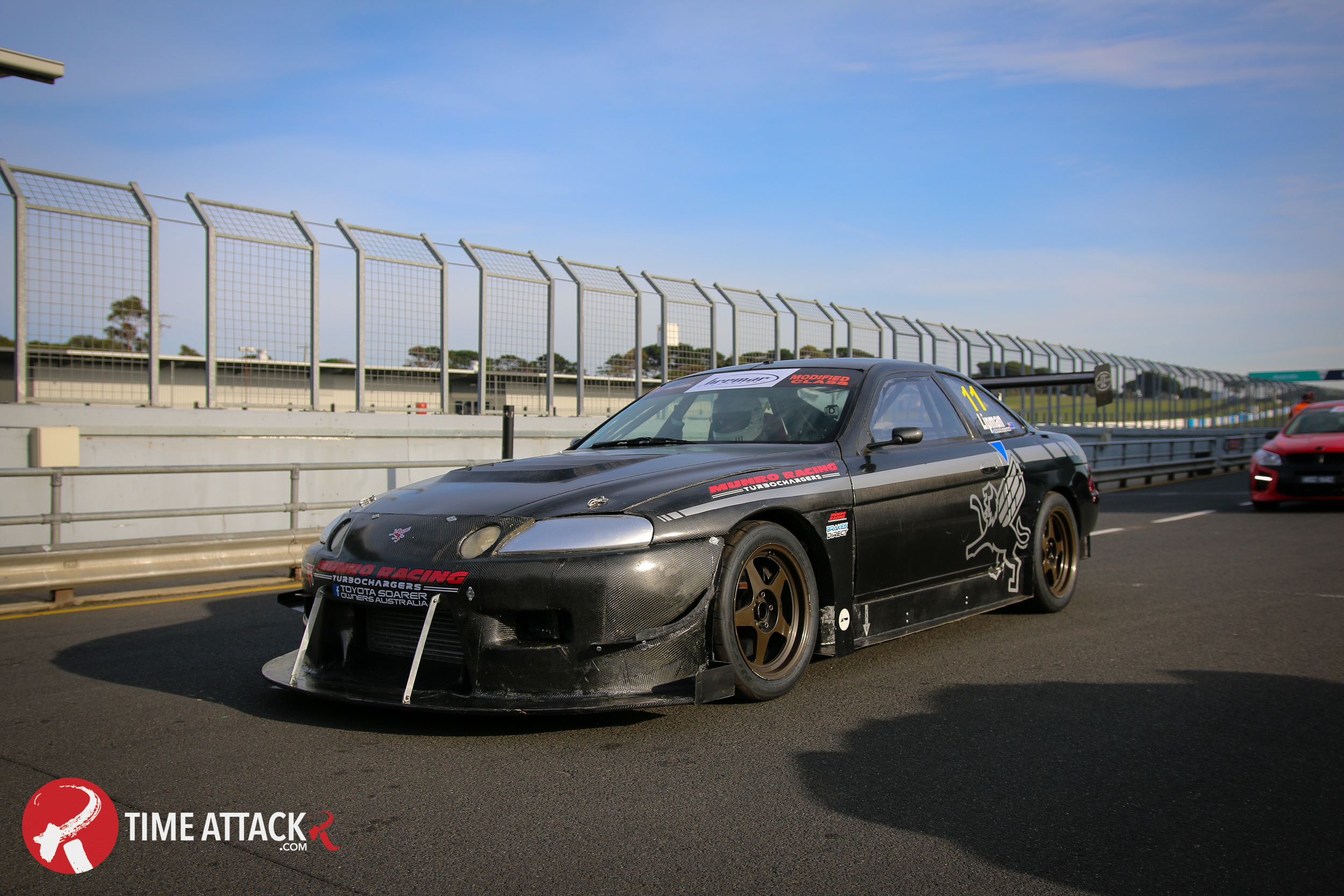
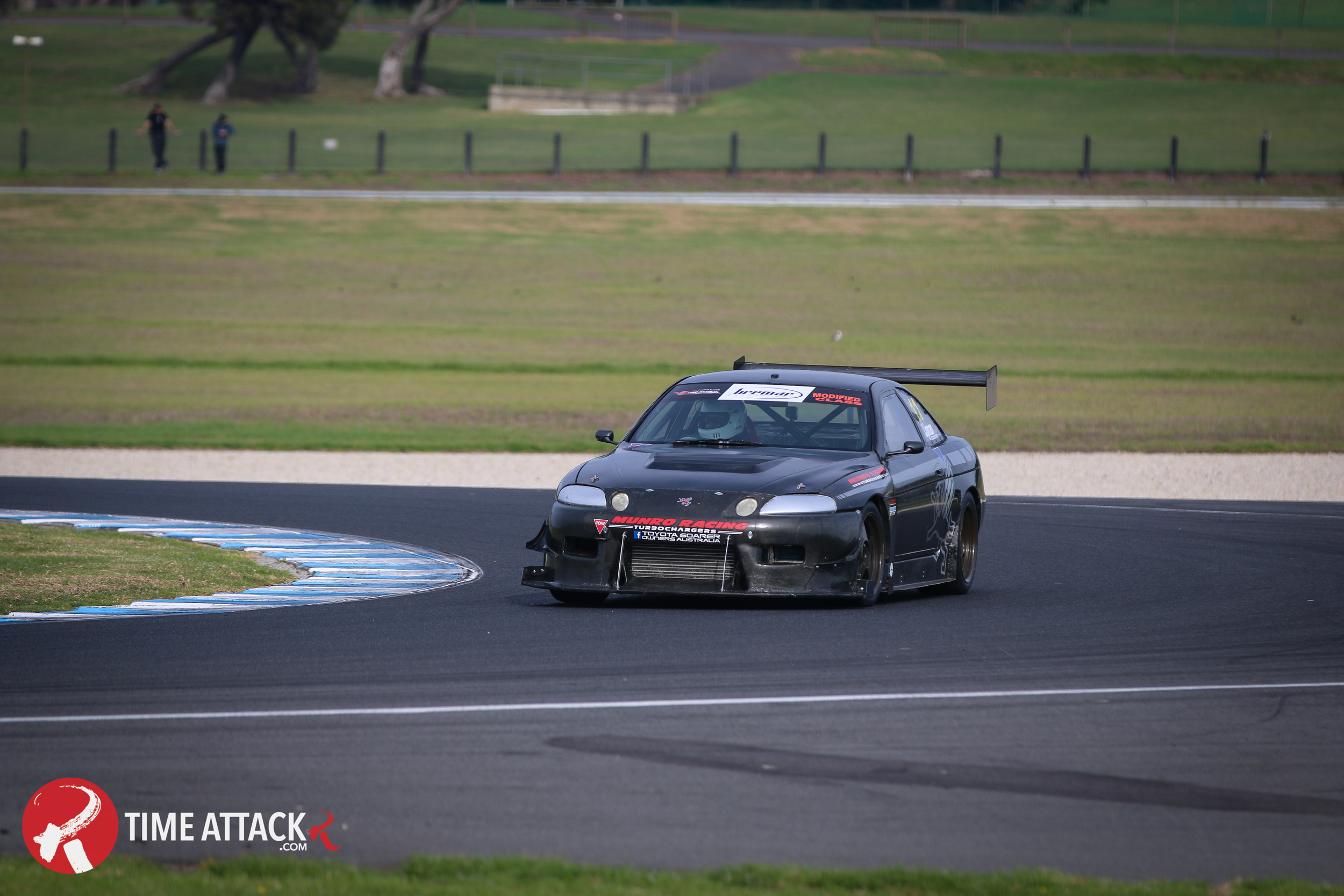
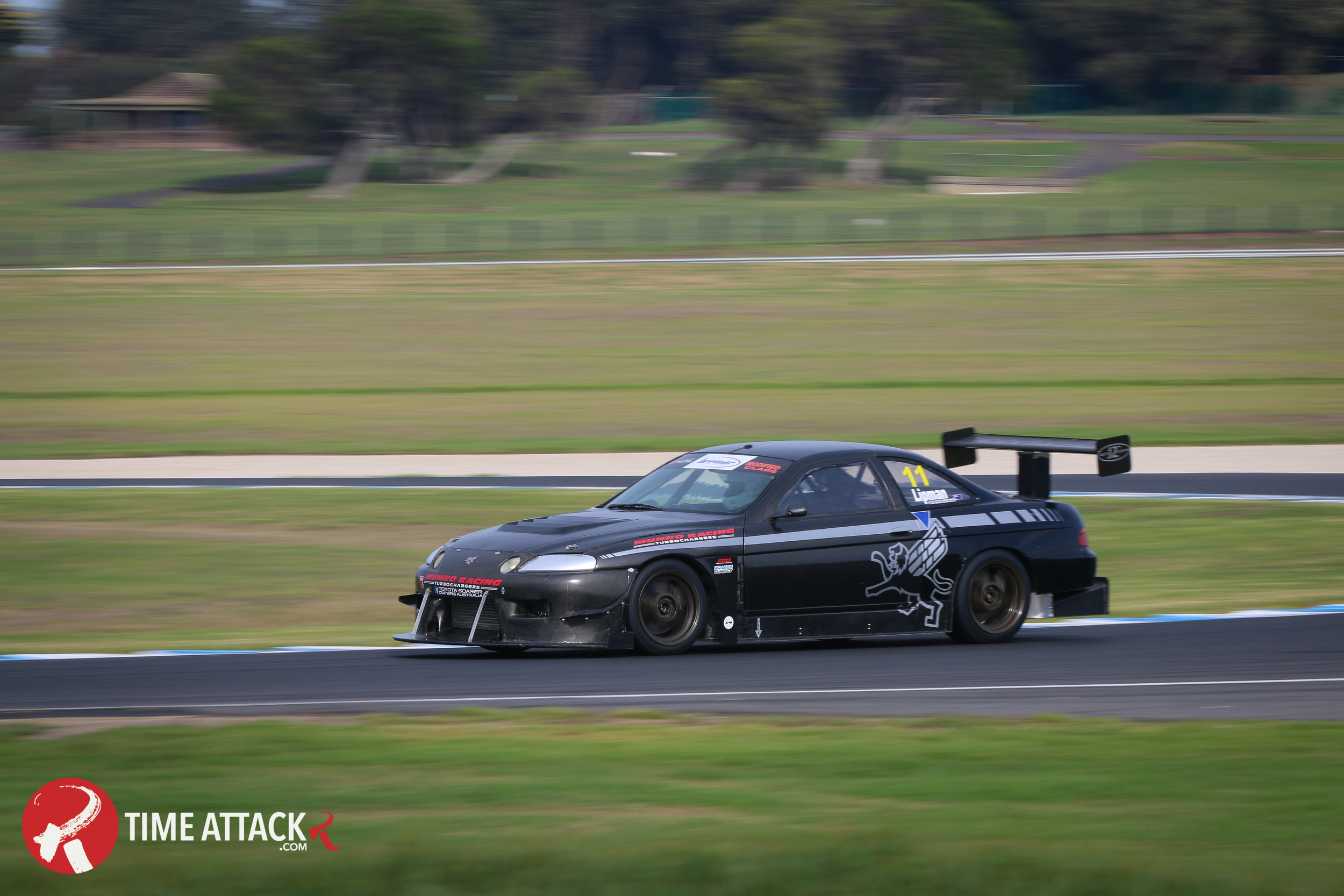

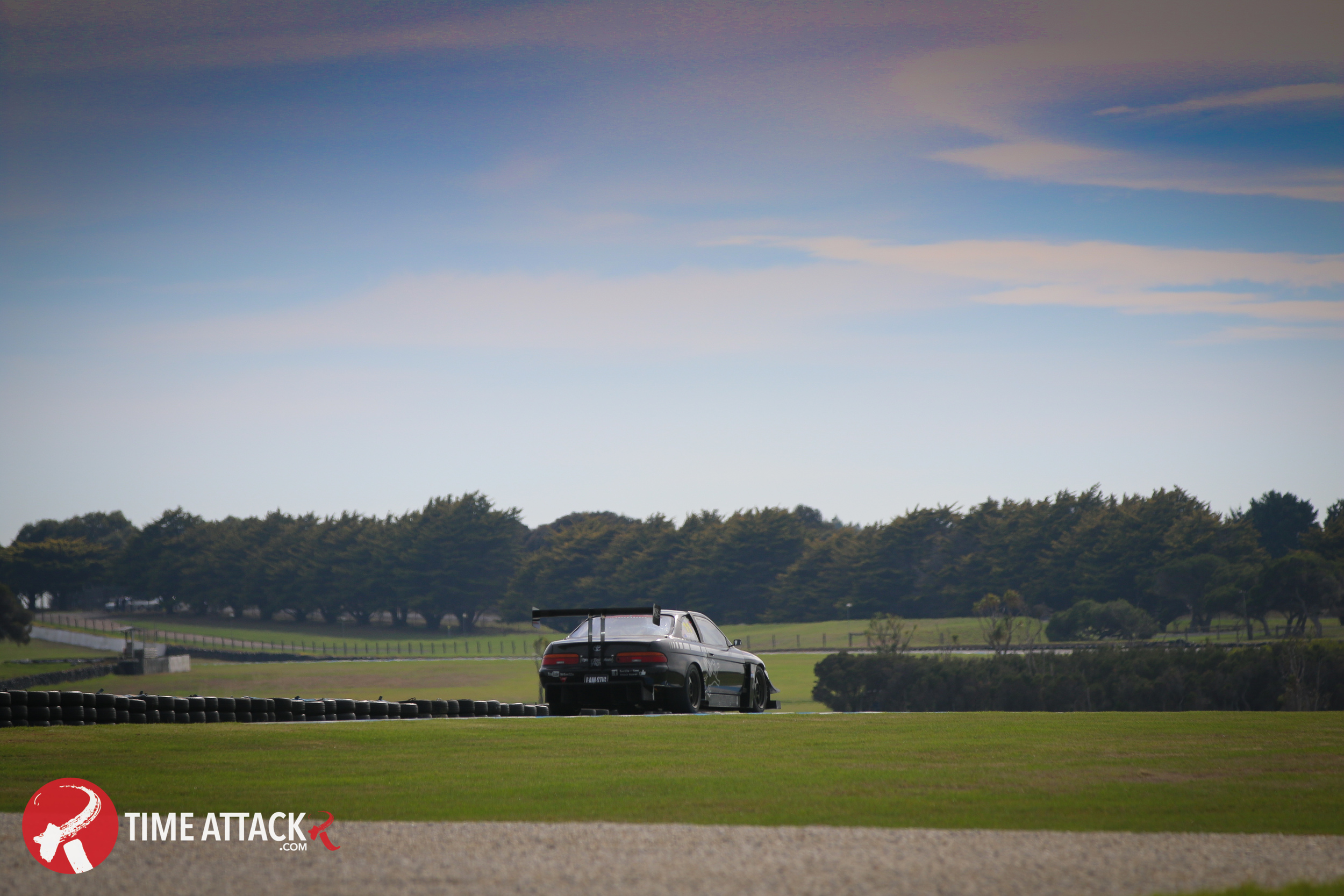
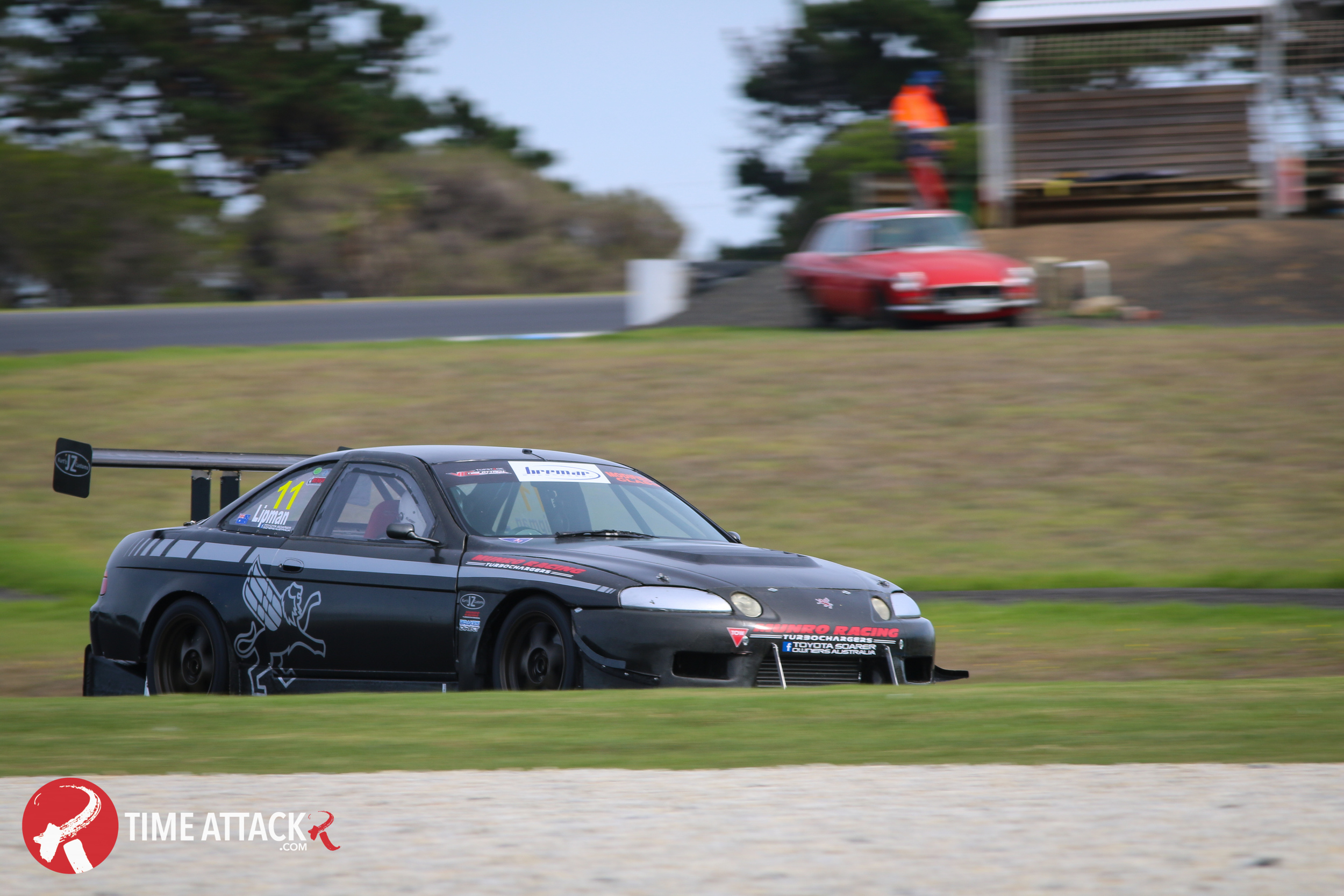
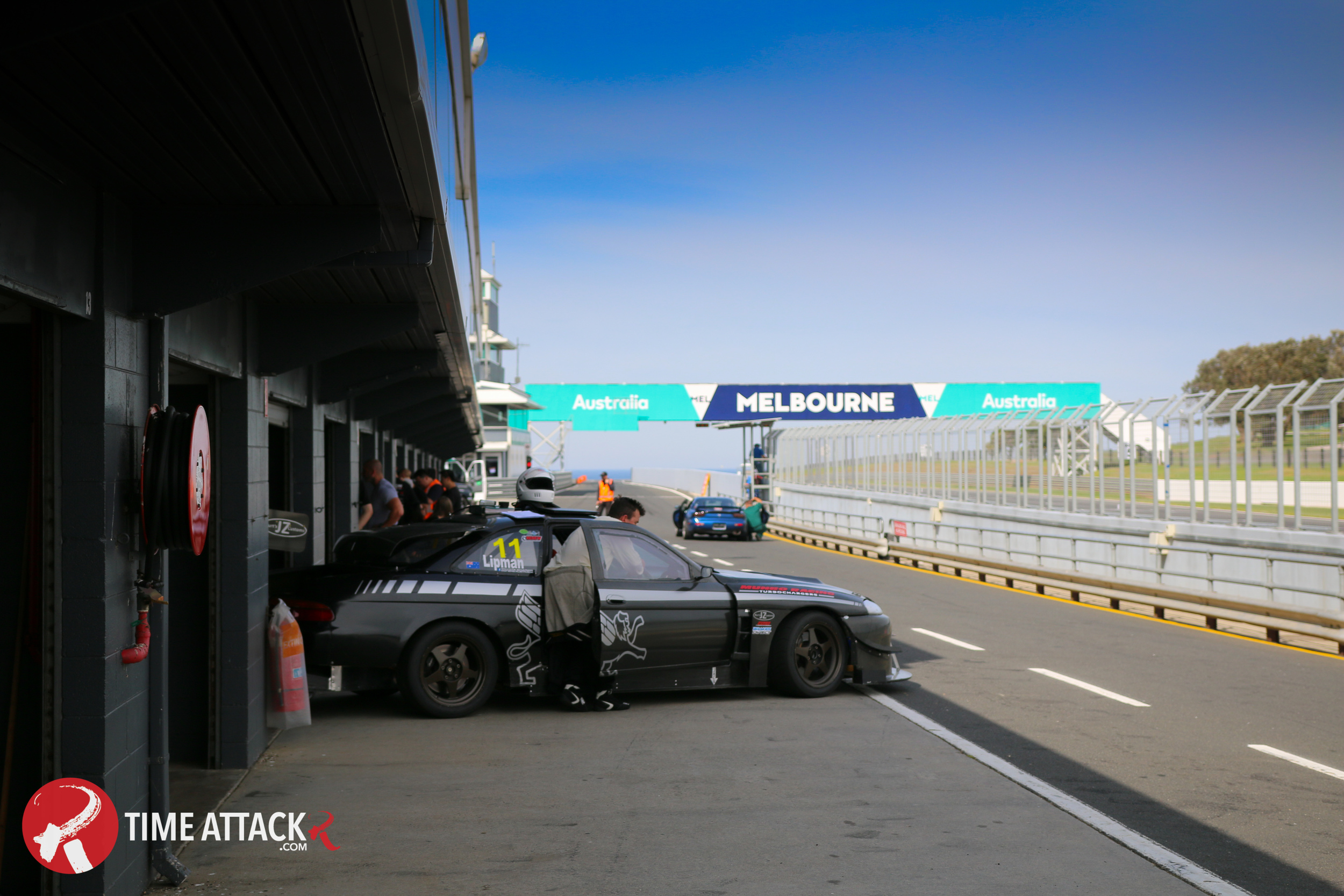
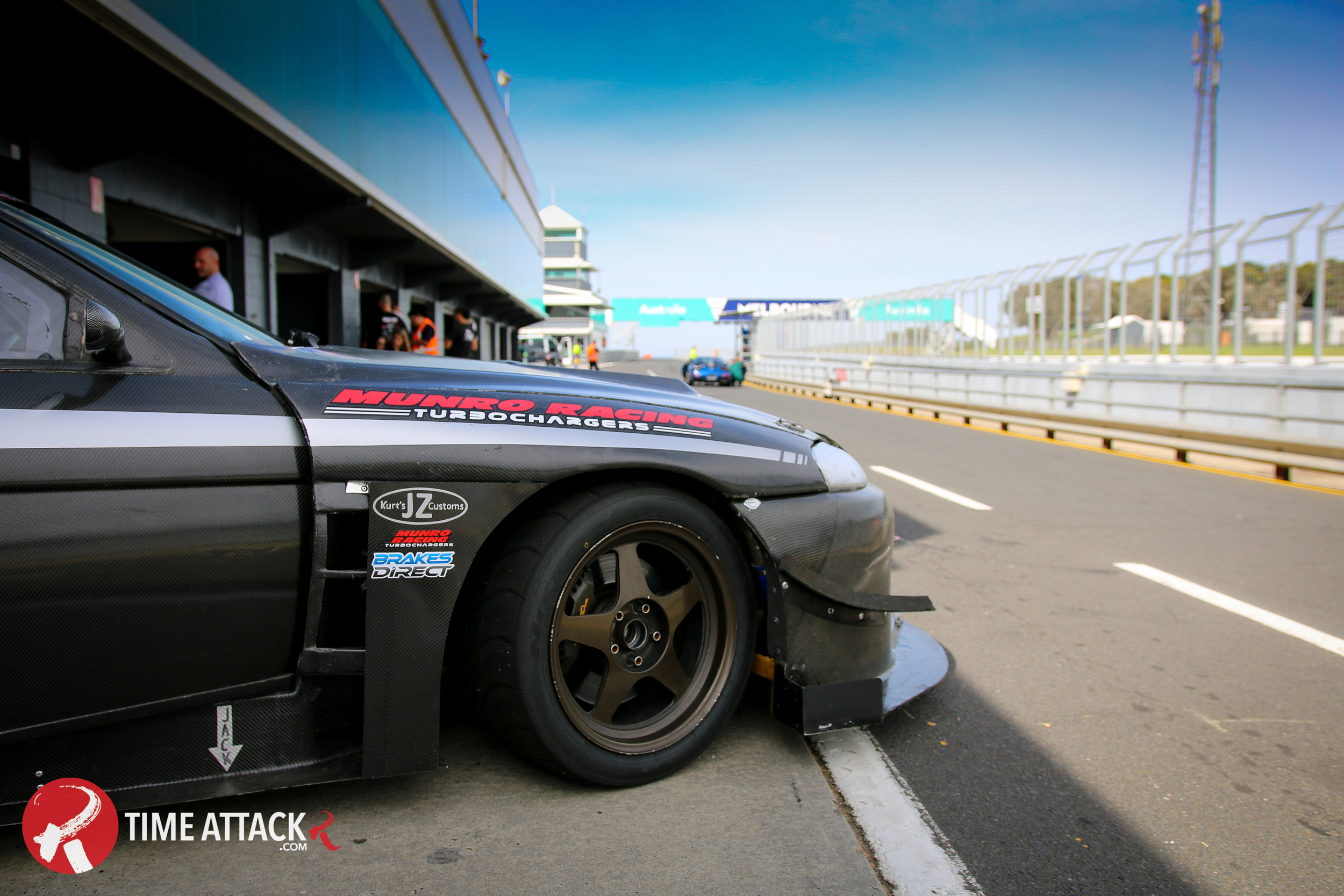
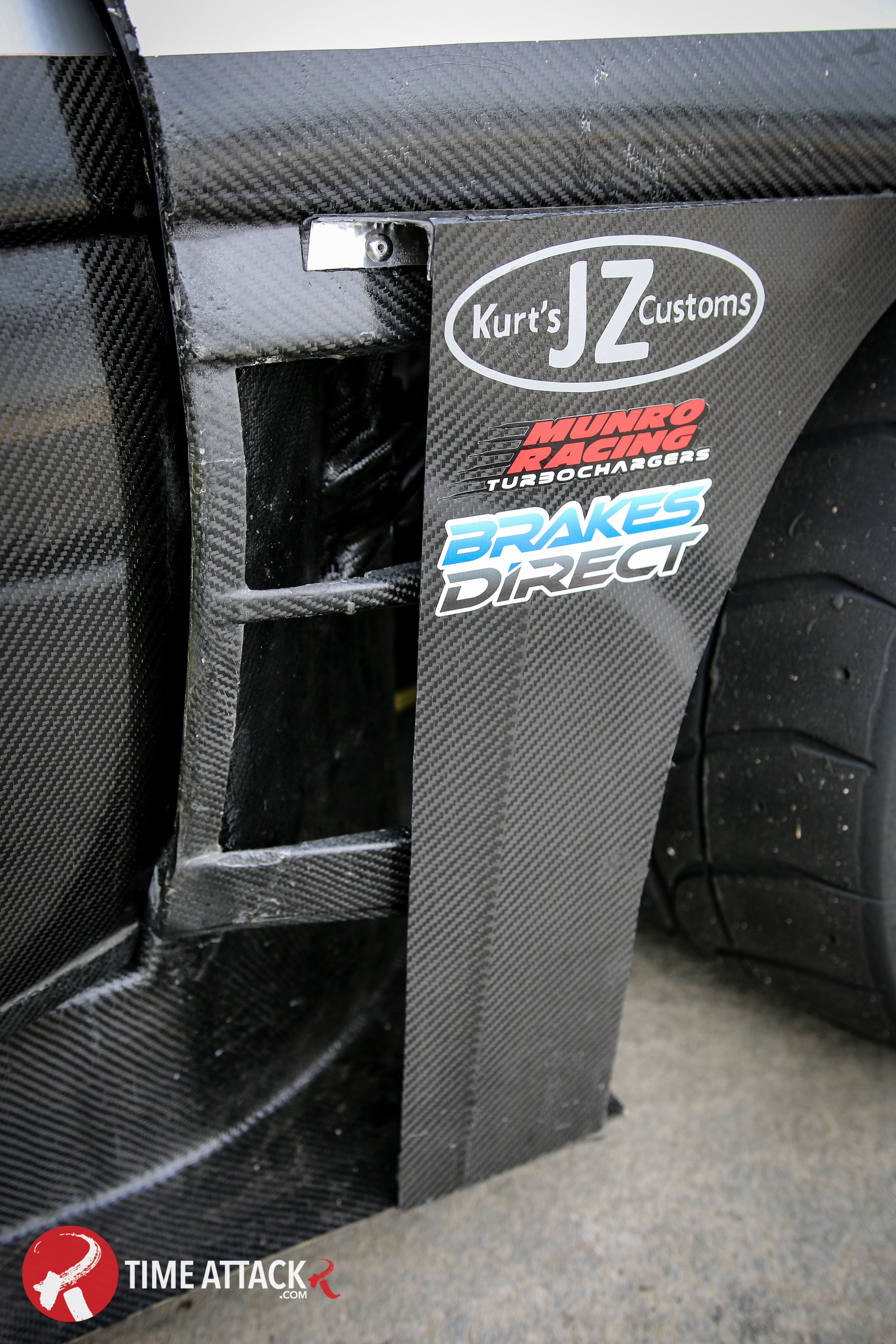
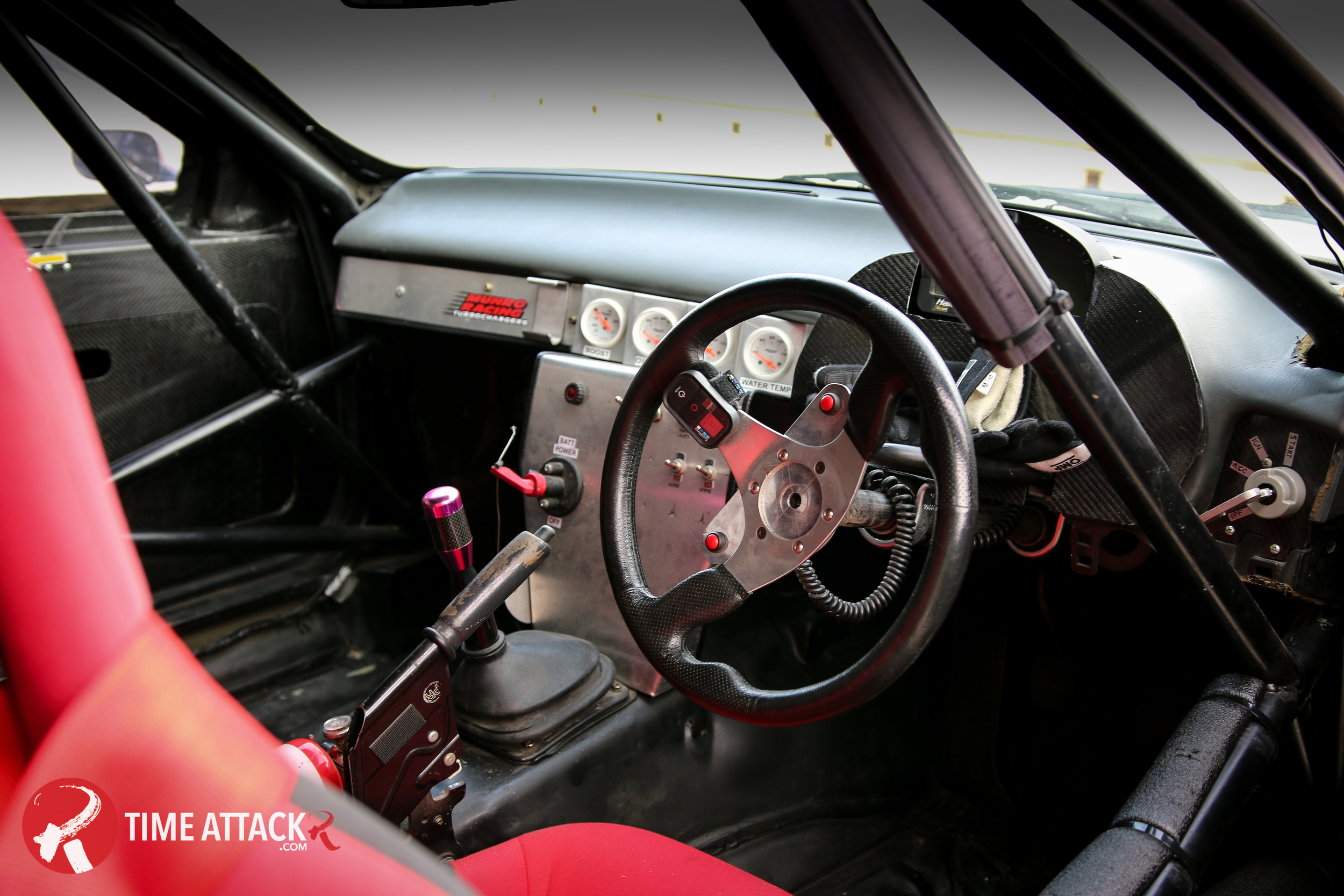

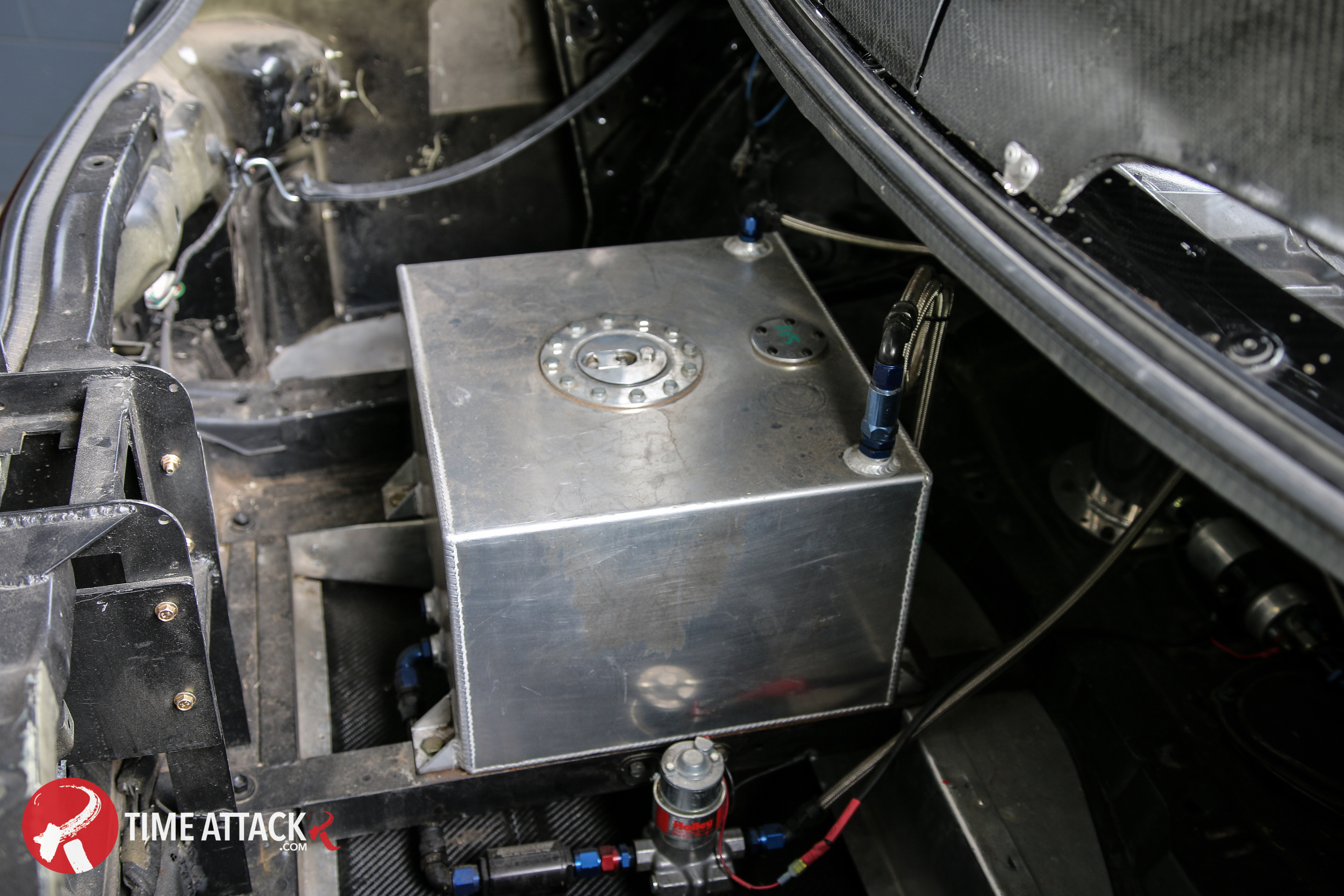
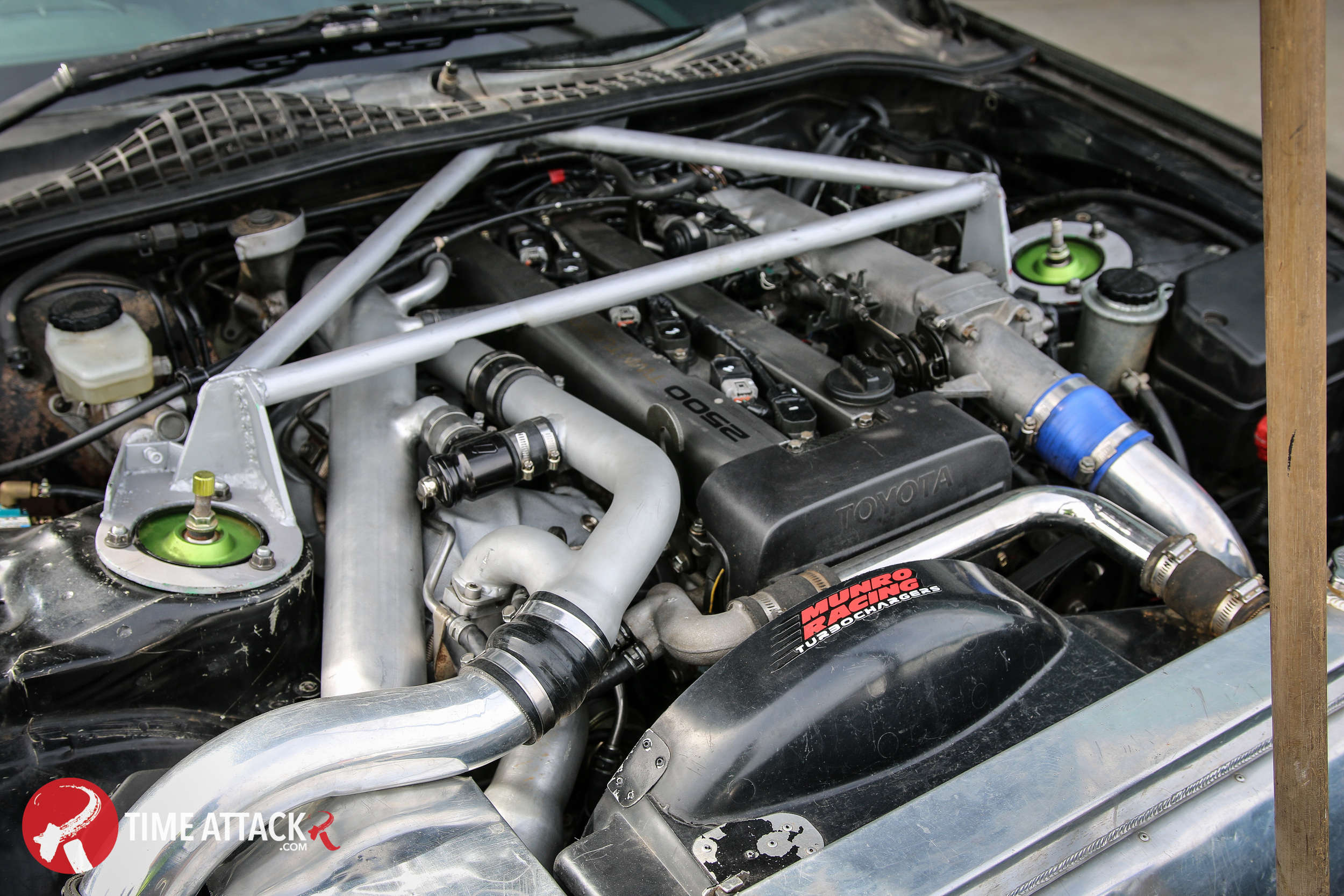
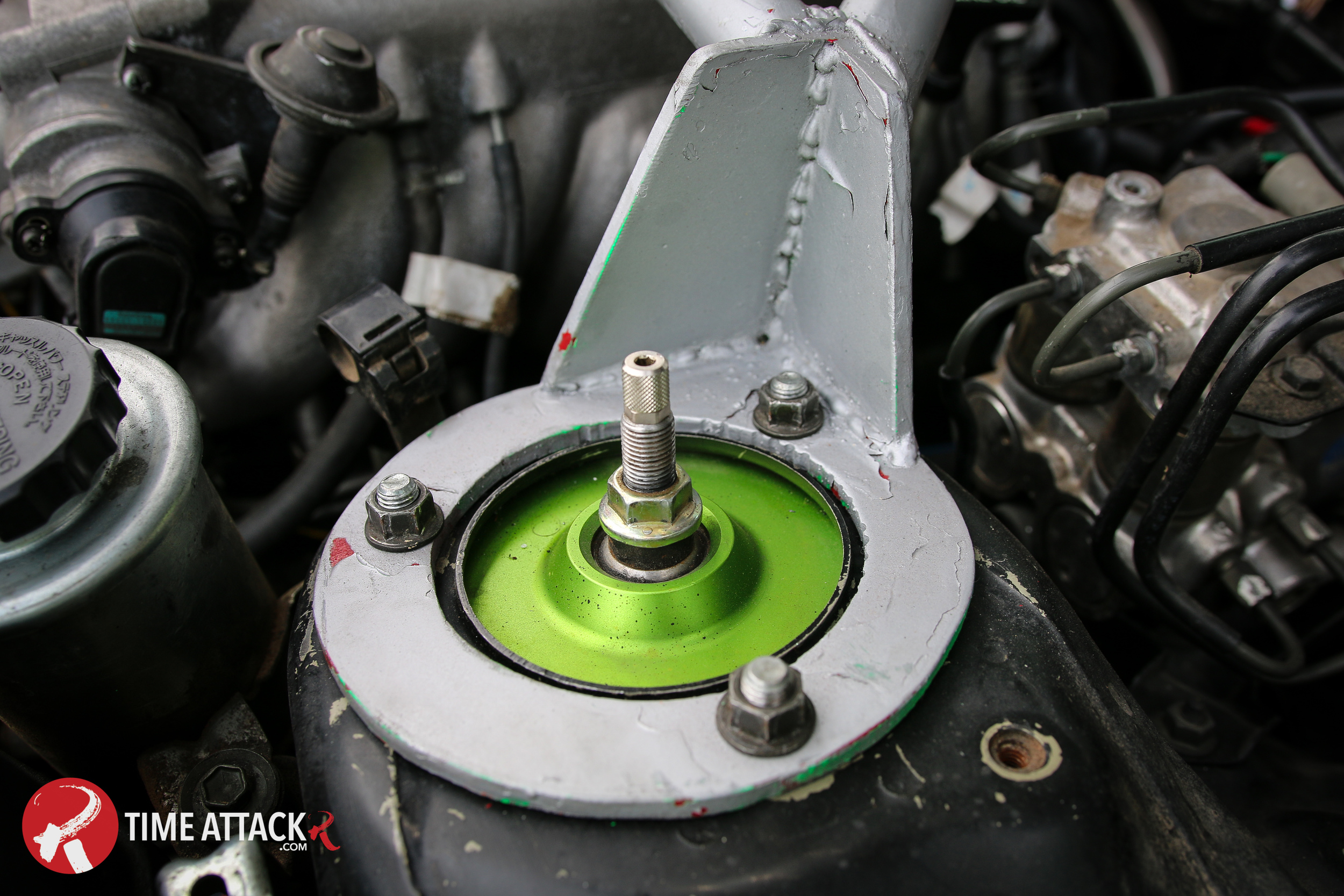
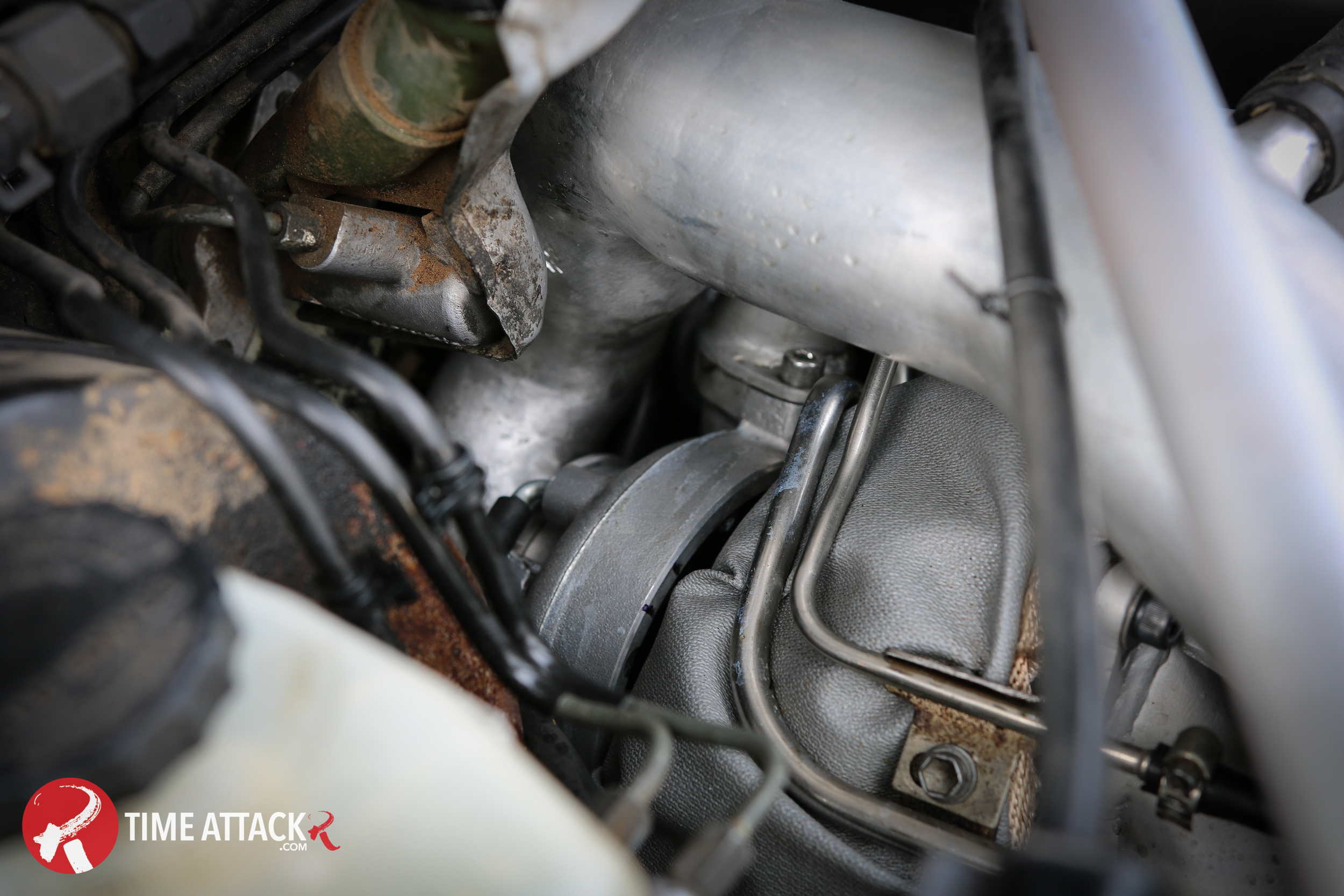
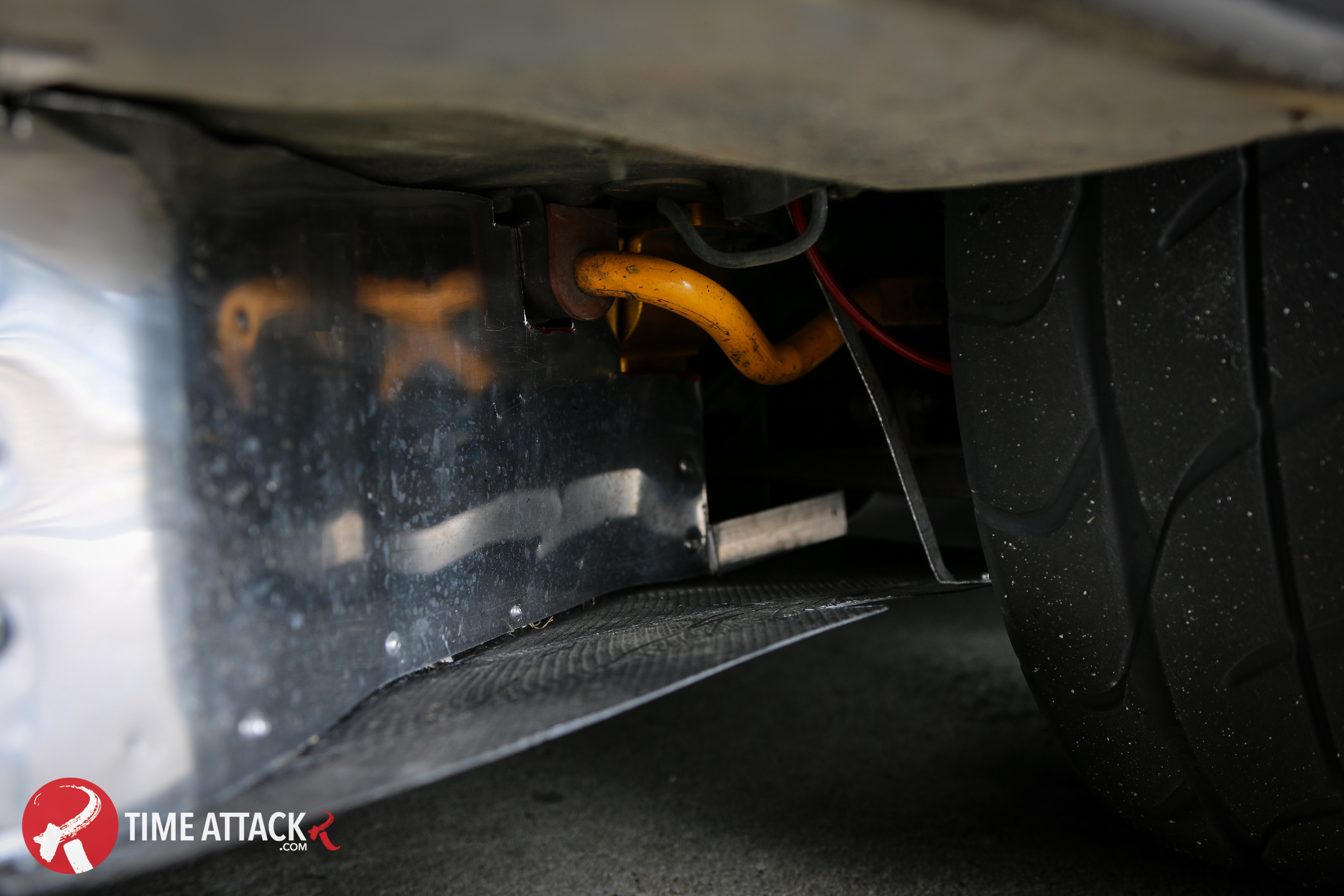

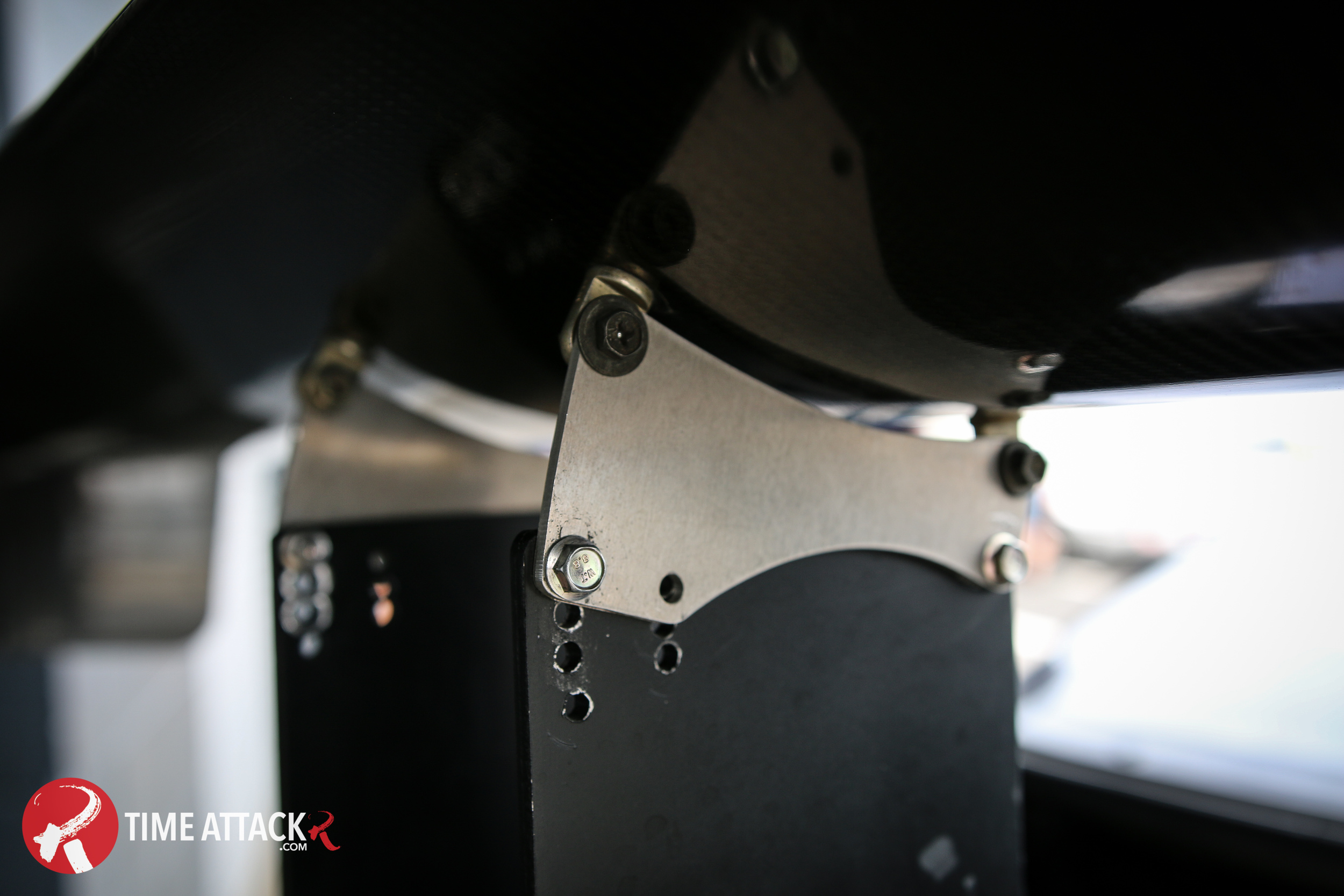
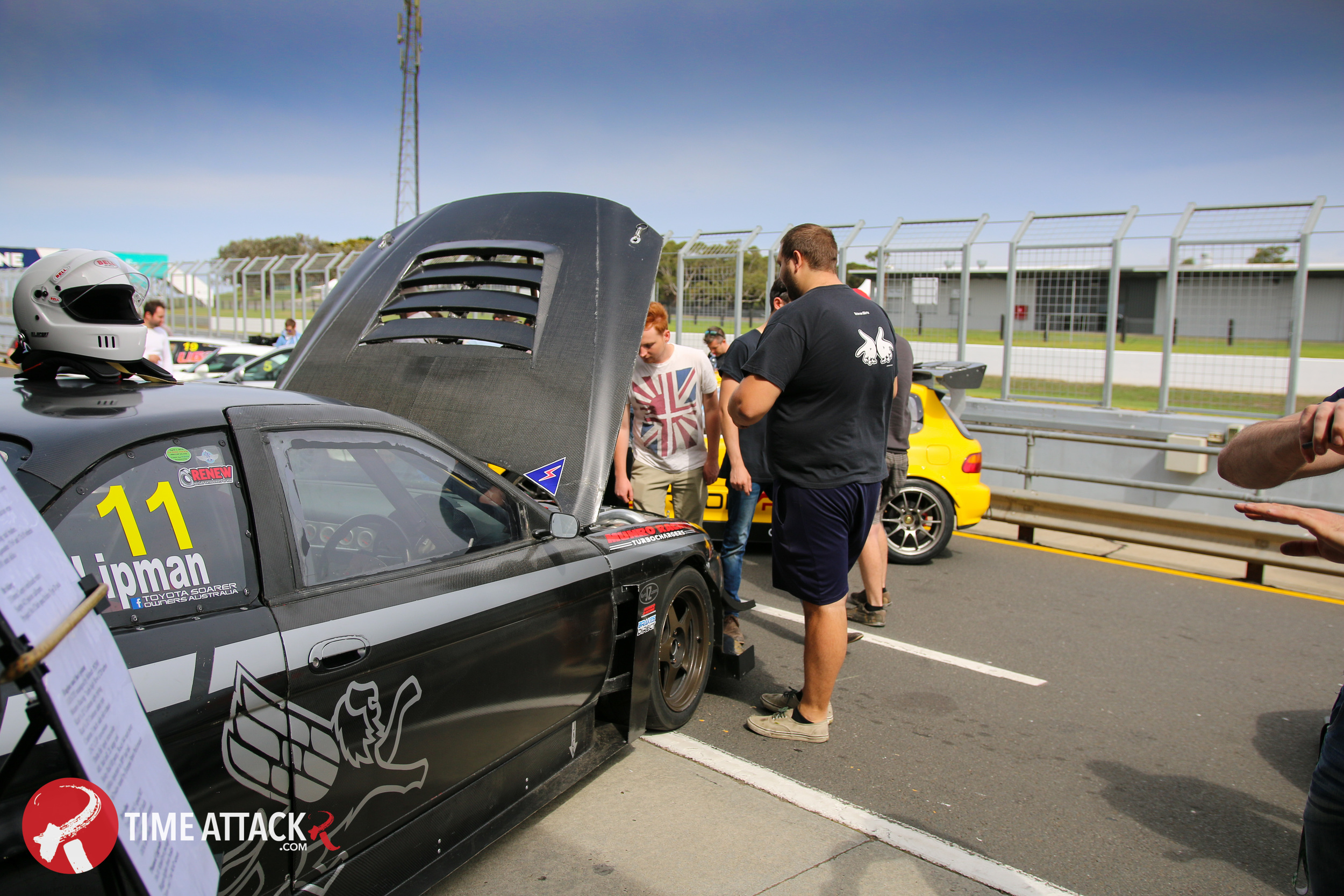
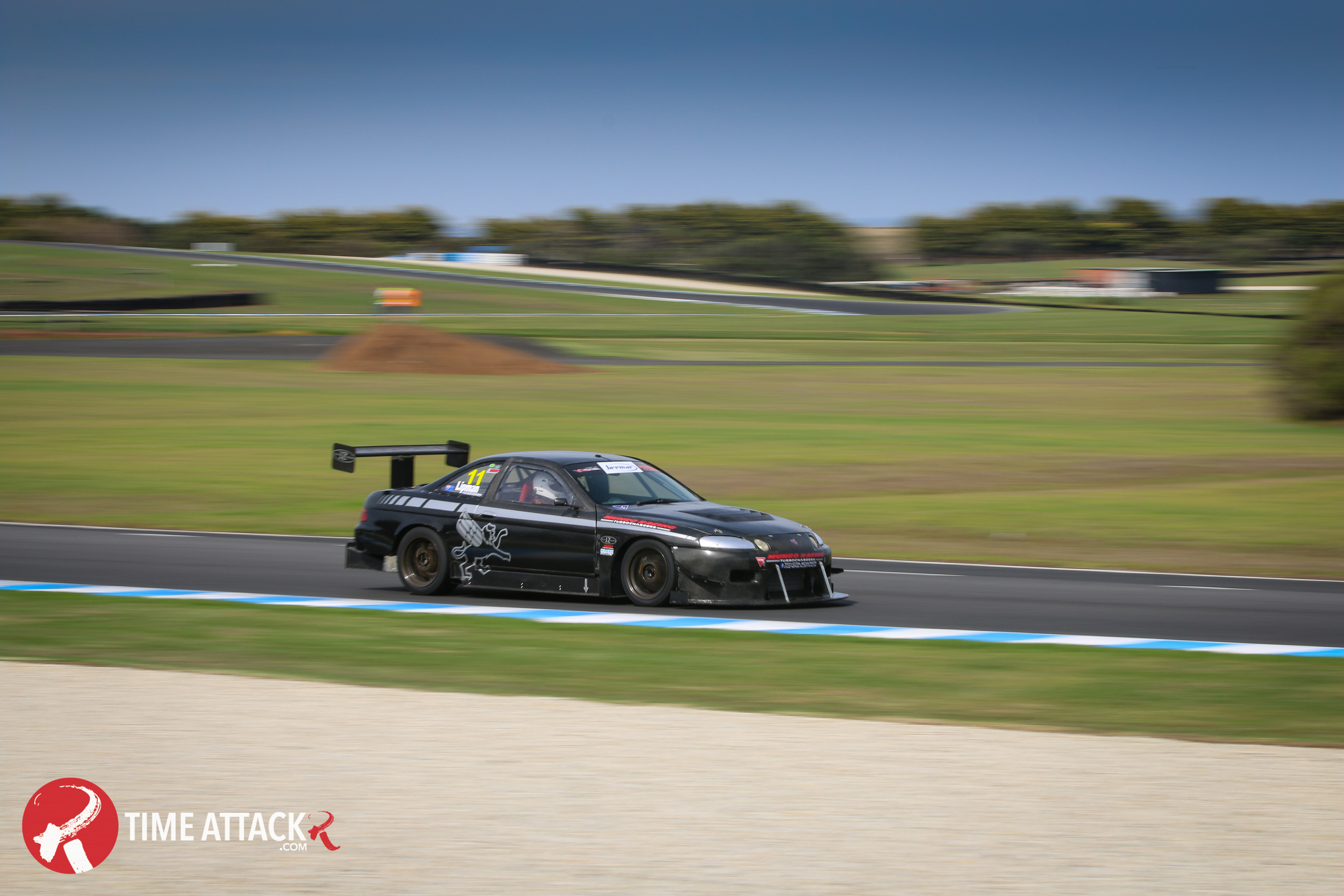

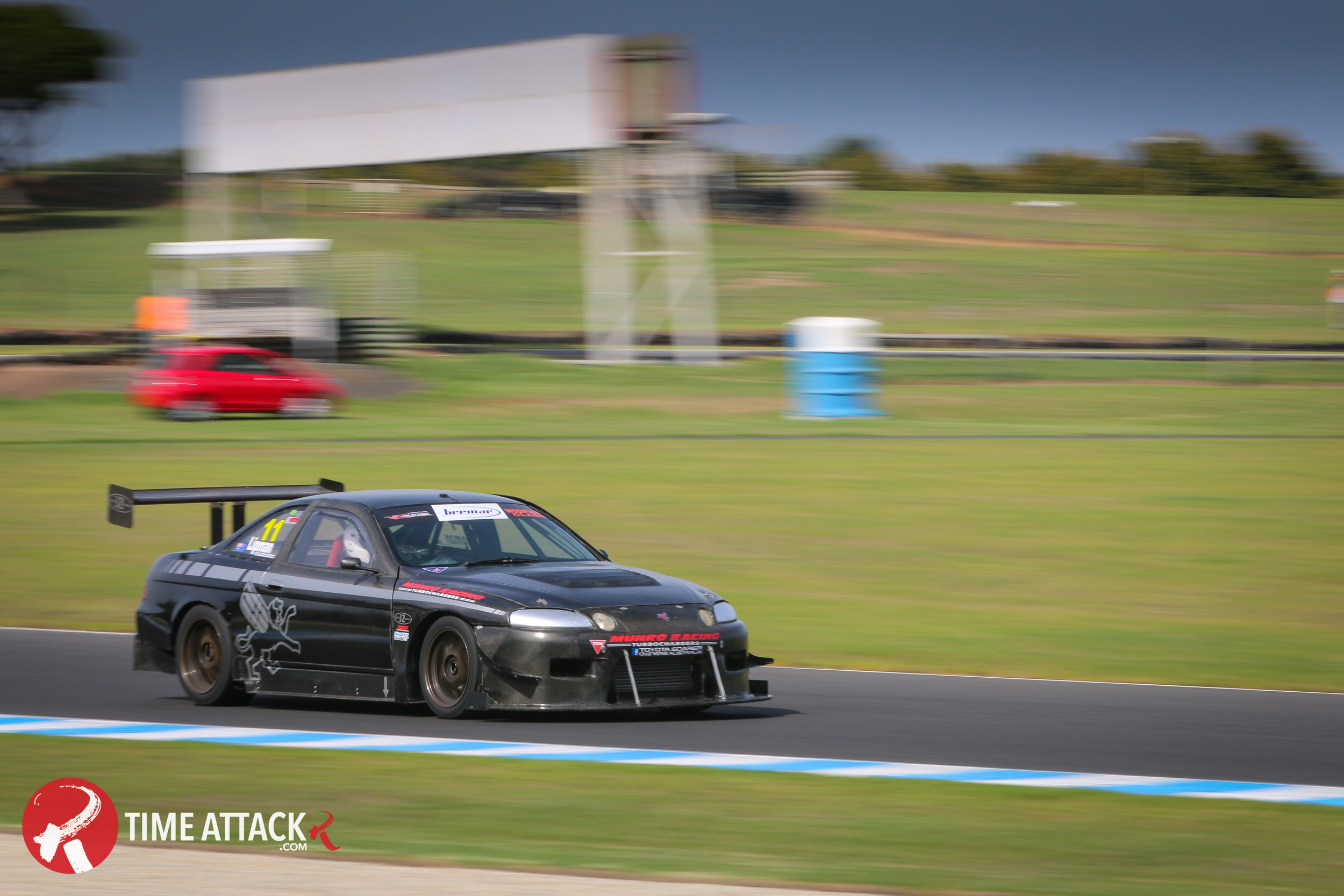
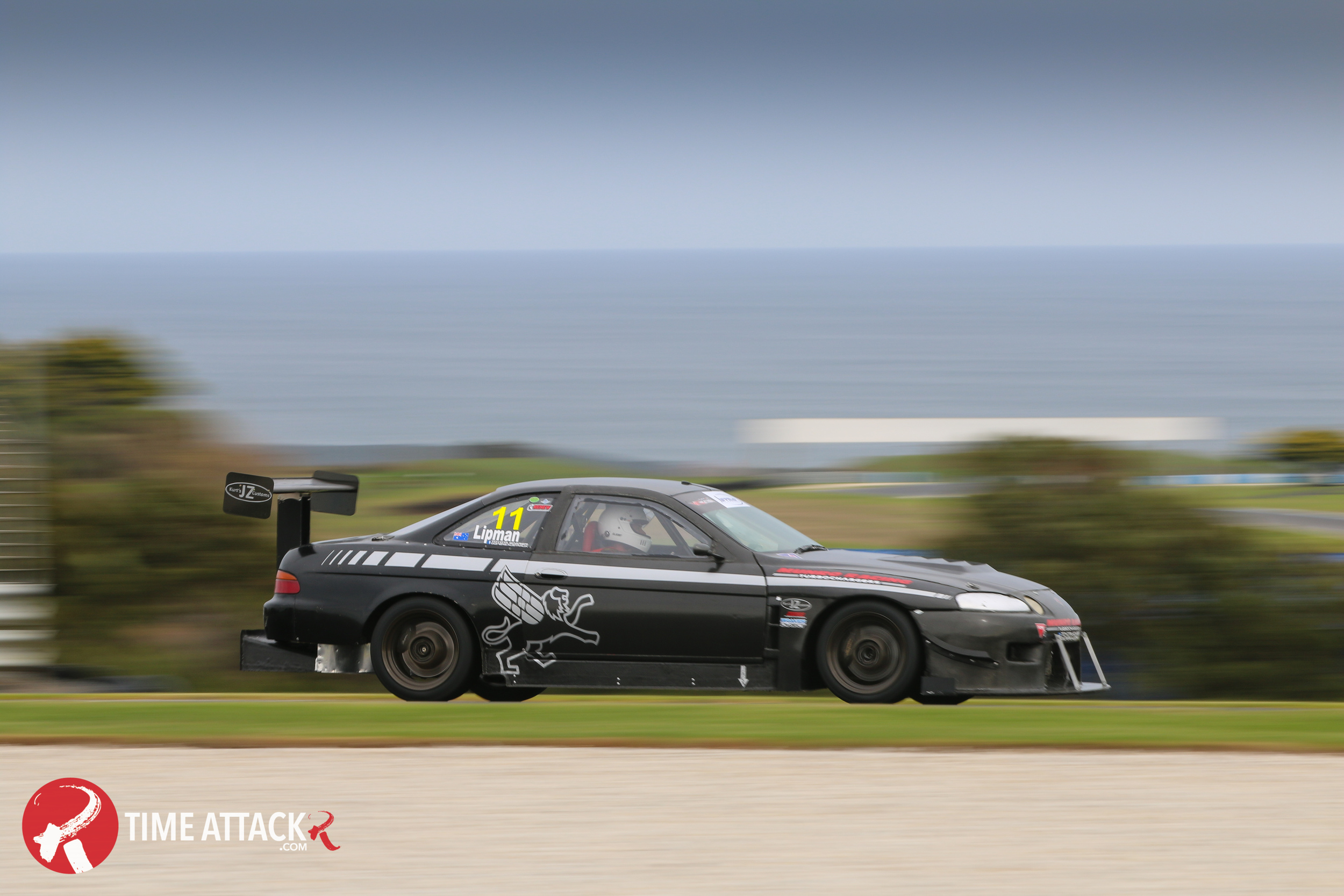
Driver's POV: Brad Jesson
TimeattackR.com: Hi there. Tell us a bit about who you are, and why you first got into motorsport.
Brad: Hey! I’m Brad, I’m 25 and from Auckland. My weekend high-chair was pretty much a go kart as a toddler. I grew up running around the country’s go karting tracks as my dad was a mechanic for some of the top go karters in the country at the time. Being surrounded by the smell of exhaust gas and tyres must have sunk into my blood. Unfortunately, I was never allowed to drive one. But I never really managed to shake the urge to get out on the track and the moment I bought myself a performance car I was back out on track. I started with drag racing then slowly built my confidence to track days. Now it’s time attack and full blown circuit racing on my agenda.
What first drew you to time attack racing and when did you start competing?
Ever since time attack hit the mainstream I have been interested in it. The first car and team I followed would be the HKS CT230R as I’m an avid Evo enthusiast. I loved this car and everything about it. This then carried over to the cyber evo. I was invited over to the Yokohama World Time Attack Challenge in 2013 by a friend who was managing Inessa Tushkanova, as she was competing as a guest driver. I was lucky enough to spend a week hanging out with them. I was also lucky enough to meet and hang out with the WTAC CEO Ian Baker, who is one of the coolest people I have had the pleasure of meeting. I also got to meet Chris from Nulon Australia who is an ex-pat Kiwi and all round awesome guy. It was definitely one of the best weeks of my life hanging out with time attack royalty. Ever since then, the time attack bug bit hard, and although my financial situation (mortgage + racecar = permanently broke) hasn’t allowed me to get back over to WTAC in person, I’ve watched every year since from start to finish on the live stream. I also try to keep up to date with the Japanese time attack scene. This is my first year competing in time attack in New Zealand. I’ve learnt the hard way that the car takes another level of beating when on the track and I had a few teething issues which have cost me some good placings including; losing power to a fuel pump at round two and blowing fourth gear to smithereens at round three, but that’s motorsport I guess. It also pushed me to develop and adapt the car over the year, including much more aggressive aero and welding in a full eight-point roll cage after round one. So since round one the car has gone from fast street car to fully stripped, caged race car.
What was your first time attack vehicle and why did you choose it?
My first vehicle is my current vehicle. A highly modified 2001 Mitsubishi Evo VII. It was my street and show car, which saw the odd drag event and track day. I’ve always wanted to get into motorsport with the end goal being full blown circuit racing as part of the GTRNZ series, and I see time attack as a good stepping stone giving me experience on the track in a competition environment with other cars of similar pace, before taking the plunge into door-to-door racing. Besides, the Evo is arguably the best time attack chassis in the world so why change!
What development did this vehicle go through, and what development saw the biggest drop in lap times?
The car was already highly modified and capable of 10-second drag passes at the strip. So a lot of the development had already gone into the car over the previous five years of ownership. I’ve always had circuit racing as the end goal in my head so most modifications have been carried out with that as my end goal in mind. The first thing I did was install a full eight-point MSNZ spec rollcage into the car. To me, there is no compromise for safety and I just didn’t feel comfortable in the car at 200kph-plus without a rollcage around me. Personally, I think it is a minimum that any circuit car putting out reasonable power or showing decent pace should have. I also found that I was beginning to pop spot welds on the chassis due to the the forces being applied to the car. These benefits outweighed the approximately 80–100kg weight gain the car suffered from by having the ‘cage added. At the same time as the rollcage was fitted, I installed a Sparco fixed back competition seat and Takata four-point harnesses. I then stripped the interior and everything is built to MSNZ Specs. Too many people take safety for granted and skimp out on decent genuine harnesses and safety equipment which is concerning.
I have gone to a more aggressive front aero package including doubling the size and strength of my front diffuser and adding a second pair of larger front canards. I’ve added ducting for my front brakes due to finding that they would overheat after 2 laps. Also swapped pads out to a more track orientated compound from Endless Brakes NZ. I’ve also done a lot of work on reliability — adding sensors and learning to read data logs from my ECU and understanding car setup more, which has no doubt driven Hans Ruiterman at E&H Motors nuts.
I’ve also swapped fluids out to fluids more suited for full time track work. I now use Millers engine and transmission fluids from Millers Oils NZ and Endless high-temp brake fluid.
After exploding fourth gear on my first lap at Pukekohe in round 3, I spent my Christmas holidays stripping the gearbox out of the car and removing the gearset. I have gone to an Evo IV gearset as they have a slightly shorter fourth and fifth gear. I was having trouble shifting from fourth to fifth and having the car fall off boost slightly. Going to the shorter Evo IV gearbox has fixed this issue.
I’ve also installed some blowers to duct cool air from outside the car into the cabin to keep temperatures in the cabin down. Before the end of the season, I hope to have a fully baffled and gated sump installed to take on the final round at Hampton downs and not have the oil surge issues encountered during round one and two.
What was the first circuit you ever competed in time attack?
The first circuit I ever competed on was Hampton downs; which is also the circuit I’ve done the most laps at and it’s also probably my favourite. Although after round five,, I think I may have a new favourite track once I’ve done a few more laps there. However, I can’t wait to see the Hamptons Downs Raceway extension completed.
What advice would you give someone thinking of getting into the sport?
Just do it. There’s no easy way to get into motorsport in New Zealand so you just have to take the plunge. Come along and talk to some of the guys and I’m sure they will be happy to help you on your first day out. Definitely don’t be afraid to give it a go or think you’re too slow — everybody starts somewhere.The best thing you can do is enter with a relatively slow car and learn how to drive it. It’s much easier and better to learn to drive a slow car fast than masking poor driving and lack of skill with lots of horsepower. Admittedly, I began racing my car too late and haven’t had the chance to develop with my car and now I’m having to play catch up. I’m just lucky to have amazing, experienced friends and family who are happy to give advice and critique my driving. The most important bit of advice, which is sadly one of the most overlooked, is to never skimp out on safety equipment. Always buy genuine safety gear, not the replica stuff. Get a good quality race suit and helmet. If you go as far as to get harnesses and a competition seat make sure it is genuine and not a replica.
Thanks for chatting with us, is there anybody you would like to thank?
I would like to thank my team that helps me out every round, my lovely amazing manager/partner Maya, my dad for being the number one sponsor and always helping and willing to put long hours in on the car, Barry from Millers oils NZ, Mike from Endless Brakes NZ, AJ at the Glossmaster for always making the car sparkle, Hans Ruiterman from E&H Motors for putting up with my dumb questions and loaning me workshop space and his time, Bill from Ralliart for always looking after me and also putting up with endless stupid questions, Leon, Barry and everybody else in the Prowear NZ superlap series who provides good banter and advice.
Please show your support and get onto Instagram and give me a follow! @Therealevolutionz9
Driver's POV: Glenn Hodges
TimeattackR.com: Hey Glenn, tell us a bit about who you are, and why you first got into motorsport.
Glenn Hodges: I've been around cars forever — I remember helping (as much as an under ten-year-old can) my dad fit a 350 Chev’ V8 into a Bedford van. It just never stopped, I've always been working on something. I purchased a Volkswagen Beetle and repainted it while I was still at school, the projects just got faster and more expensive from there!
What first drew you to time attack racing and when did you start competing?
I like the concept of being able to compete but not be door-to-door racing — for the most part! (laughs). I ran at the first time attack round at Hampton Downs Raceway and have done a handful there since, but this is the first full season I've attempted.
What was your first time attack vehicle and why did you choose it?
Actually the current project has been the only car I have officially competed in; it's a rare (ish) sub model of the Z32 300ZX, with only two seats and a hard top roof rather than T tops, so it's lighter and more nimble. The downside is it can be very twitchy when driving on the limit.
What development did this vehicle go through, and what development saw the biggest drop in lap times?
I've spent a lot of time on the car over the years trialing various "improvements" and finding the limits of different components. Ultimately the single biggest gain for this particular car is in the choice of tires in my opinion. Obviously with more power and bigger brakes it all helps, but once you are at around about 1400Kgs with near-on 400kWs at the hubs, the tyres can really make a lot of difference.
What was the first circuit you ever competed in time attack?
My first ever circuit was Hampton Downs Raceway.
What advice would you give someone thinking of getting into the sport?
DO IT!!! In New Zealand, we have a great bunch of people participating in the series and it's an awesome way to get out there and compete with minimal risk of panel damage.
Thanks for chatting with us, is there anybody you would like to thank?
Thanks to Beaurepaires, my very understanding wifey, and the guys n gals who put the effort into making the NZ Superlap series happen in New Zealand.
Driver’s POV: Ben Lipman the Soarer whisperer
TimeattackR.com: Hey Ben, tell us a bit about who you are, and why you first got into motorsport.
Ben: I have always been interested in cars. Initially it was just modifying my daily driver, but slowly my daily drivers got less and less suited to the road. I was drag racing an RX-7 at the local street drags in Darwin and had a work mate convince me to try a track day at Hidden Valley. I was hooked after that first session. I sold the RX-7 when my sons were born, but I missed the cars and fell back into modifying my daily again. I figured I was too old to be butting heads with the law, so I decided to buy a dedicated track car. I was living in NSW by this stage and began hitting Oran Park at every opportunity.
What first drew you to time attack racing and when did you start competing?
I was building the car up as a Sports Sedan, but we moved back to Darwin where there was no Sports Sedan competition. I ended up competing in the super sprints up there and started doing well. When we moved to Adelaide I entered a time attack demonstration at a drifting event and enjoyed the company and competition, despite it raining and ending up 12th fastest and 10-seconds a lap behind the winner.
What was your first time attack vehicle and why did you choose it?
I was modifying my daily JZZ30 Toyota Soarer when I decided to buy a track car, so I purchased another and swapped all the go fast bits across. It was part convenience and partly because I thought the chassis and suspension, being double wishbone would be well suited to motorsport. I did not factor in the sheer mass of the thing though, and the lack of off the shelf support. Looking back I would have had an easier time with the RX-7, but I have learnt a lot from needing to make all my own parts.
What development did this vehicle go through, and what development saw the biggest drop in lap times?
As an amateur, development has been slow but constant. I focused on braking and suspension in the first few years which saw five or six-seconds a lap improvement over stock. After that I took a leaf out of Colin Chapman’s book and ‘added lightness’. My best mate convinced me to try working with carbon fibre and I set about replacing all the steel panels with carbon fibre. About the same time I began reading every aerodynamics textbook I could find and incorporated this new knowledge into the panels. Lap times dropped with the weight. Unfortunately my enthusiasm for carbon and aero put me up a class where I was severely underpowered with my stock driveline. In the last couple of years I have been slowly adding power as I can afford it with high flowed turbos and engine management.
What was the first circuit you ever competed in time attack?
Mallala was my first ever Time Attack ‘event’, however, I had been doing competitive and noncompetitive track days for years before that.
What advice would you give someone thinking of getting into the sport?
Start driving whatever you have. I have friends who embarked on ‘builds’ but lost enthusiasm because they were not driving. Some of the most fun I have had was driving the near stock car on semi-slicks with very little maintenance required. Do something different: the more unique the car the more attention you will get in the pits.
Thanks for chatting with us, is there anybody you would like to thank?
I would like to thank my wife, Kim, for all her support, my boys for helping out in the shed, Glenn at Munro Racing Turbo for the high flows, Kurt’s JZ Customs for the manifolds and piping as well as Grant and Glen at Extreme Street Performance for their perseverance at tuning our oddball creation. I also have some good friends Paul, Andrew, and Aaron with whom I have shared ideas, parts and effort. Without them, I would probably still be watching on TV.
StreetattackR: Khan Mackesy’s 280kW Mazda MPS
“It wouldn’t be everybody’s first choice for a time attack vehicle, but Khan Mackesy proves it has what it takes to scare the majority”
When we first met Khan Mackesy, we were stunned to see that he’d turned up to the first round of the Prowear NZ Superlap series in a Mazda MPS. We were even more stunned, when we started to see that the lap times he was getting around Hampton Downs Raceway were on par with an R34 GT-R in attendance — we had to know more.
If you walk around the vehicle, you might spot that it has semi-slick tyres, upgraded brakes, and well, that’s about it. In its first guise, it looked so factory that we thought the timing board was faulty. Maybe we’d find something under the bonnet that would hint at the serious pace this hot-hatch was running at.
Again, stunned. All we could spot was an aftermarket top-mount intercooler. No upgraded turbo, no fancy bits, it was all as the factory intended. After a brief discussion with Khan, he was quick to point out that yes, the engine was internally stock, as was the turbo. What it did have though, was a very potent tune loaded onto it thanks to the Cobb Accessport. Cobb Accessports are clever little units that plug into the vehicle's diagnostic port. A base tune can be downloaded from a tuner anywhere in the world, loaded to the Accessport, and installed into the vehicle's ECU. From there, the owner of the vehicle such as Khan, will road test the vehicle, taking part in several third gear pulls to collect data, which is then sent back to the tuner overseas, so he can make the final power adjustments. There’s several maps too, so if you want to race with E85 over the weekend, then switch maps, fill her up, and you’re good to go.
Now though, Khan has come a long way with the MPS; the turbo is now a BNR S3 upgrade, which sits on top of a CPE turbo manifold. Boost is cooled by the same upgraded top-mount intercooler, but now exhaust gasses exit via the Corksport downpipe and Corksport three-inch race pipe. Engine upgrades? No problem! Khan simply downloaded a new base tune, had it fine tuned, and now the Mazda MPS produces a stonking 280kW at the wheels on 23psi of boost with E85. All of this, on factory internals.
Don’t go thinking the driveline is seriously trick either. All the factory manual gearbox was given was some high quality Motul oil, and a Sure Motorsports short-shift plate. More than enough we’re told, to take on the abuse of track use.
For a long time, Khan was competing on the factory struts, but this changed when a set of RS*R coilovers came available, which have improved handling significantly. The coilovers, alongside a Whiteline rear sway bar, Corksport camber arms, and an AutoExe chassis support kit, help the Mazda MPS stick it to the big guys.
Like most of us, Khan has been on a big budget throughout the Superlap season, so tyre choice has come down to value for money. You won’t go finding expensive Advan, or Nitto tyres on this hatch, but you will find the tried and proven Achilles 123 semi-slicks on 18-inch Volk SE37k wheels, or Toyo R888s on factory Mazda RX-8 wheels. The Mazda stops as good as it turns and goes too, with DBA 4000 series rotors up front, custom rear slotted rotors, and Endless race pads all round.
Inside the cabin, you’ll notice that the MPS is not yet caged, and for good reason too. This is, and always will be Khan’s road car, so he’d like to keep it that way. All you’ll find is stripped rear interior, a NZKW fixed-back drivers seat, and a Sure Motorsports gear knob.
Khan’s MPS is a true street time attack vehicle that does it’s duty during the week, yet has the power, grip, and handling to take on the competition come the weekends. This is a build we’ll keep a close eye on, but for now, we think Khan is ready to dial in the setup, and make the most of the current upgrades.
- Vehicle: 2007 Mazda 3 MPS
- Engine: L3 2.3-litre, PD tuned (E85 mix), BNR S3 turbo upgrade, HTP 3.5-inch Intake with AEM pod filter, Streetunit top-mounted intercooler, Corksport downpipe, Corksport fuel pump internals, Corksport three-inch race pipe, Corksport catch-can, Corksport EBCS, Autoexe inlet pipe, Cobb Accessport v3
- Driveline: Sure motorsports short shift plate, Motul type 2 lsd oil
- Suspension: Whiteline rear sway bar, RS-R coilovers, Corksport camber arms, Corksport sway bar links, Autoexe front chassis support bar, Autoexe rear chassis support bar, White Widow front engine mount bar set, Torque solutions rear engine mount
- Brakes: DBA 4000 series front rotors, Endless front pads, custom slotted rear rotors, custom relined rear race pads, Hell braided brake lines, Motul 600 brake fluid
- Interior: NZKW race seat, Sure shift knob, rear interior removed
- Exterior: Factory
- Wheels/tyres: Volk SE37k 18-inch wheels, Achilles 123s semi slicks, RX8 rims for track with TOYO R888 semi slicks
- Power: 280kW at the wheels on 23psi of boost on E85
Event Gallery: Prowear NZ Superlap RD1 2015
The first round of the Prowear NZ Superlap season was a scorcher — not just temperature wise, but after a lengthy off season, the 30-odd competitors were chomping at the bit to lay down some quick lap times times. The big guns such as Hans Ruiterman of E&H Motors, Leon Scott of Leon Scott Motorsport, Barry Manon of MRP Ltd, and Kat Benson were all in attendance, with more power, and more aero than last year — it really was anybody’s game. There were a few surprises though, with newcomer Brad Jesson punching above his weight in his street-spec Mitsubishi Evo VIII. In the end though, there could only be one winner, and that was Hans Ruiterman in his 400kW-plus Nissan Silvia S14.
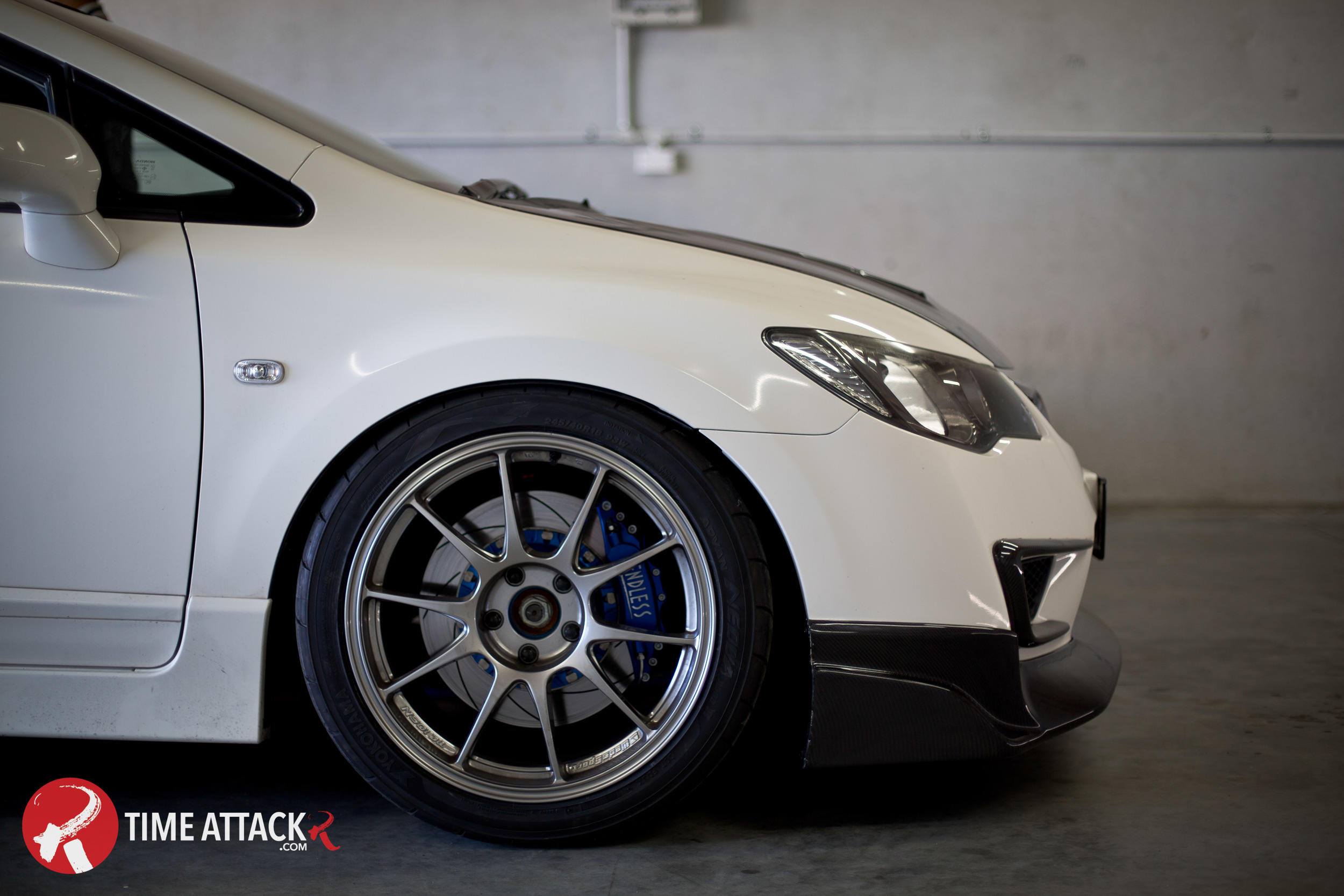


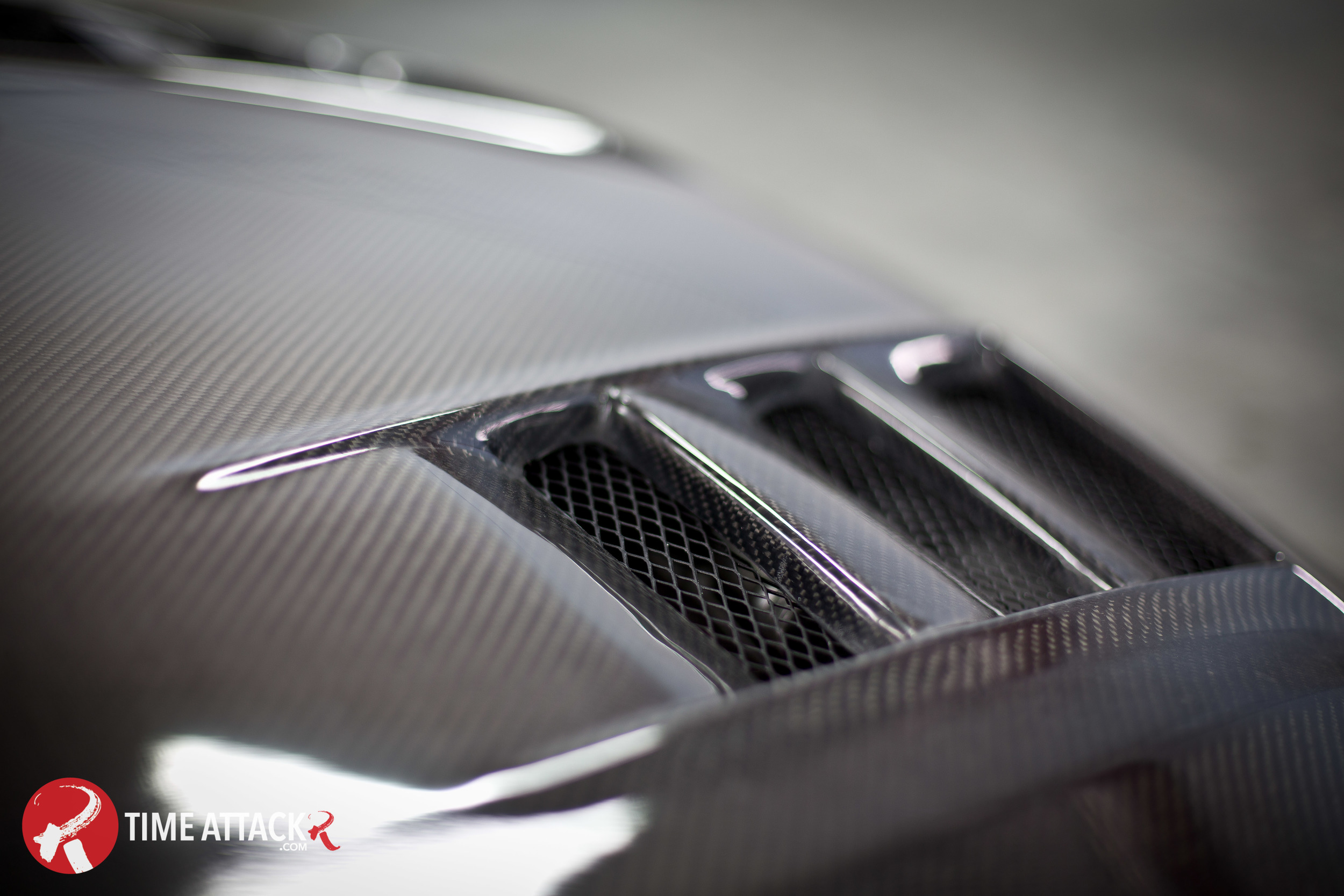
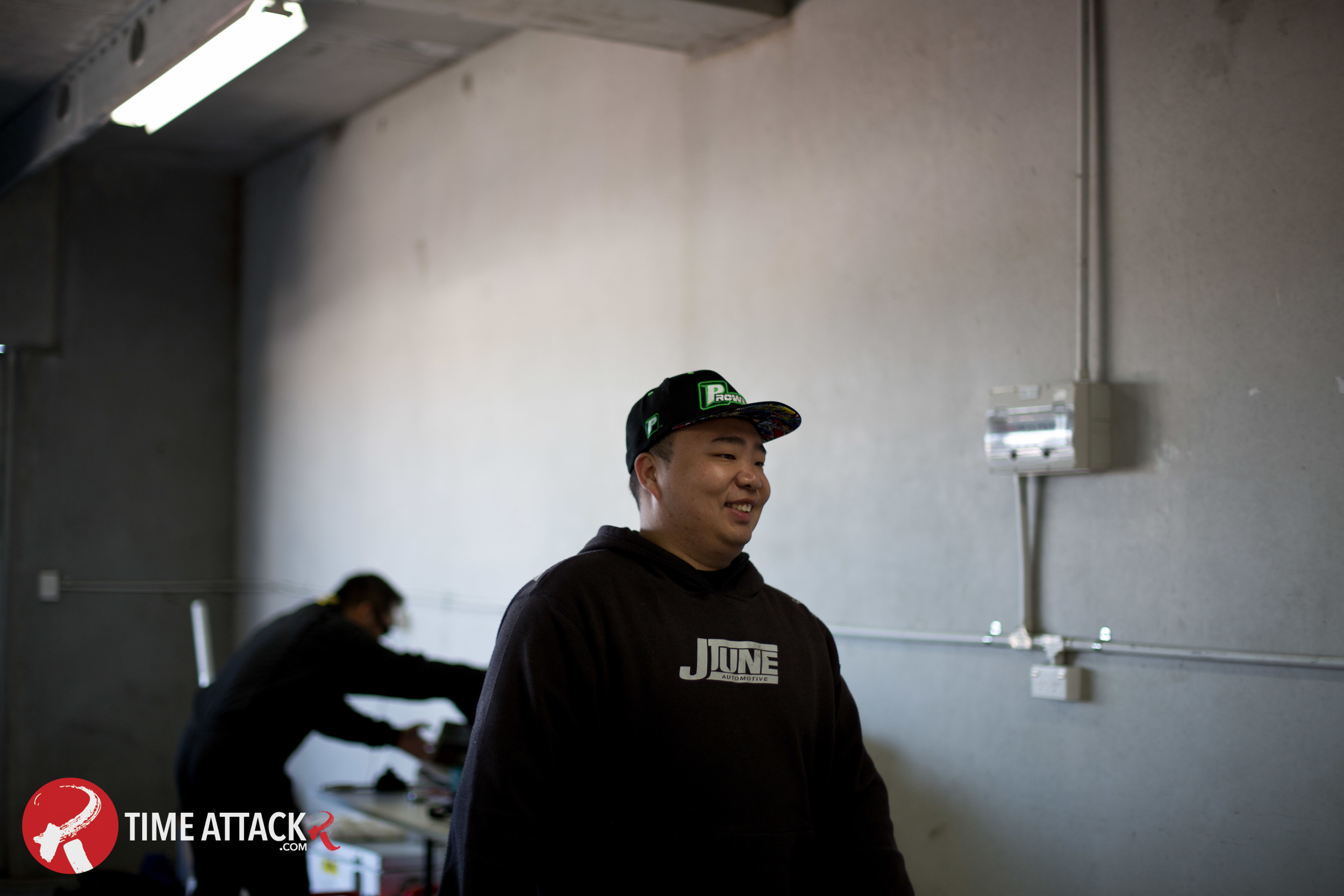
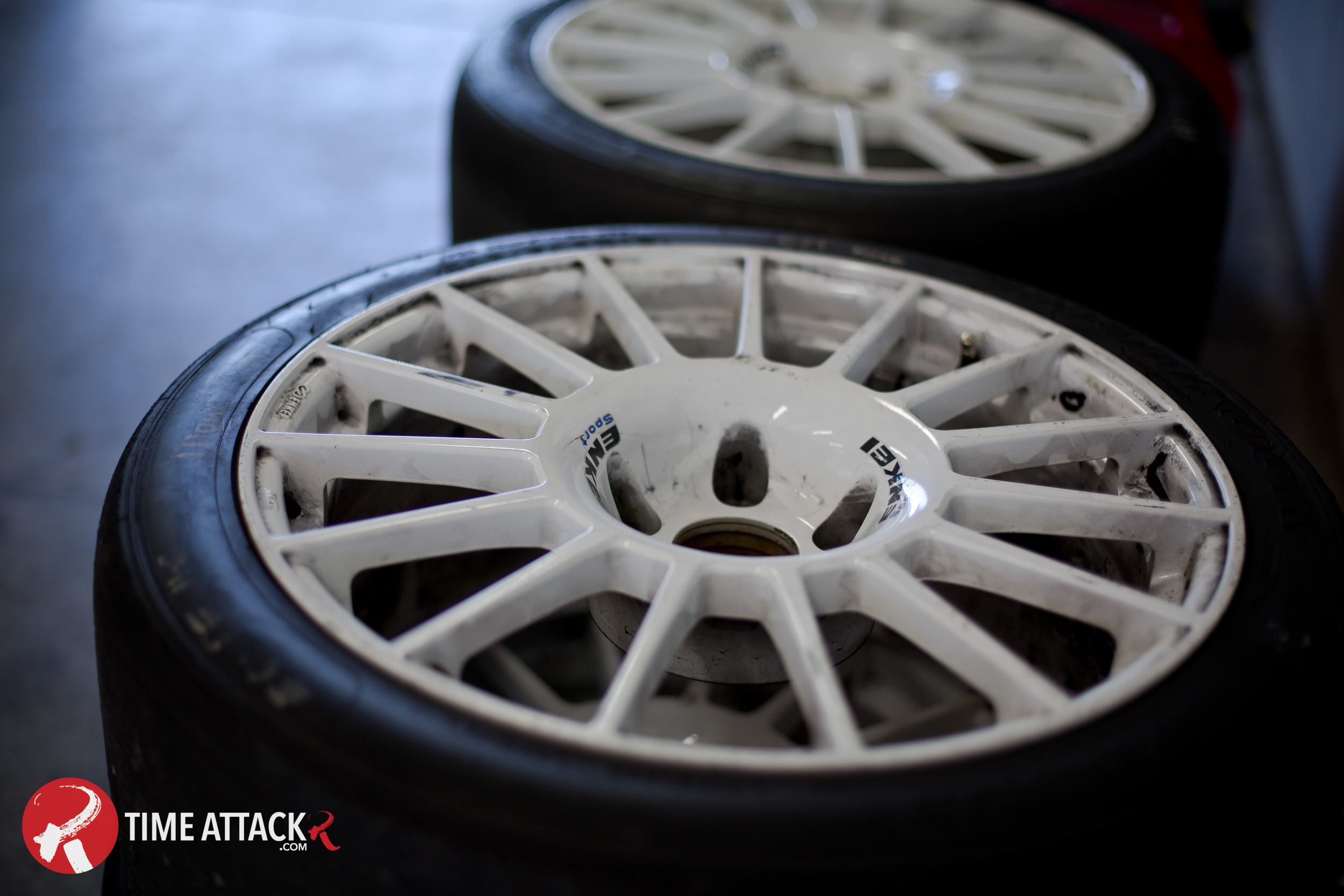
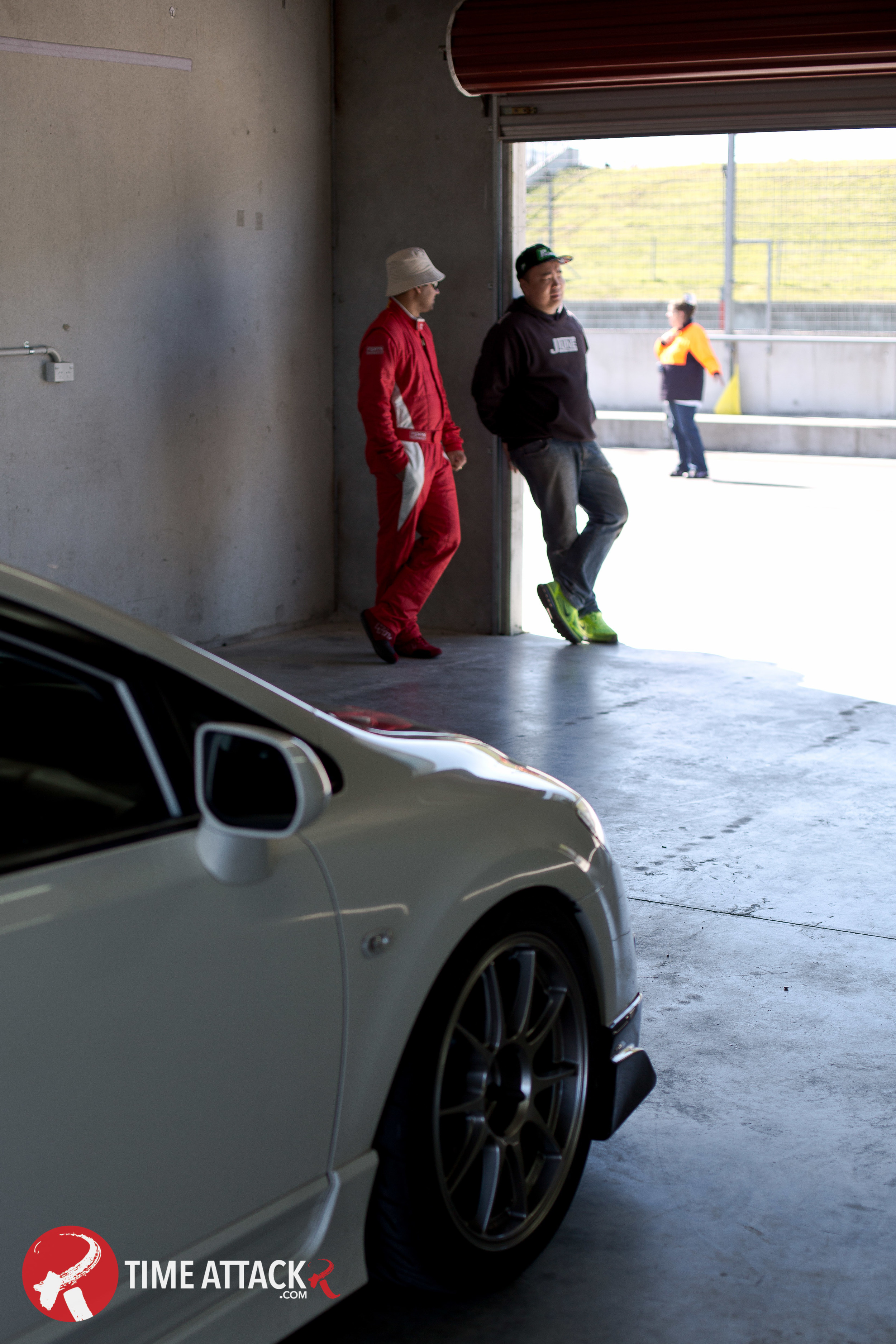

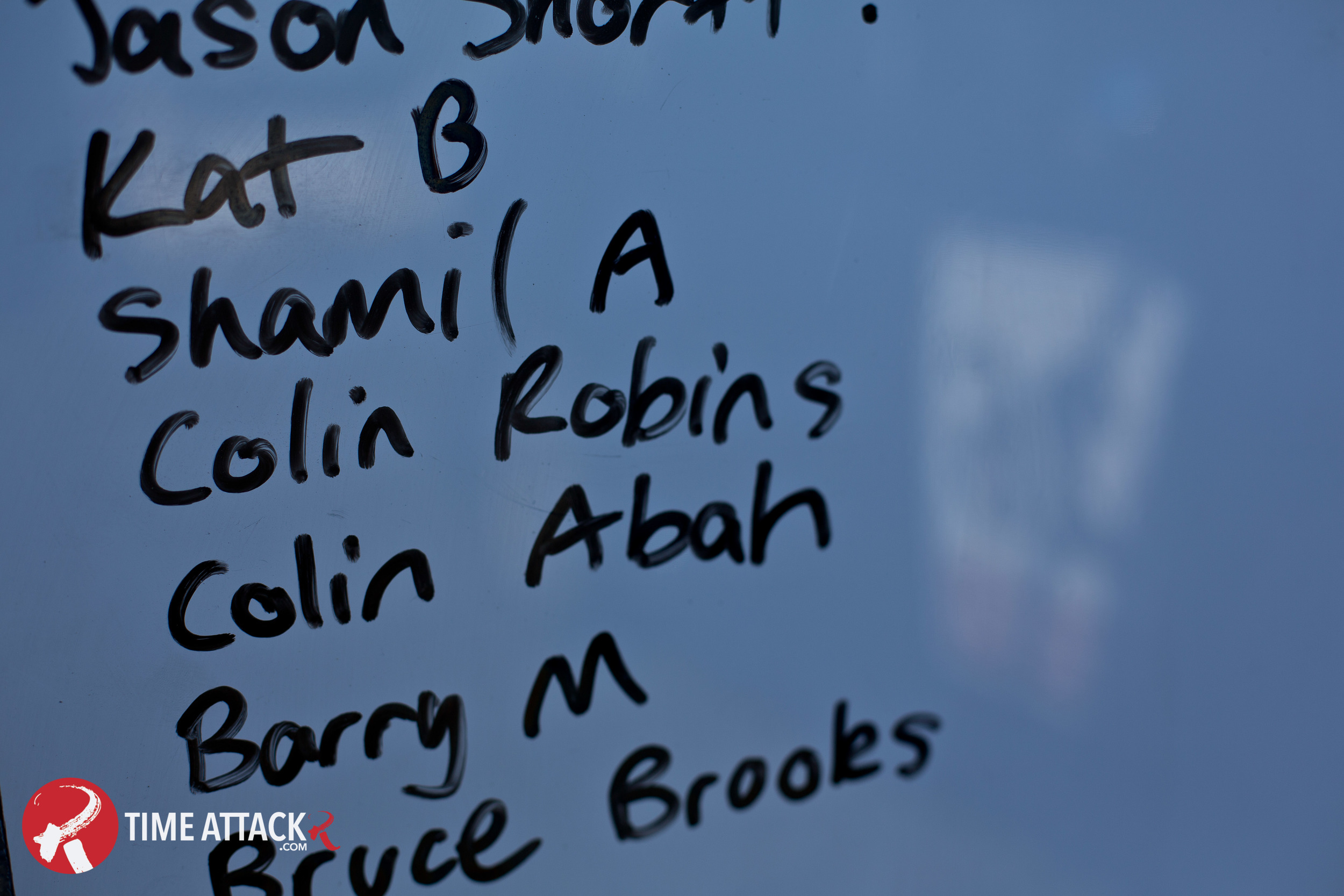

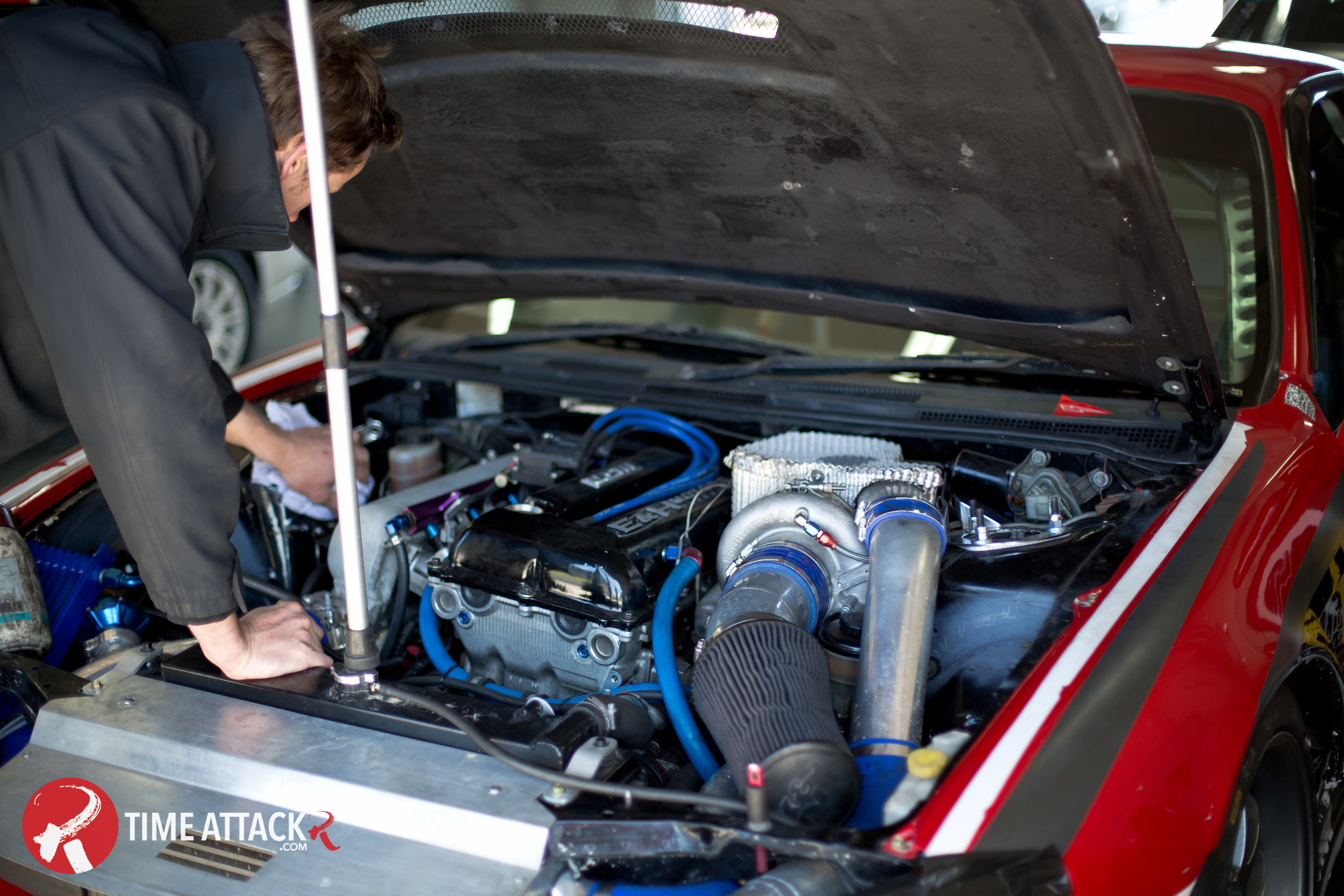
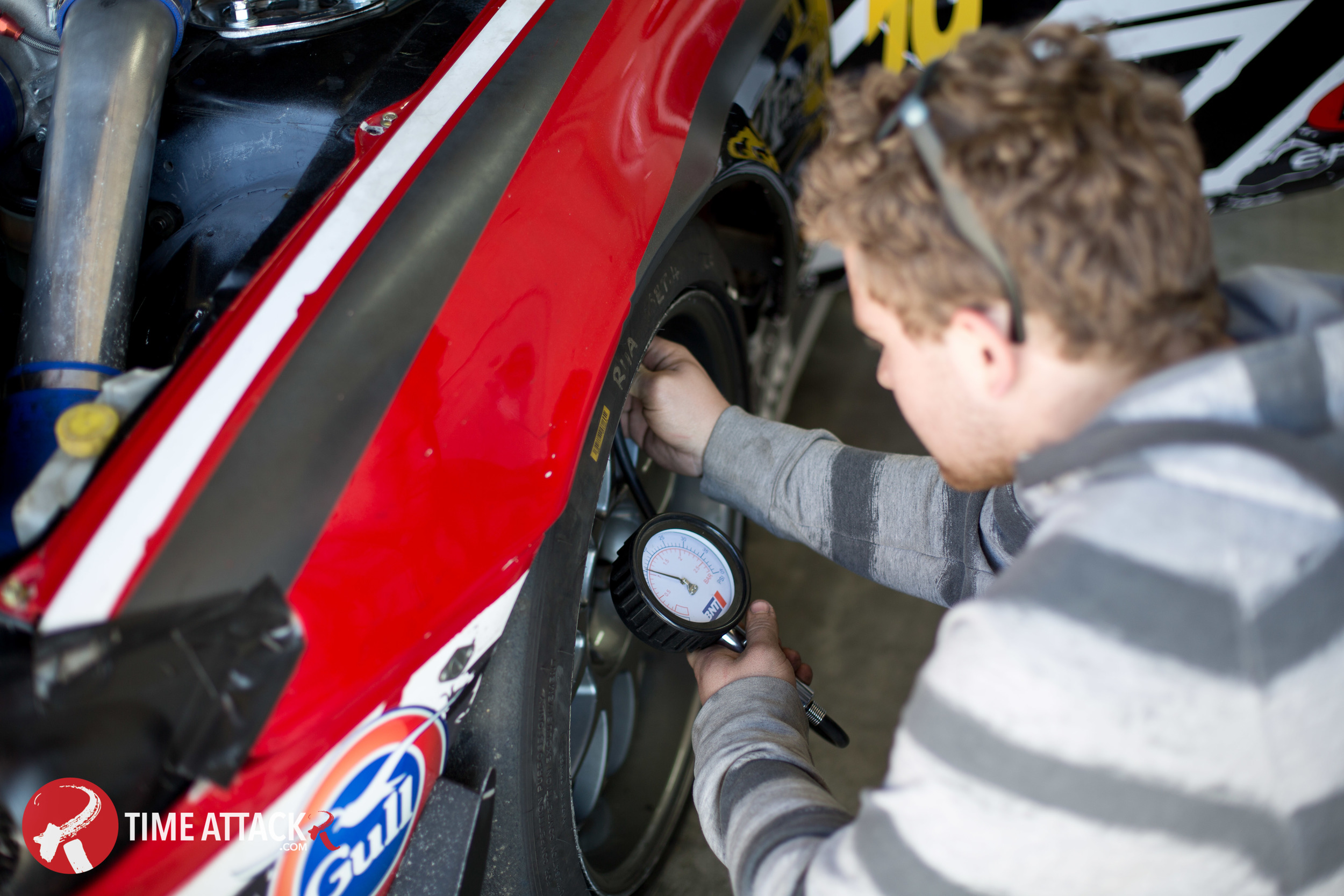



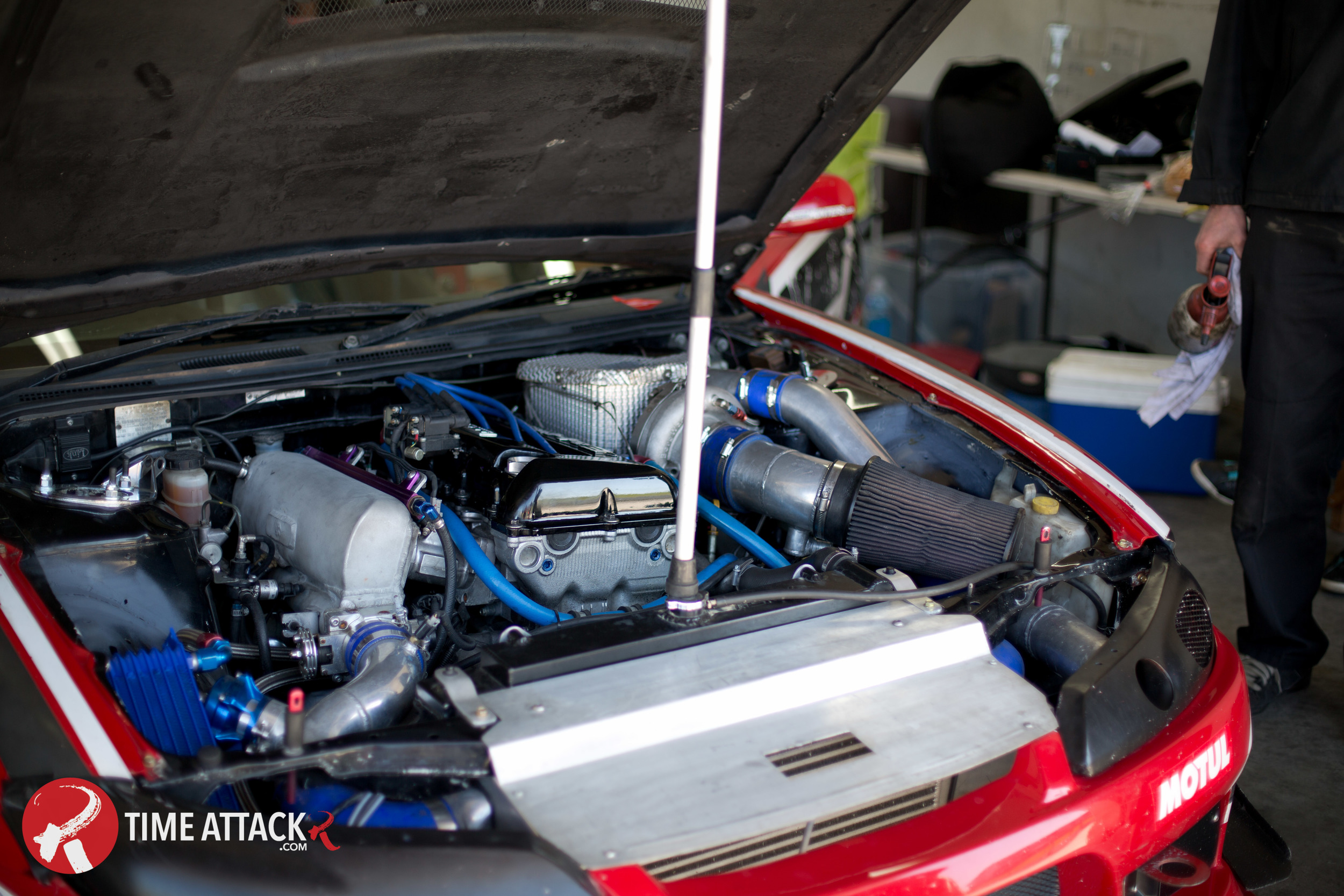


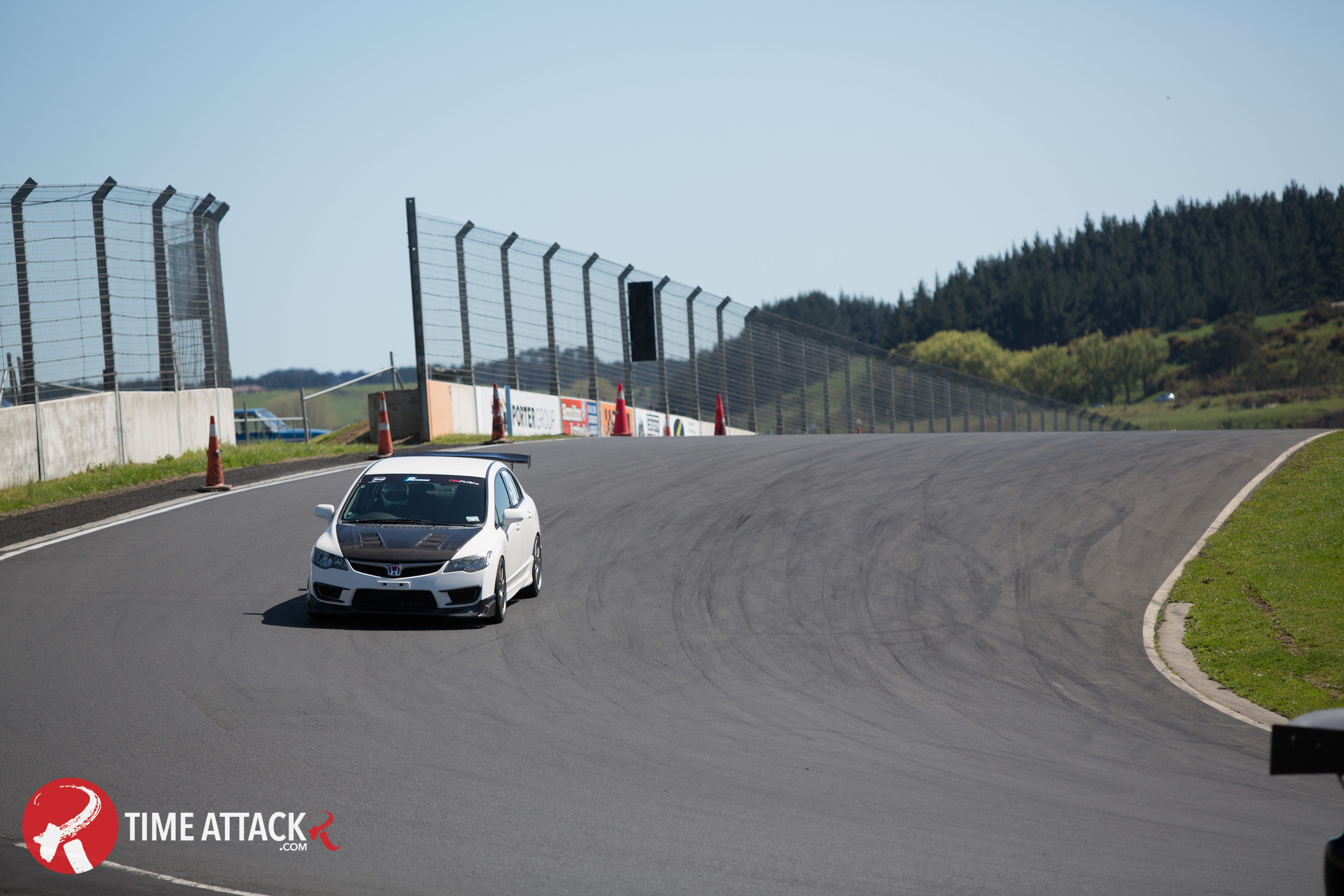
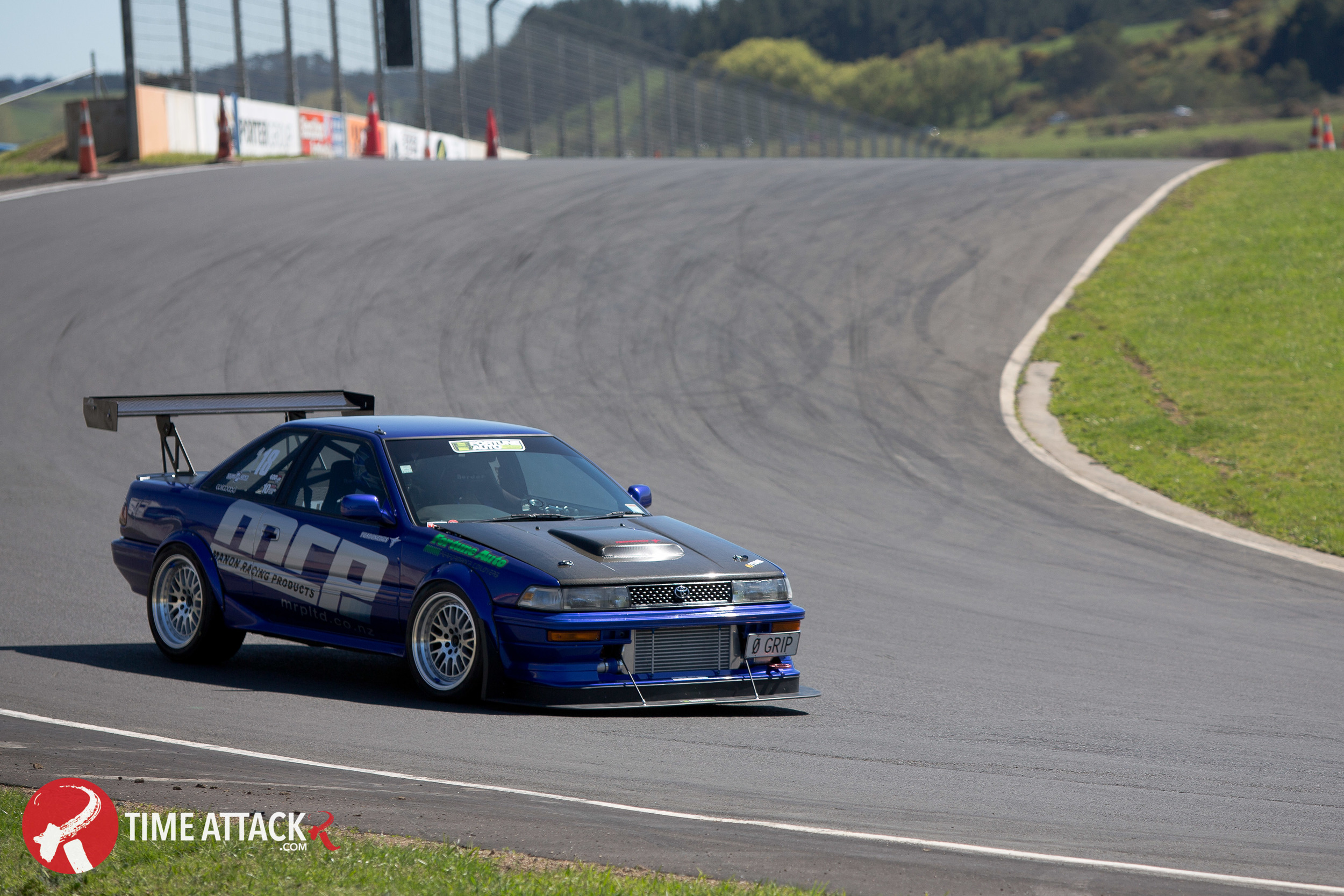
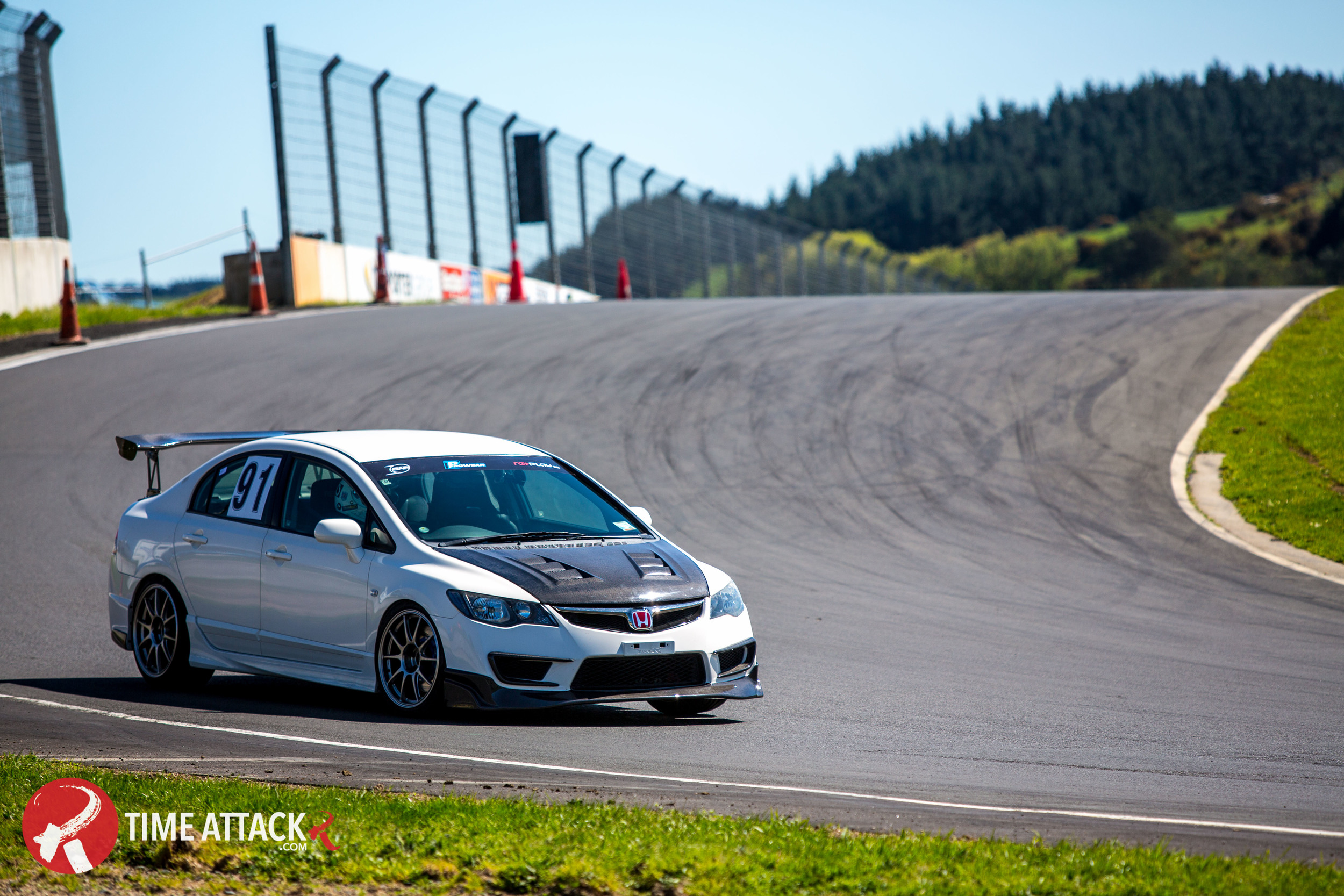

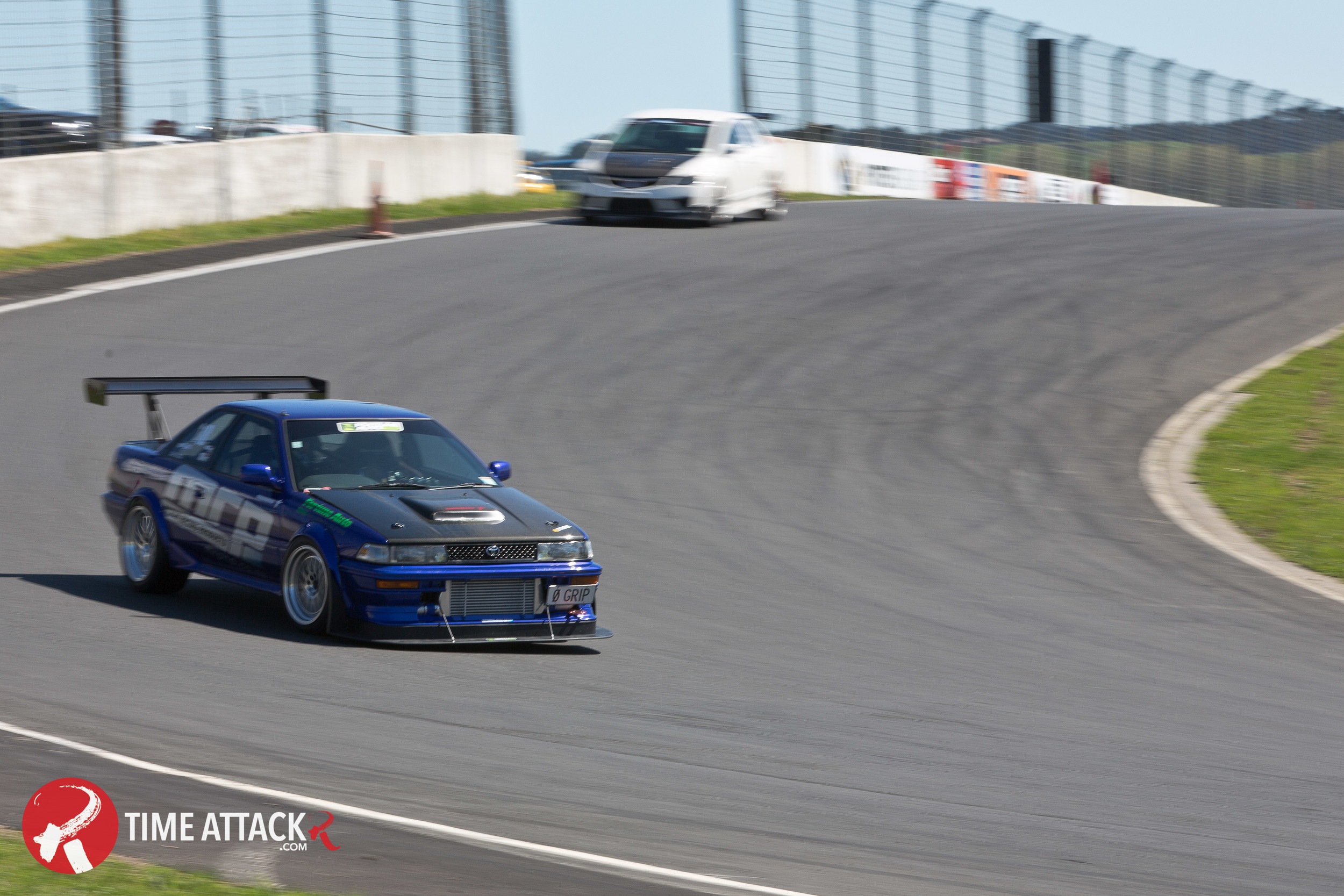

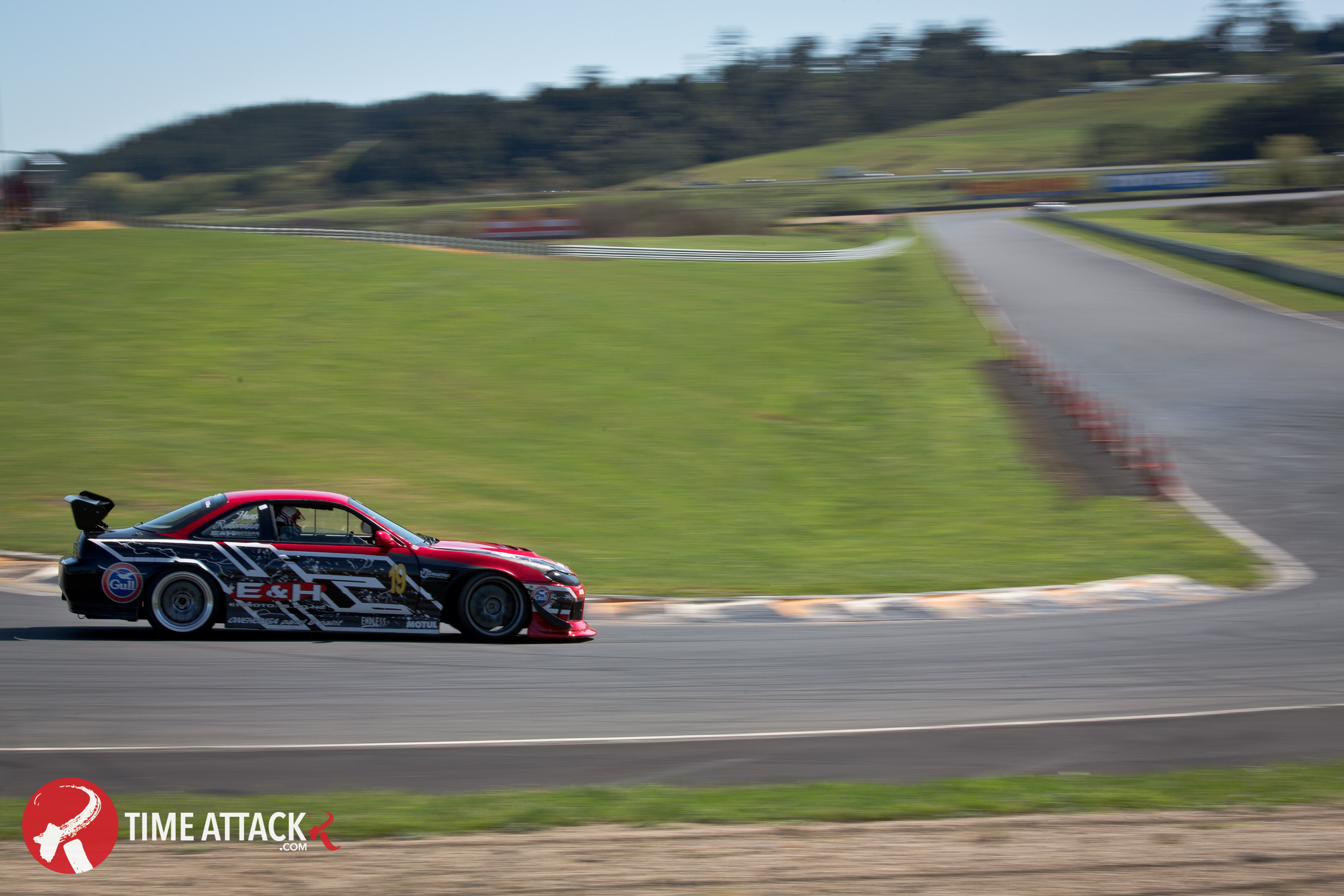
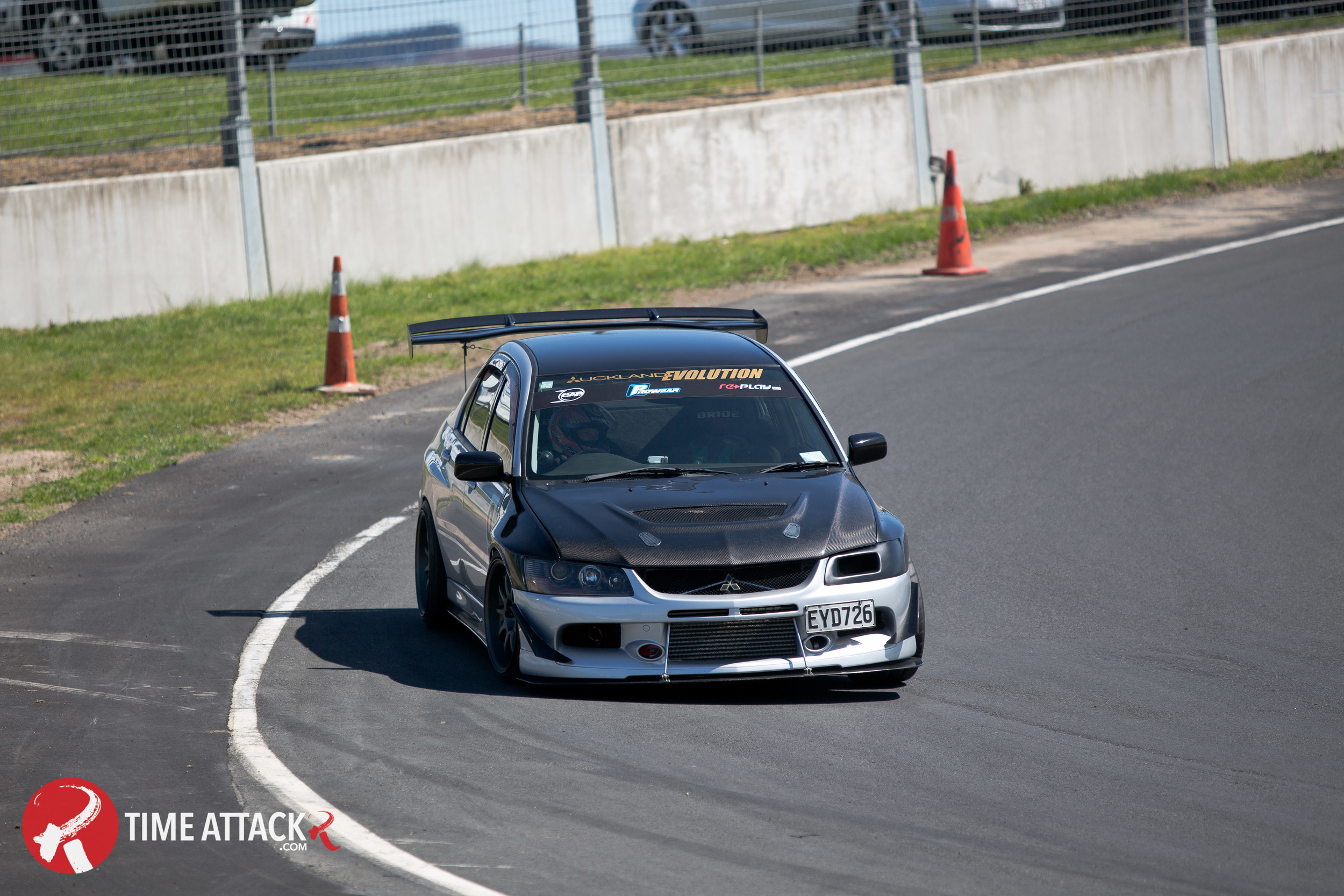


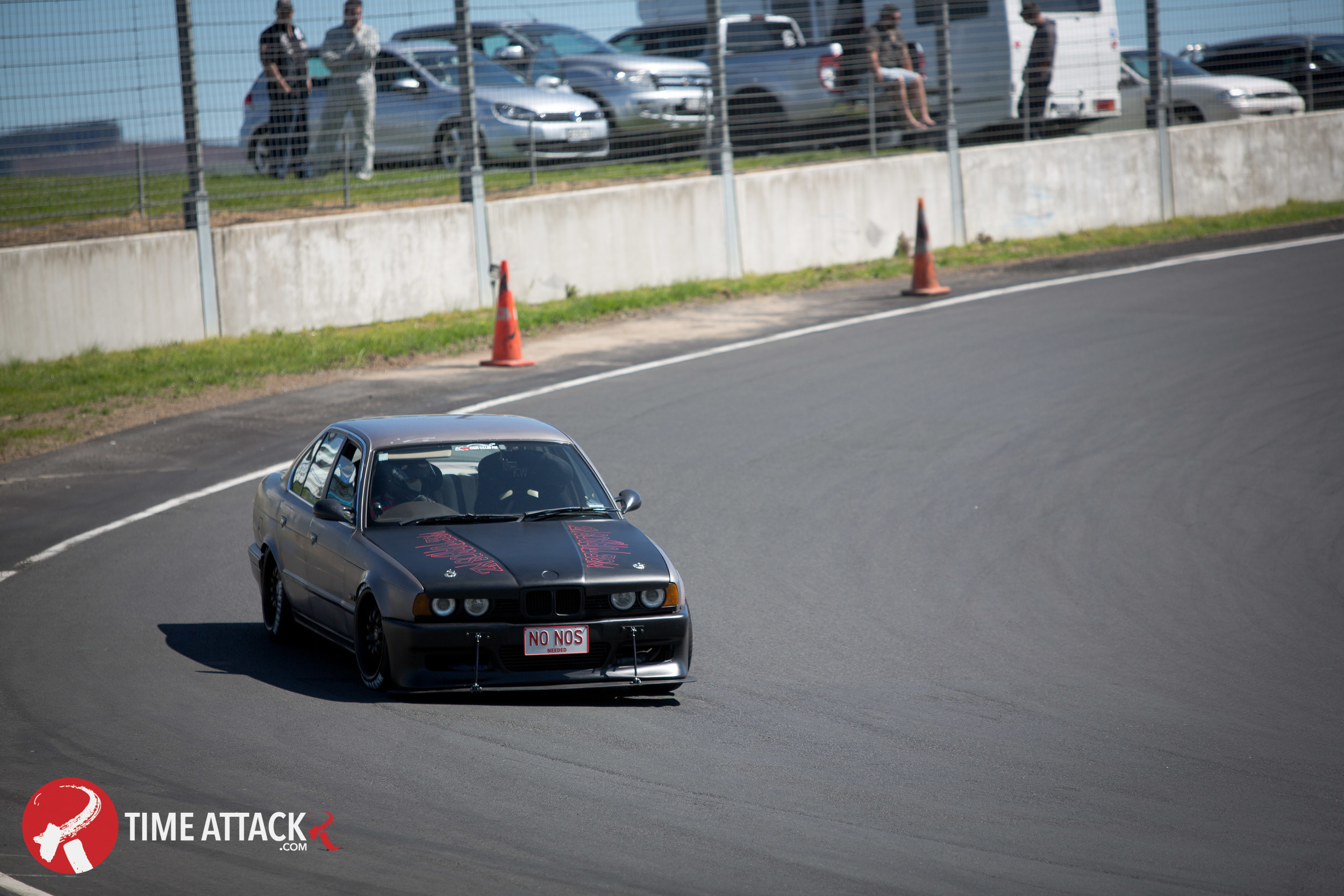
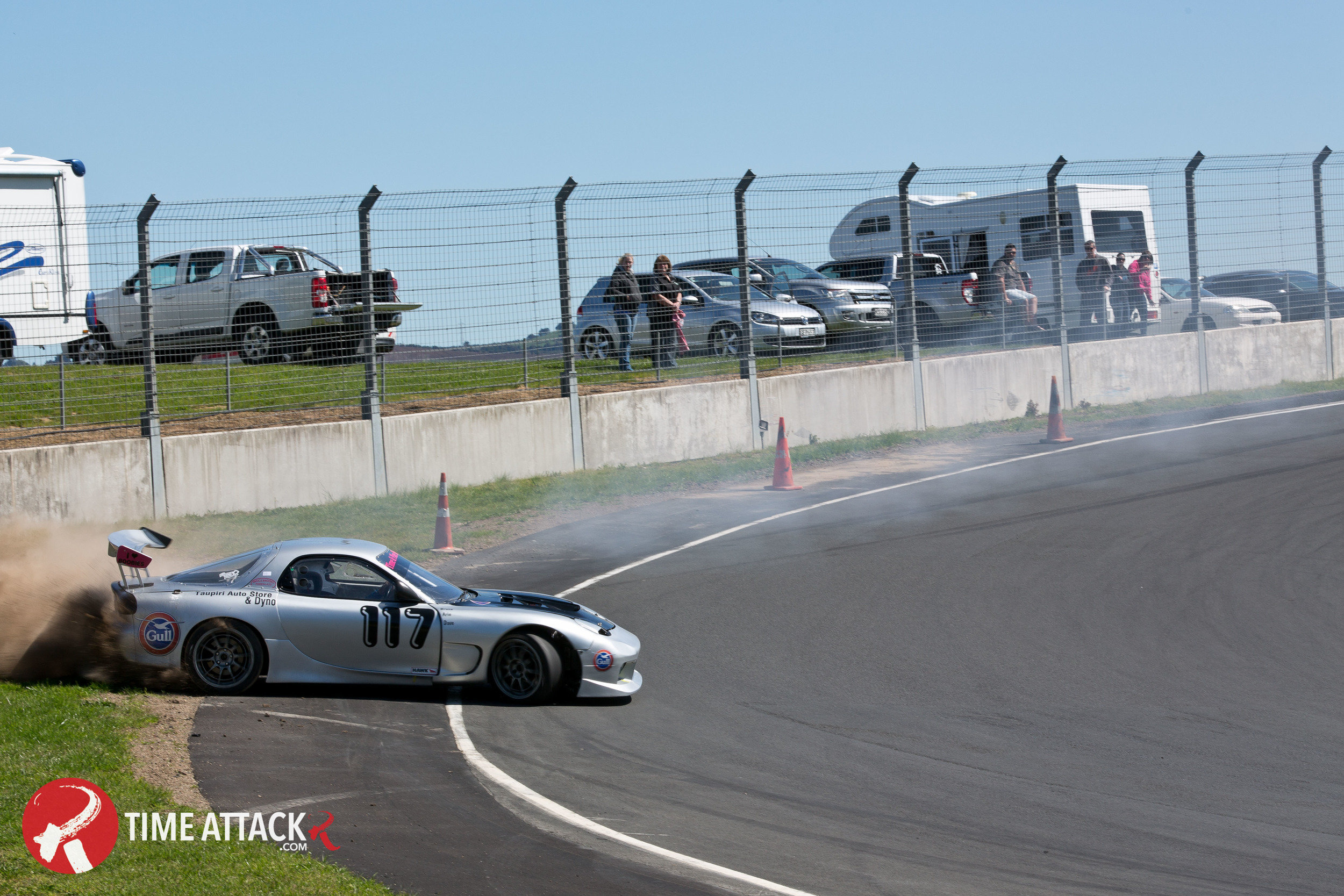


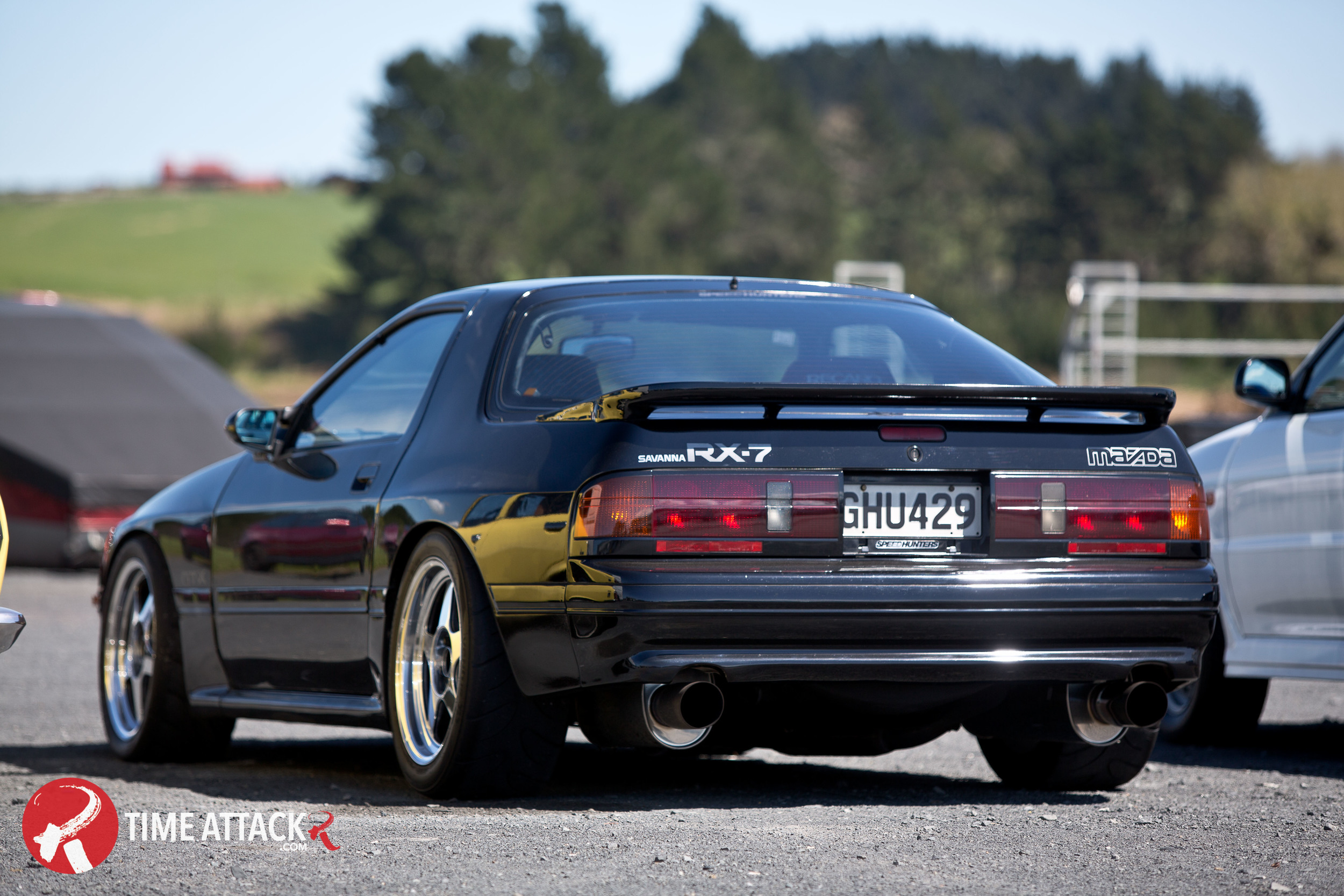
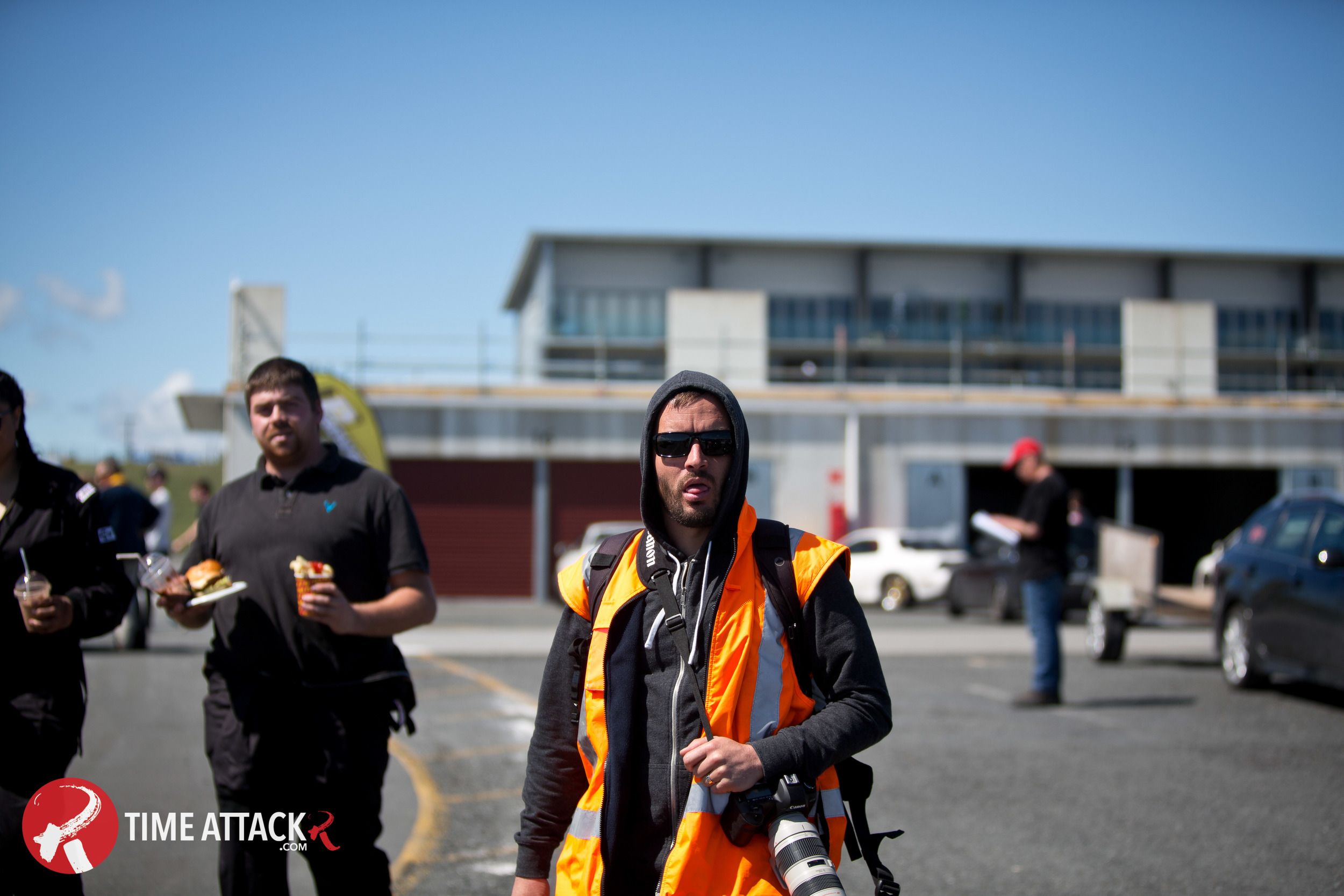
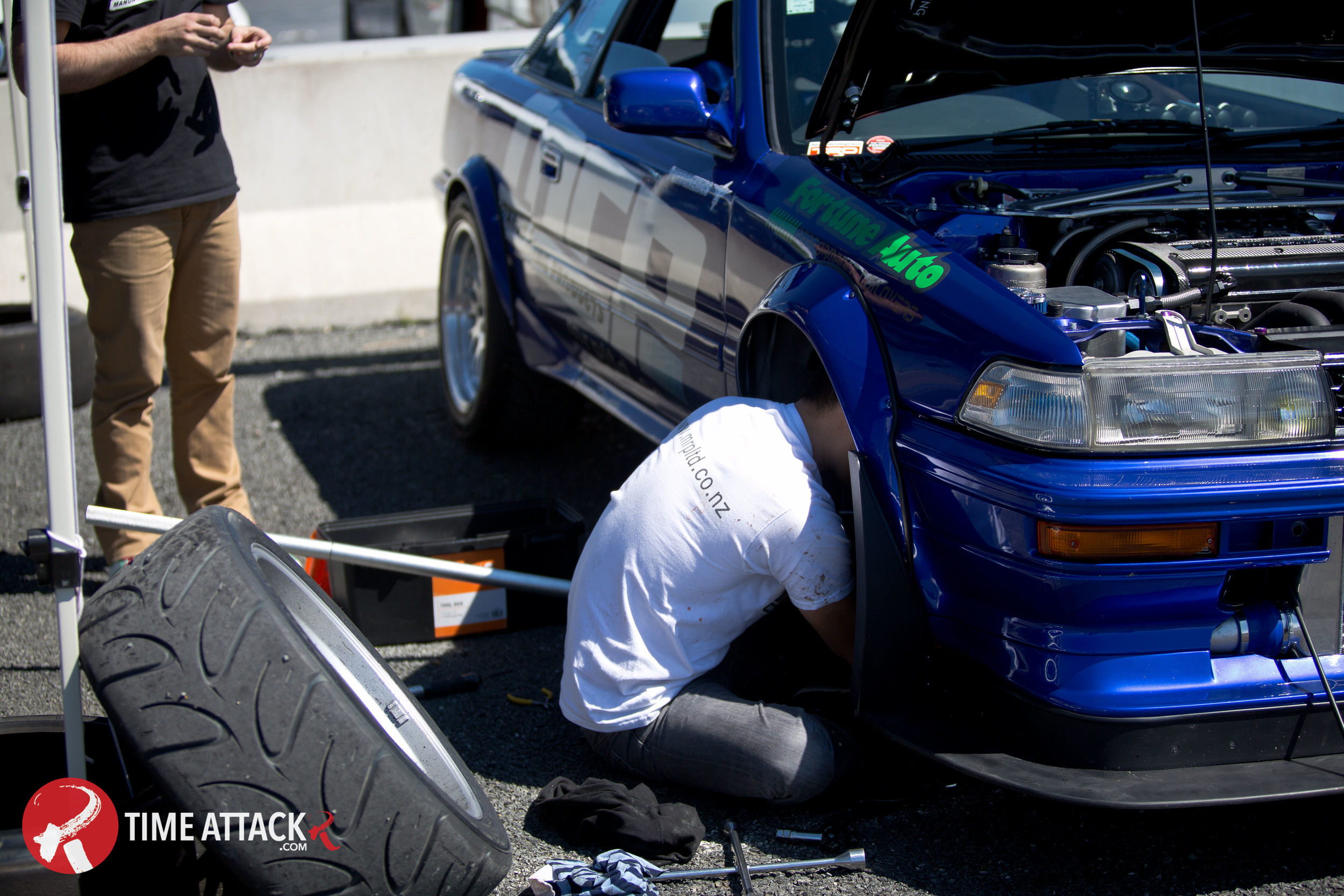
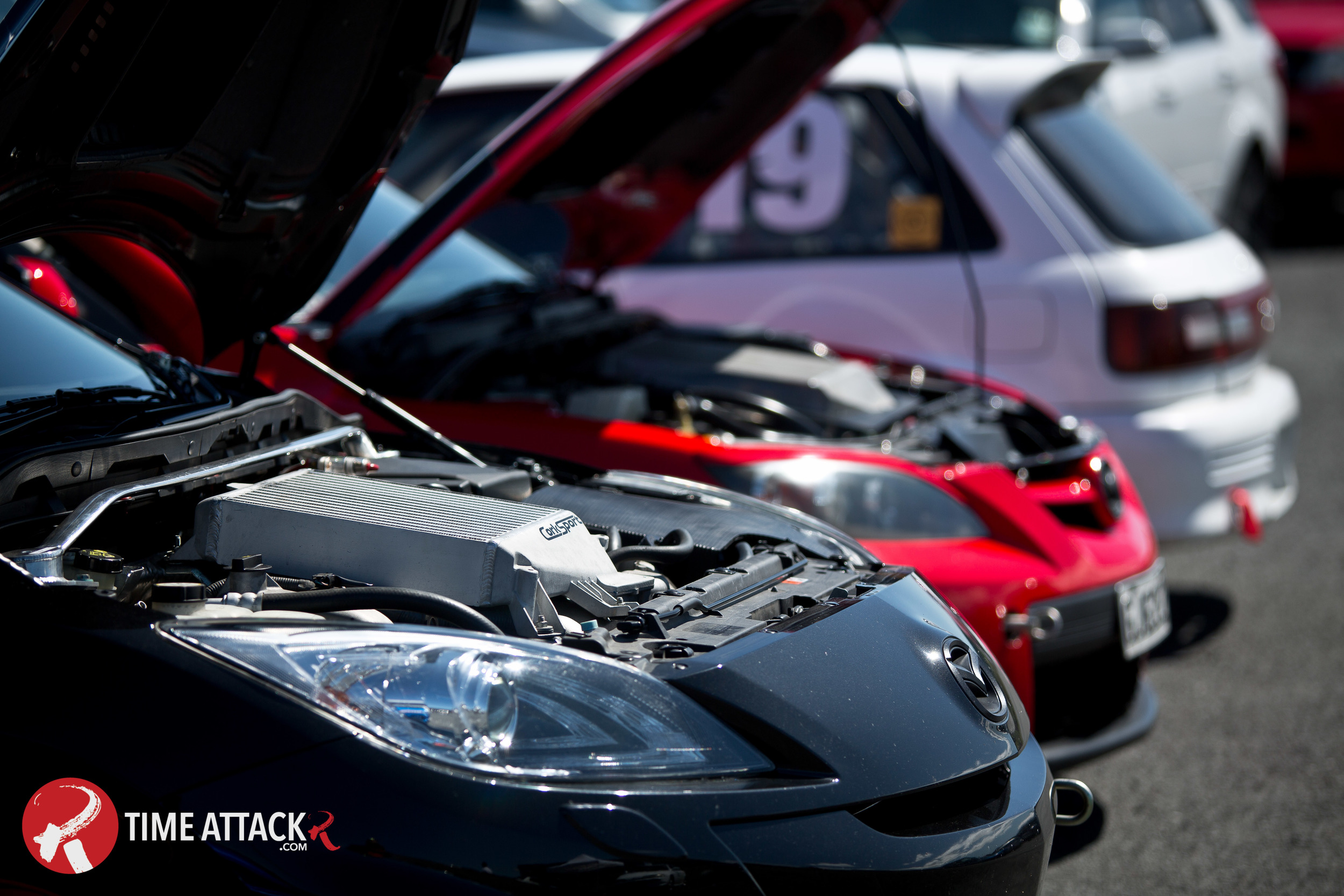



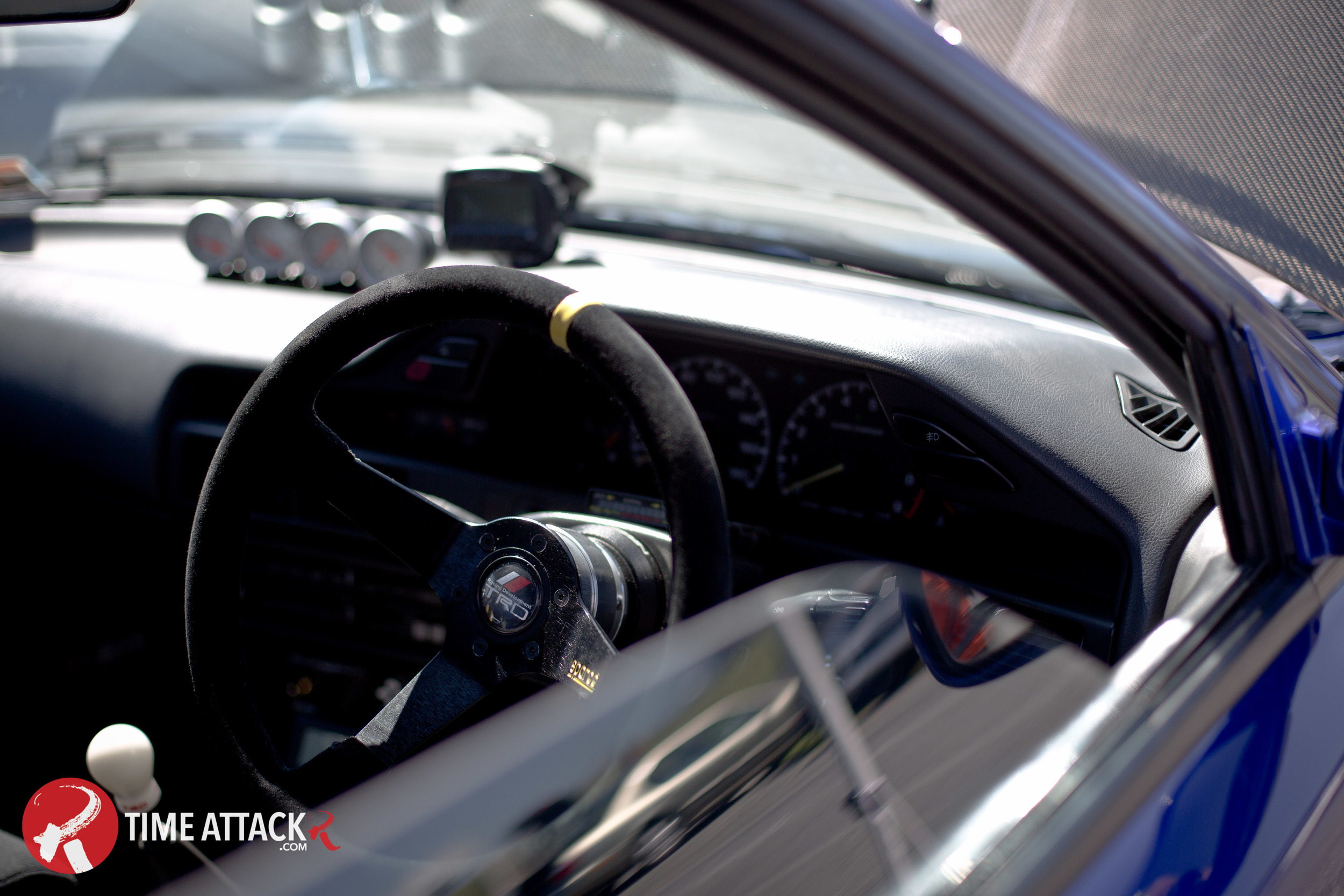



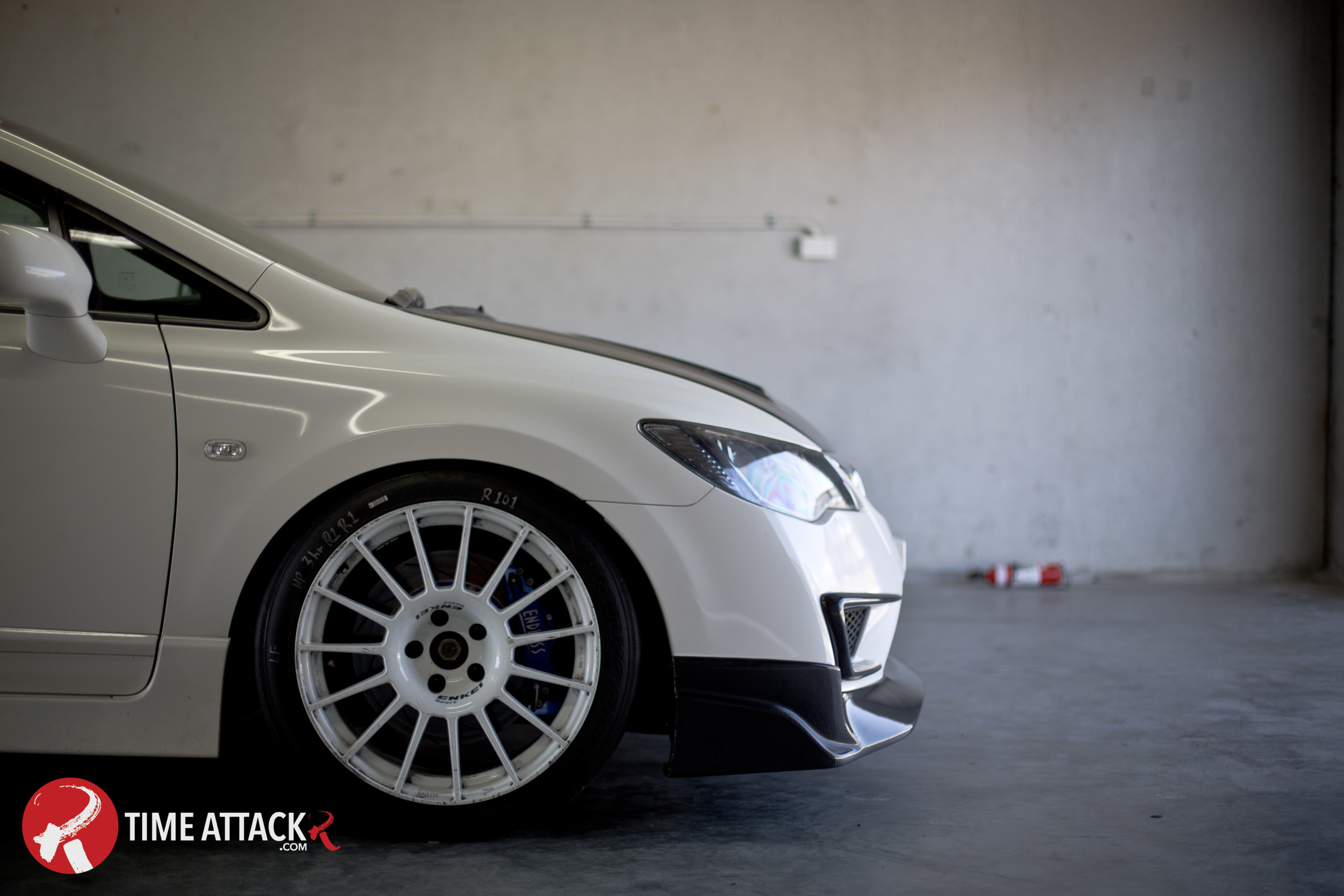

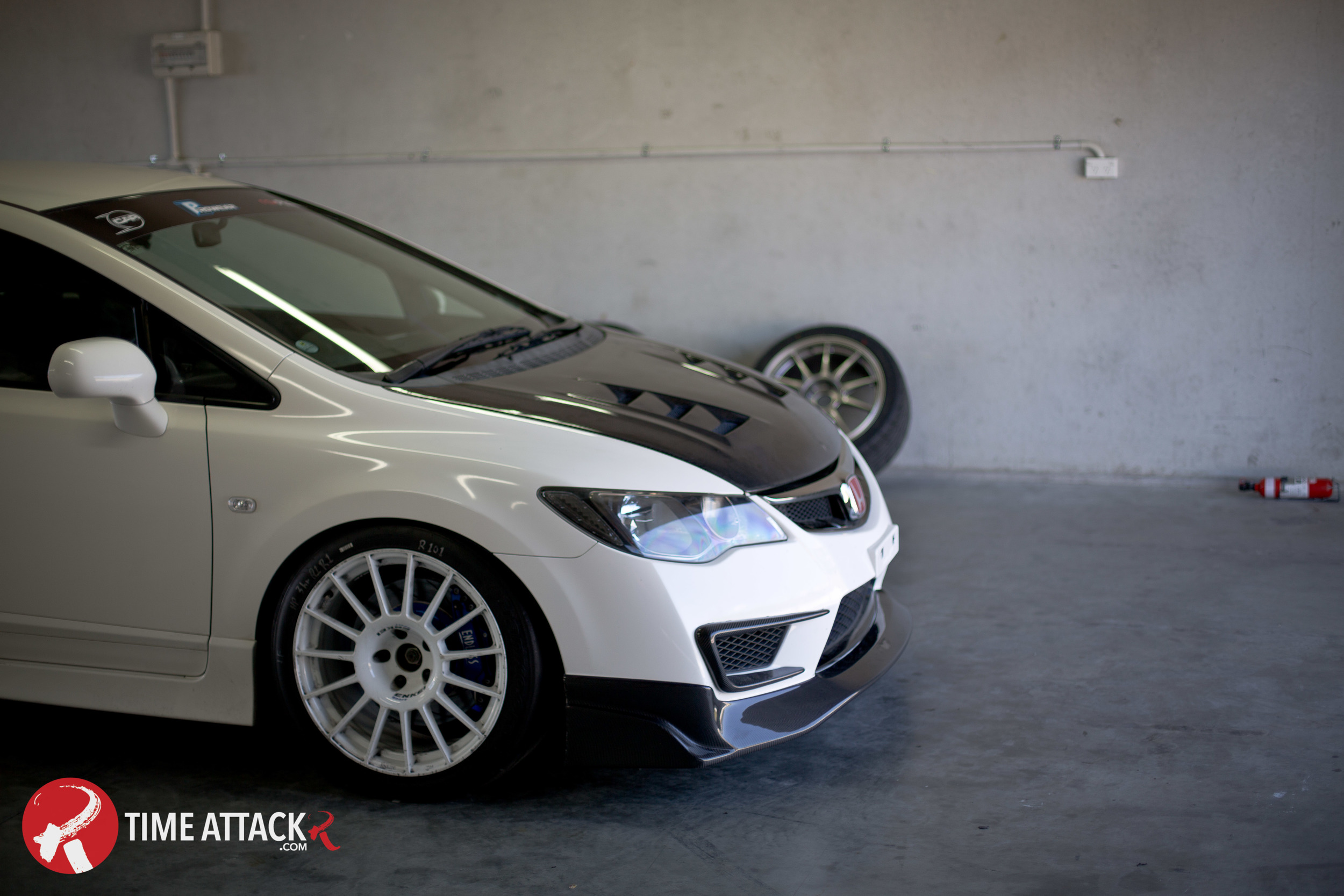
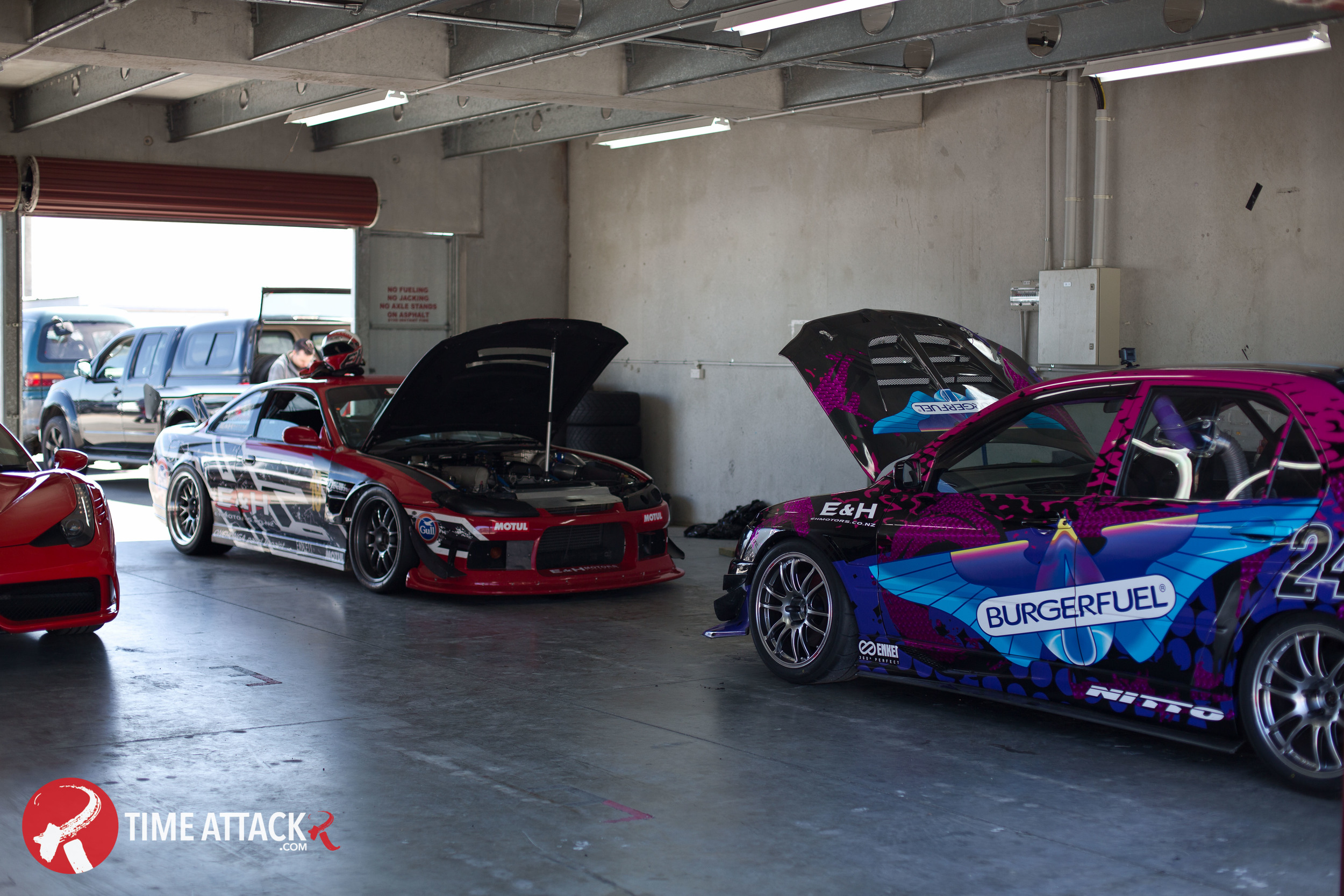


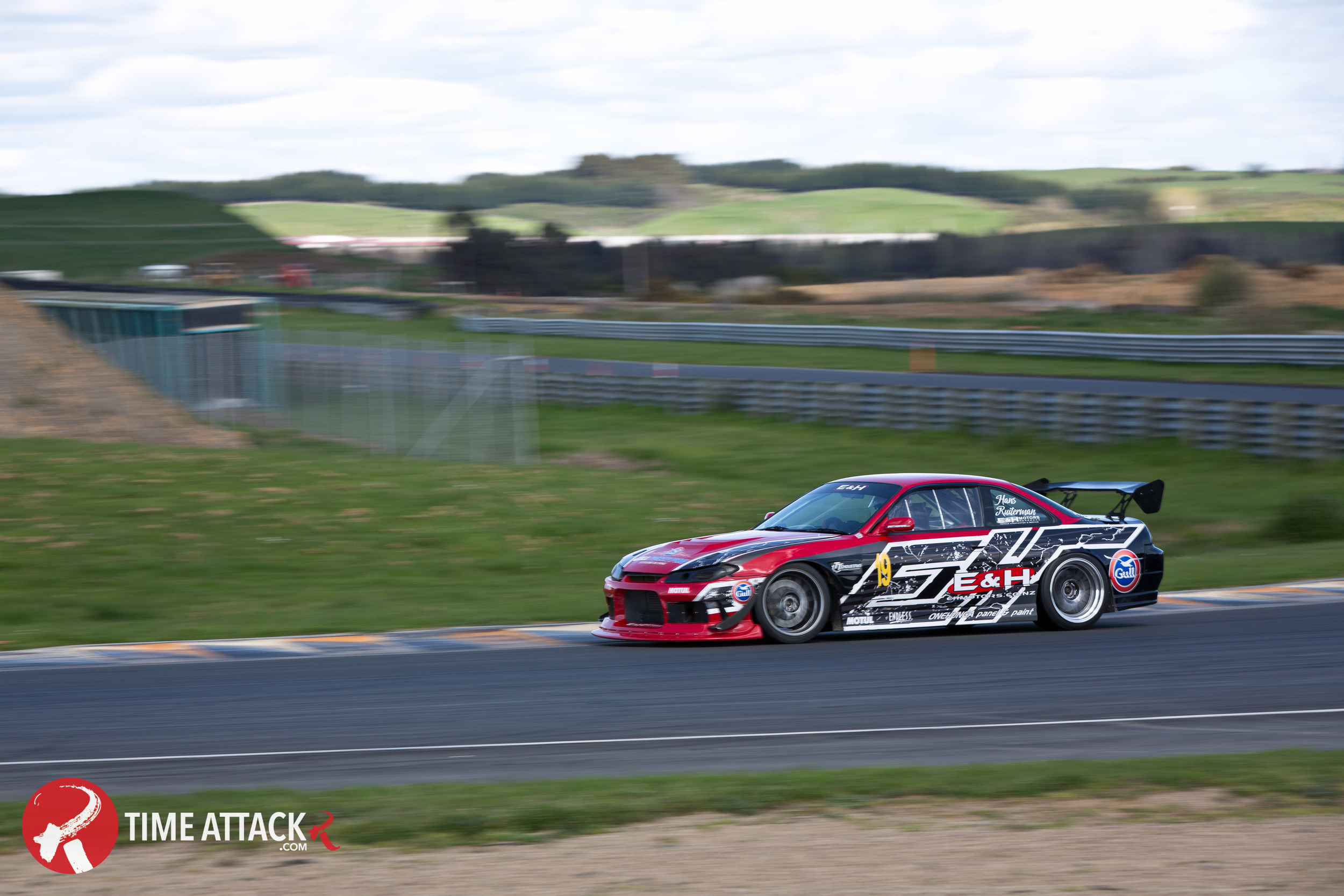

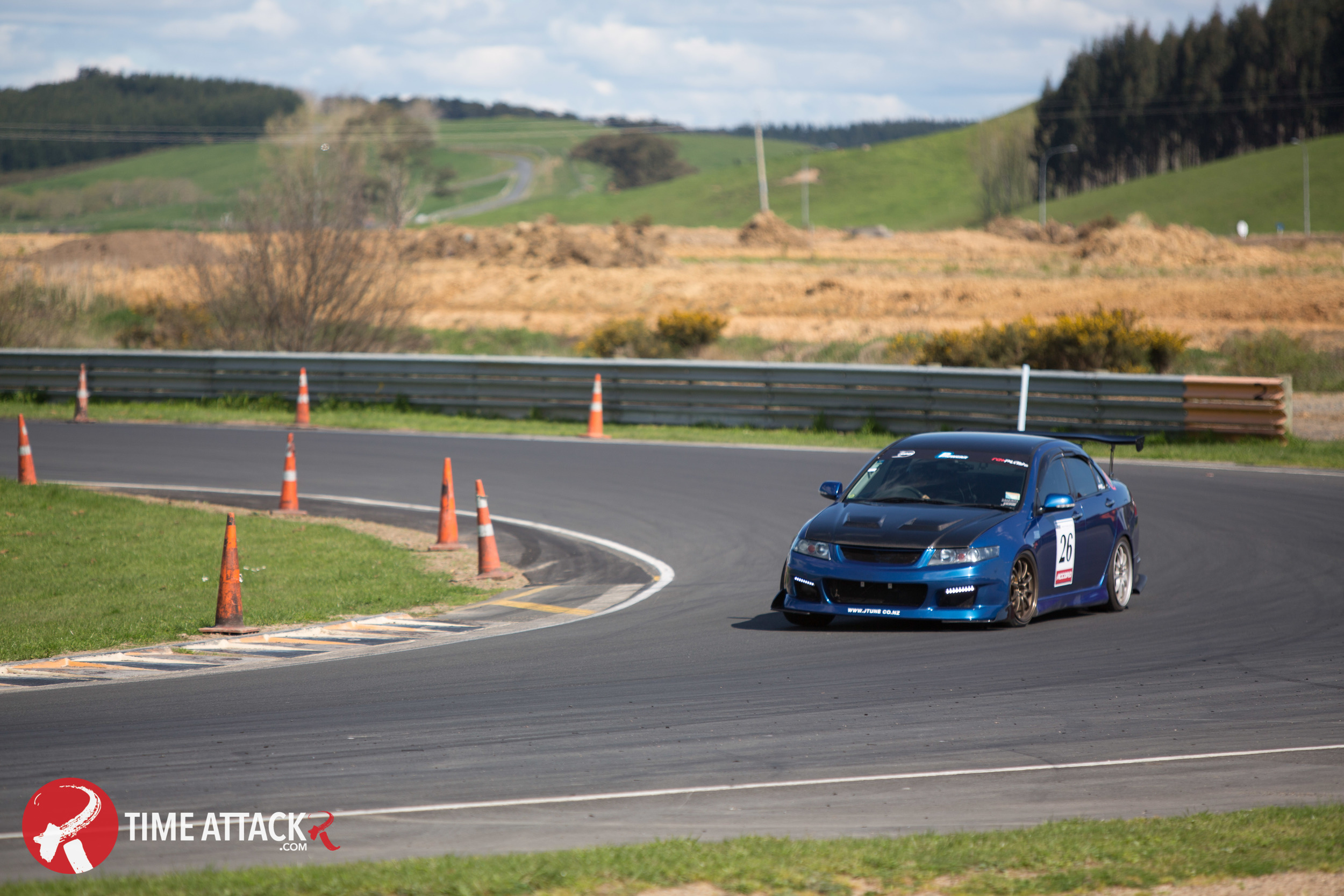

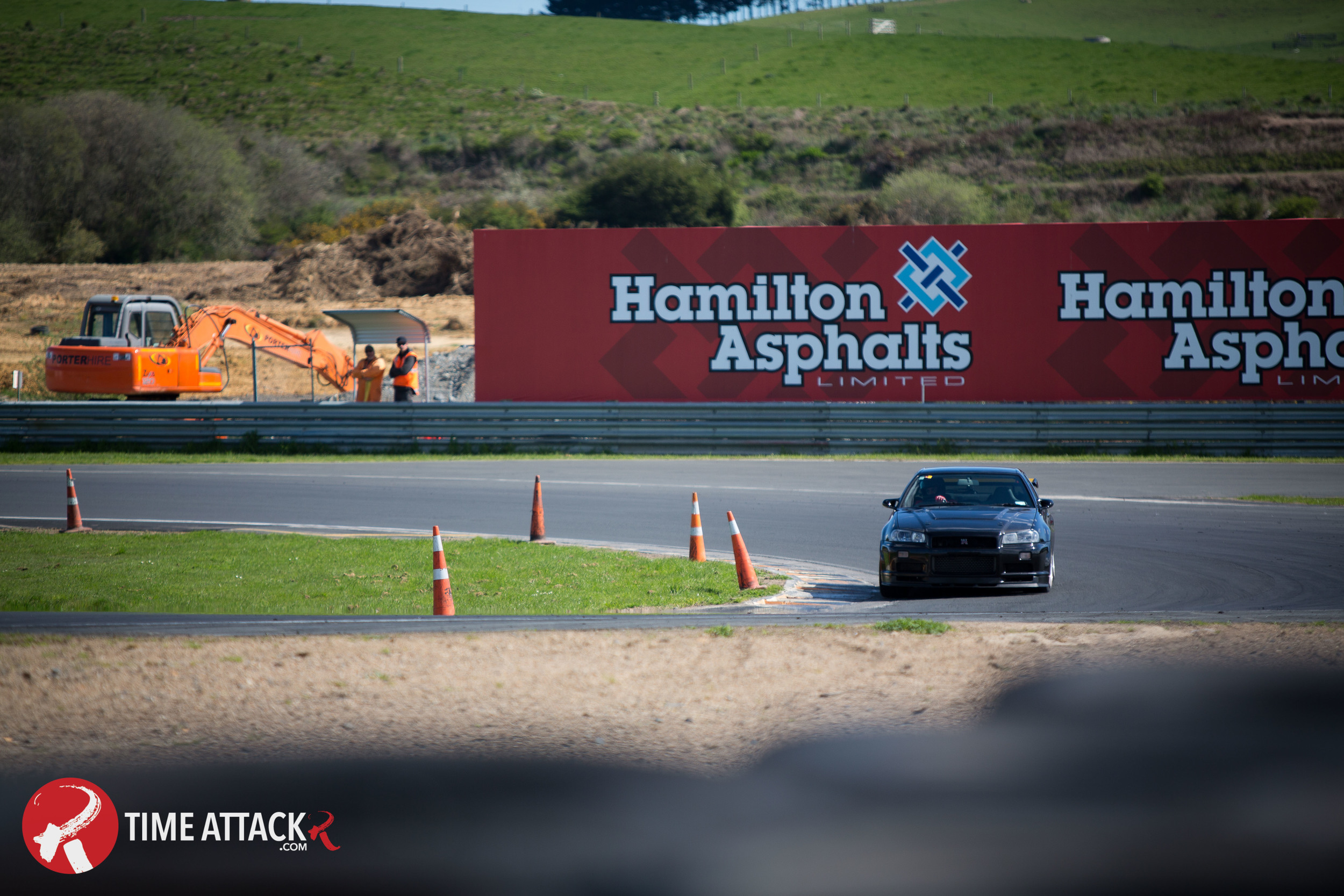

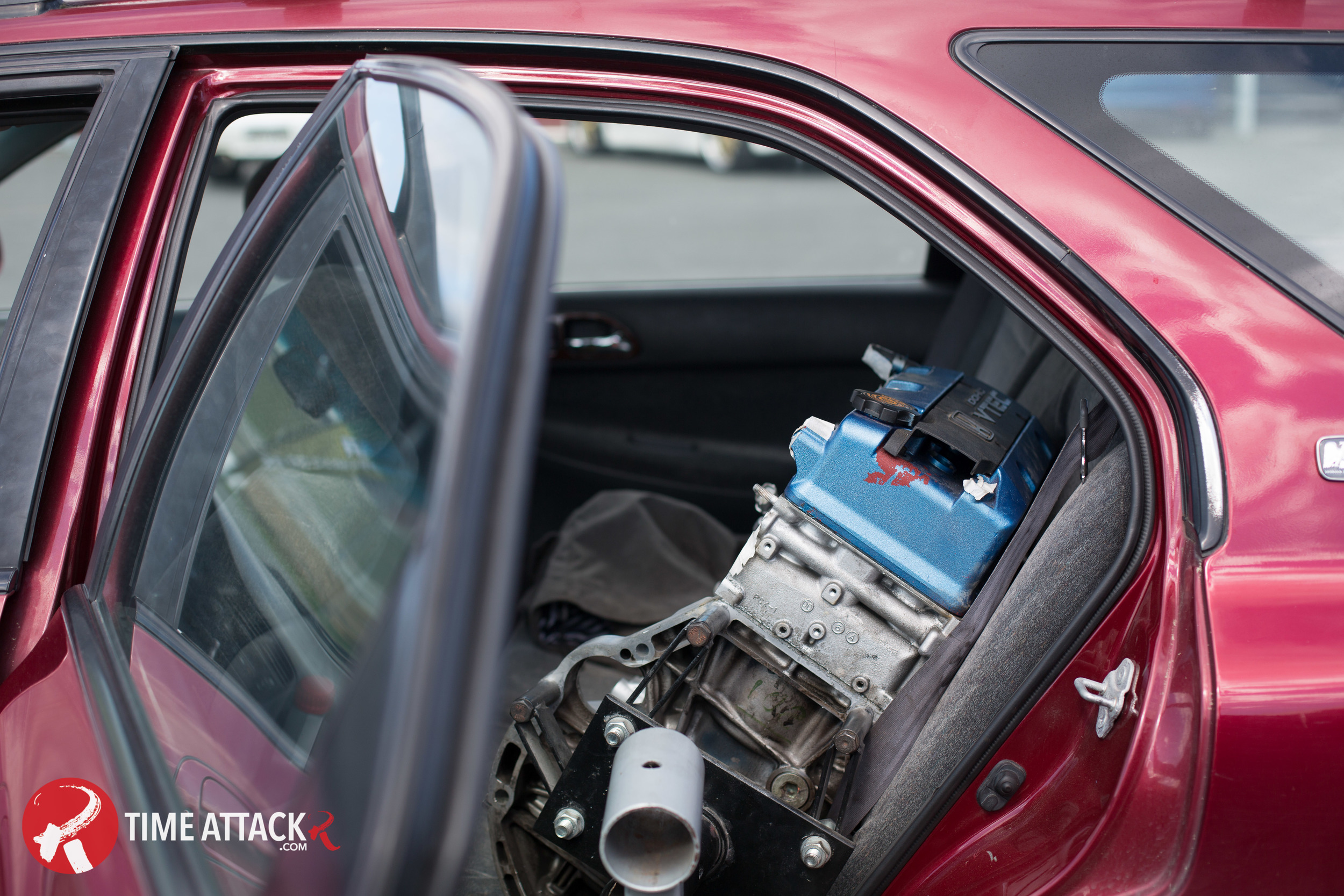
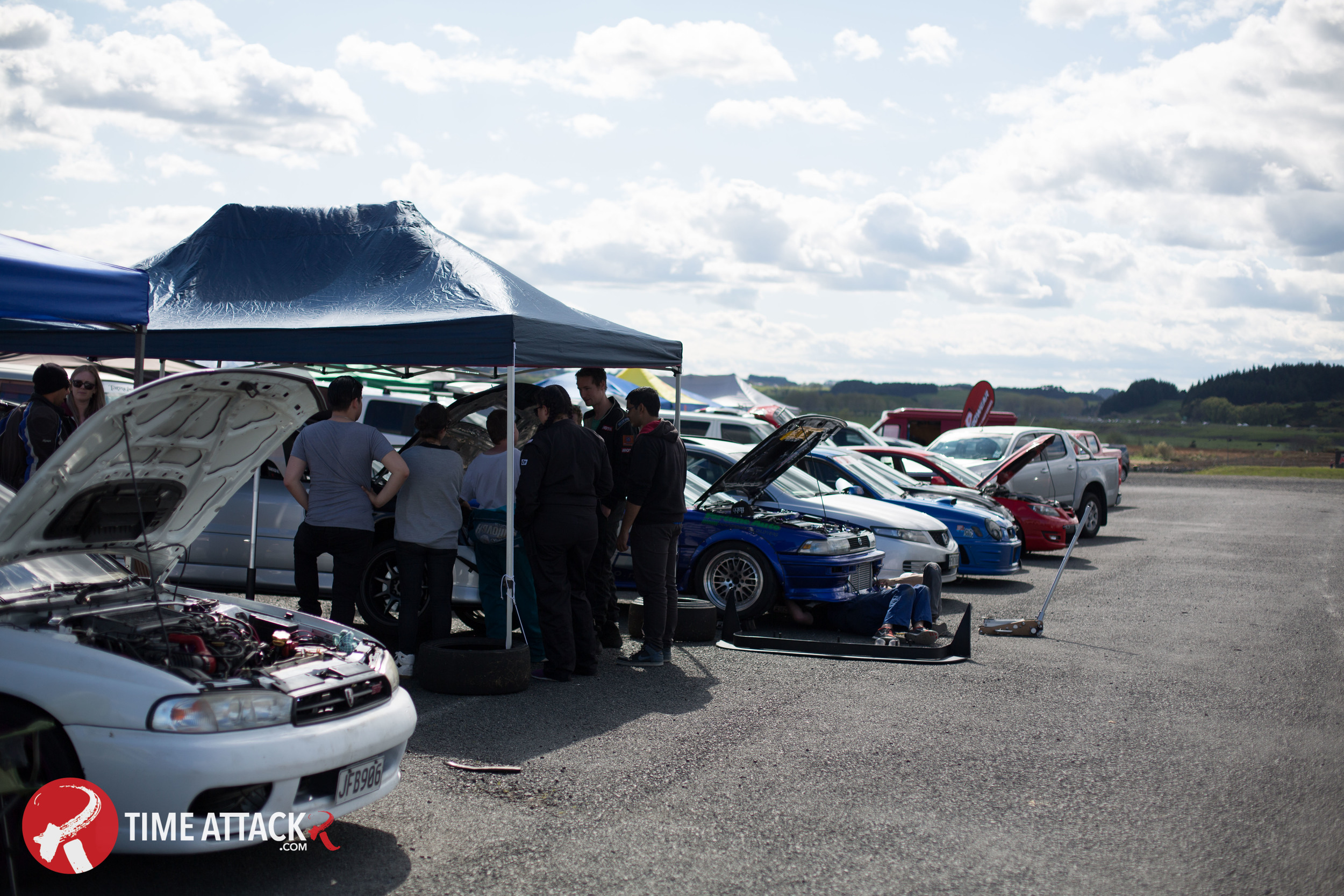

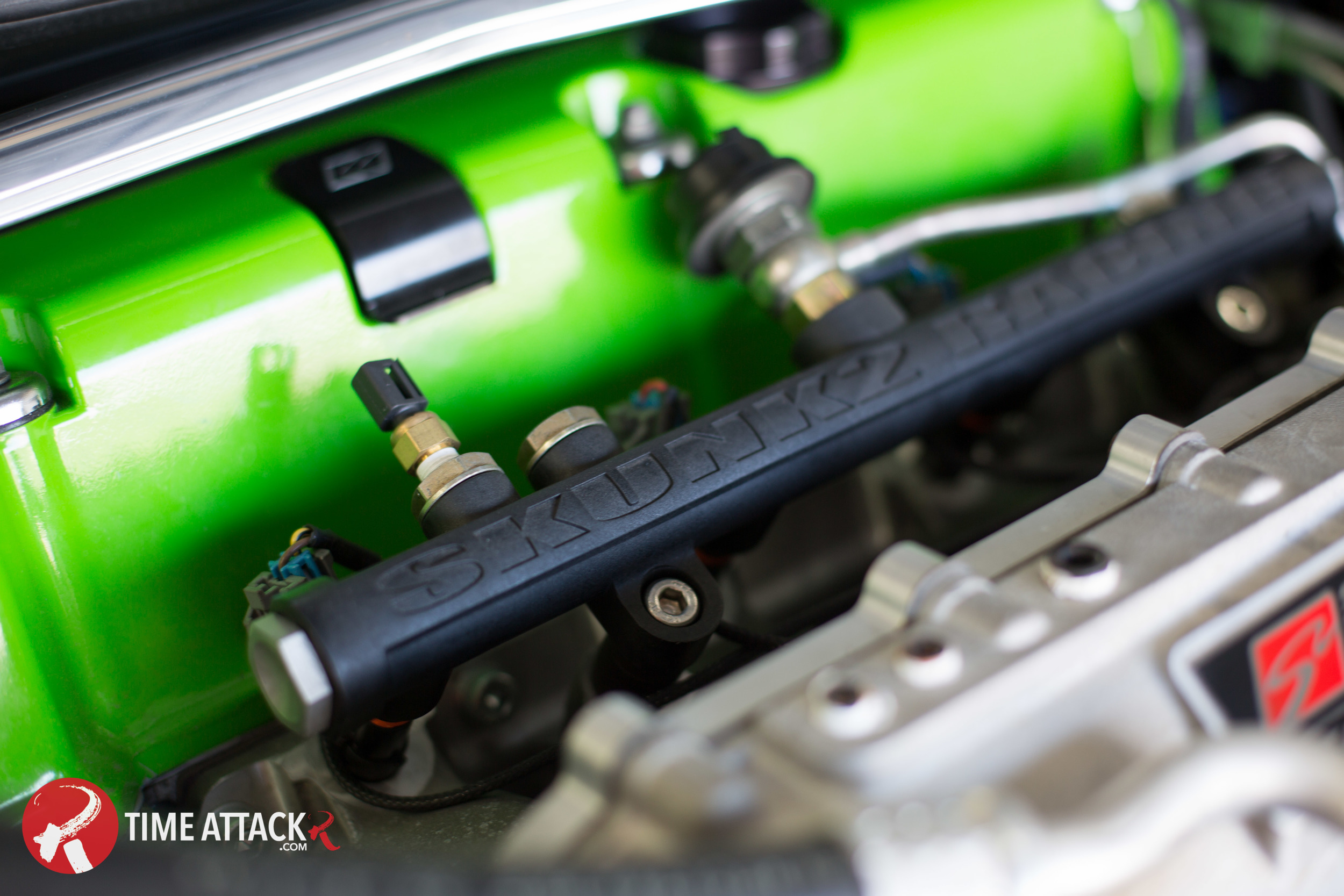
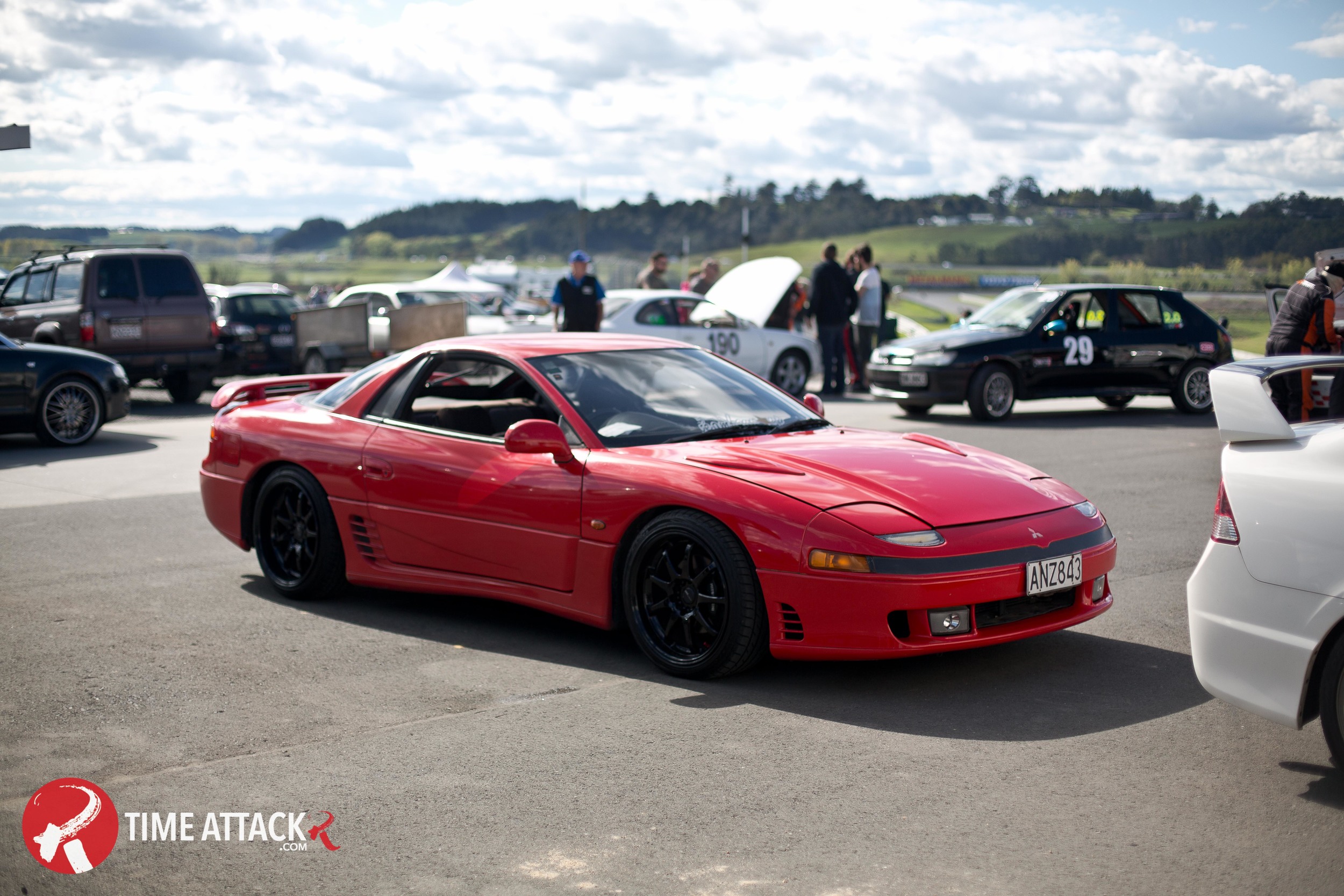

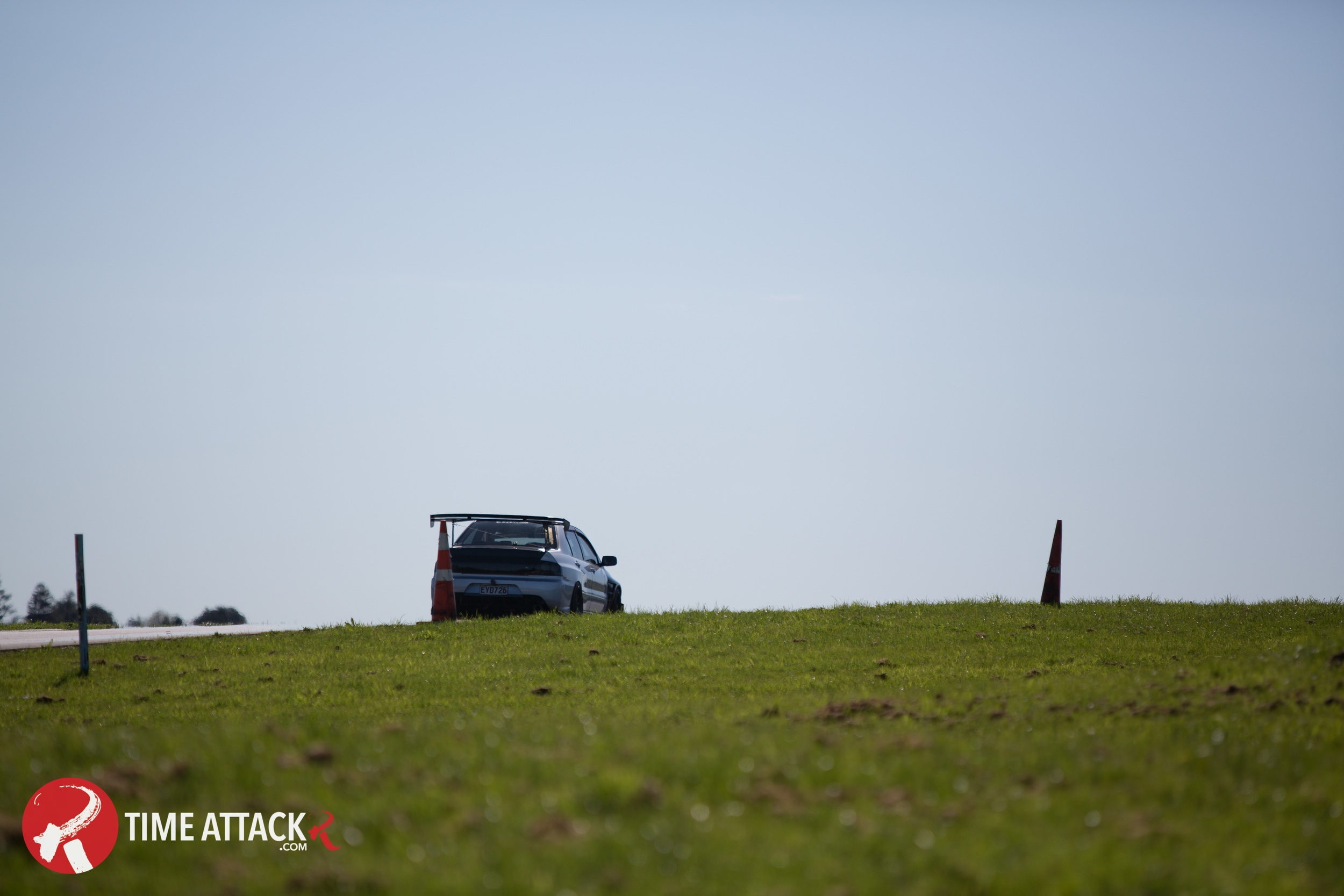
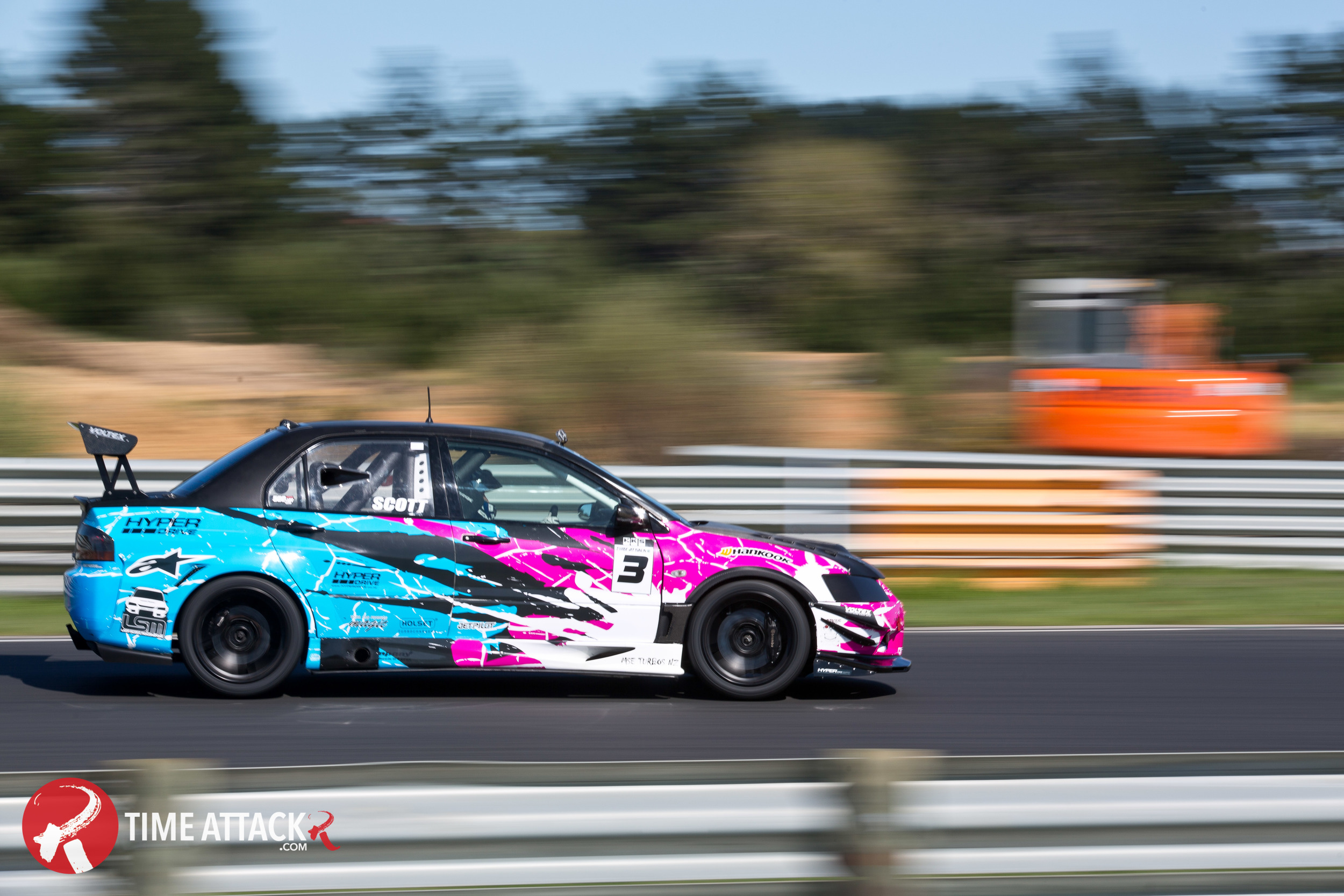
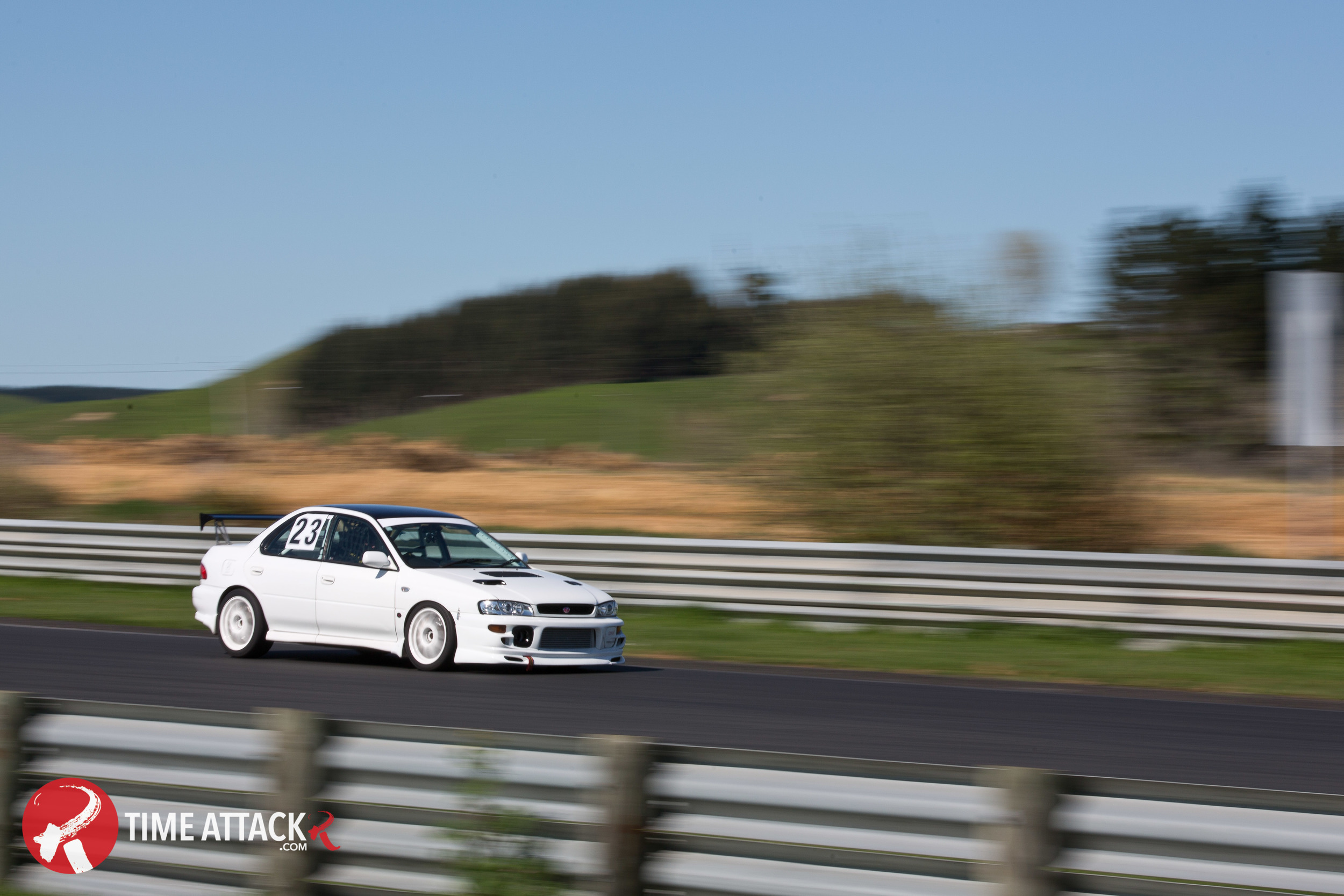

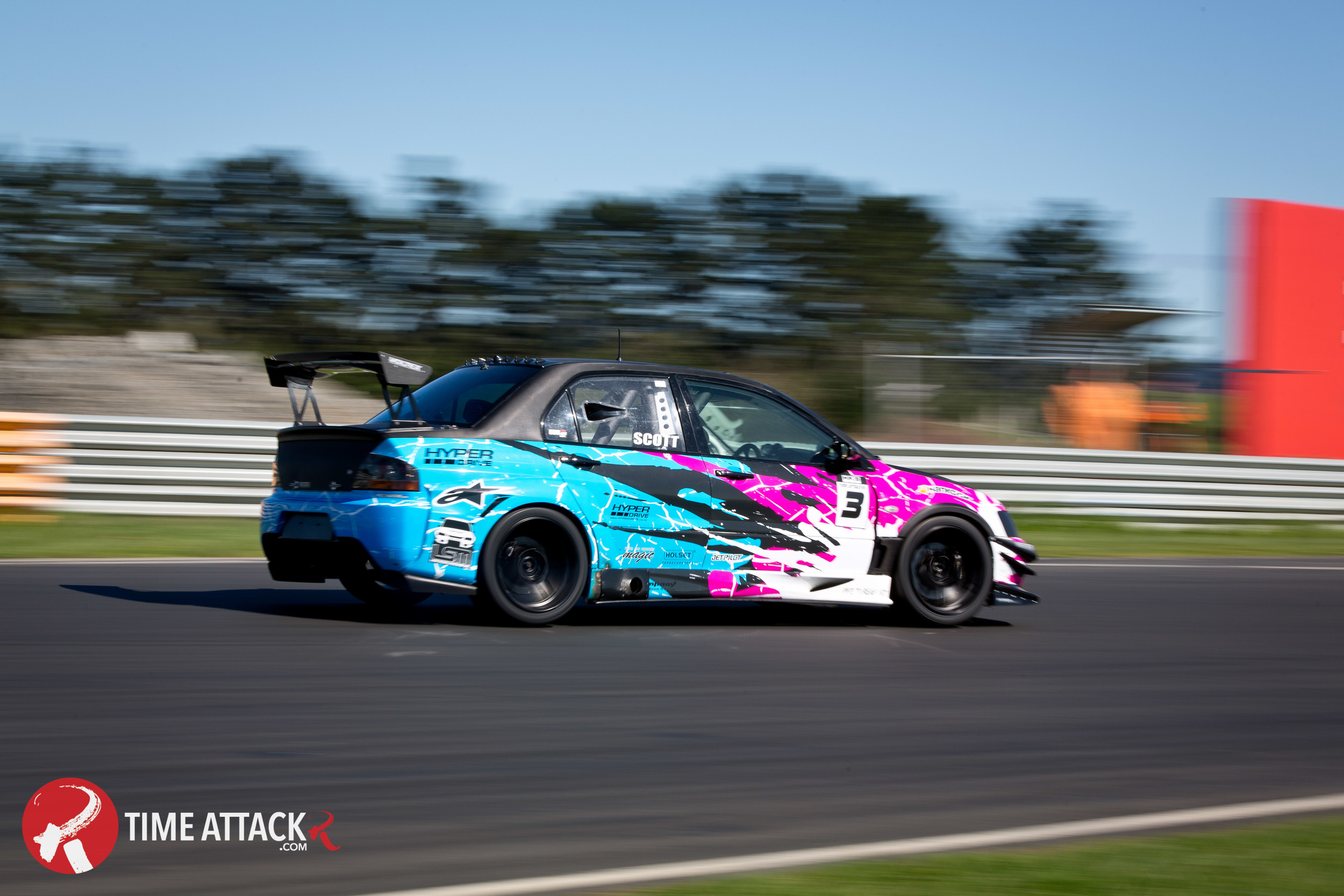
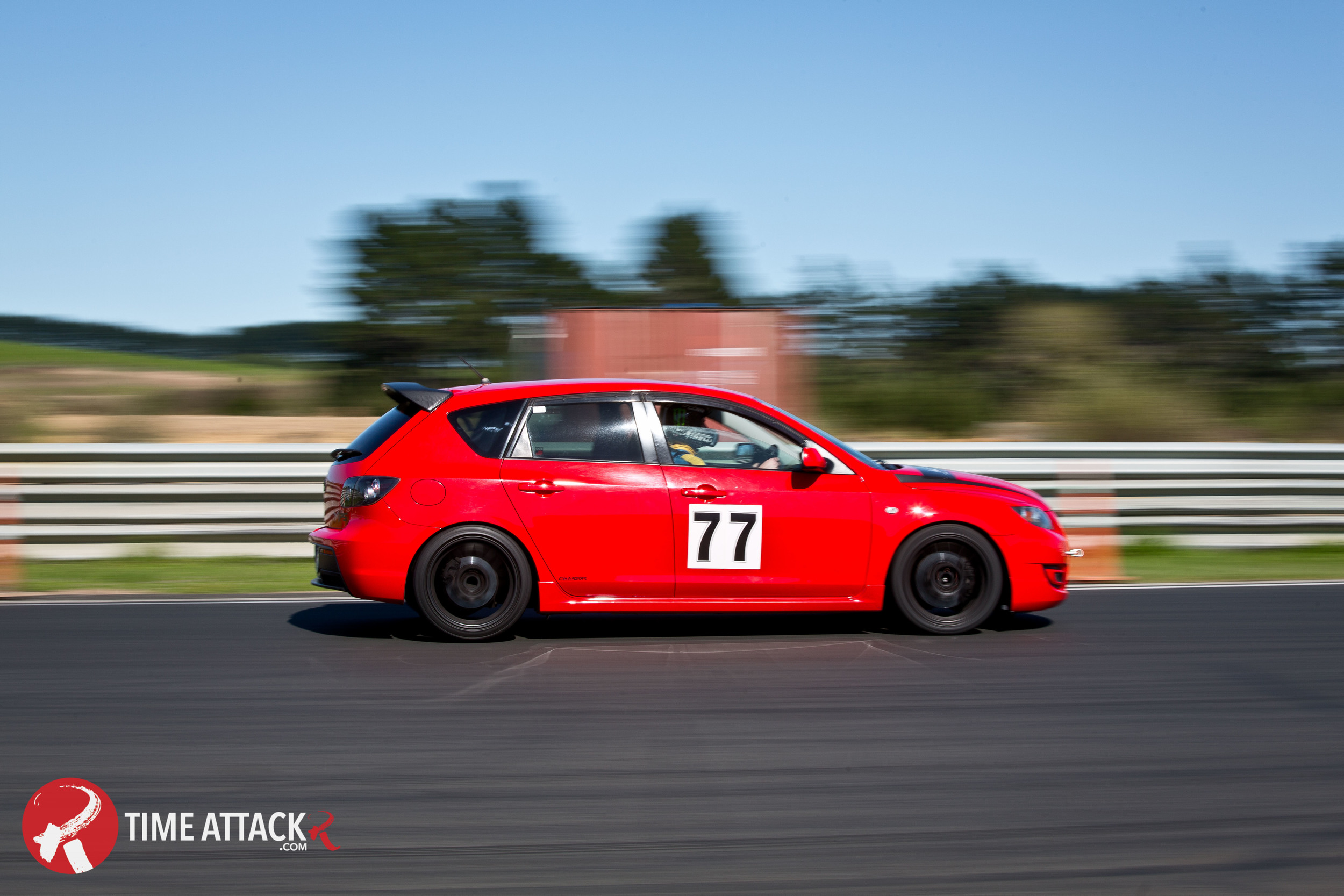
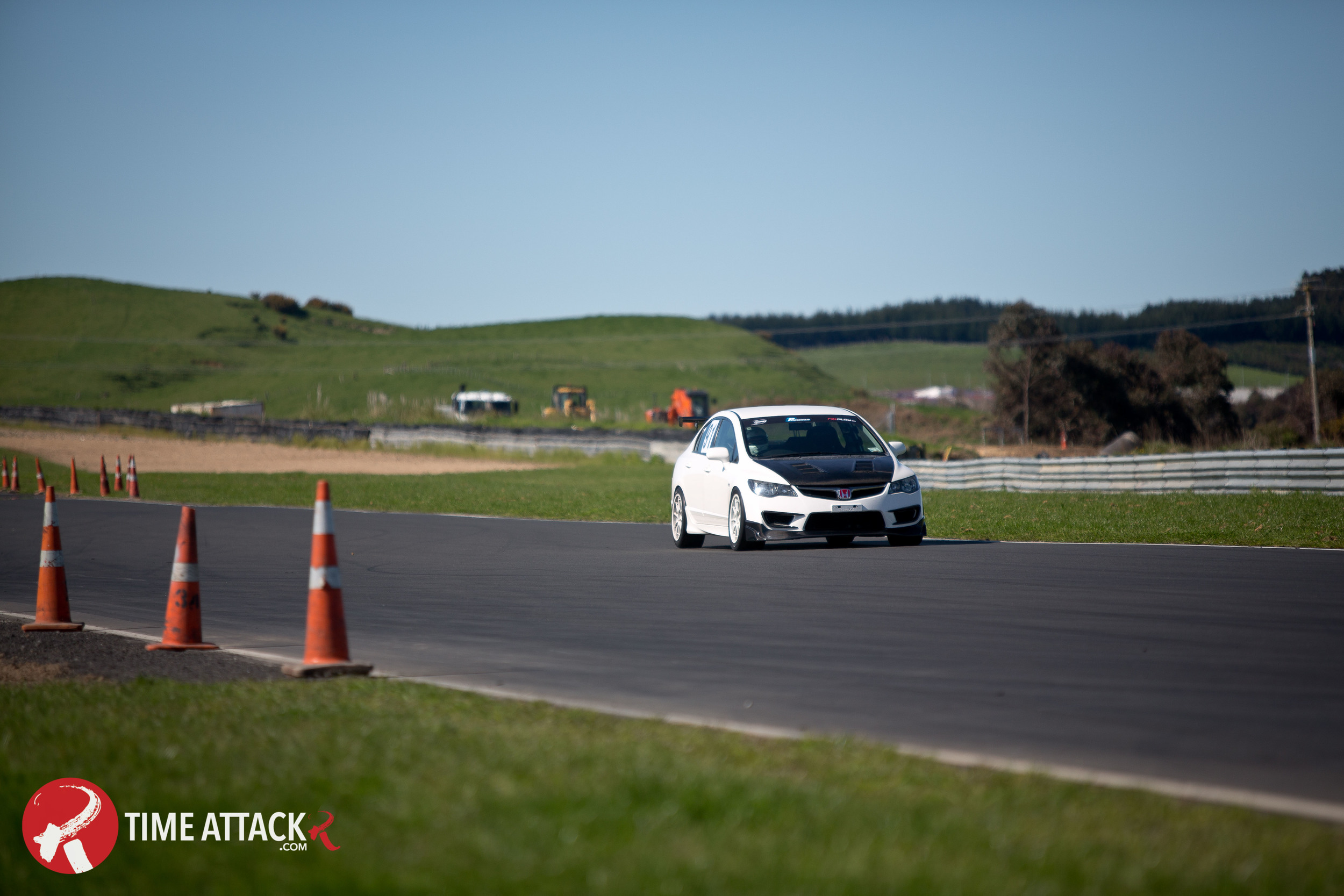
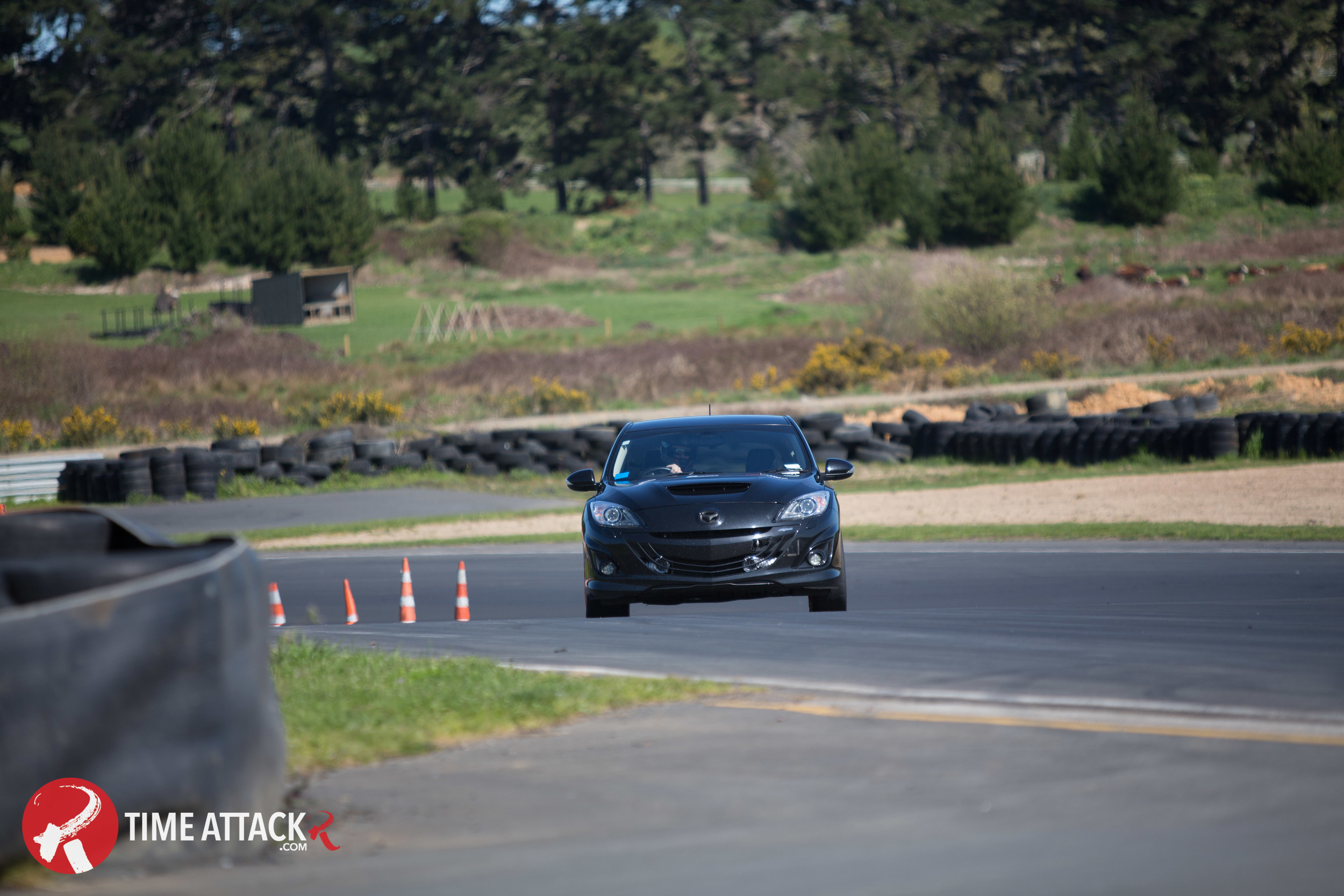

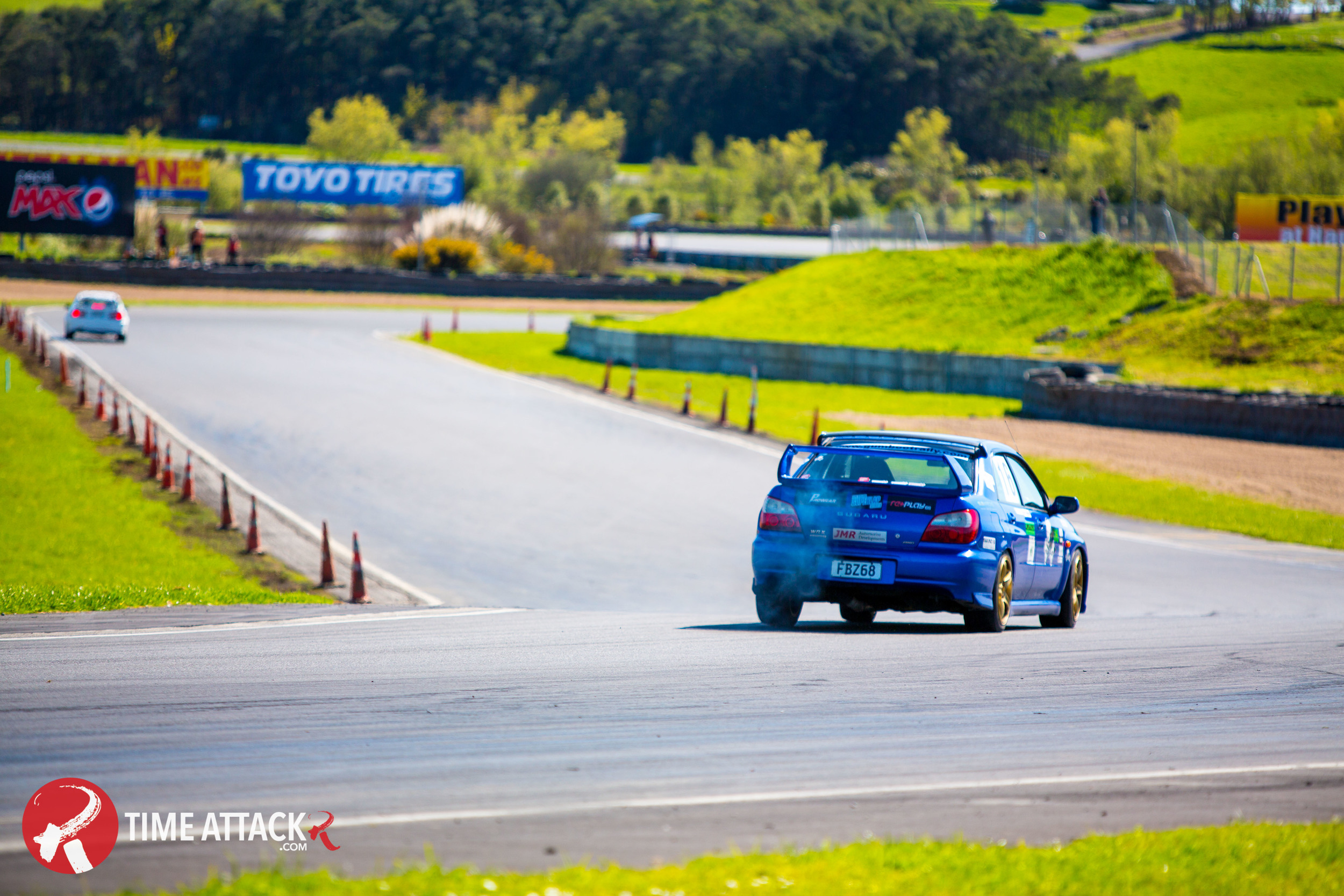

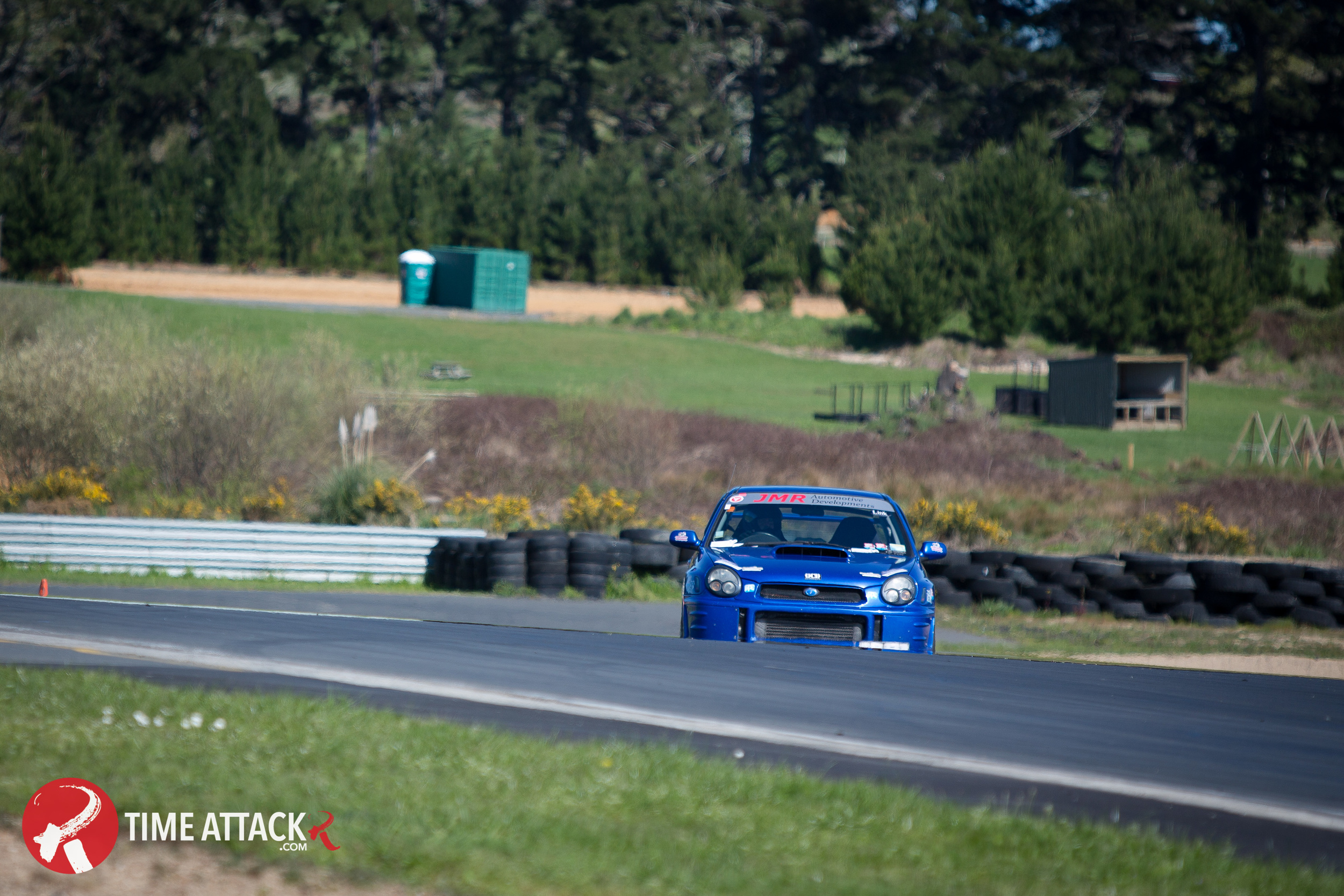
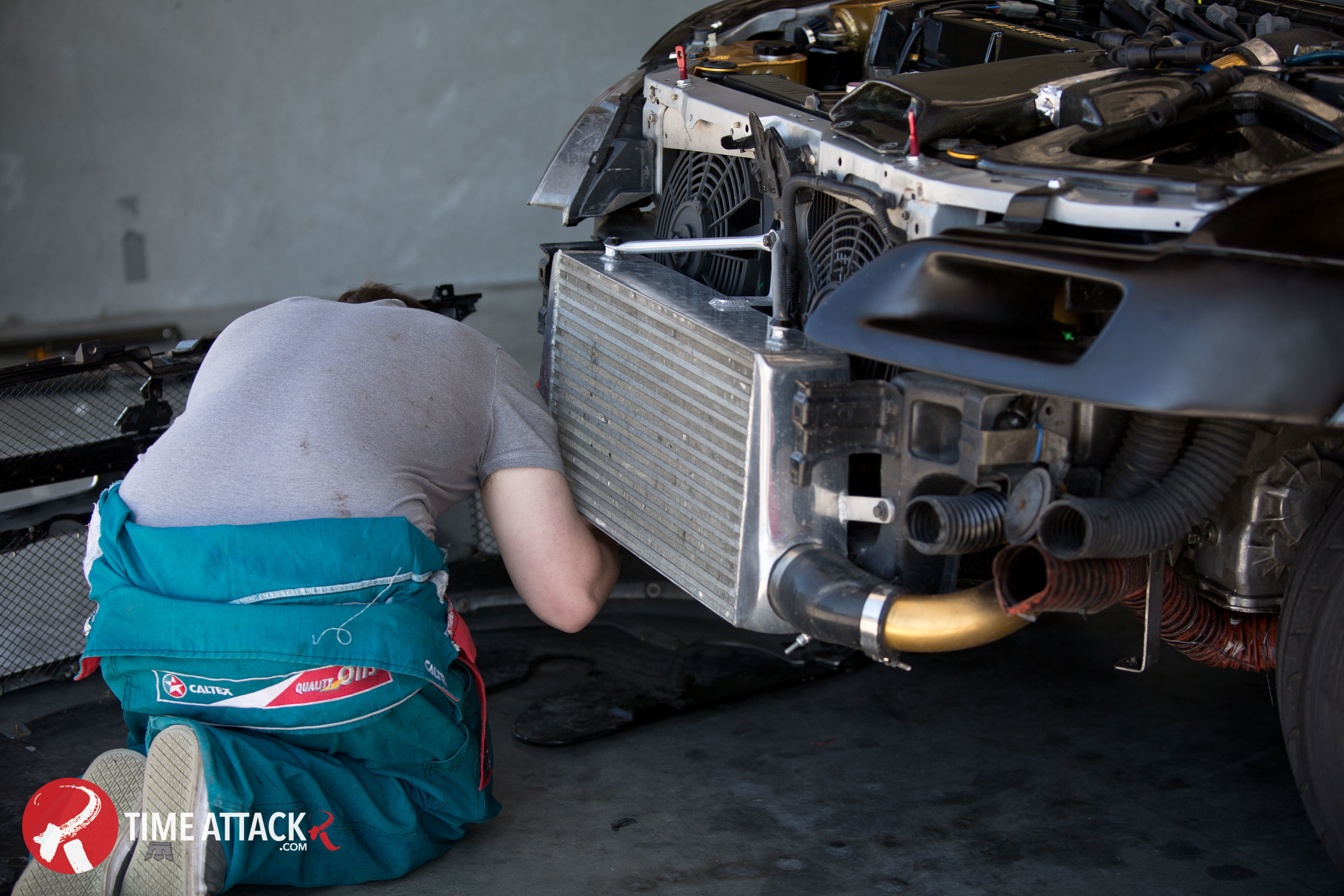
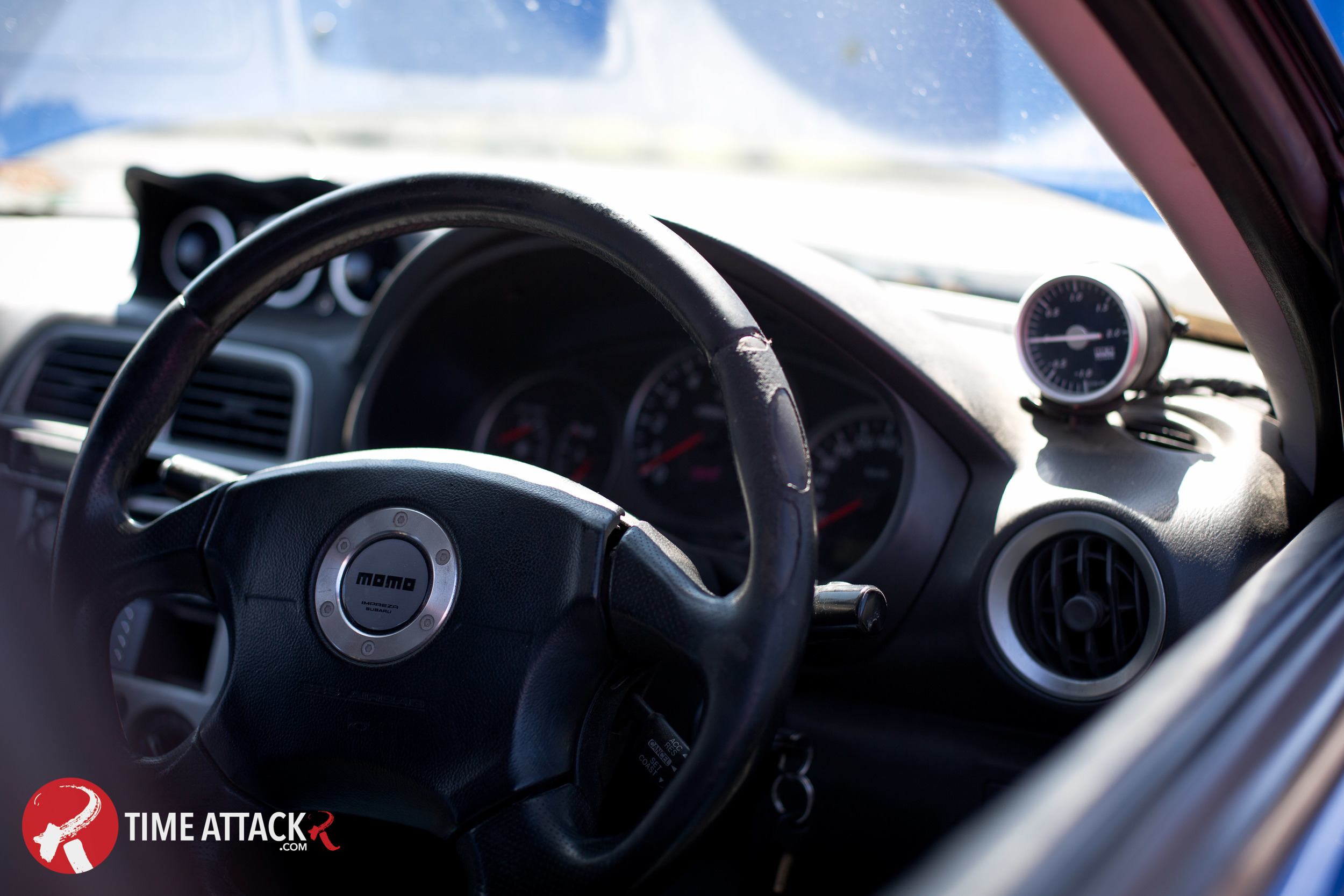
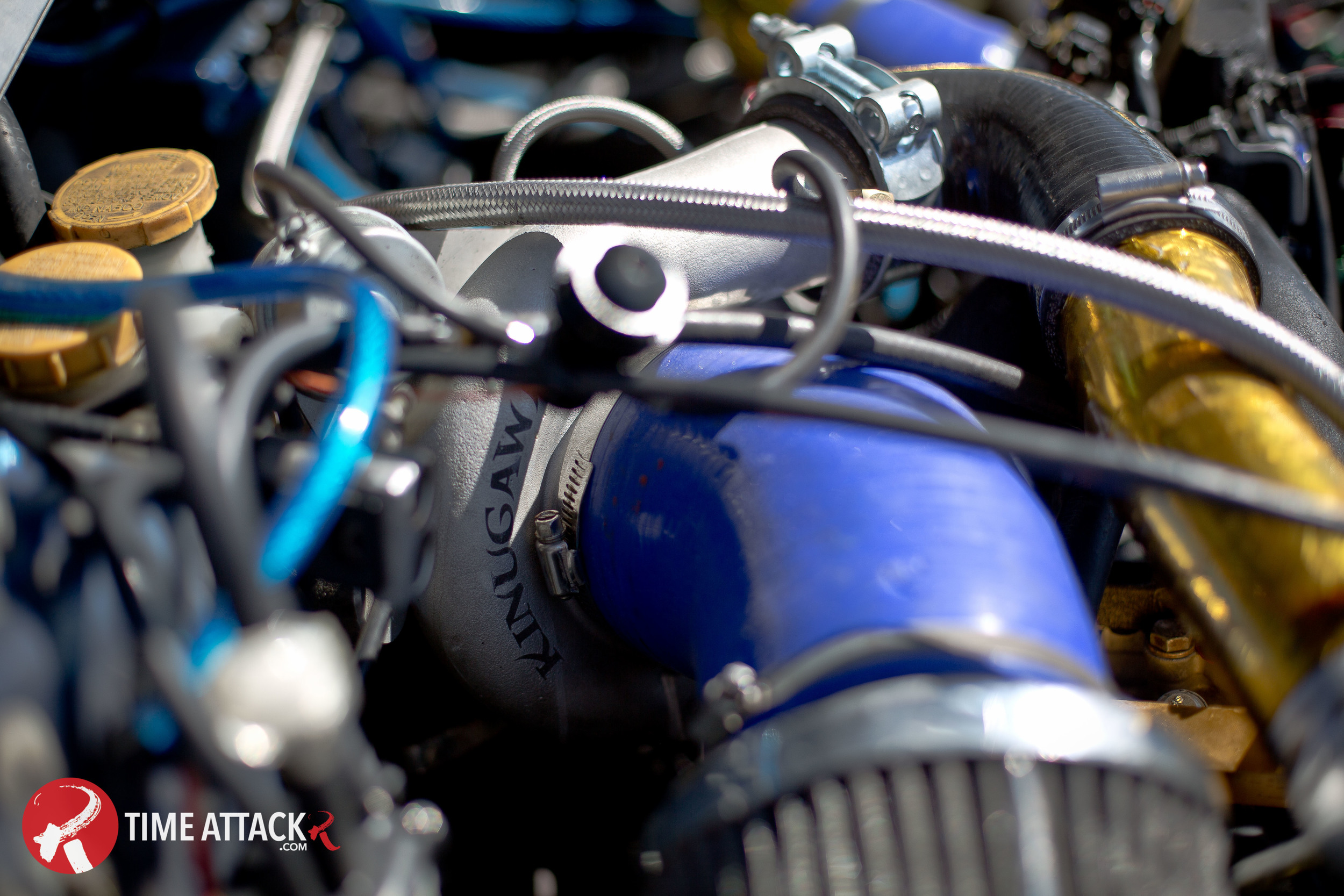
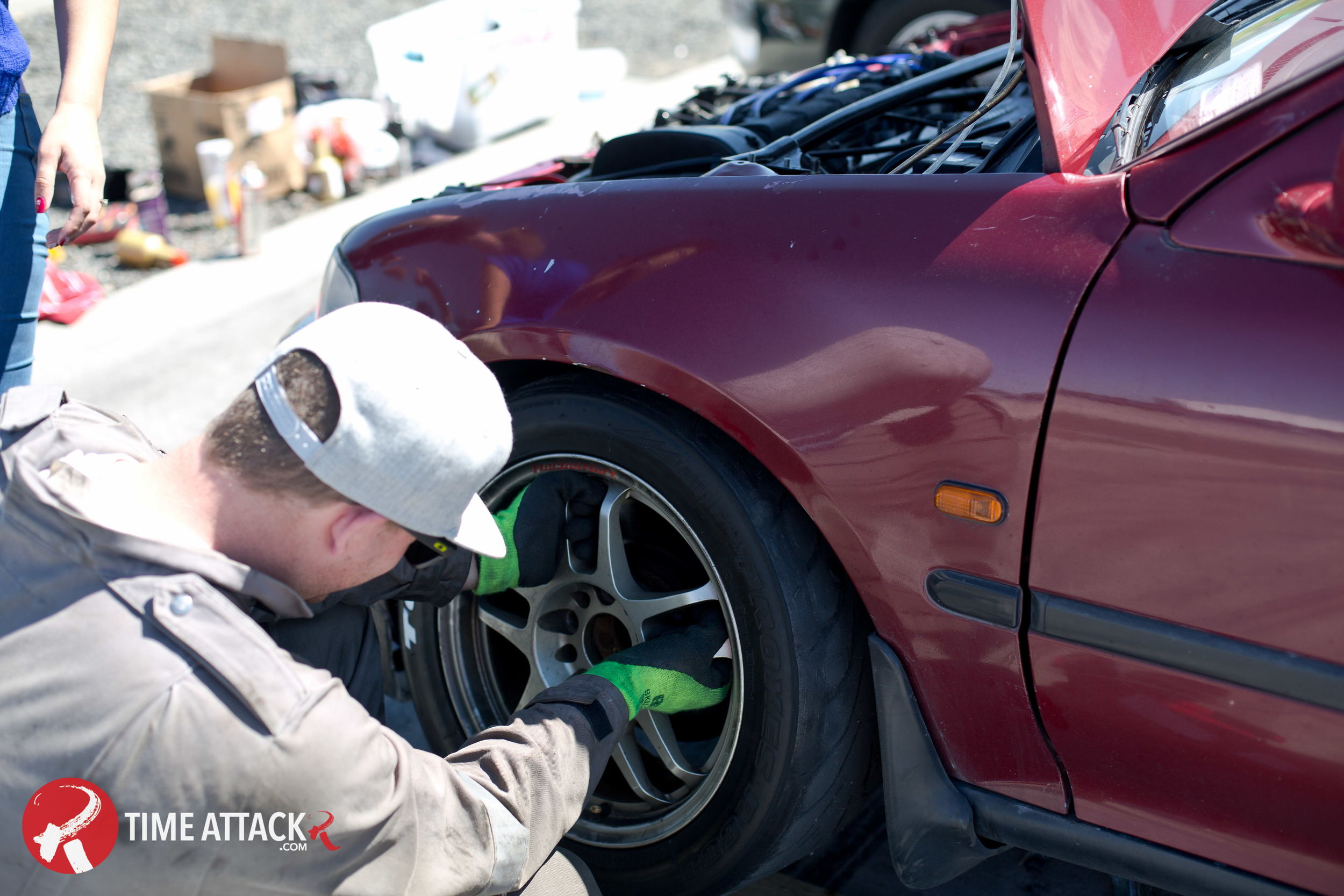
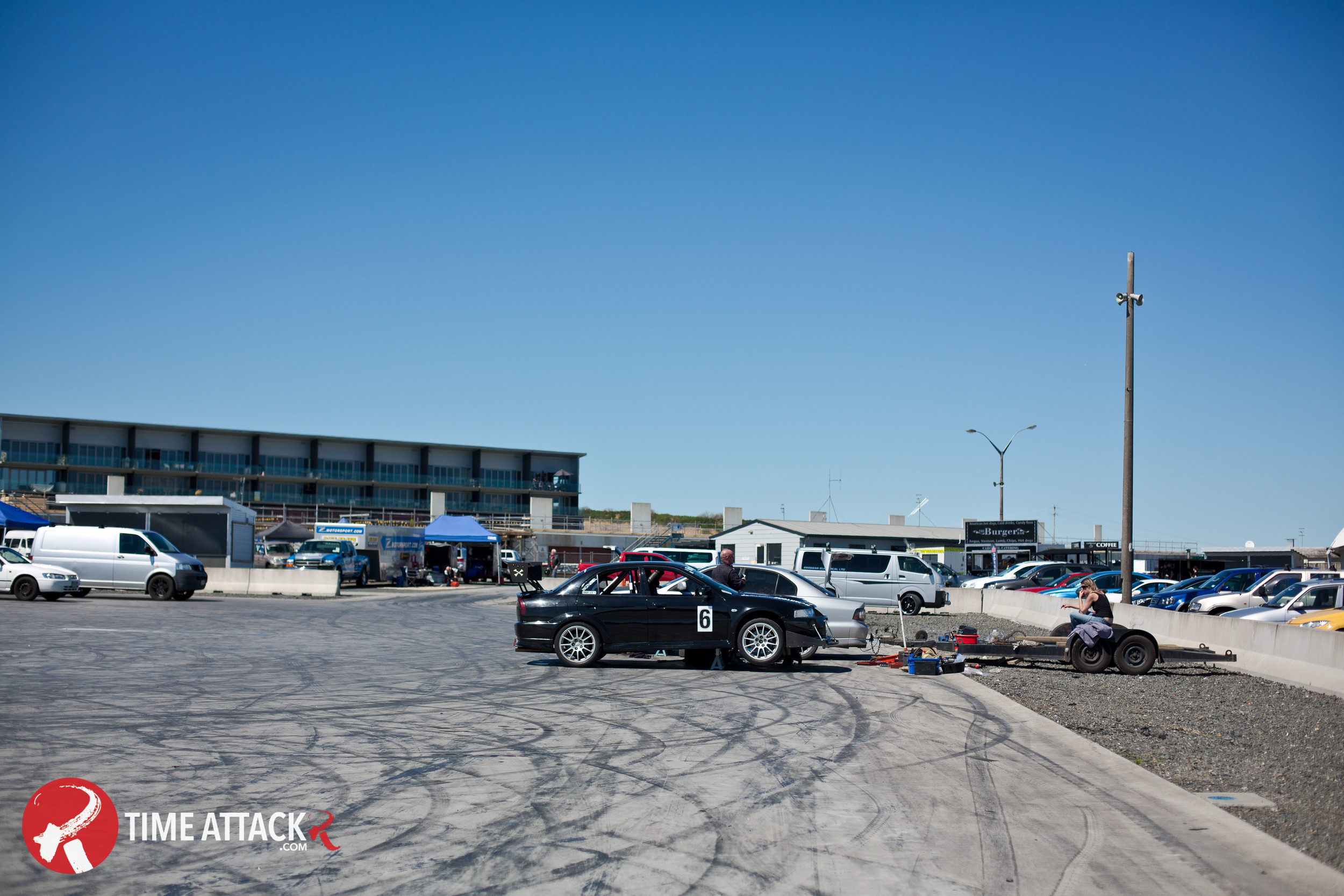
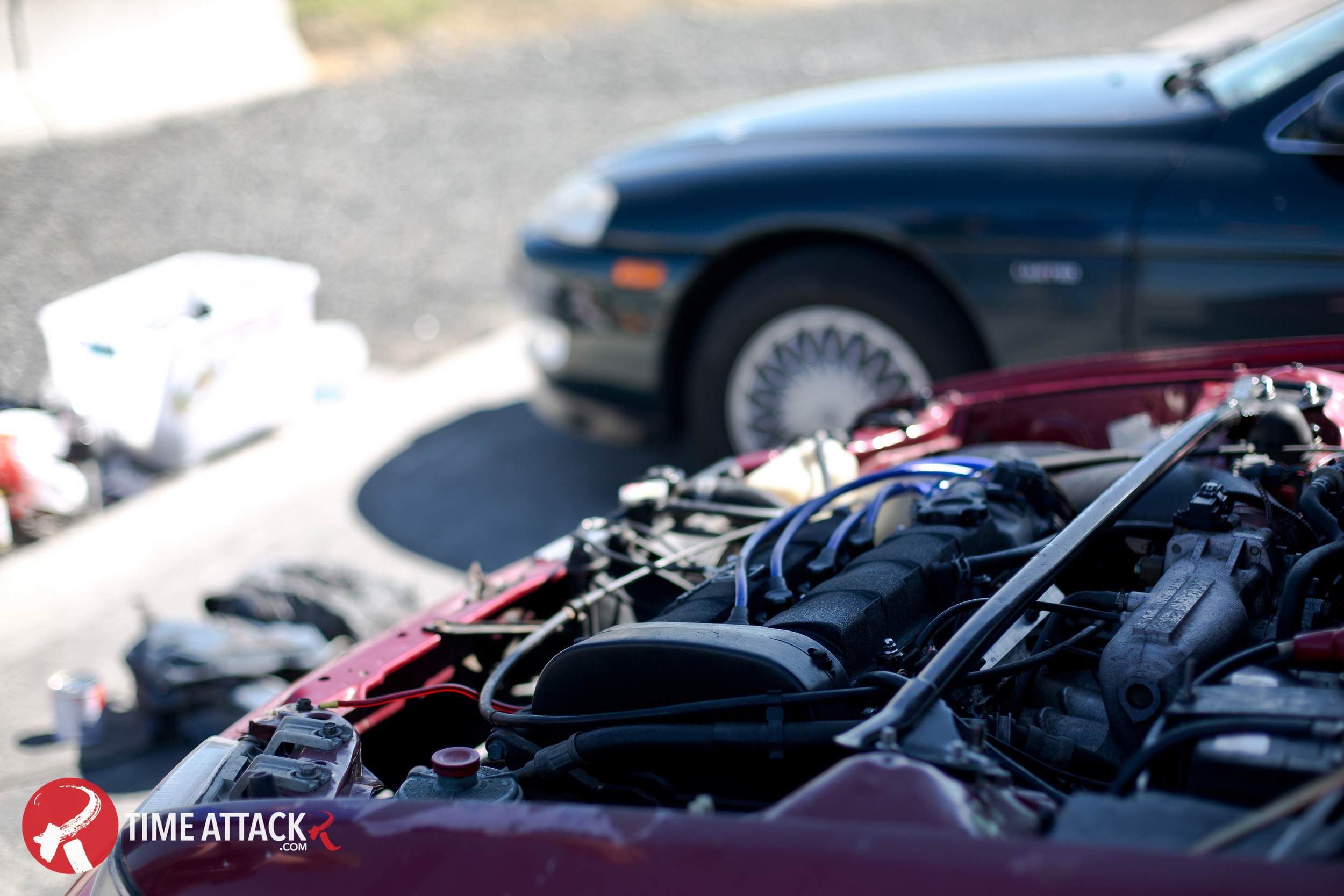

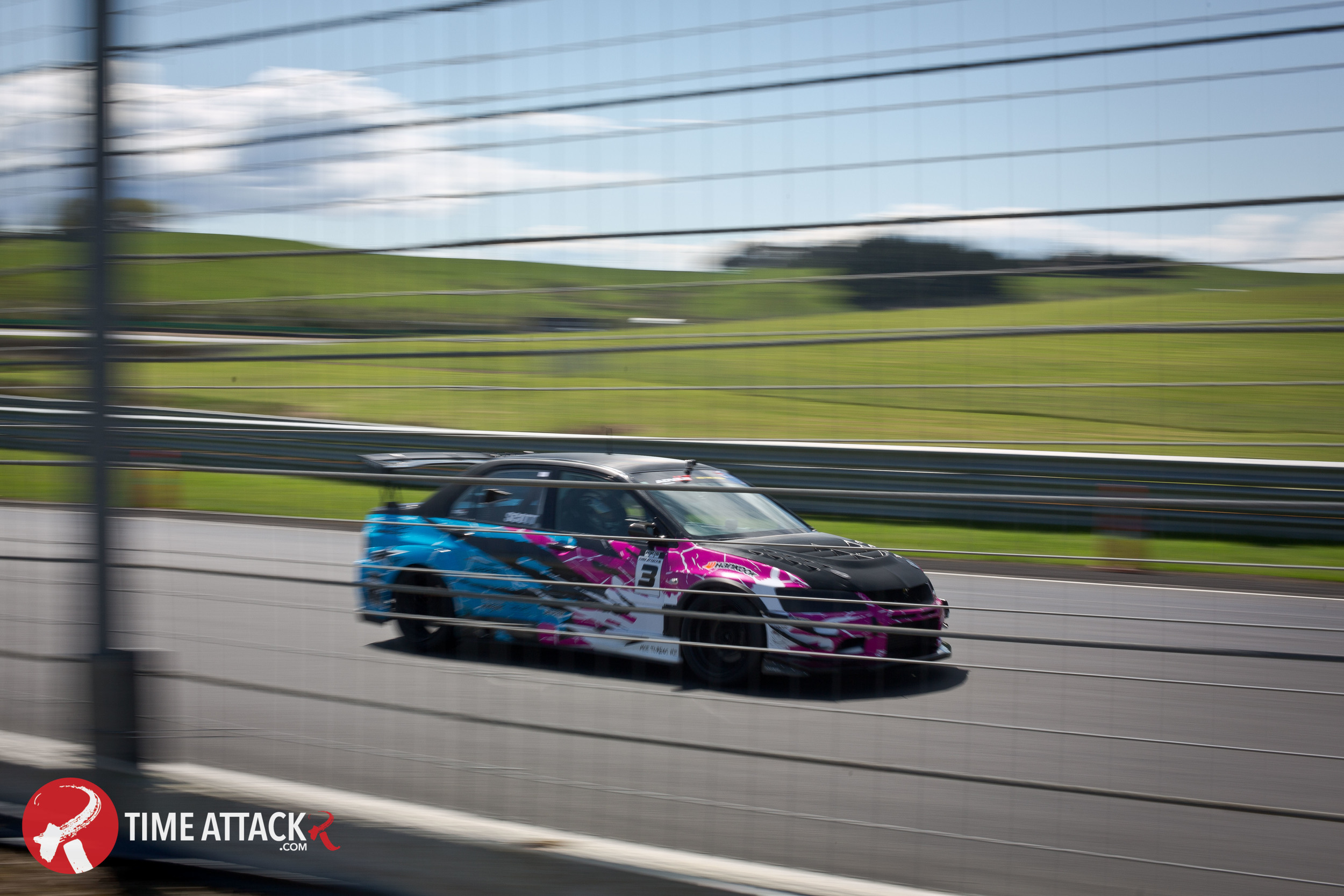

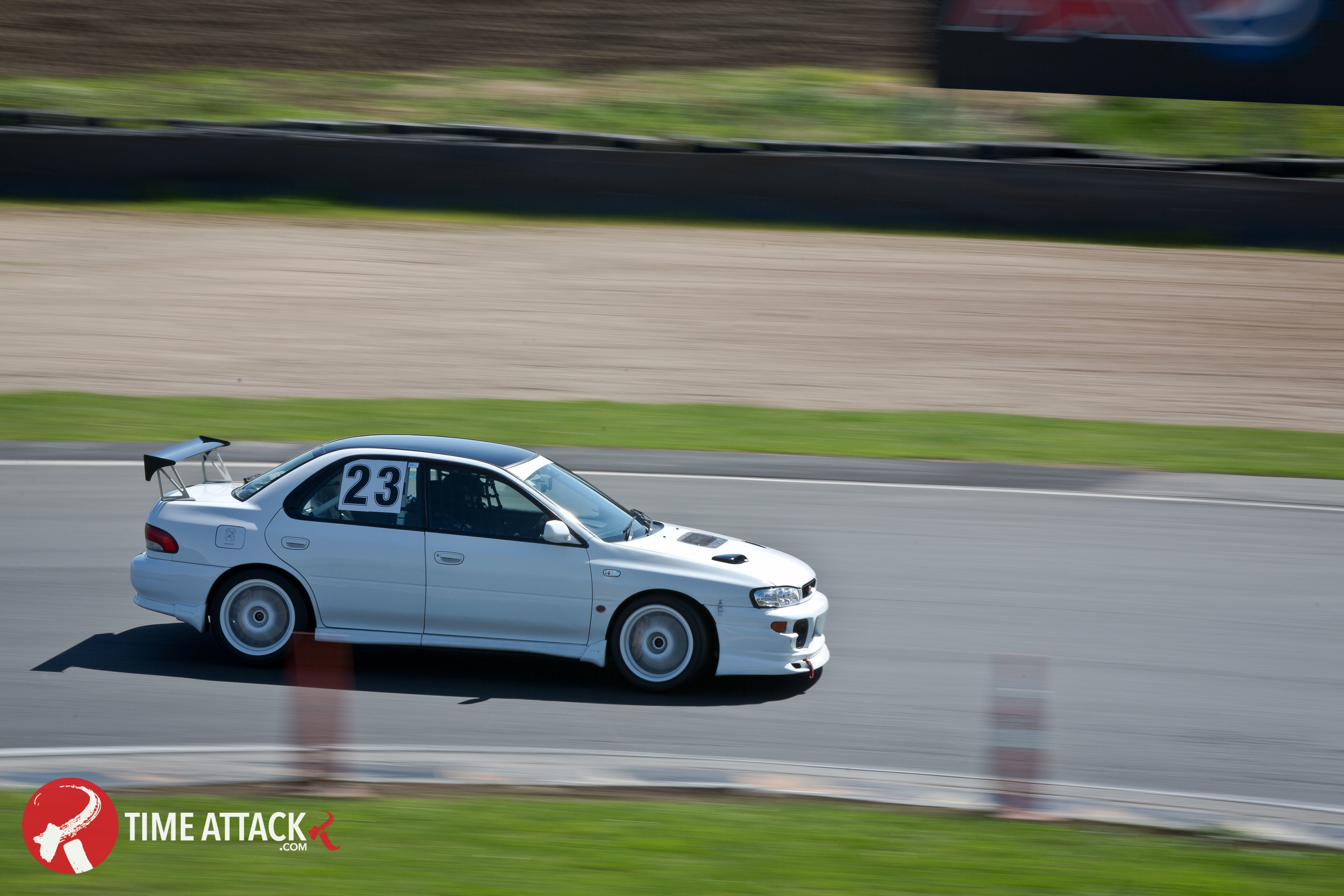
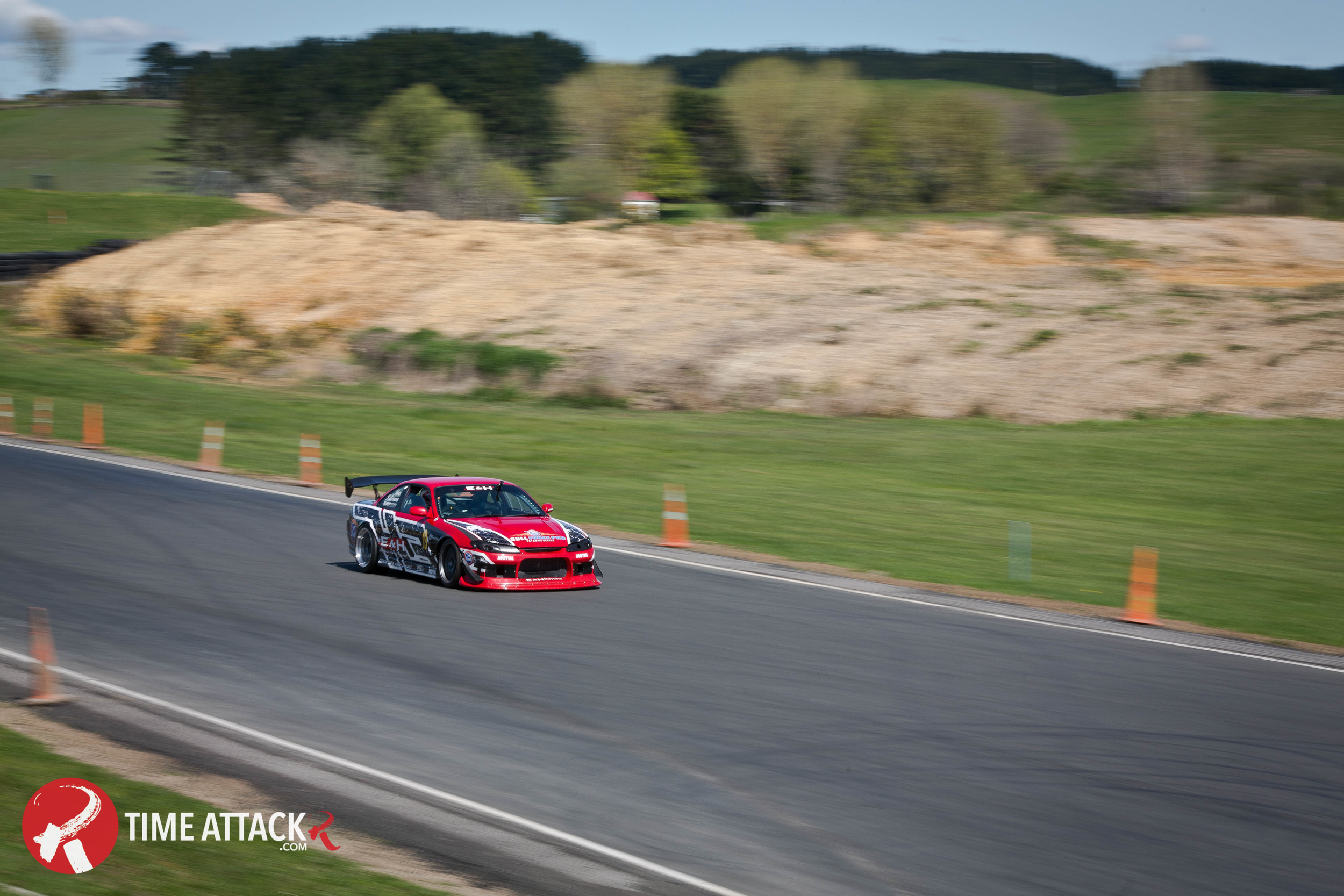
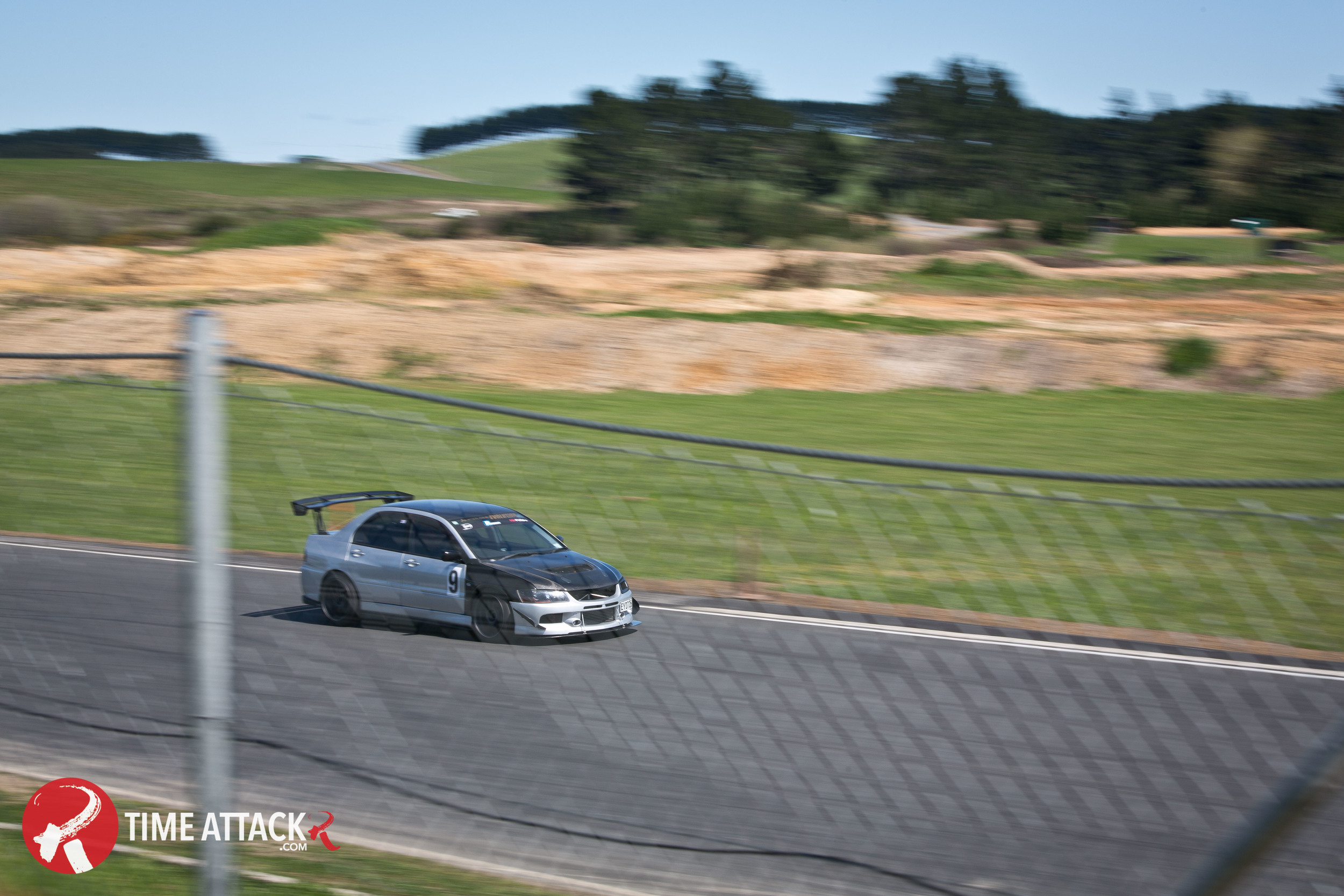
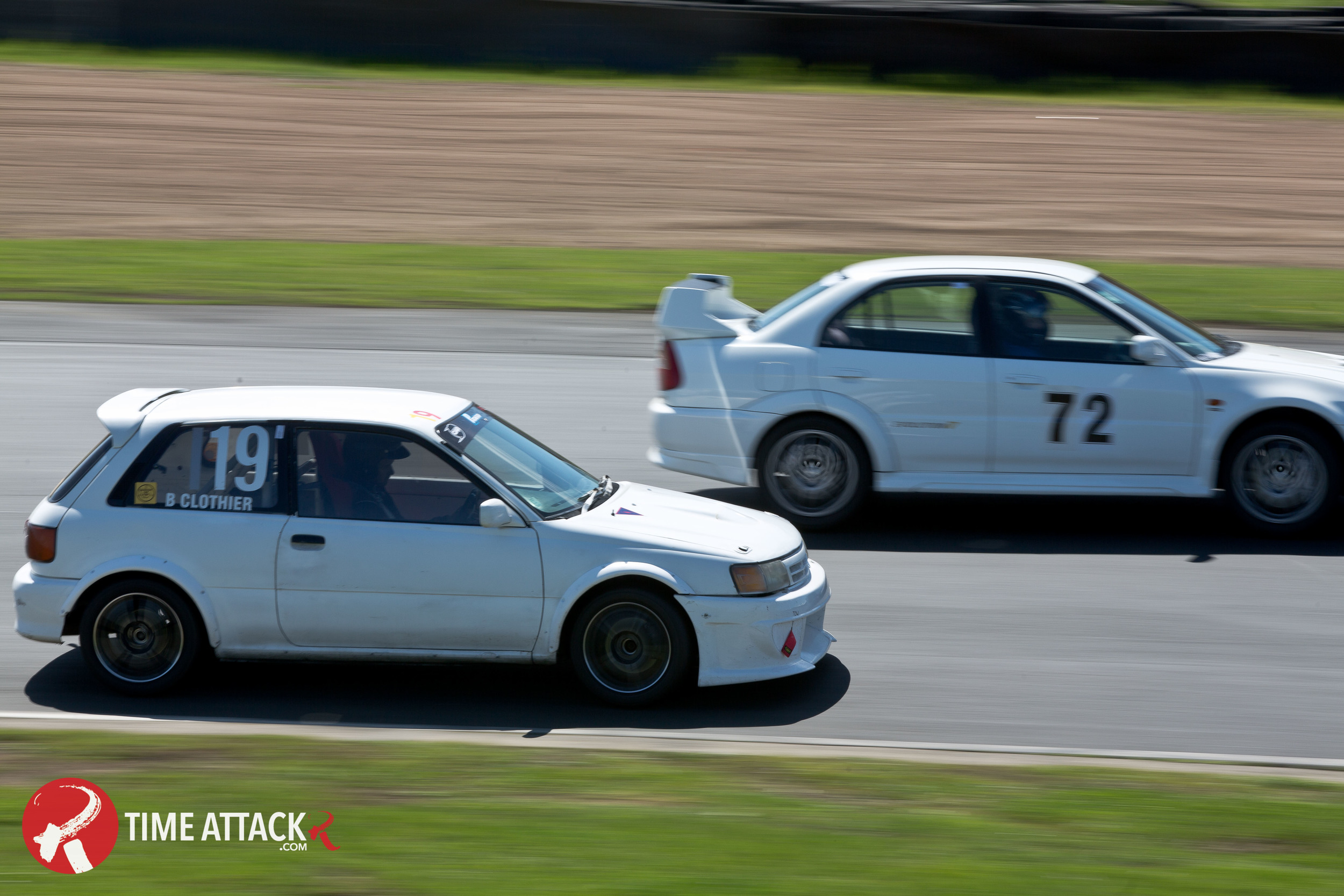
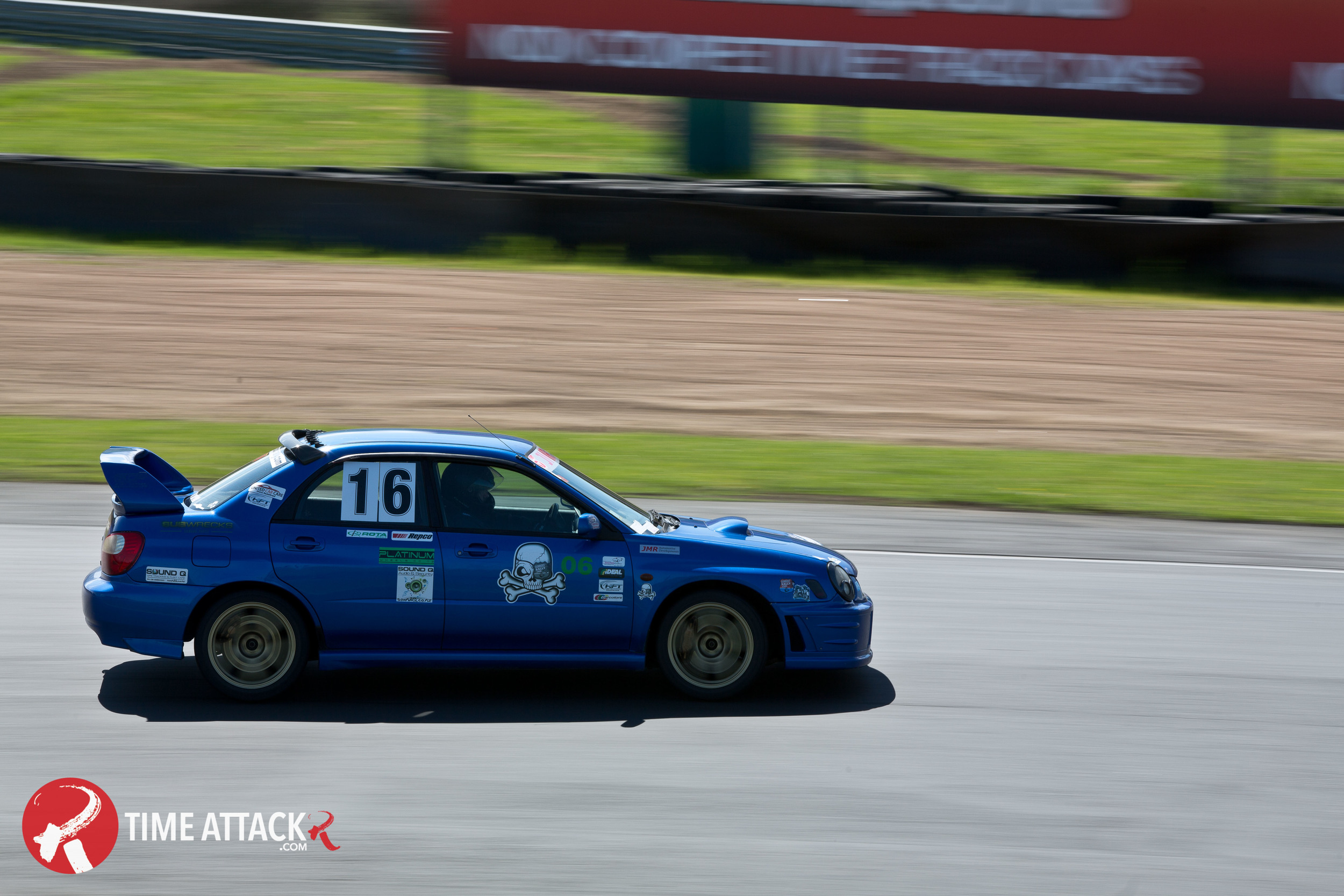



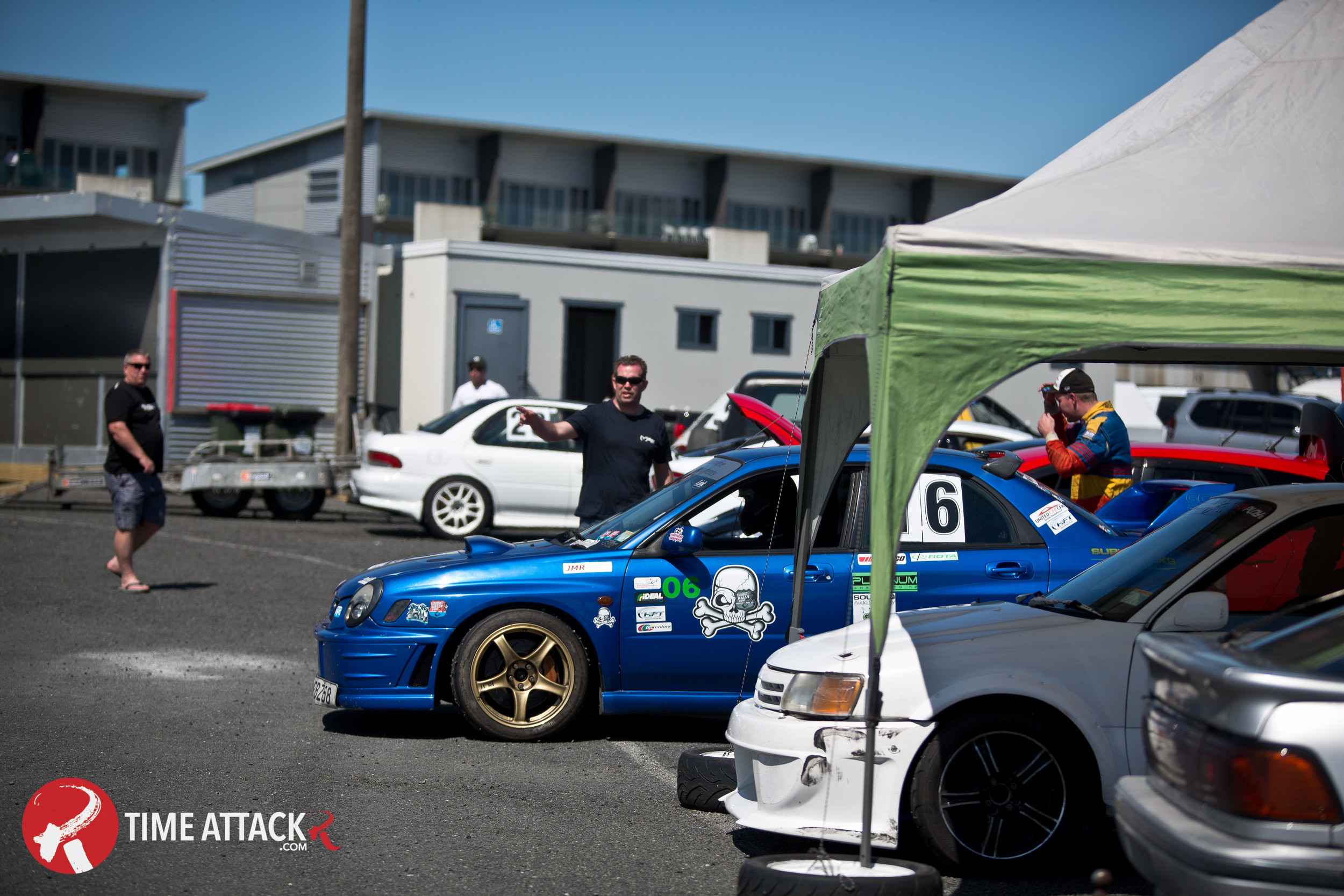



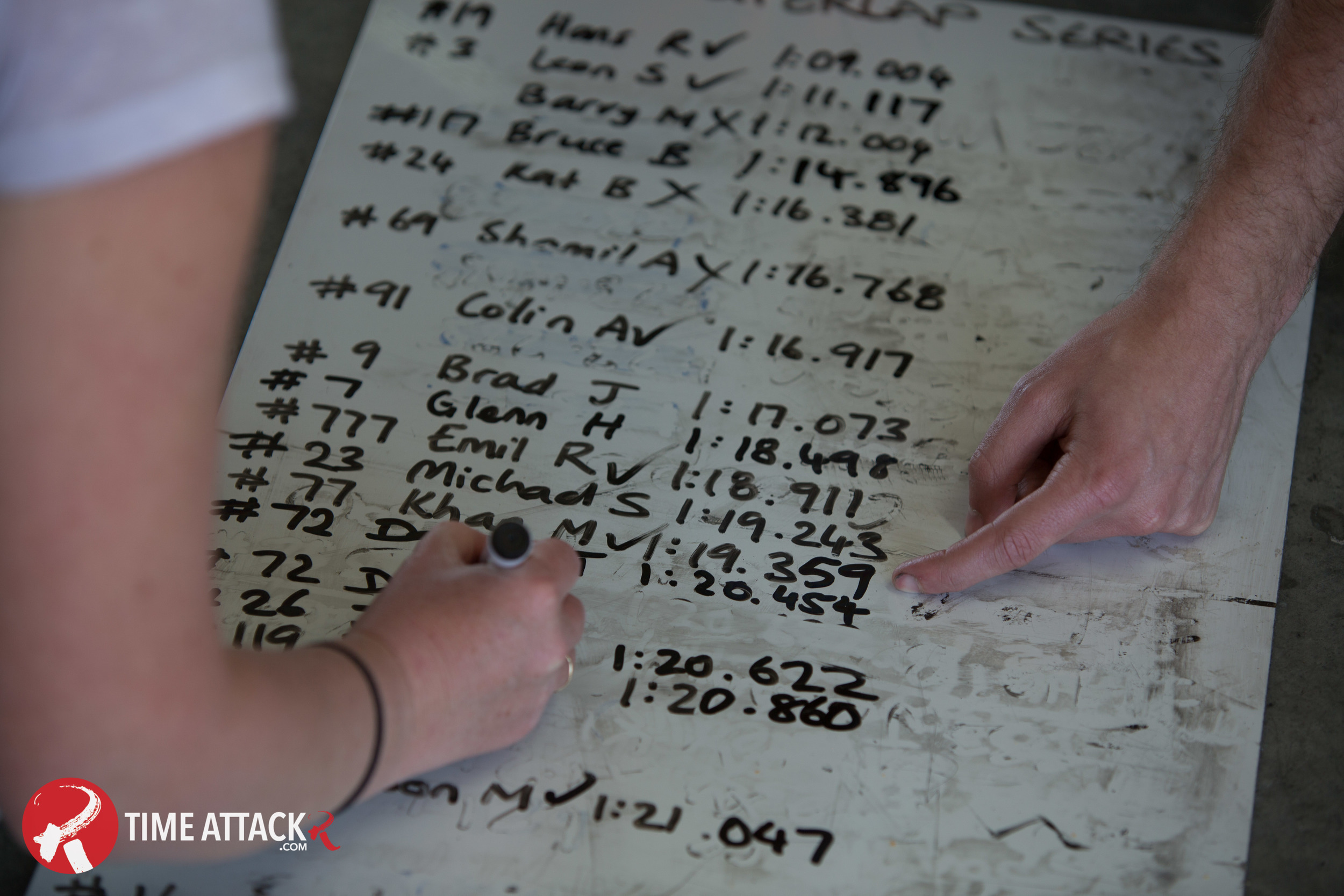

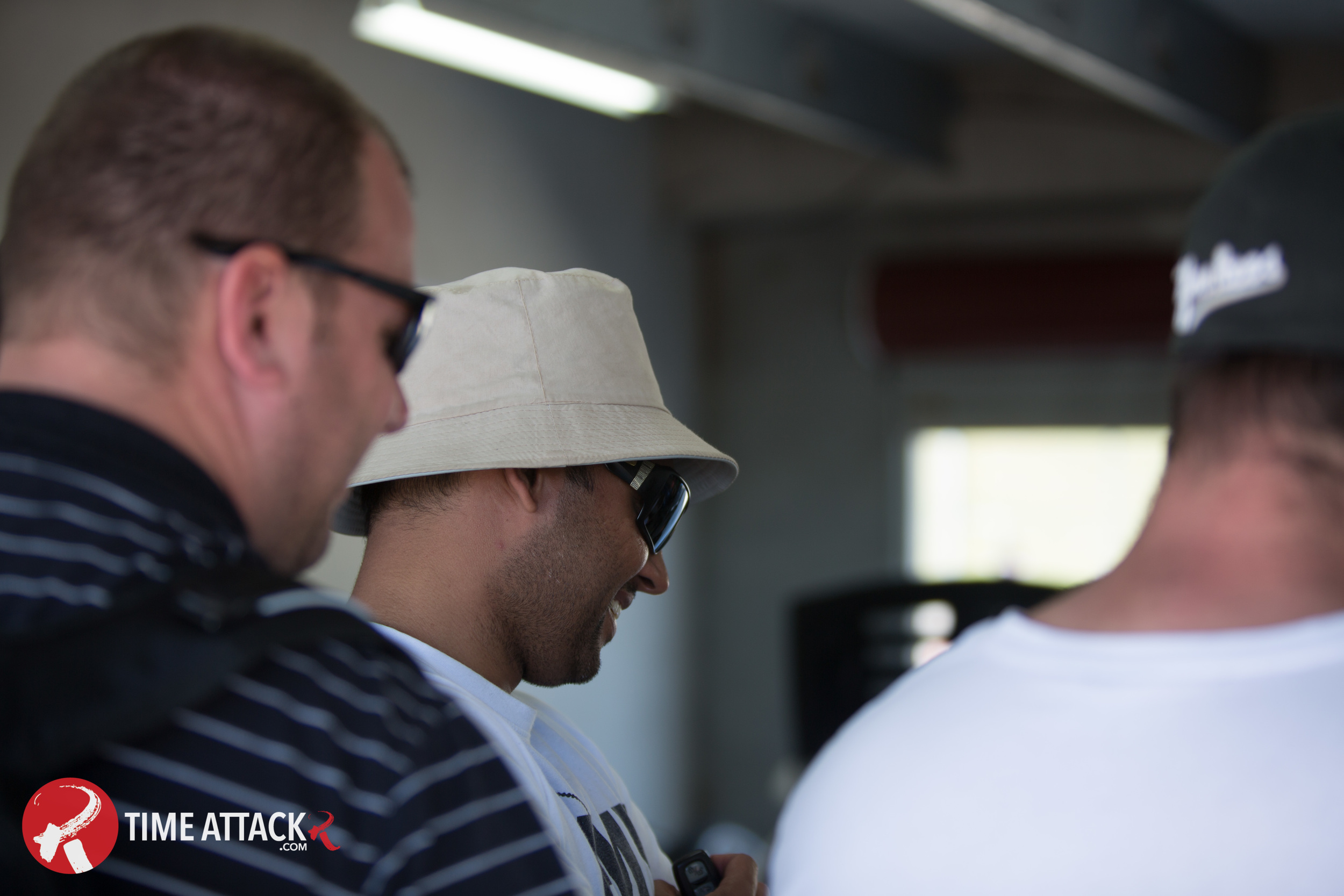
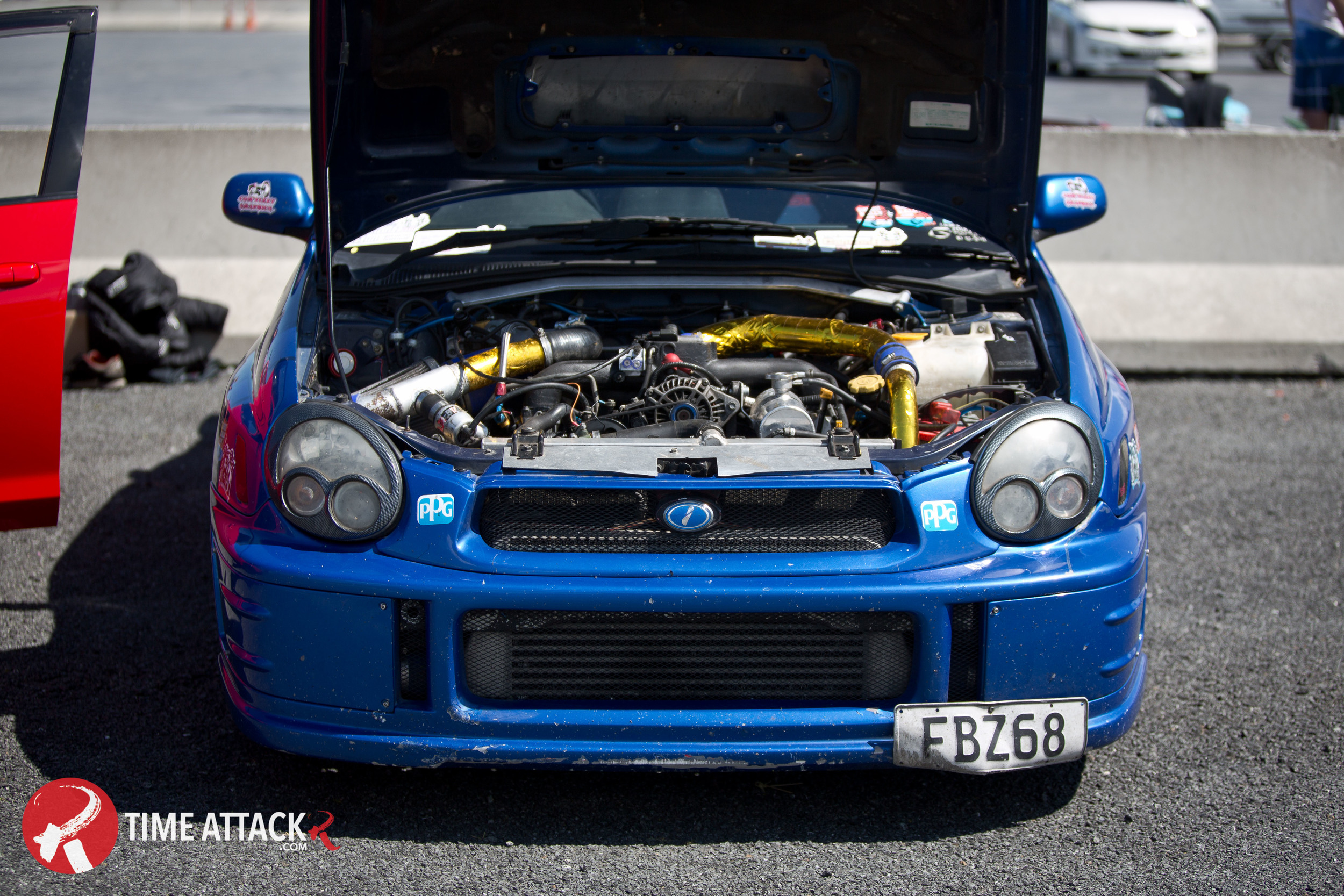
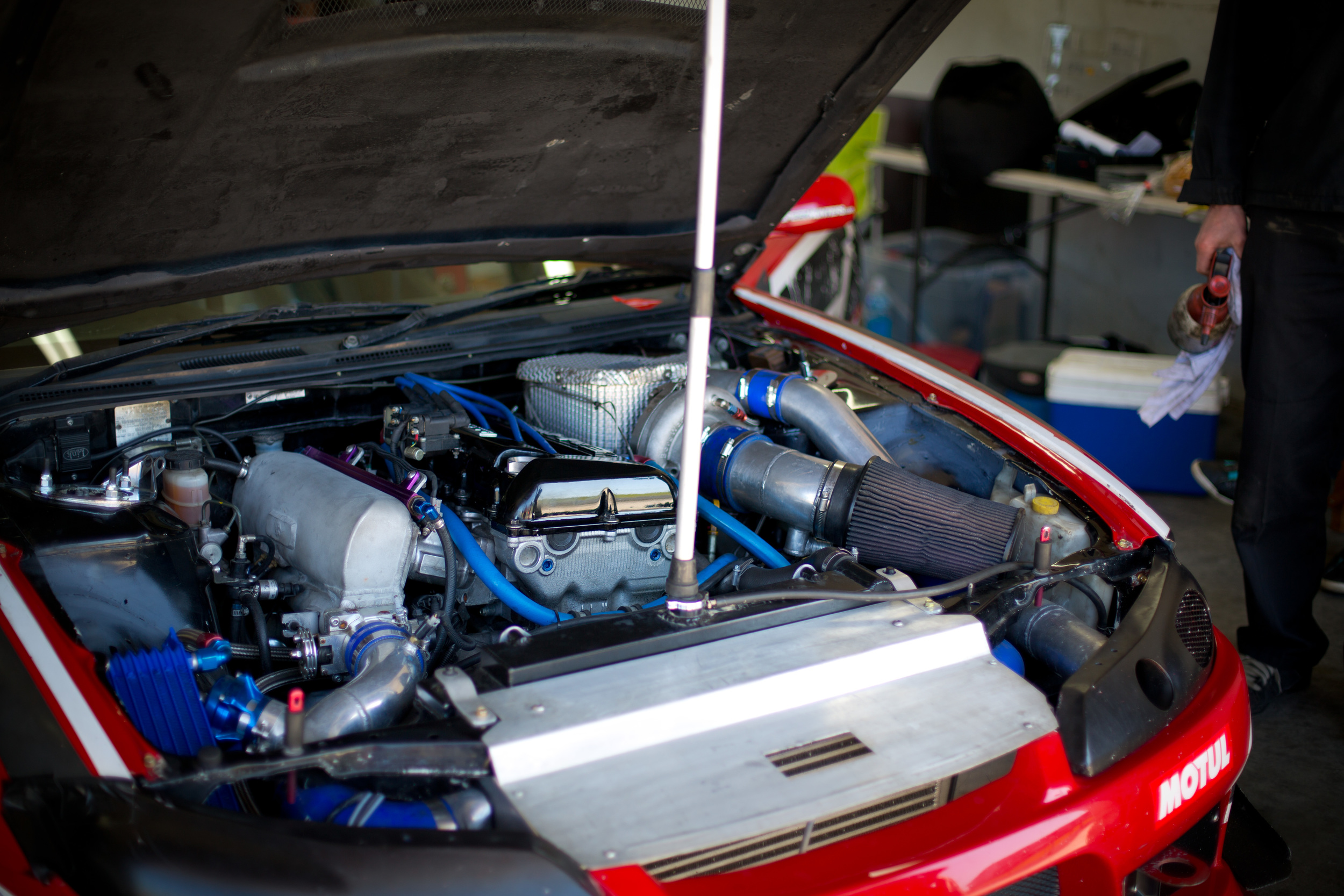
Driver's POV: Khan Mackesy
TimeattackR.com: Hey Khan, tell us a bit about who you are, and why you first got into motorsport.
Khan: Hi I'm khan, I manage an automotive parts store and have been in the parts game for 15 years which has developed my interest in cars and motorsport. I started doing track days about 10 years ago in my AE92 Levin and have never looked back.
What first drew you to time attack racing and when did you start competing?
What first drew me to time attack racing was firstly seeing my mate Barry Manon win the Wynn's Superlap at Taupo many years ago, so I’ve always had interest since. It wasn't until I got the Mazda MPS and met Jason Morris with his second generation MPS at a Pukekohe track day that we decided to enter Superlap series. So officially, it’s the 2015/16 season under our formed team of MacMorris Racing.
What was your first time attack vehicle and why did you choose it?
My first time attack machine is my current Mazda MPS. I have always owned front-wheel drive vehicles and researched the MPS platform for hours before purchasing it. I went into it knowing it has the potential to be a good all round vehicle that can be driven daily and competitive on the track with good power.
What development did this vehicle go through, and what development saw the biggest drop in lap times?
The MPS came into the Prowear NZ Superlap series already modified from its stock form which I’ve been building for the last three years. The biggest upgrade while during the series would be the addition of e85 fuel, a tune, and a larger turbo to put the car at around 270kW at the wheels, which has made a big difference on the track.
What was the first circuit you ever competed in time attack?
The first track I competed at in a time attack format was the first round of the Prowear NZ Superlap series at Hampton Downs where I'm looking to improve on my times, during the final round of the series.
What advice would you give someone thinking of getting into the sport?
My advice is if you have a passion for motorsport and have a vehicle you want to track then don't hesitate. The superlap series has been awesome and caters for all types of vehicle and driver skill. With different classes based on tyre choice, you will have awesome time — plus everyone in the series are all in it together and help each other out a huge amount. It has been the best decision I have made and I look forward to future time attack events.
Thanks for chatting with us, is there anybody you would like to thank?
It’s important to mention Jason Morris my team mate, my brother Hayden for all his support, Mackesy stainless steel, Will and Ryan from PD Tuning, and Jacky from JTune.
Event Gallery: Yokohama World Time Attack 2014
There’s no denying that the Yokohama World Time Attack Challenge is the world’s largest event of it’s kind, so our main man Ash Bechan got into the action to snap a gallery for your viewing pleasure.

















































































































































































